The document is a comprehensive tutorial on Core Java, covering fundamental concepts such as object-oriented programming (OOP) principles, including encapsulation, inheritance, polymorphism, and data abstraction. It outlines Java's evolution, features, and its significance as a versatile programming language suitable for both applications and applets. Additionally, it discusses the advantages of OOP in software development, highlighting productivity, maintainability, and the mapping of real-world entities to program objects.


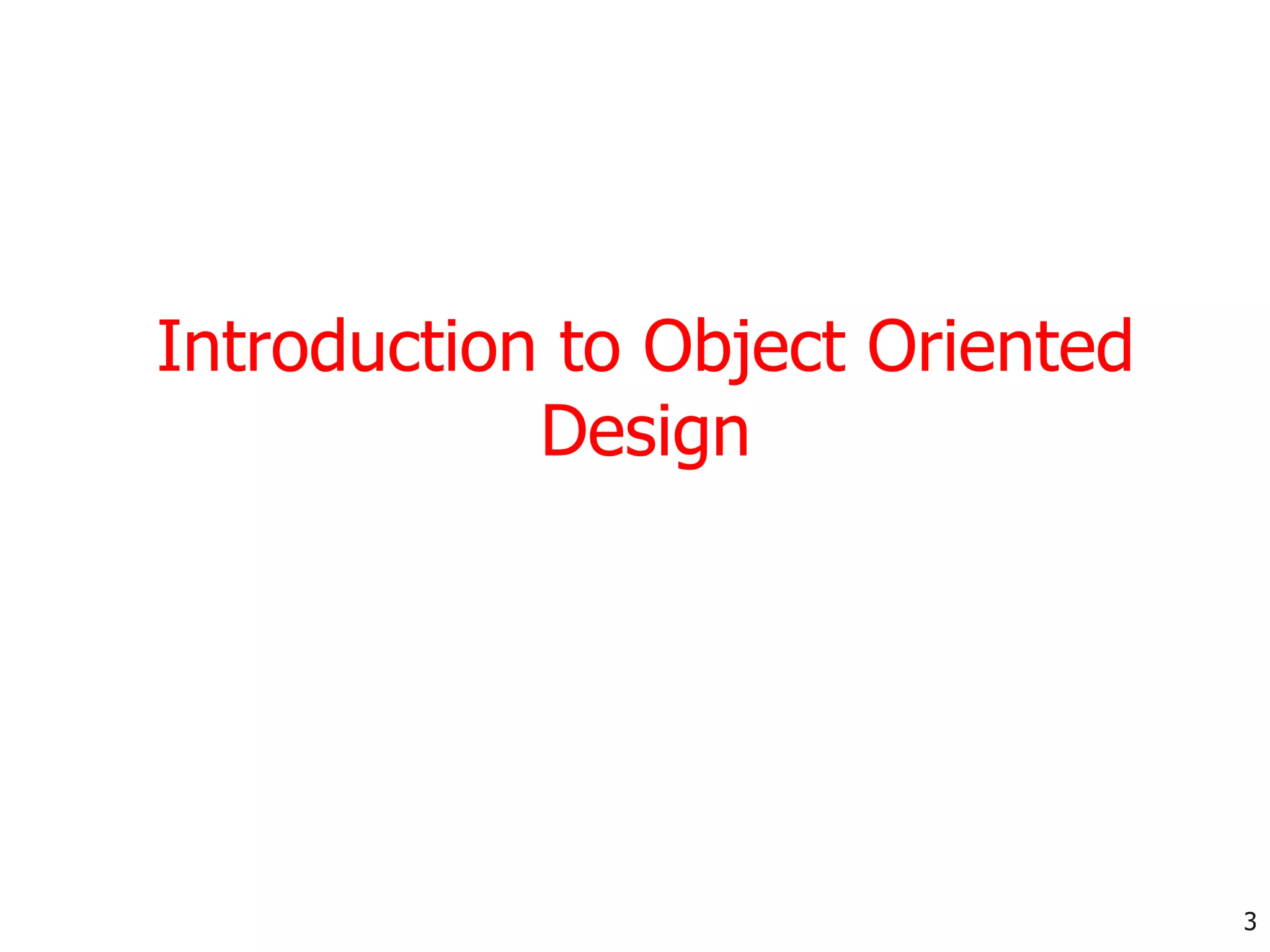
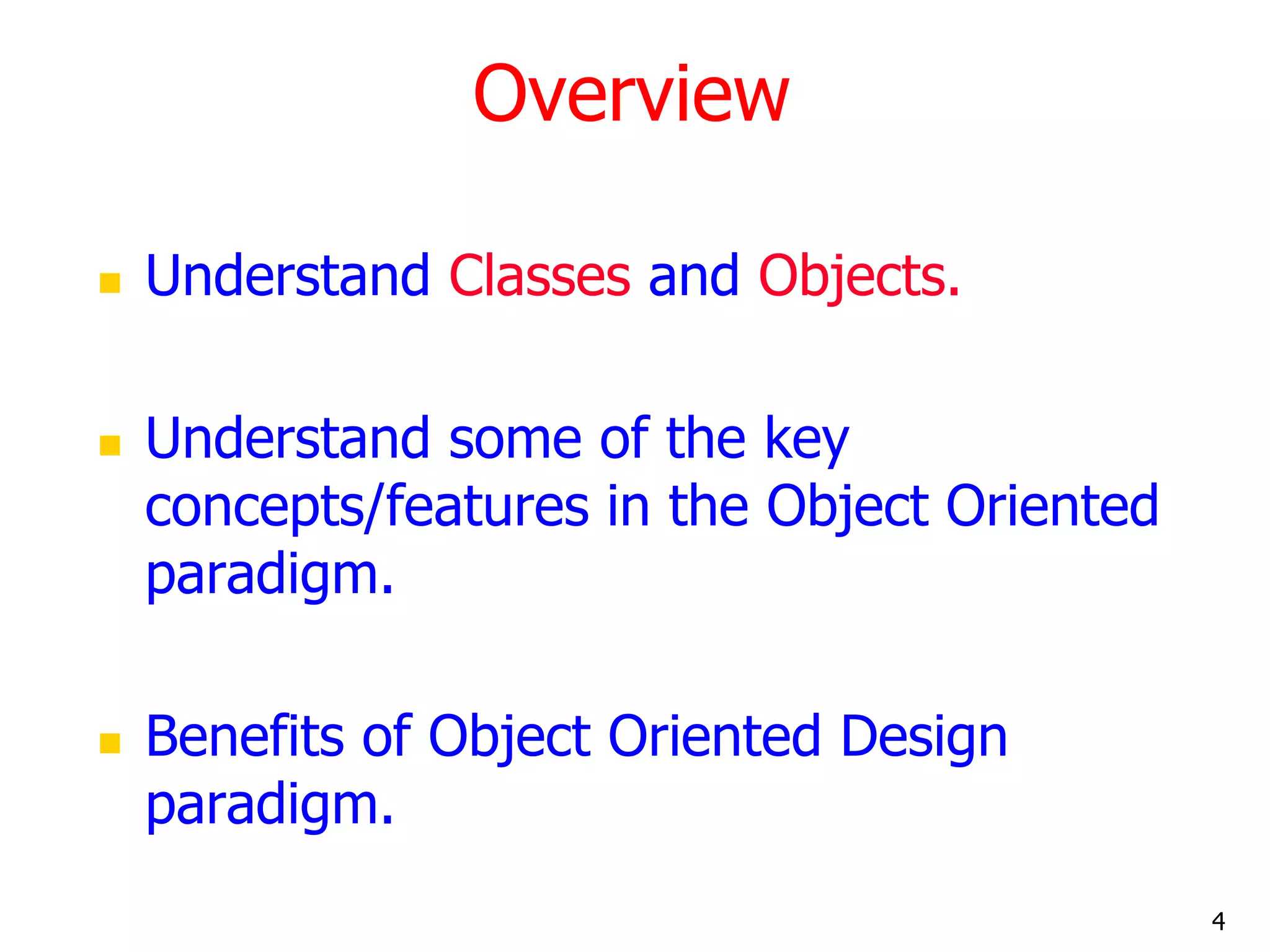
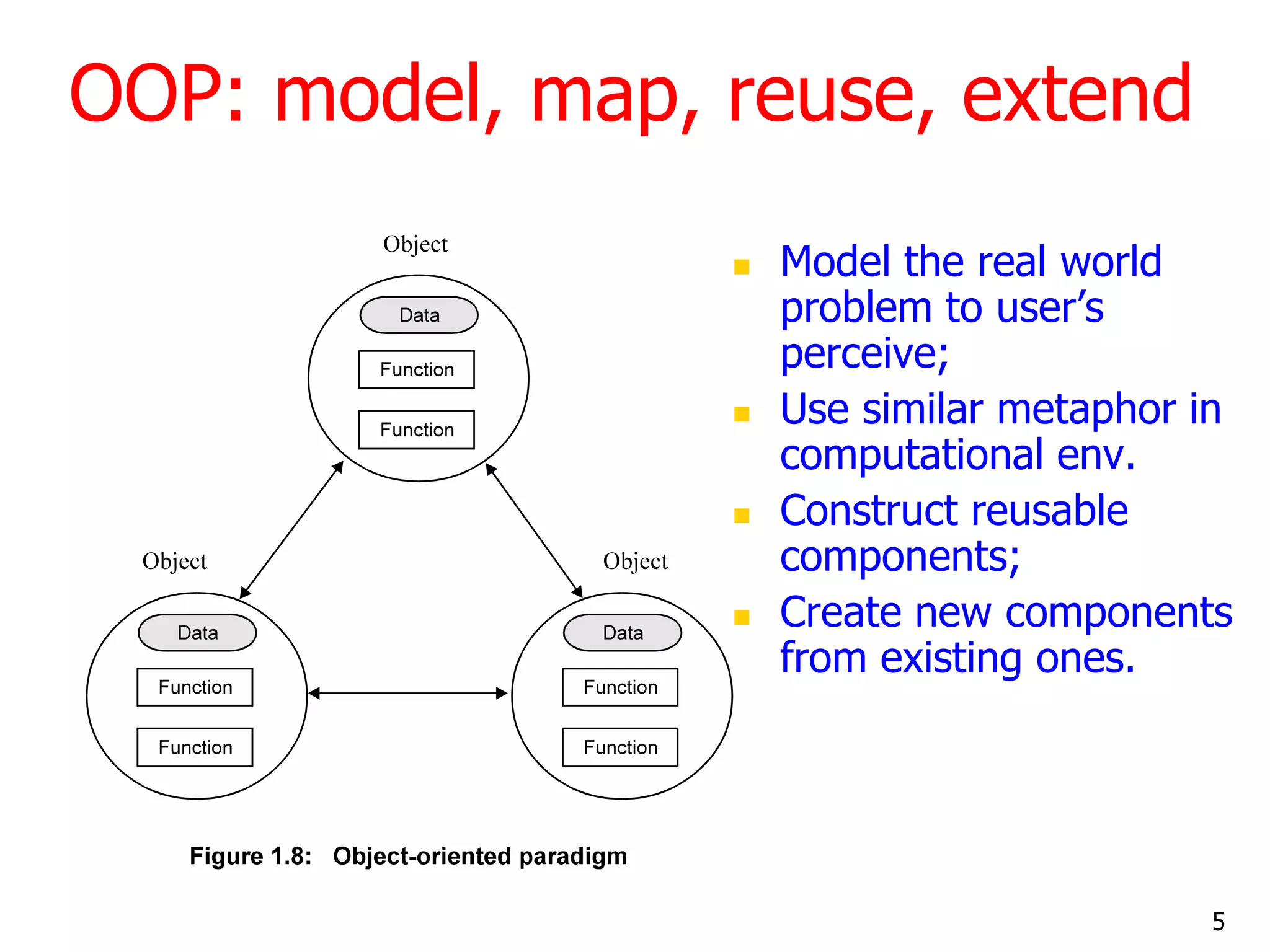
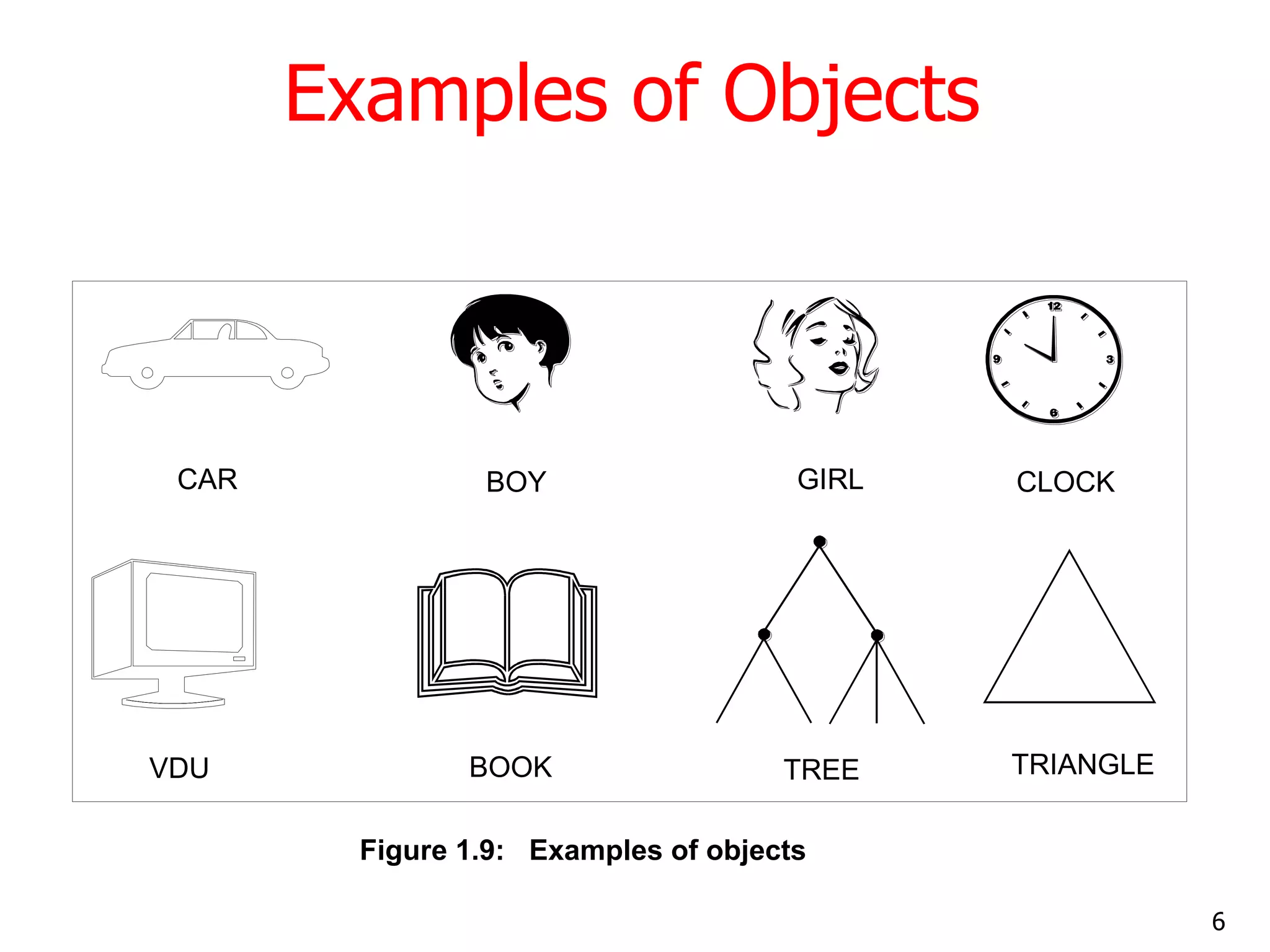

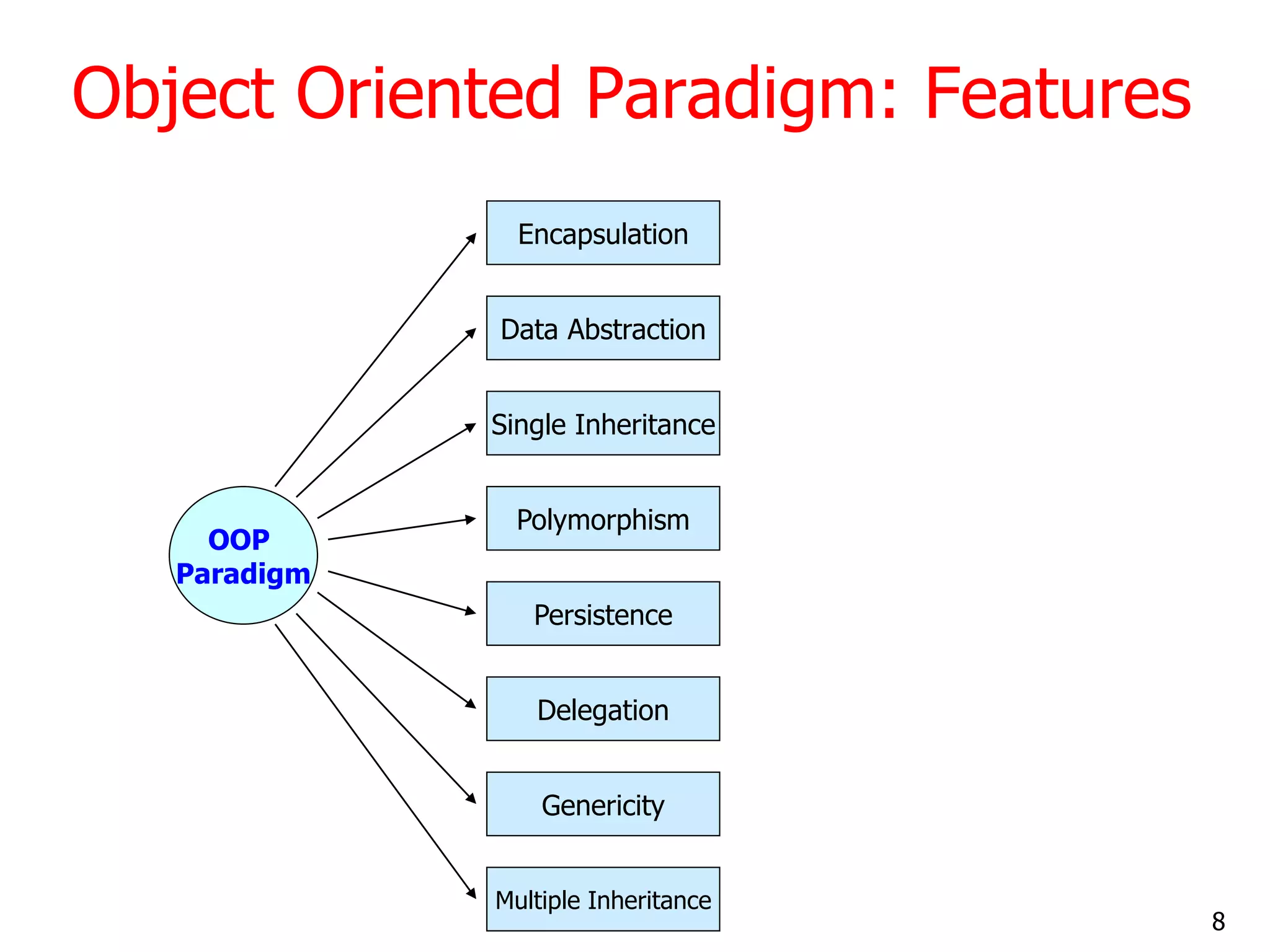
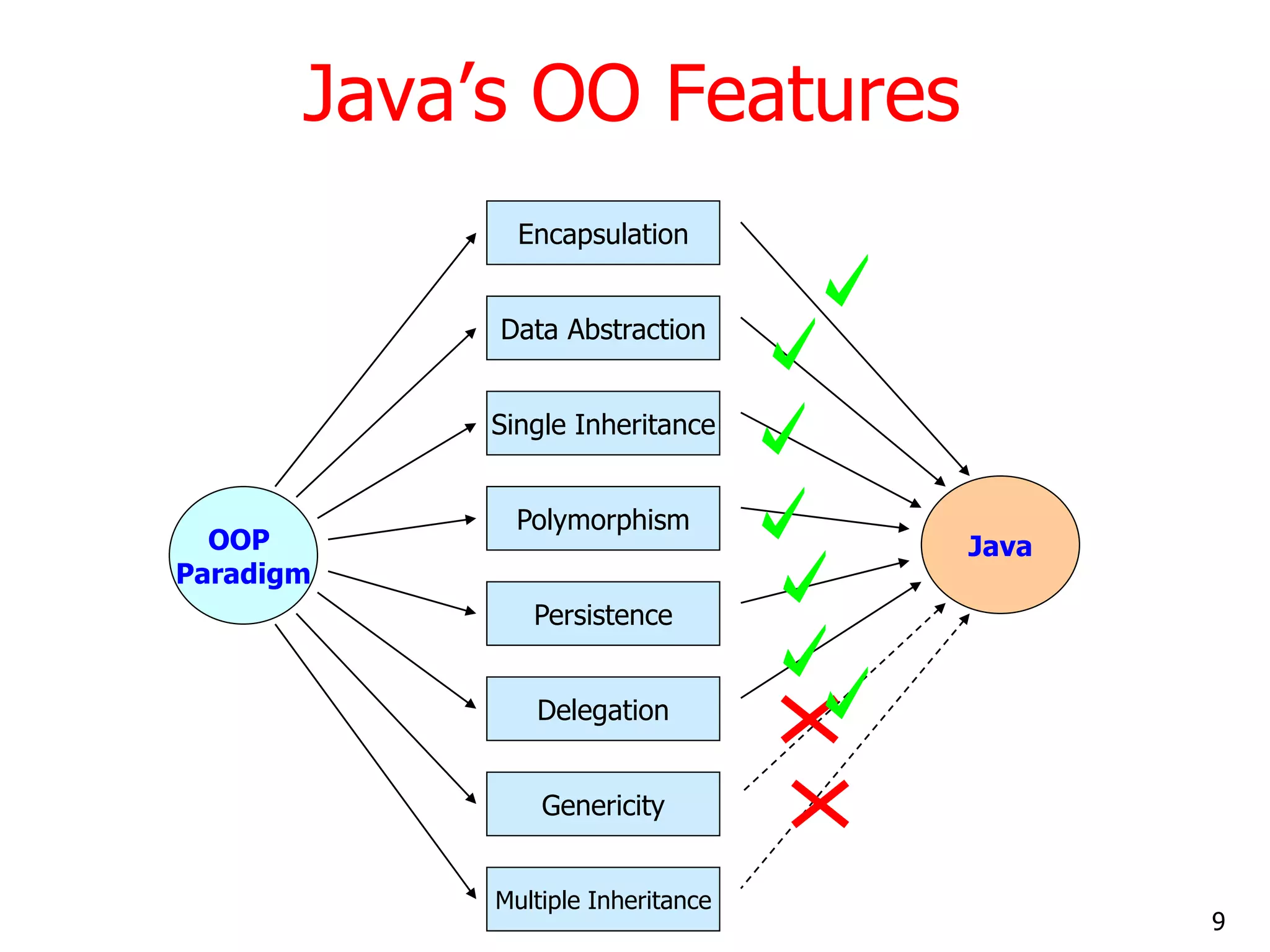

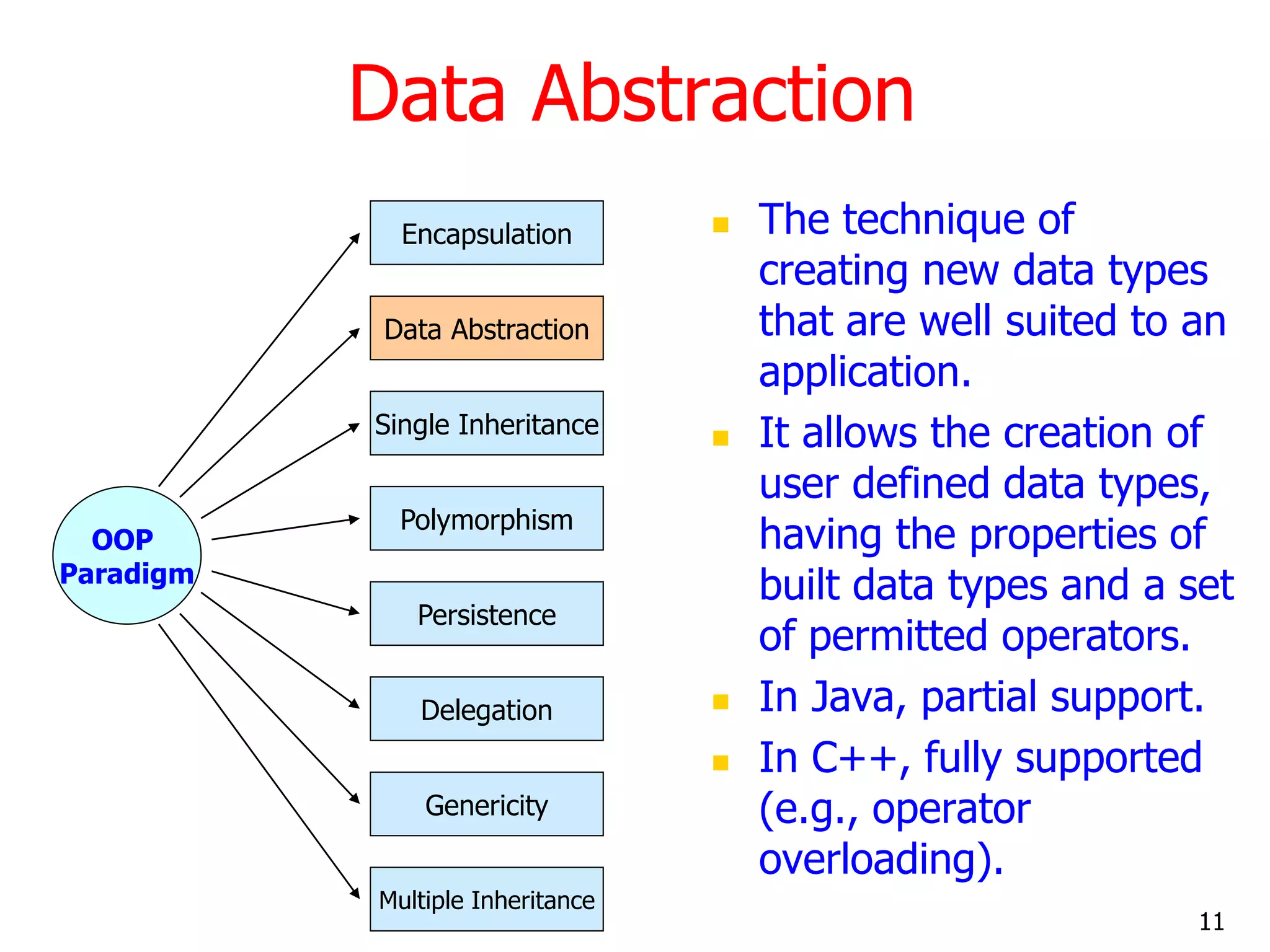
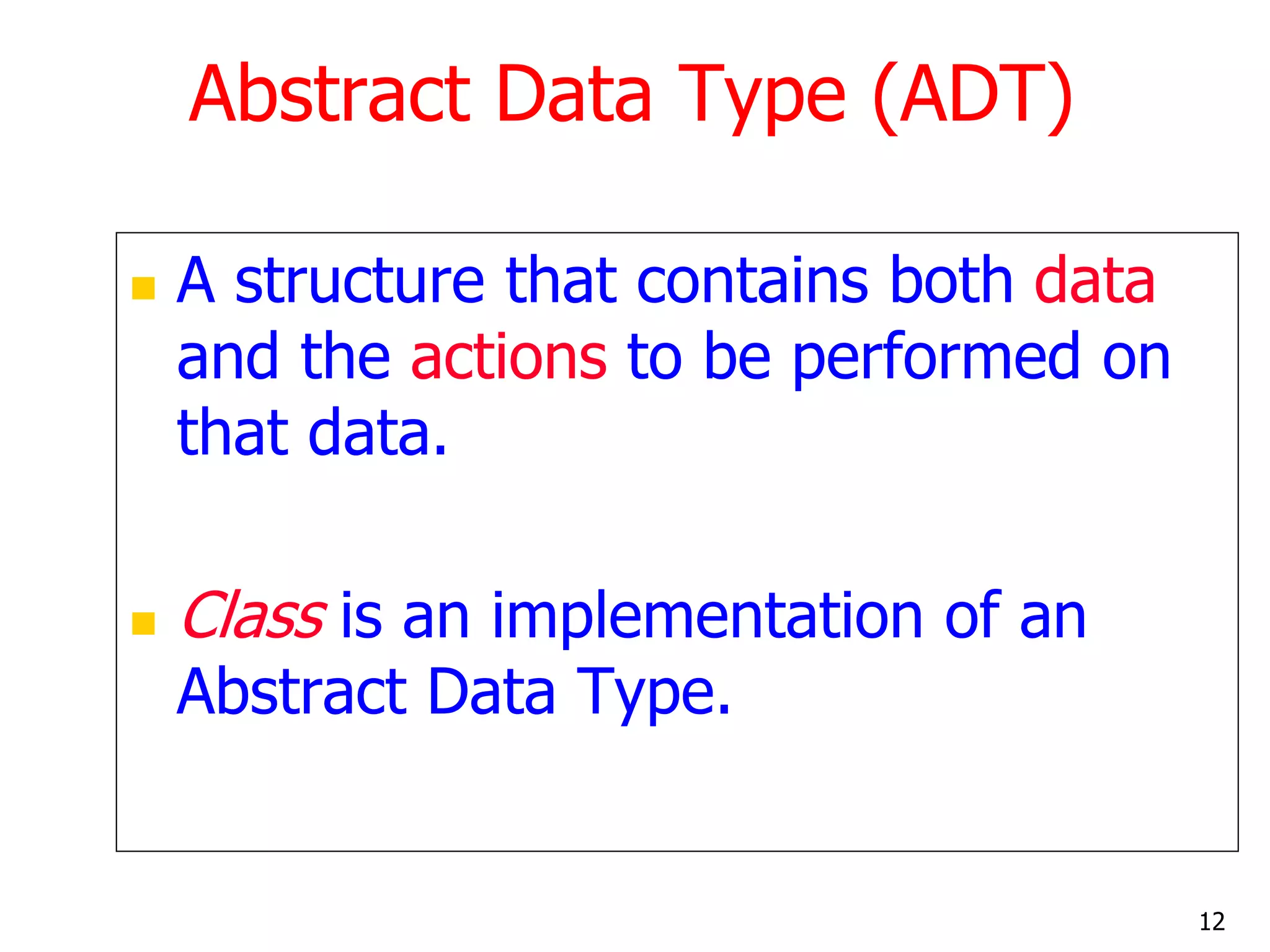
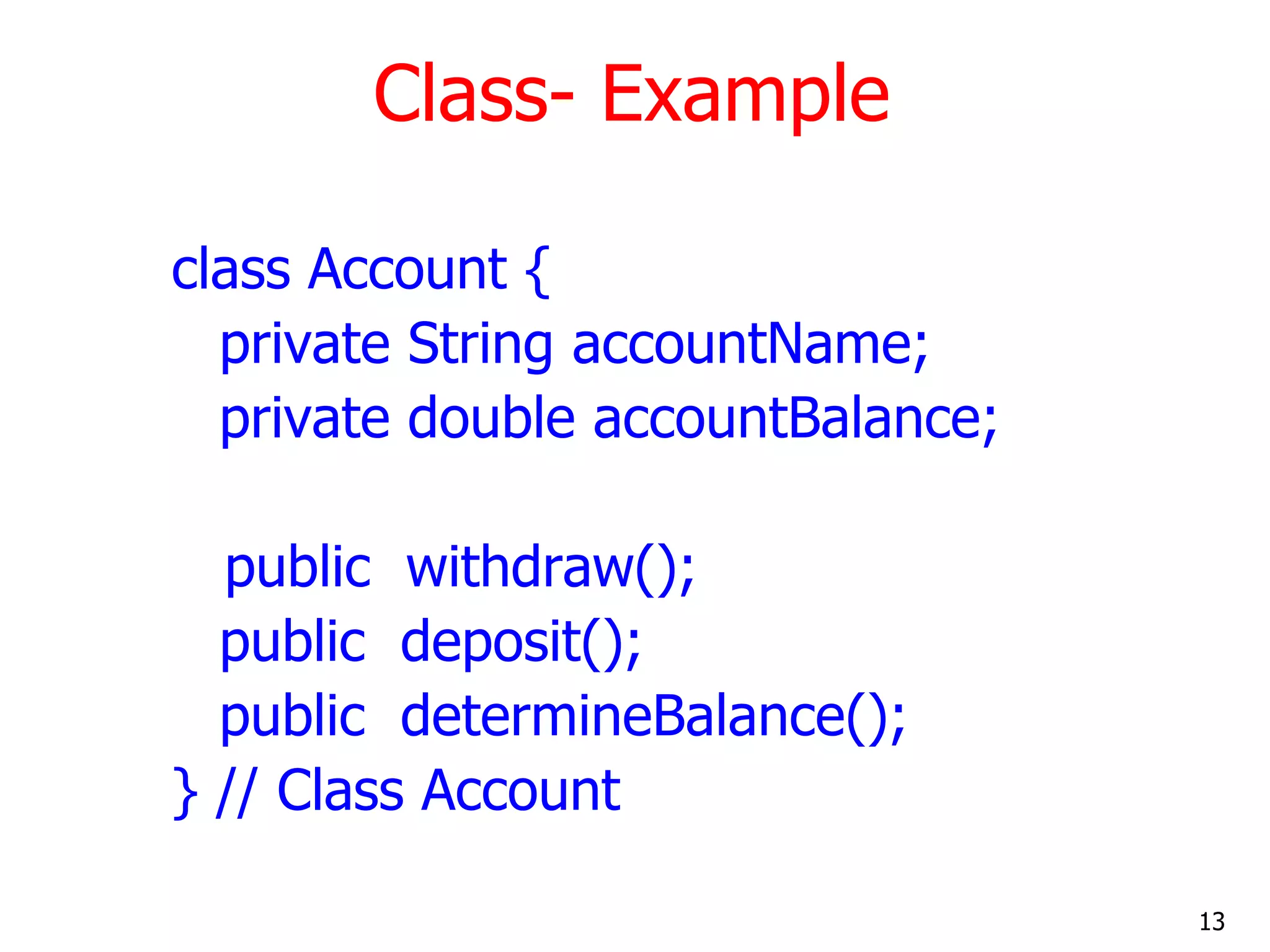
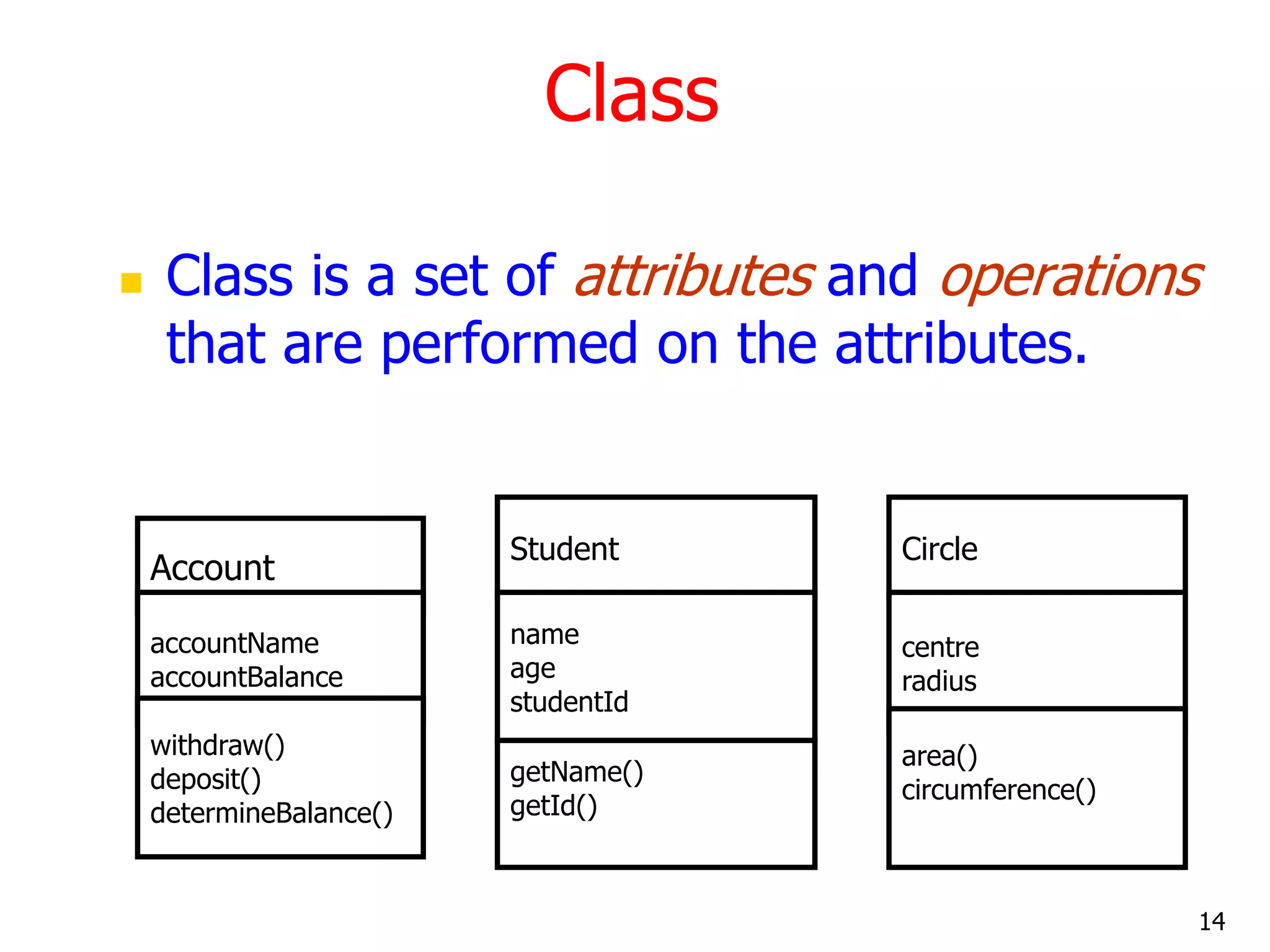
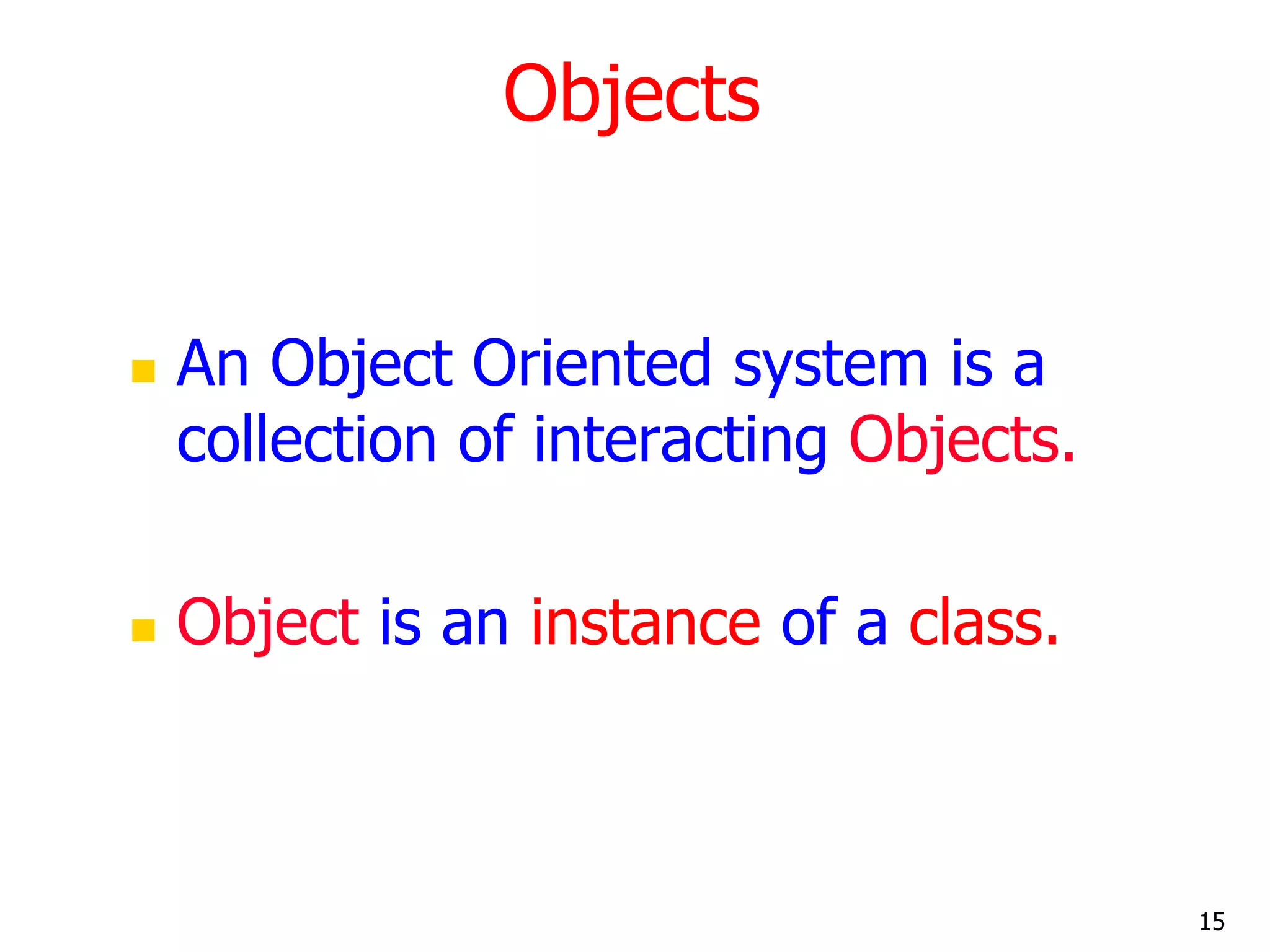

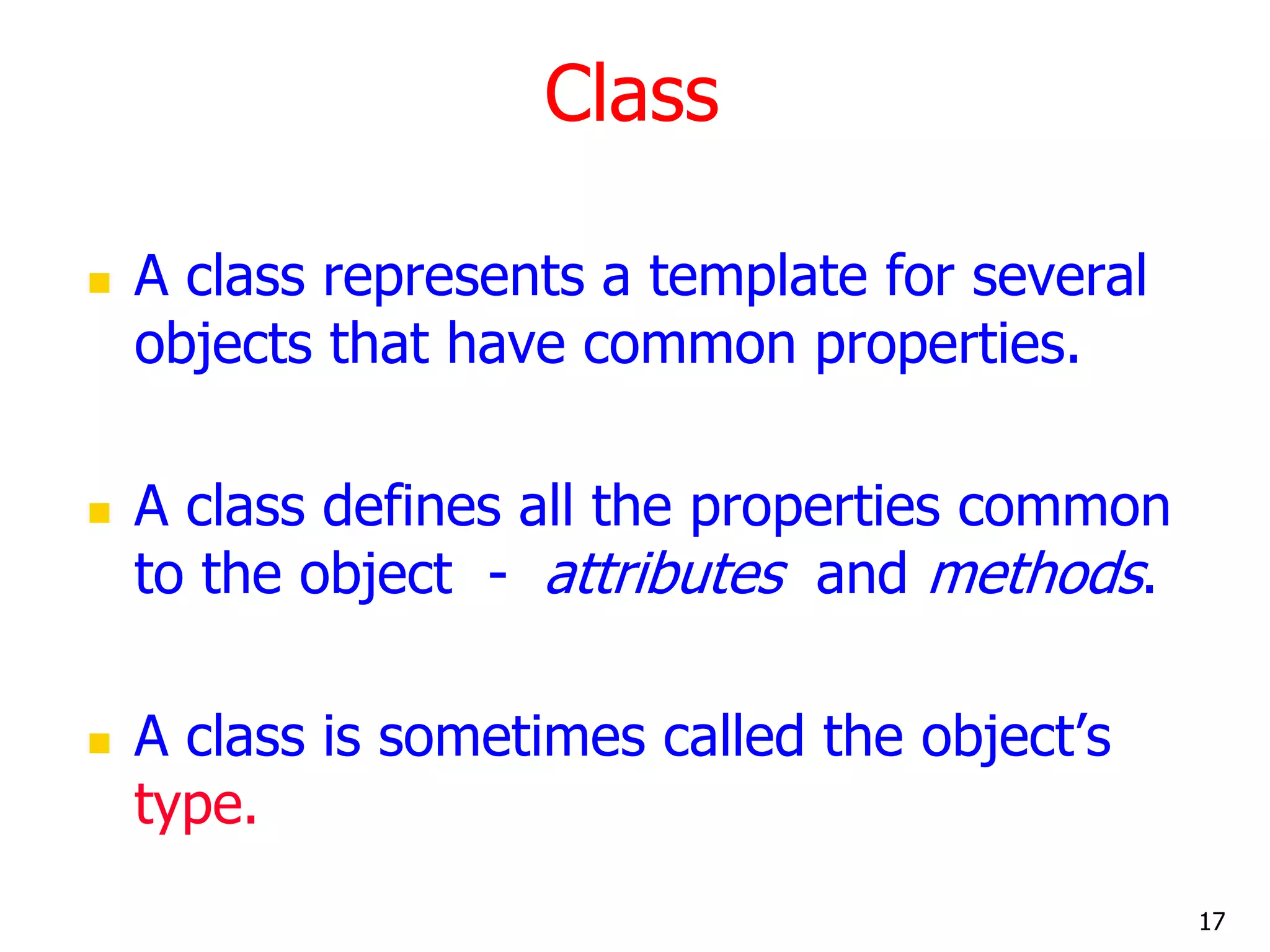



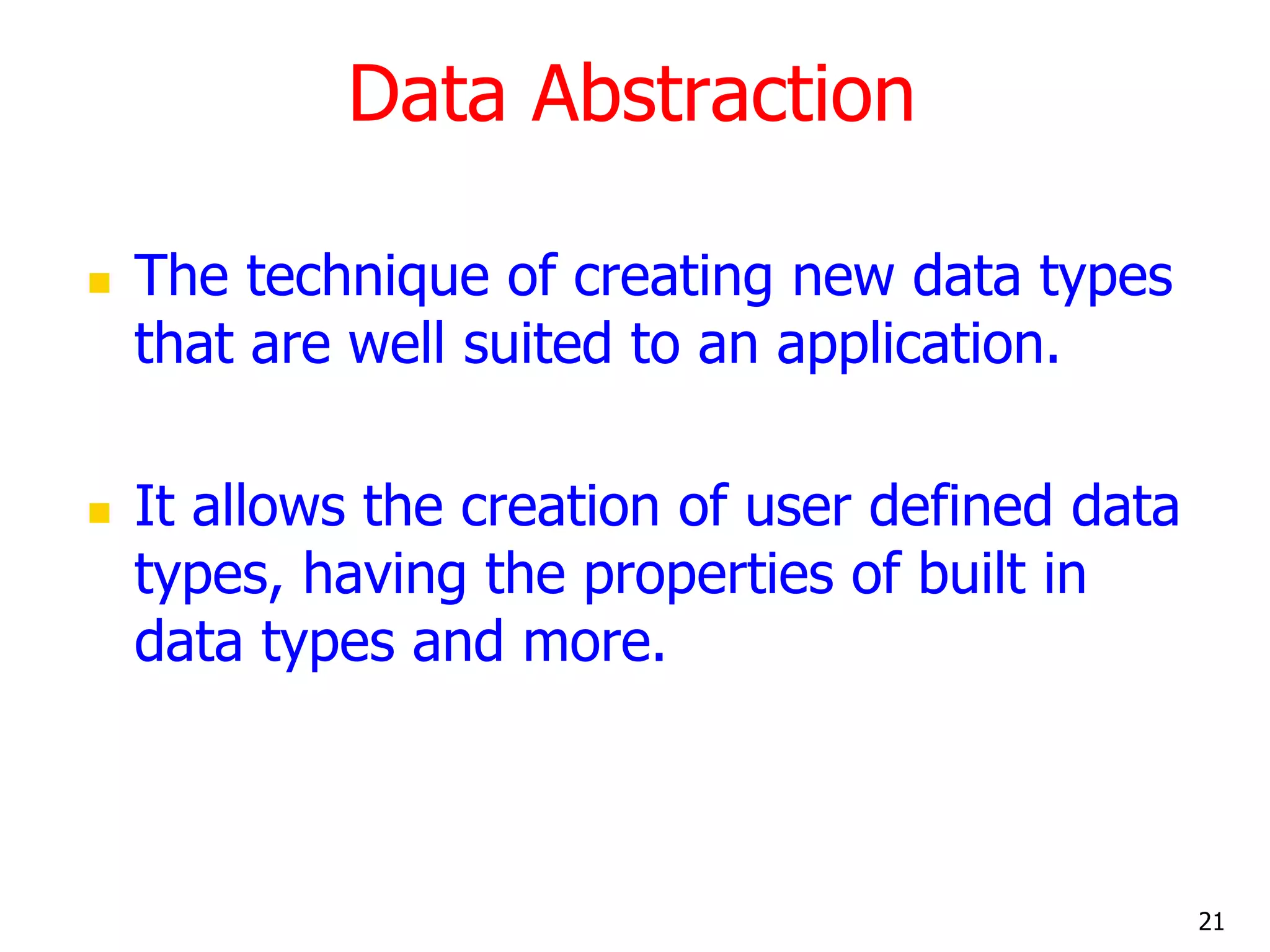
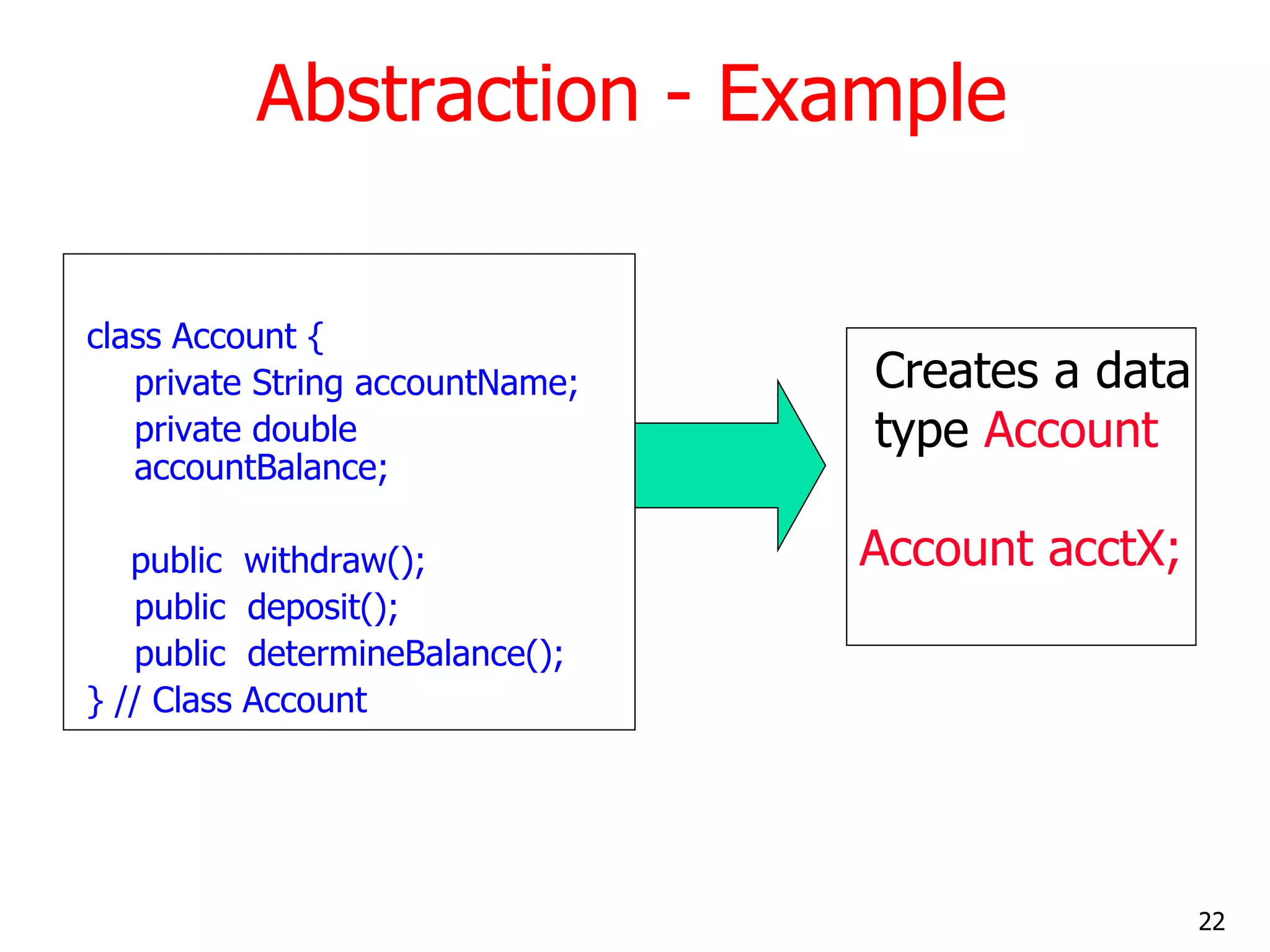
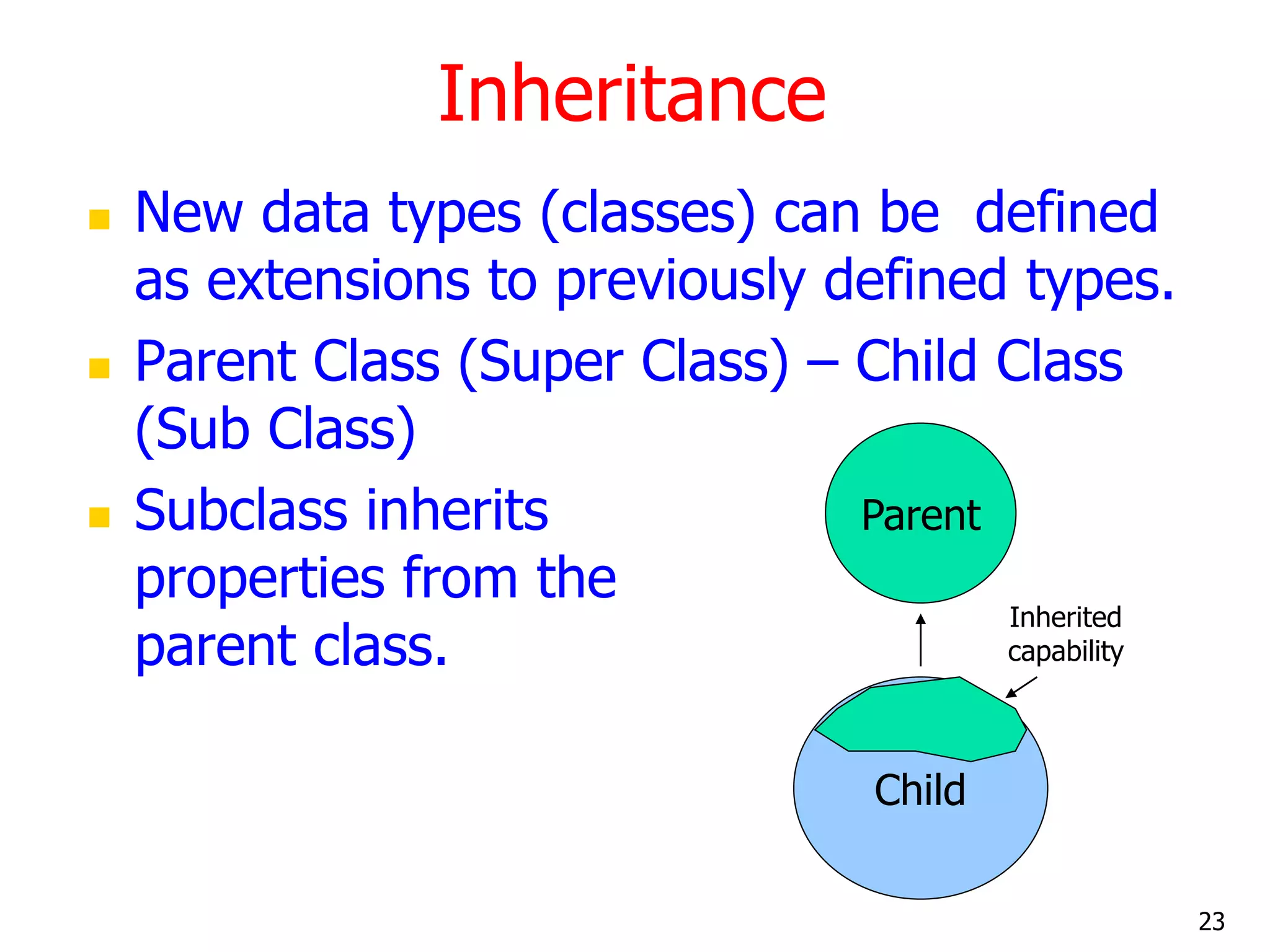
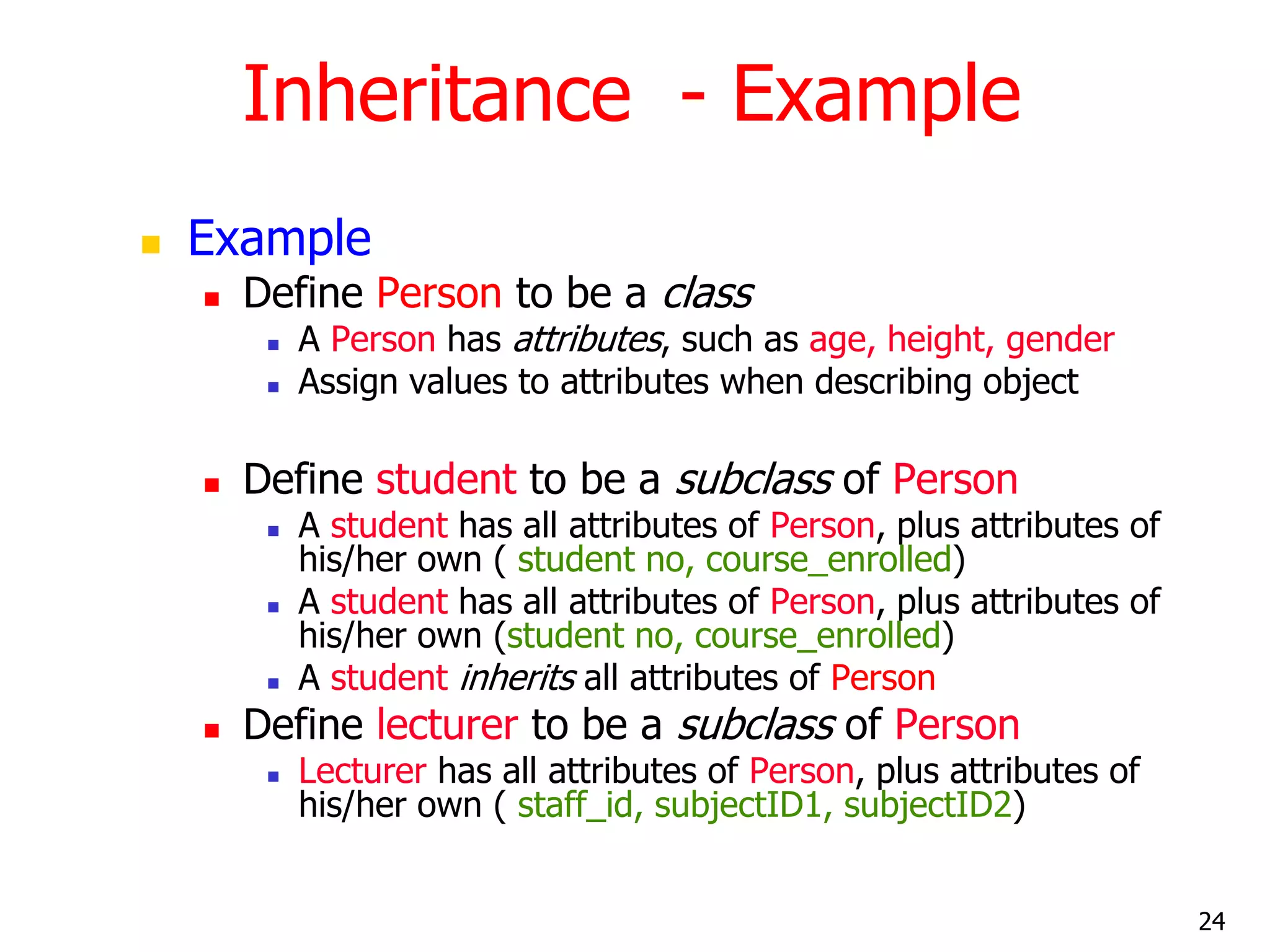

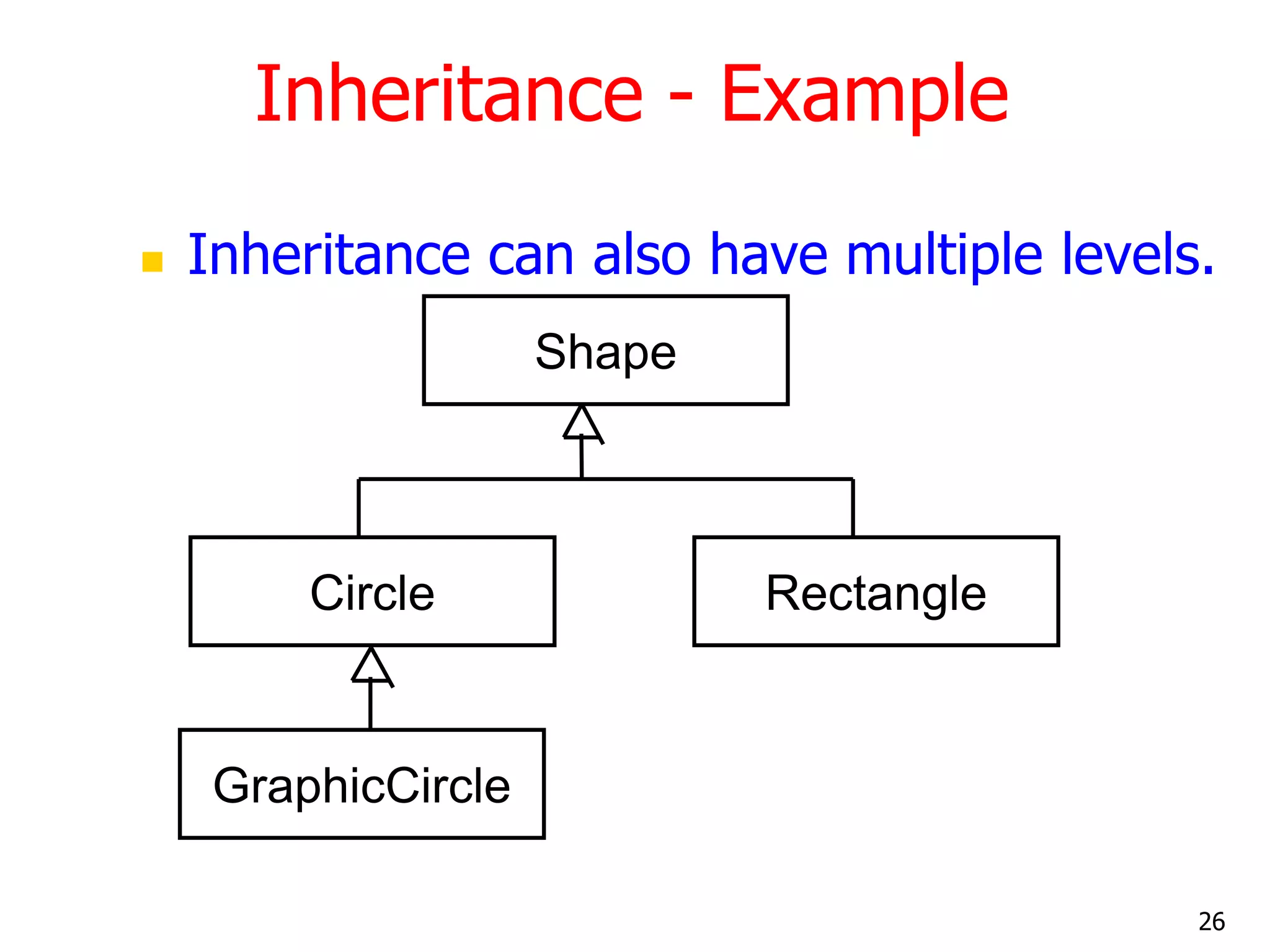

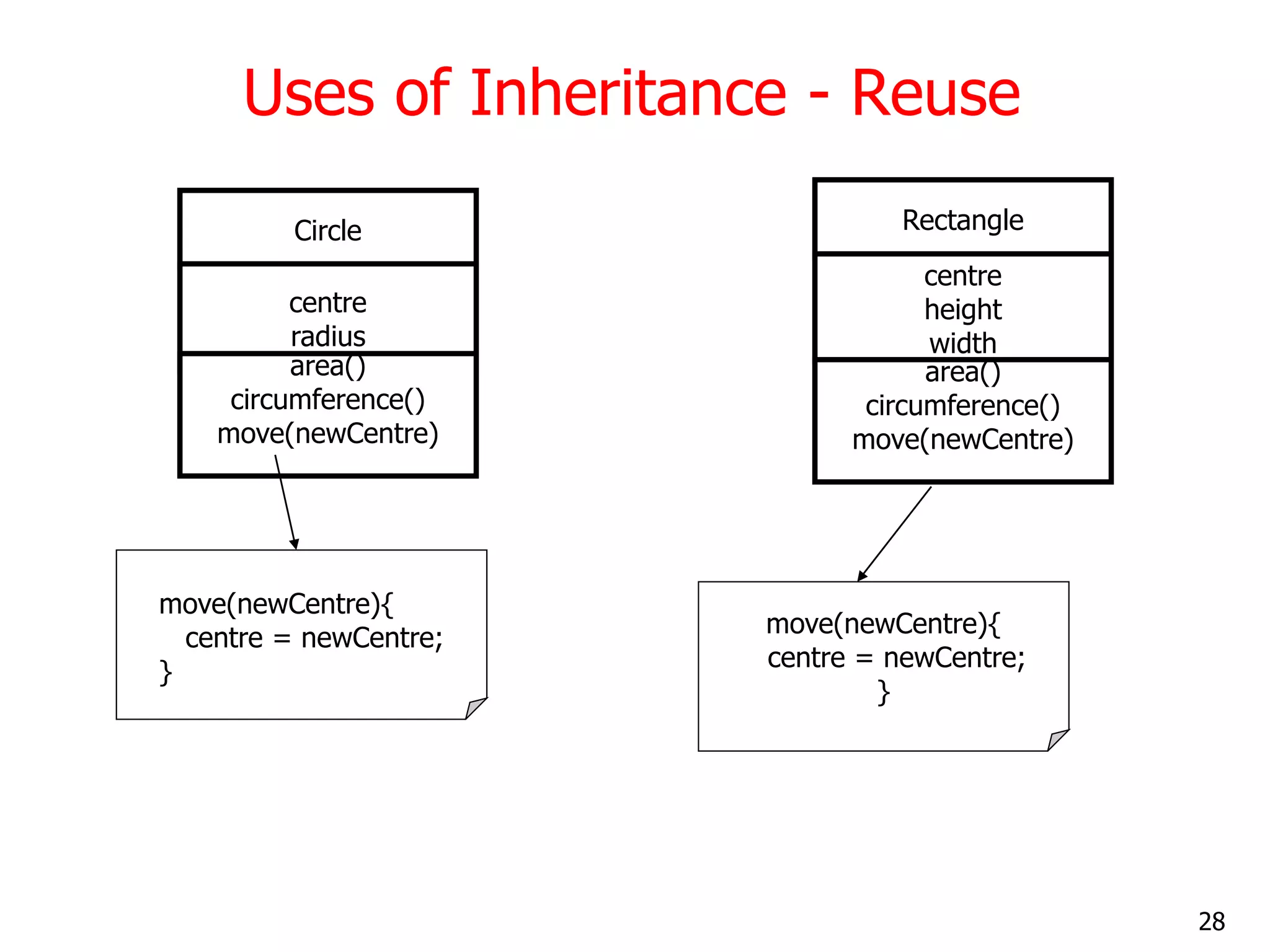



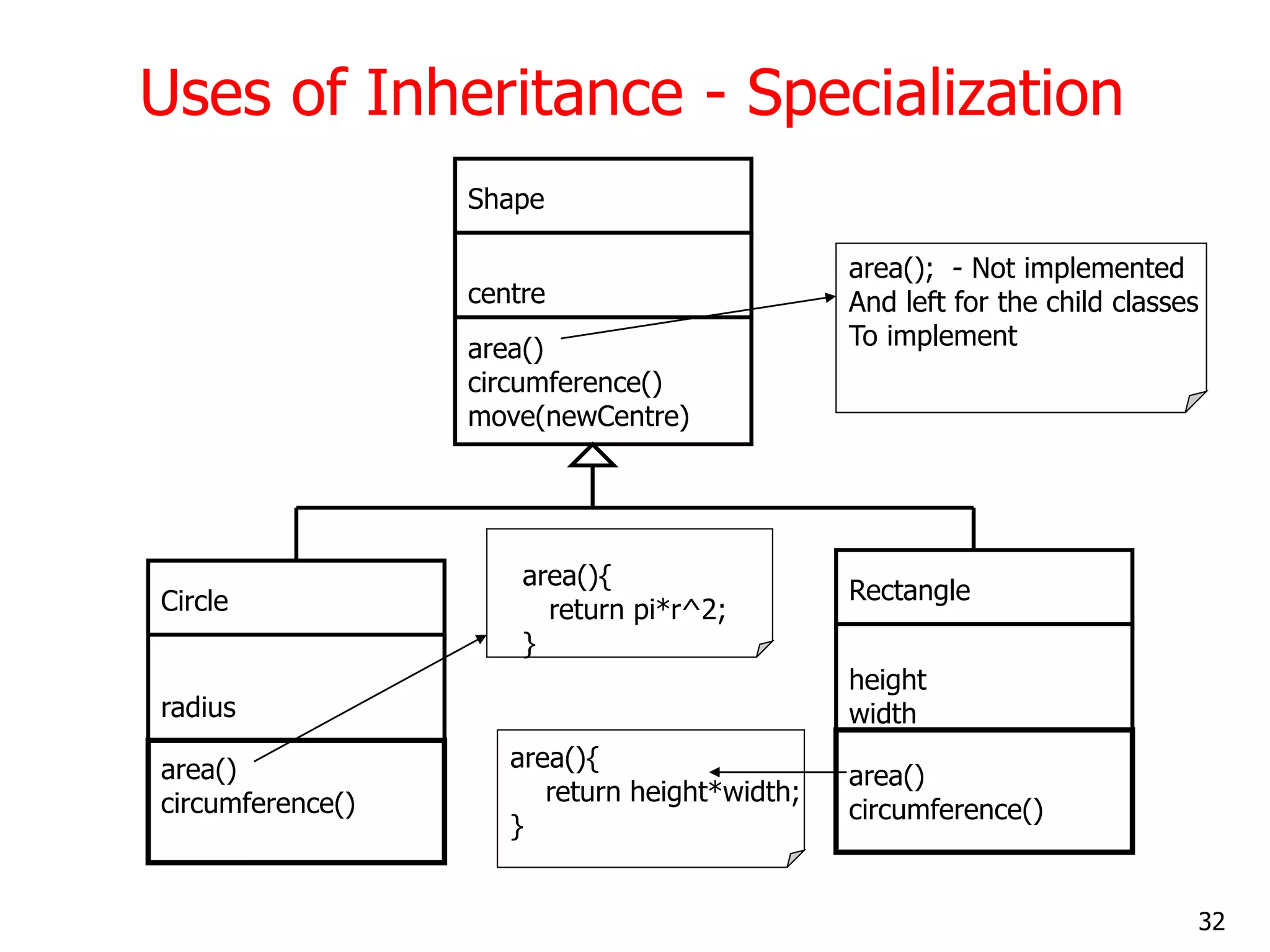
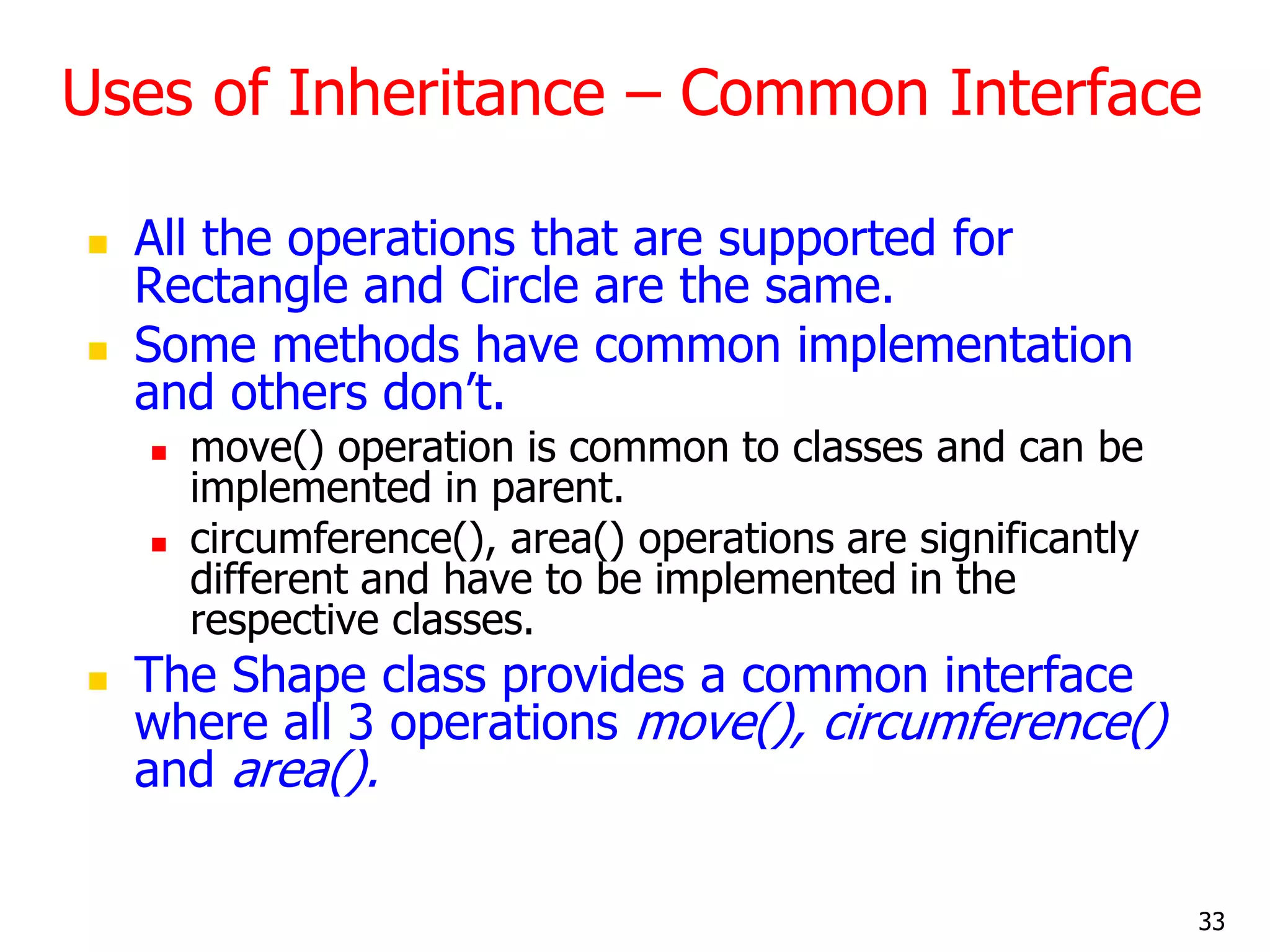
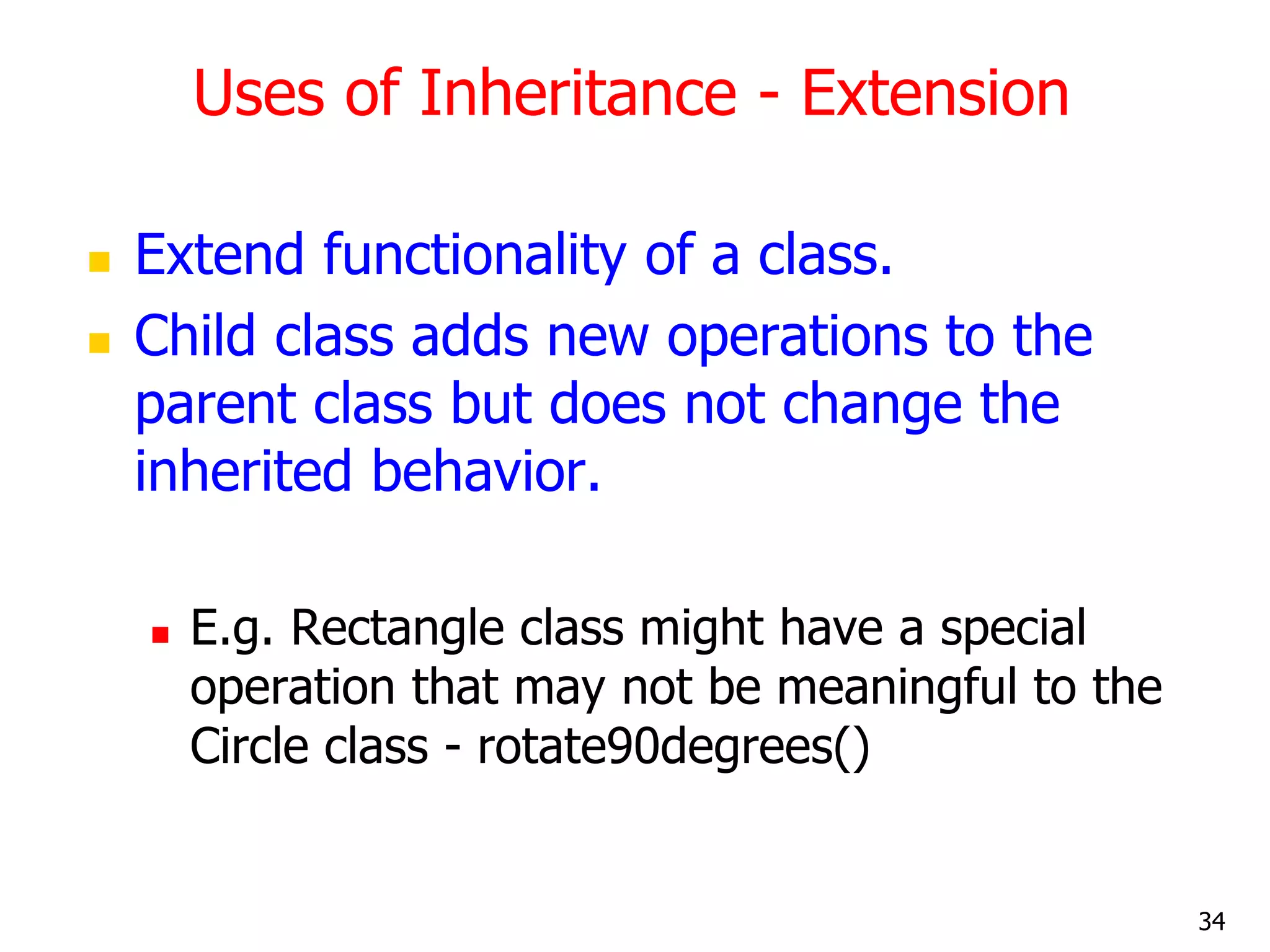

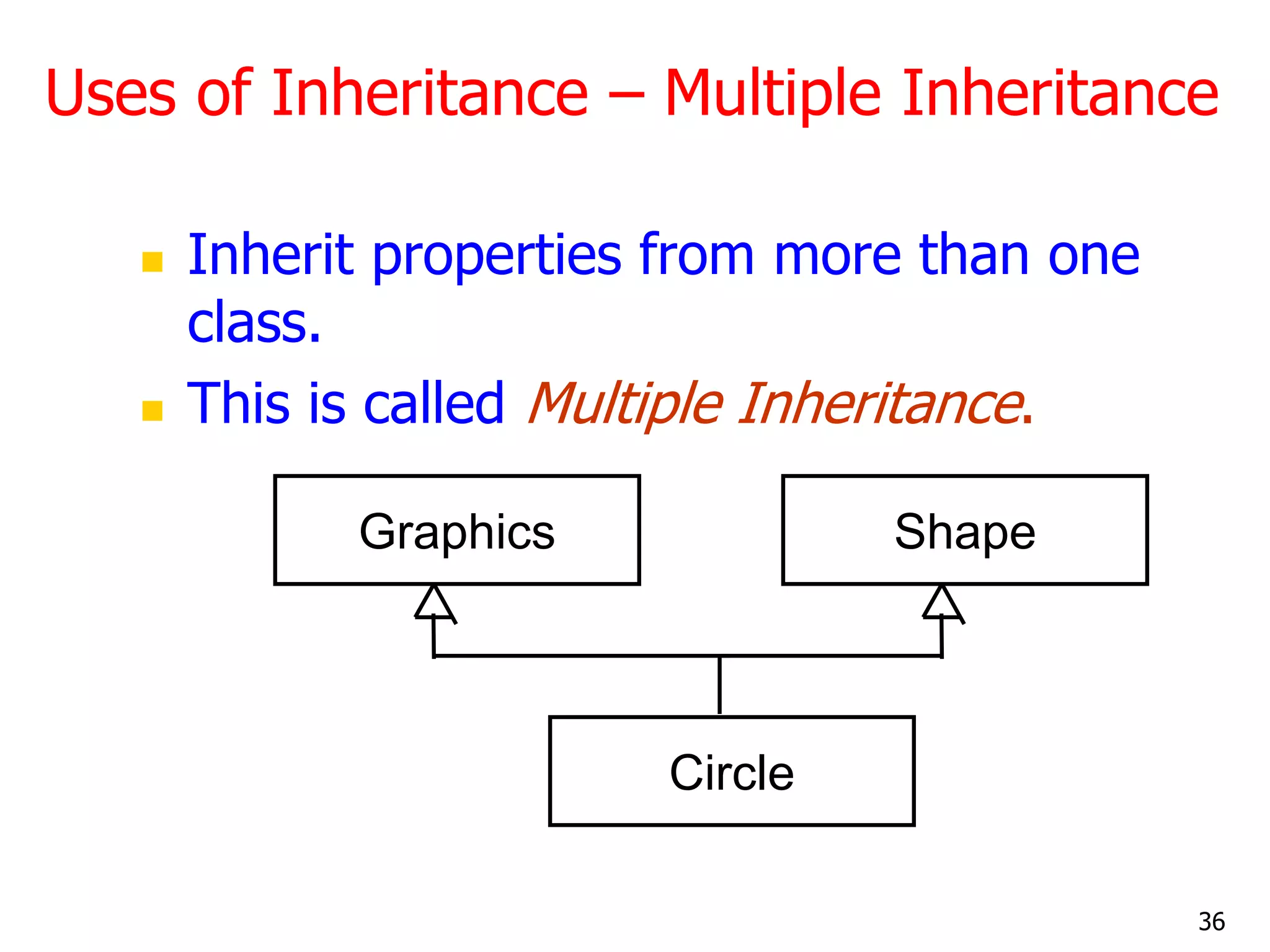
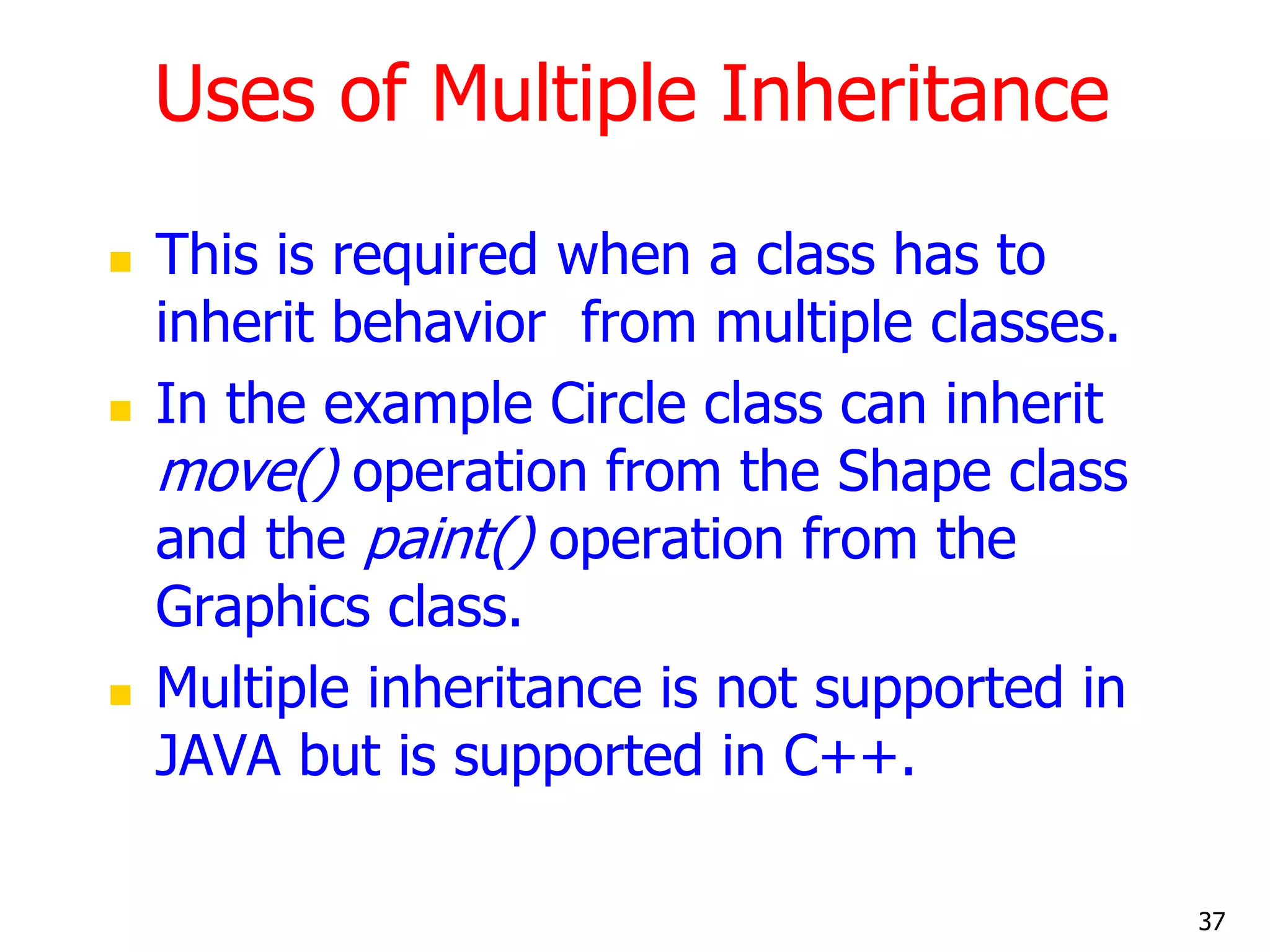
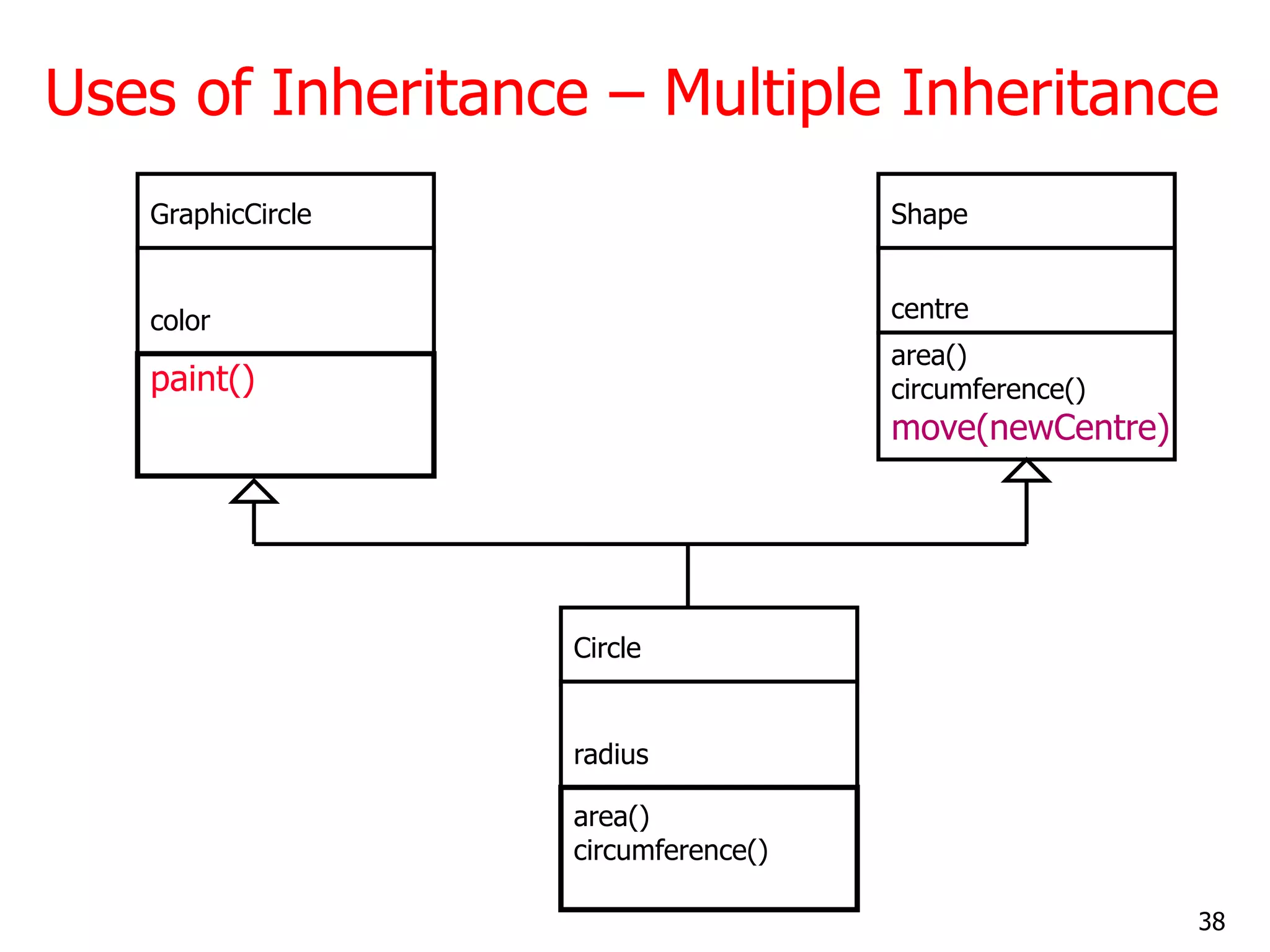
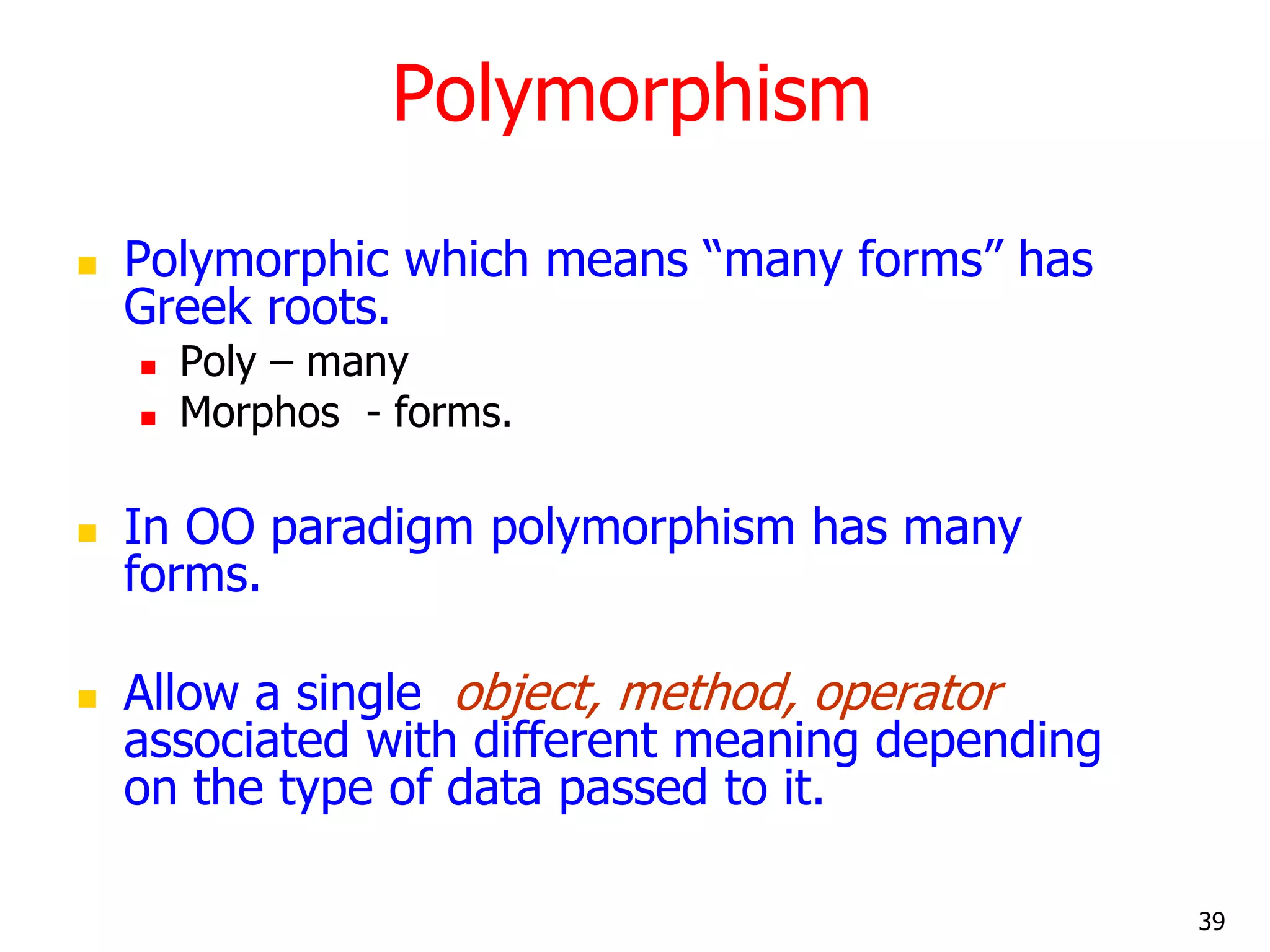
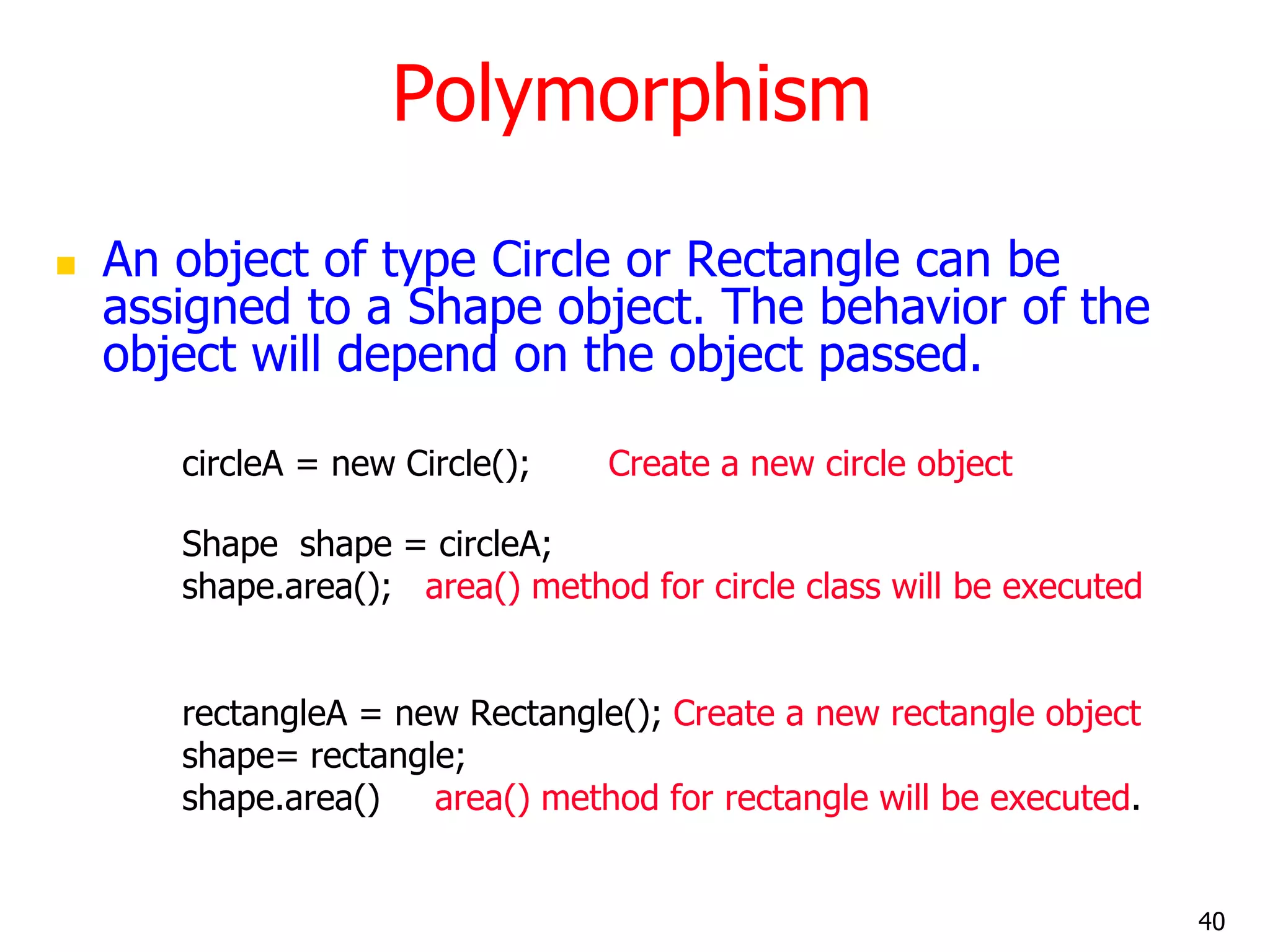

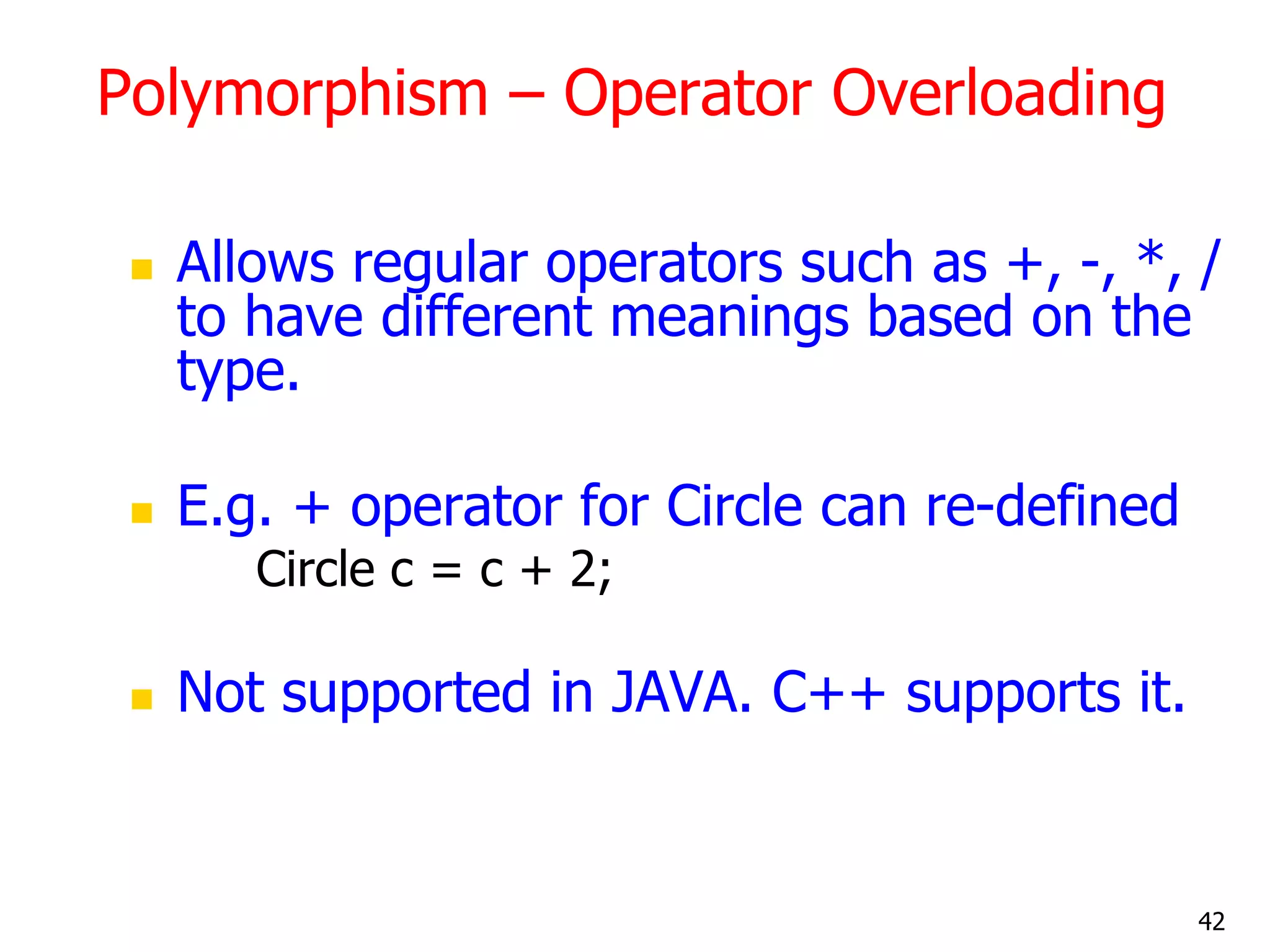
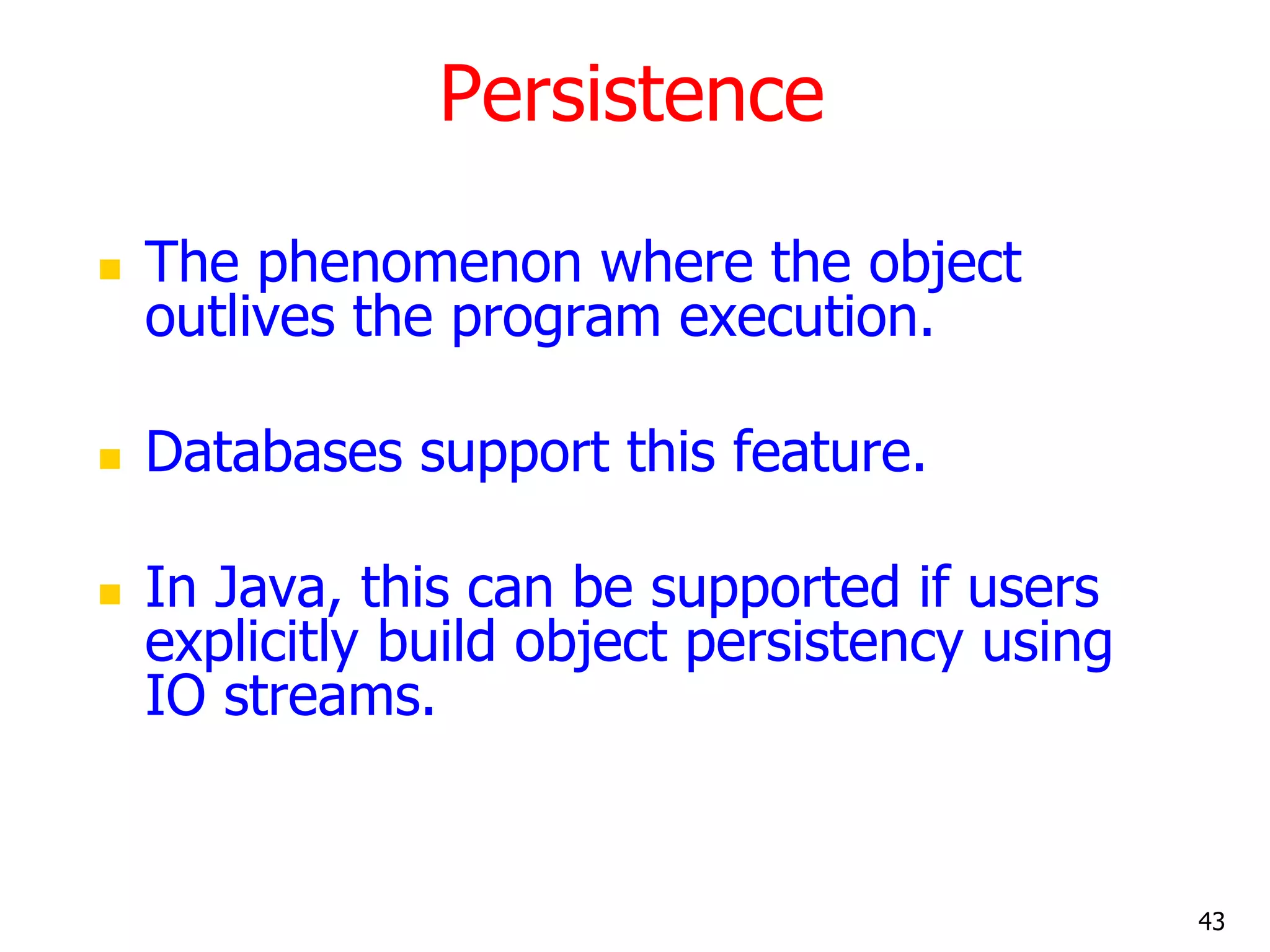
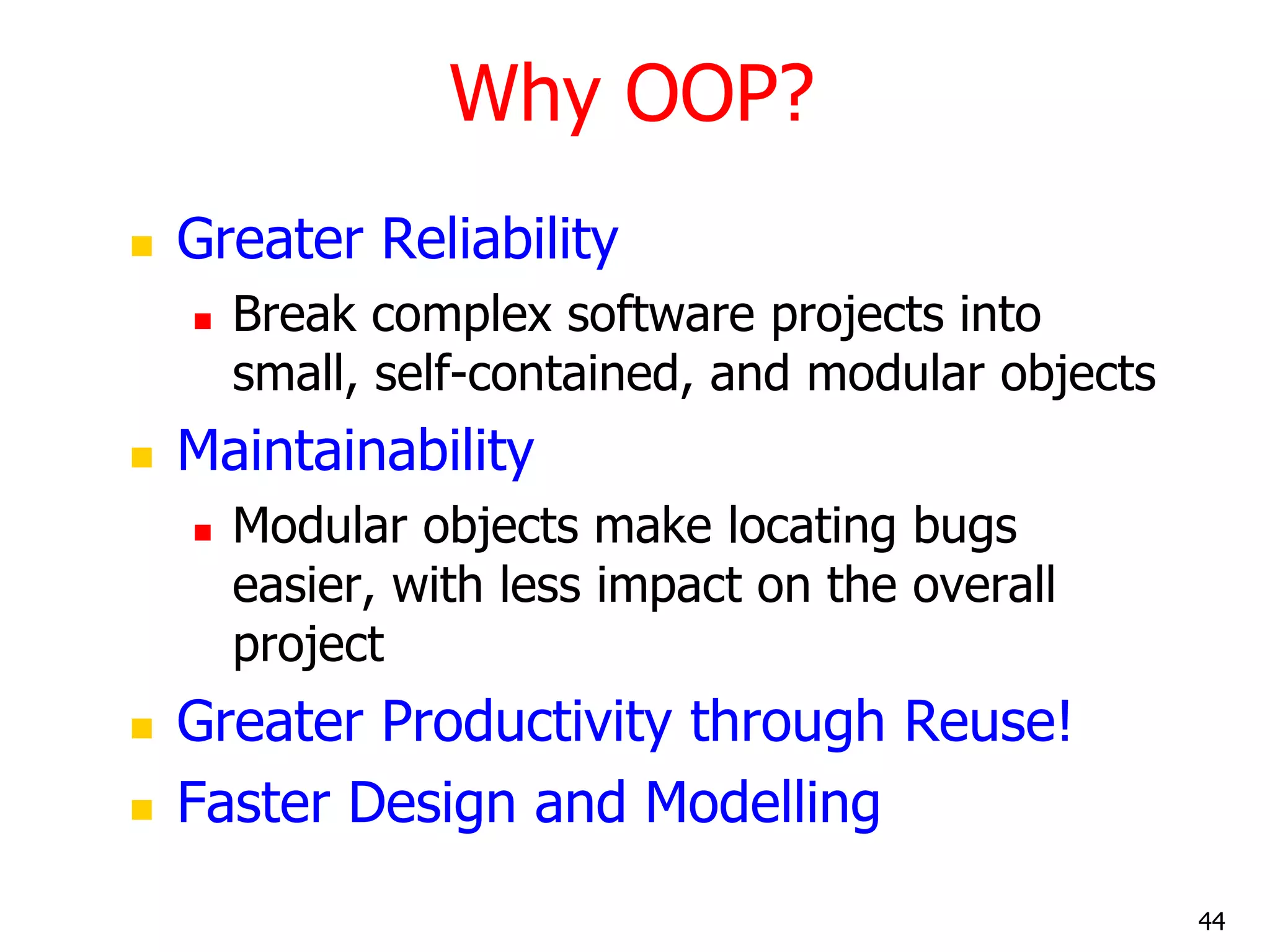
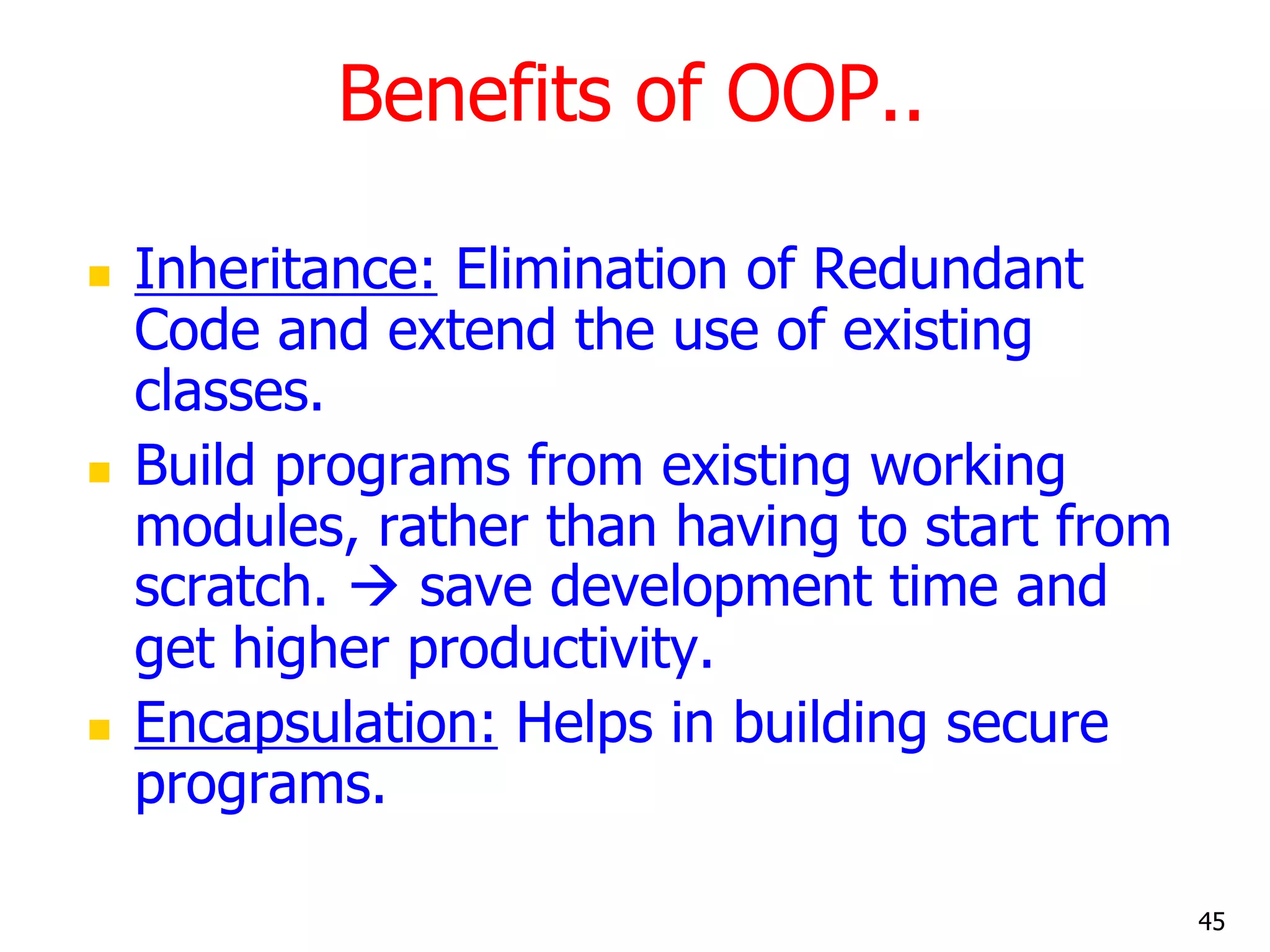
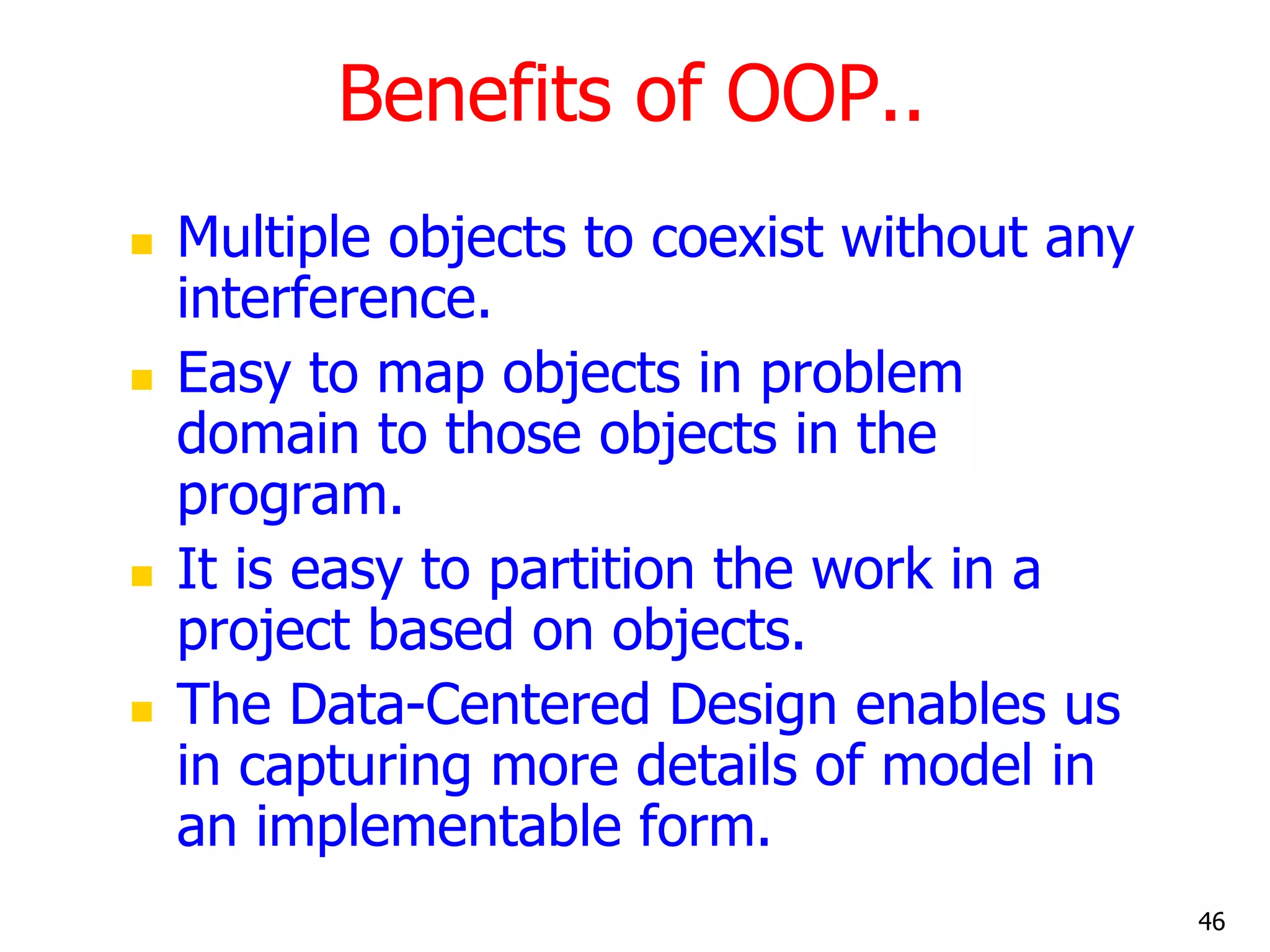

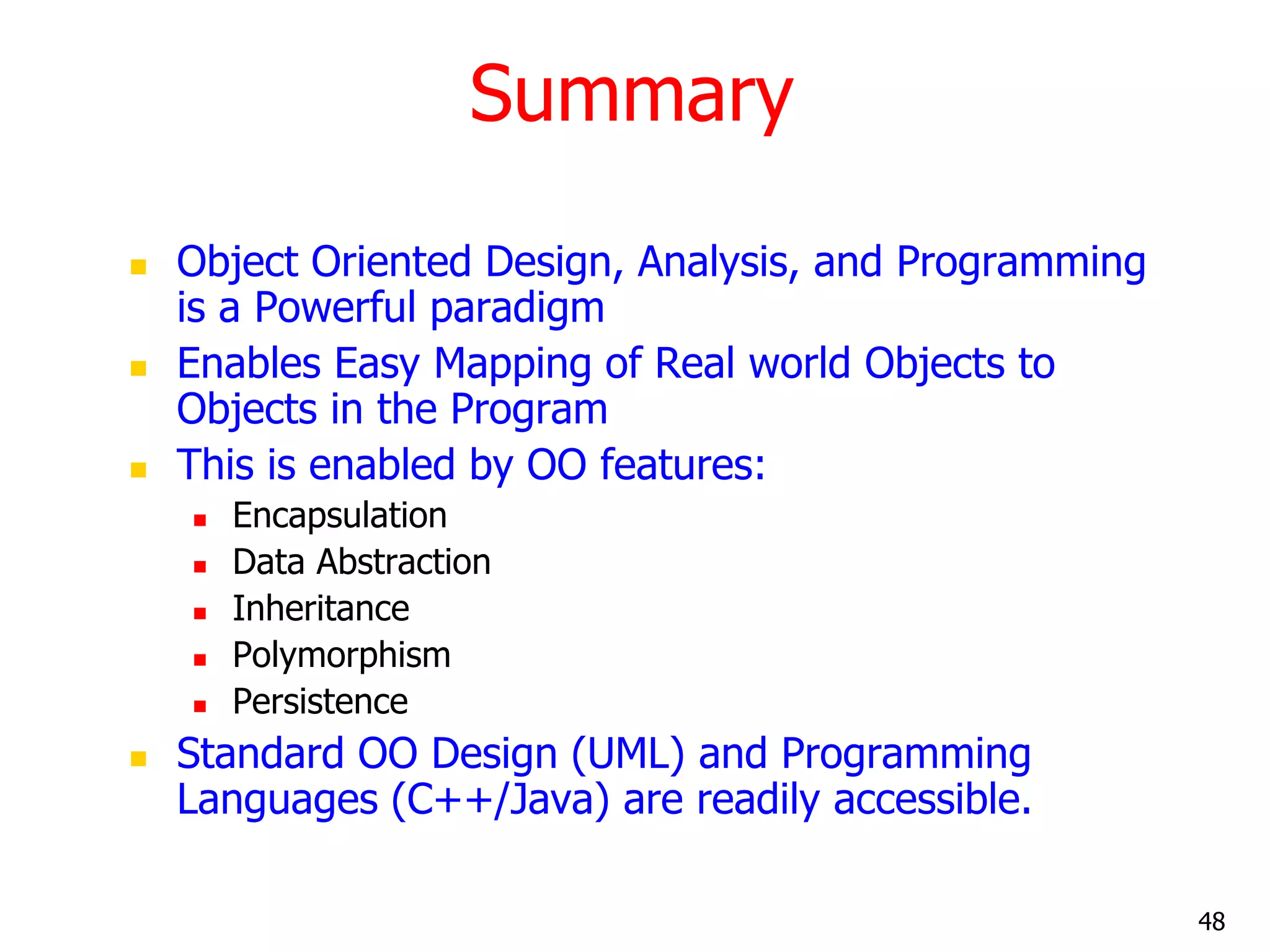
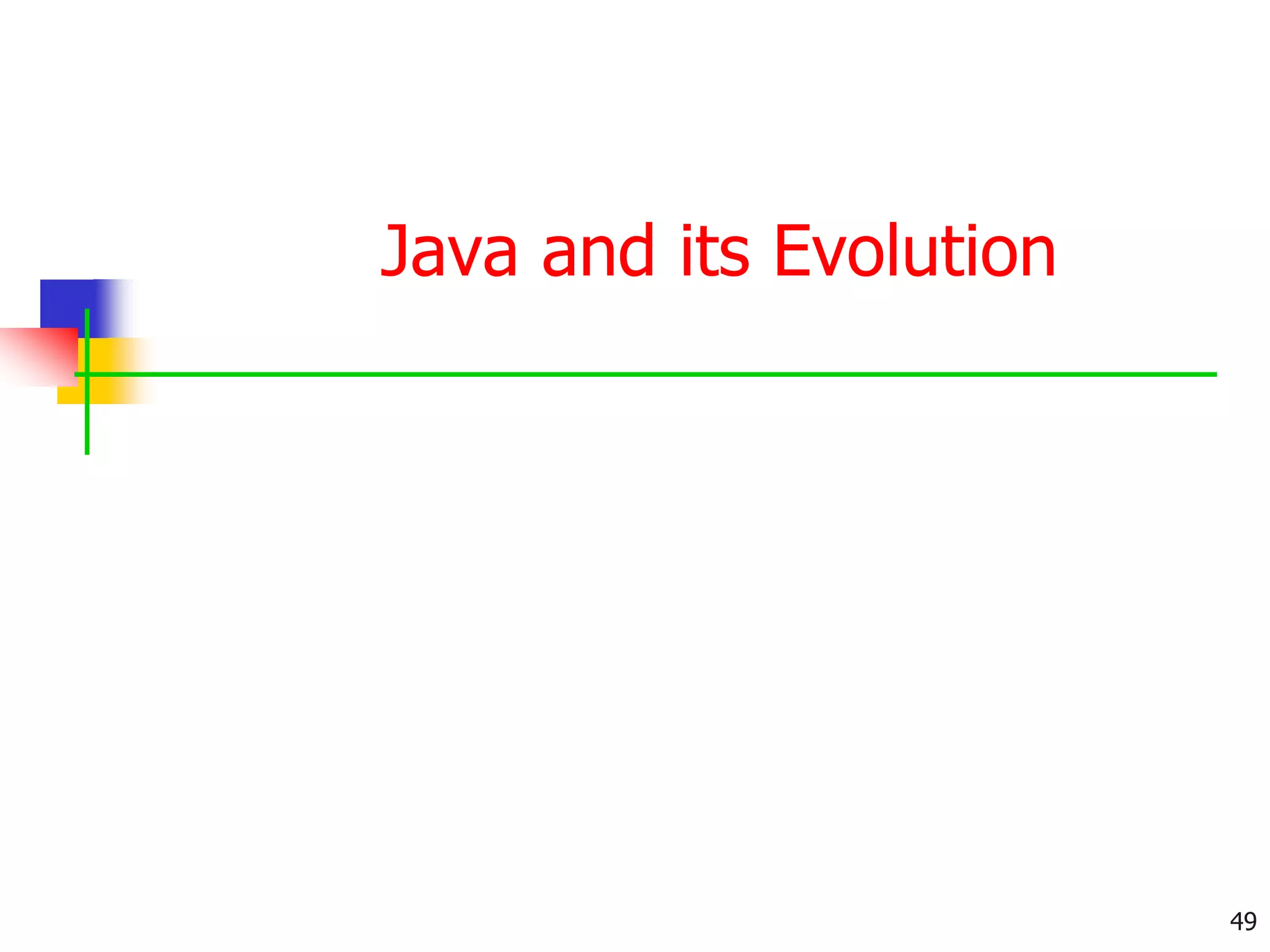
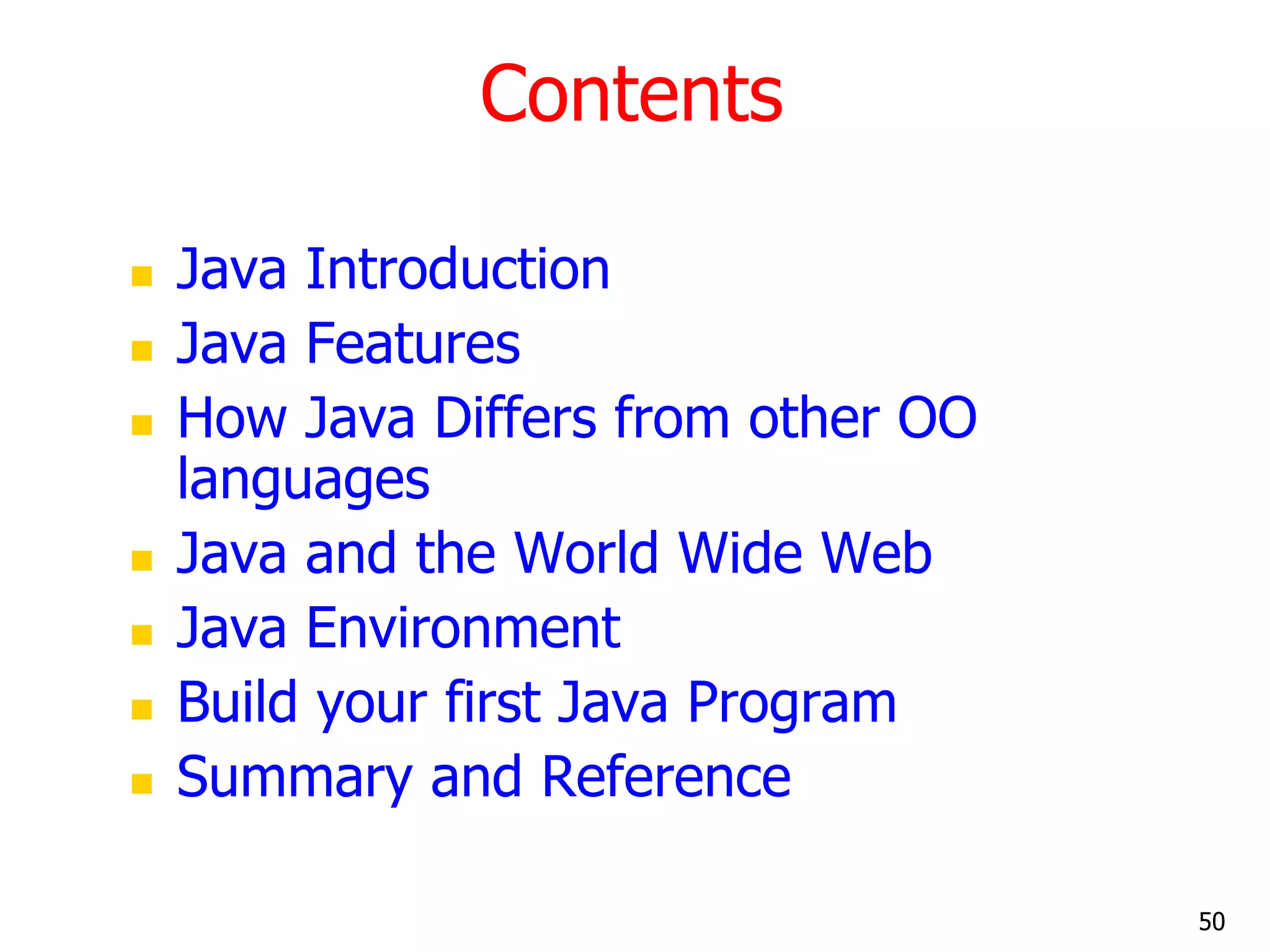
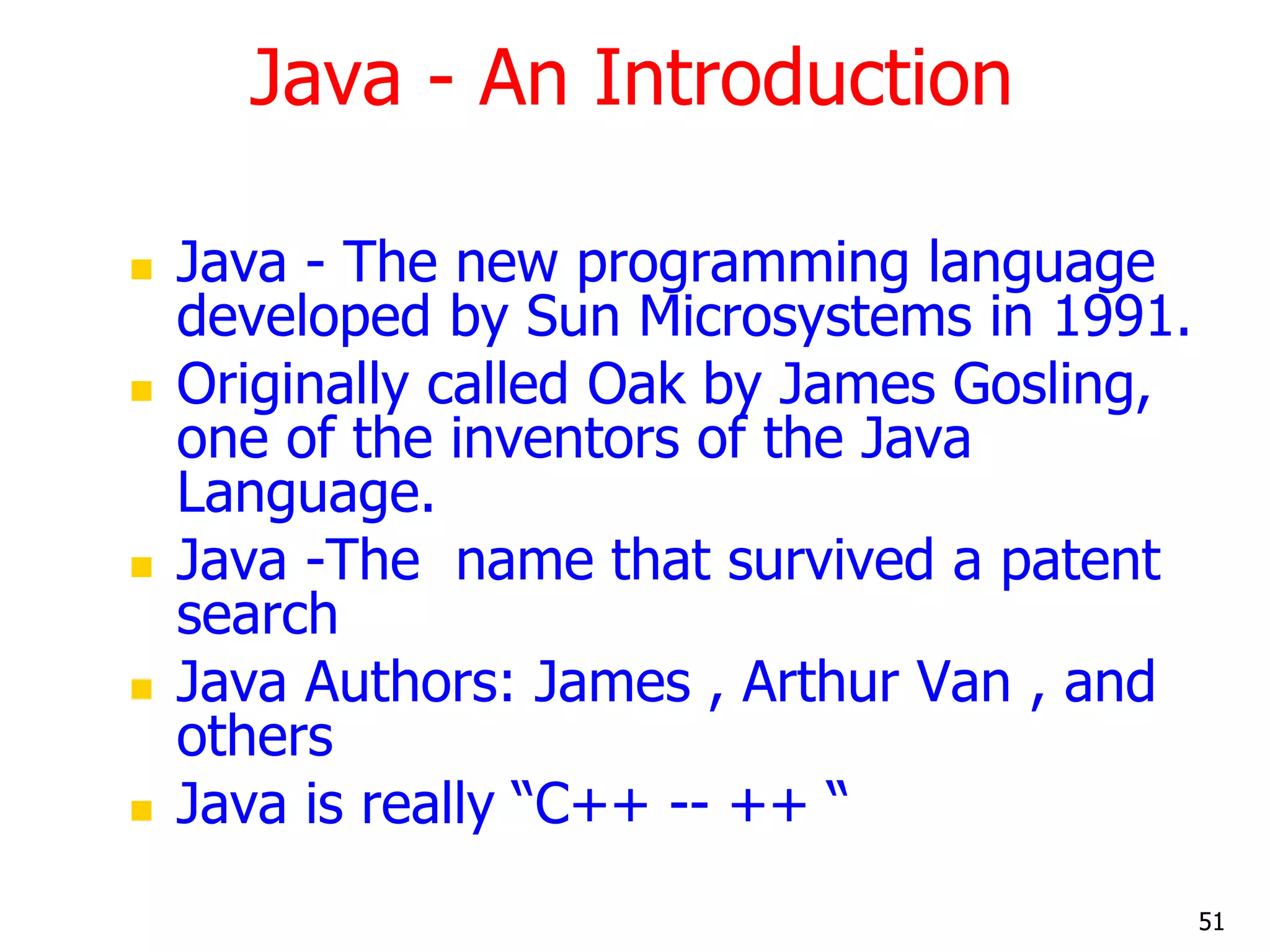

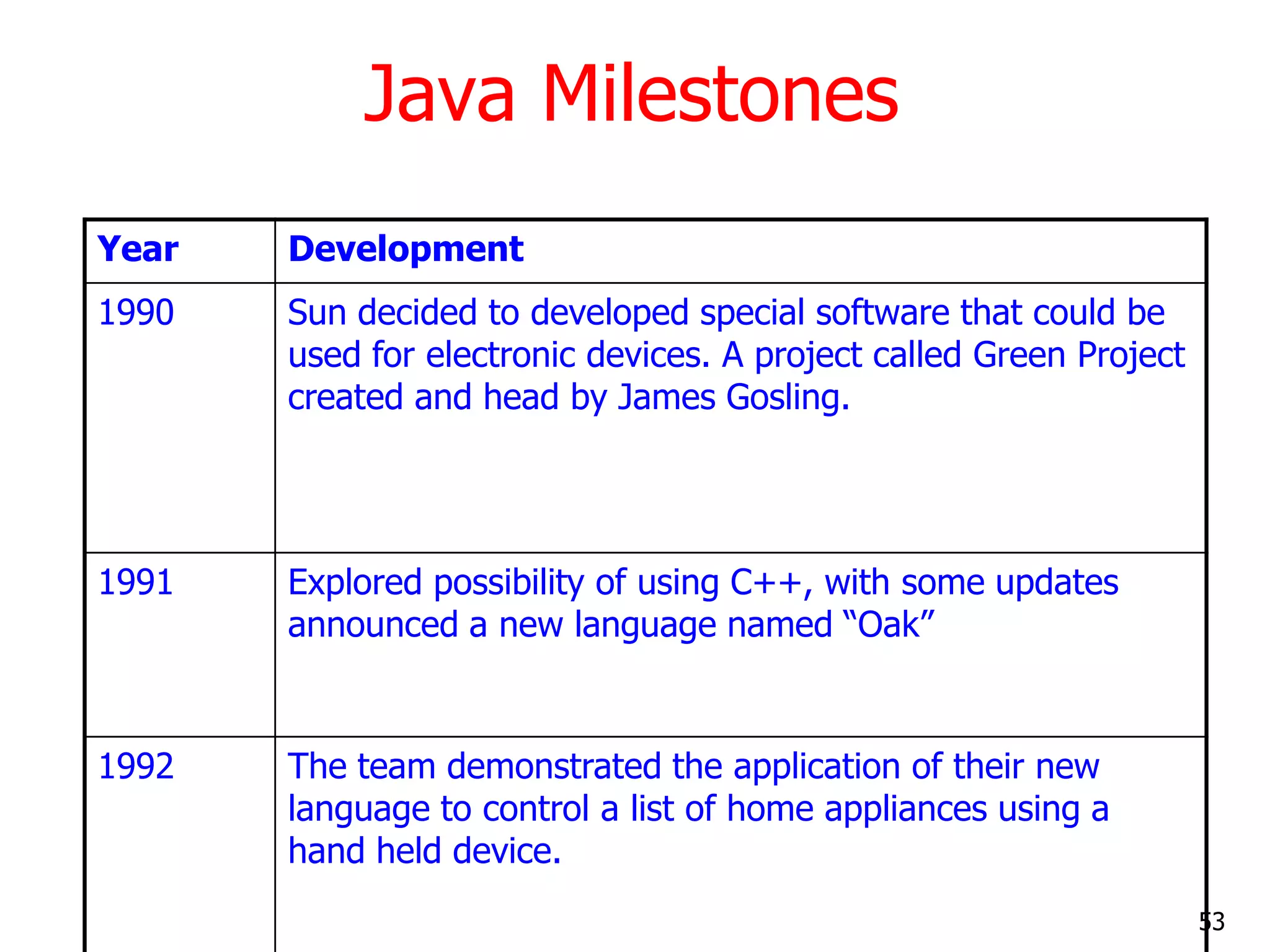


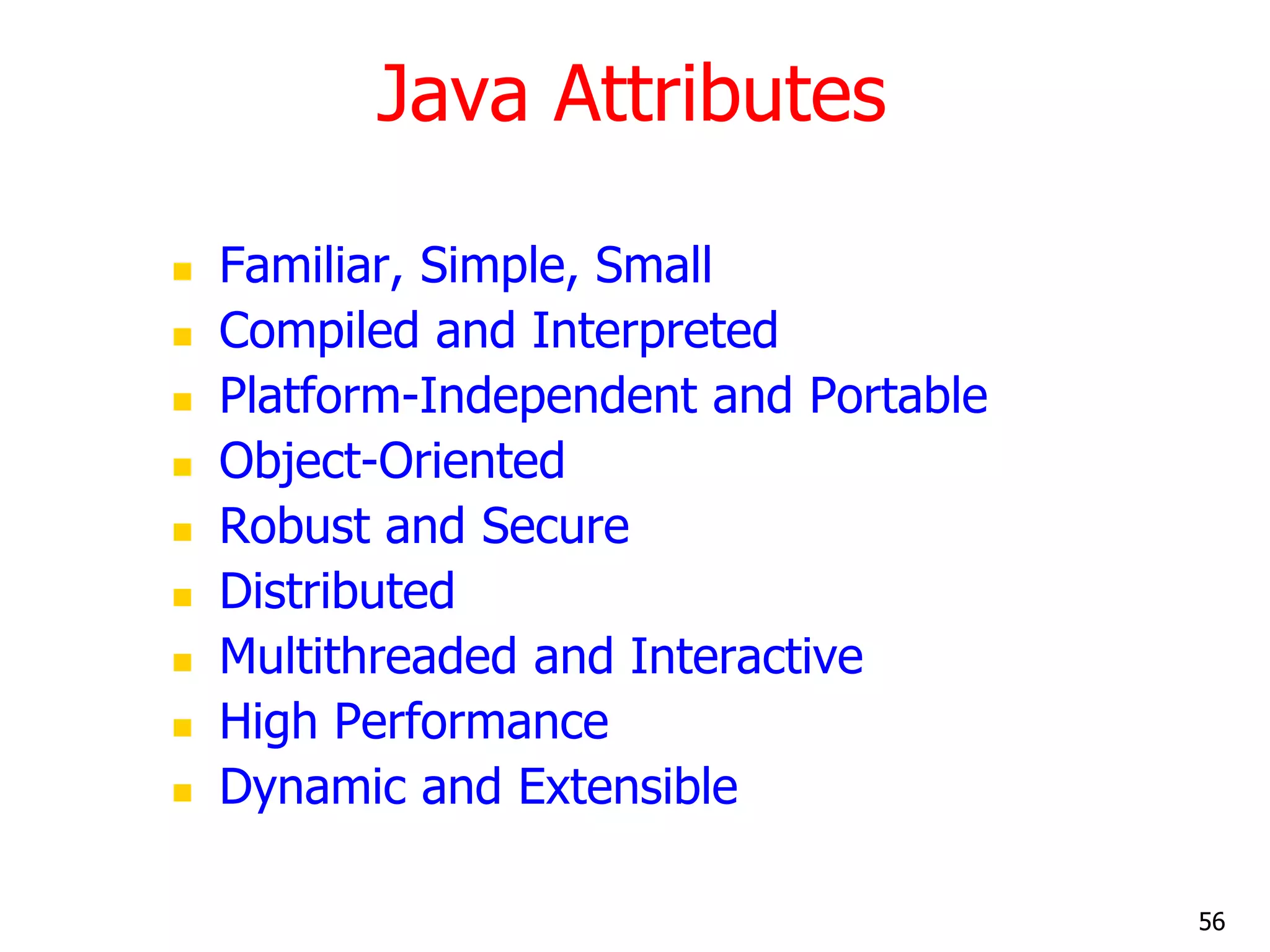
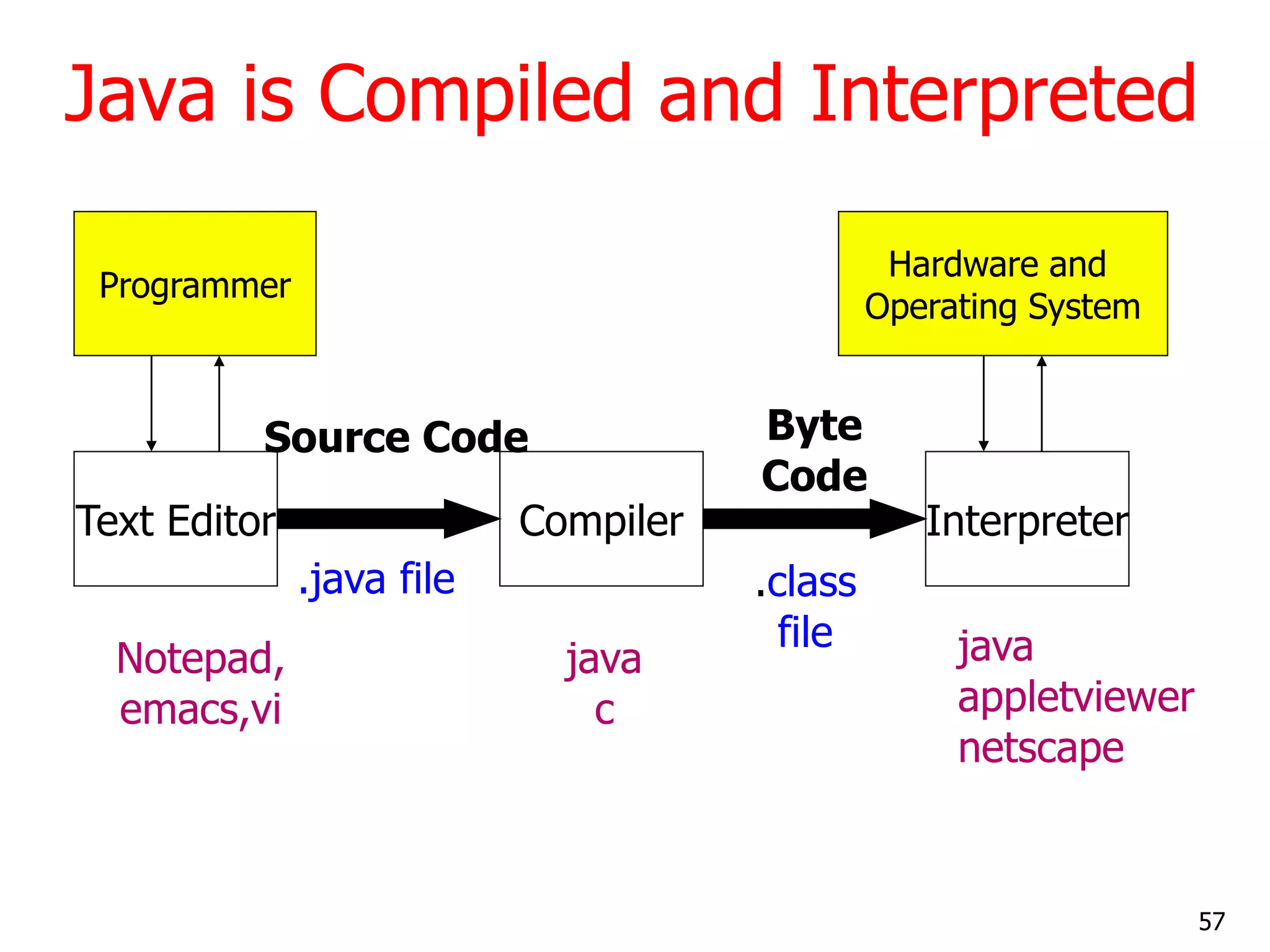

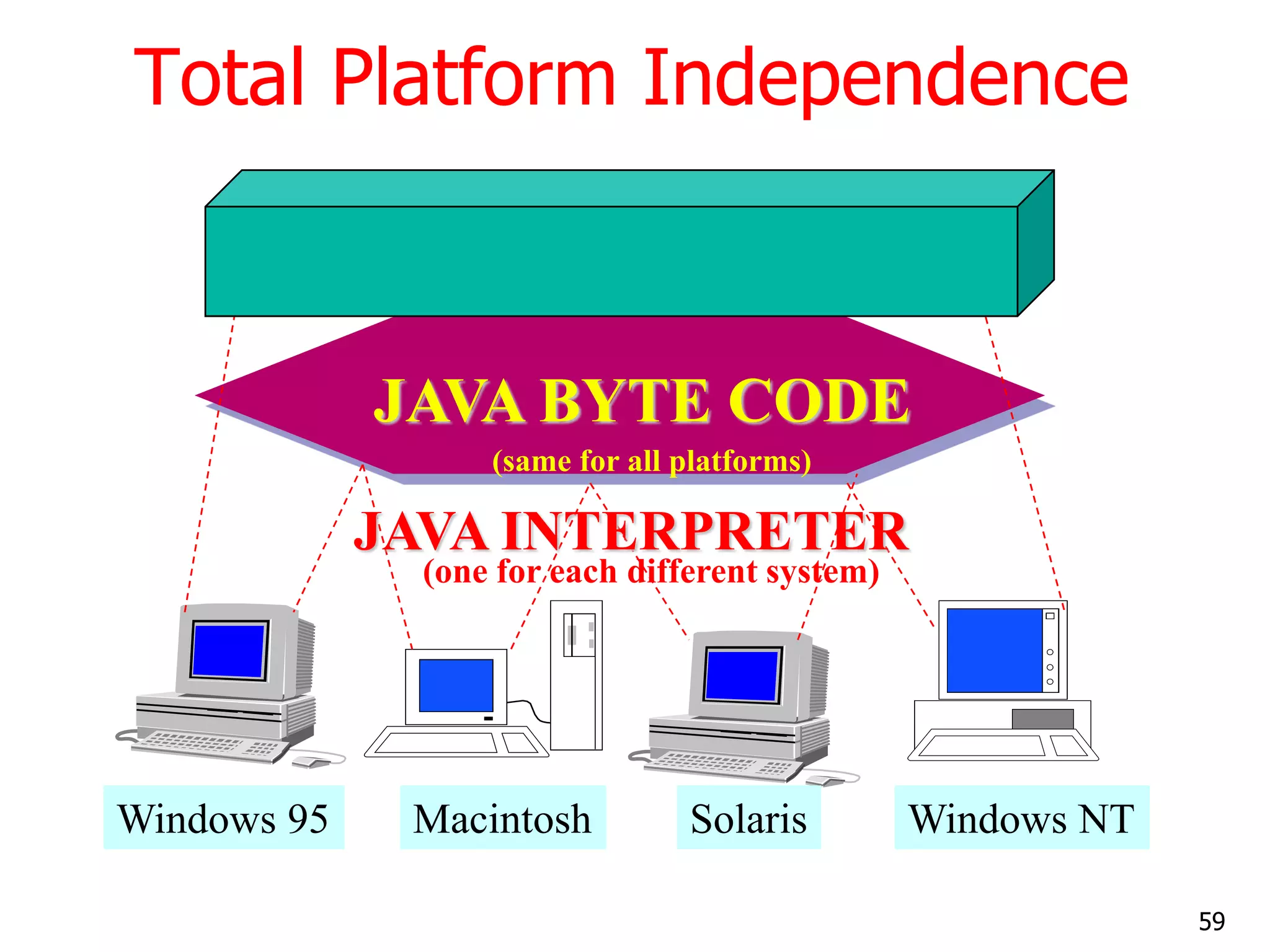
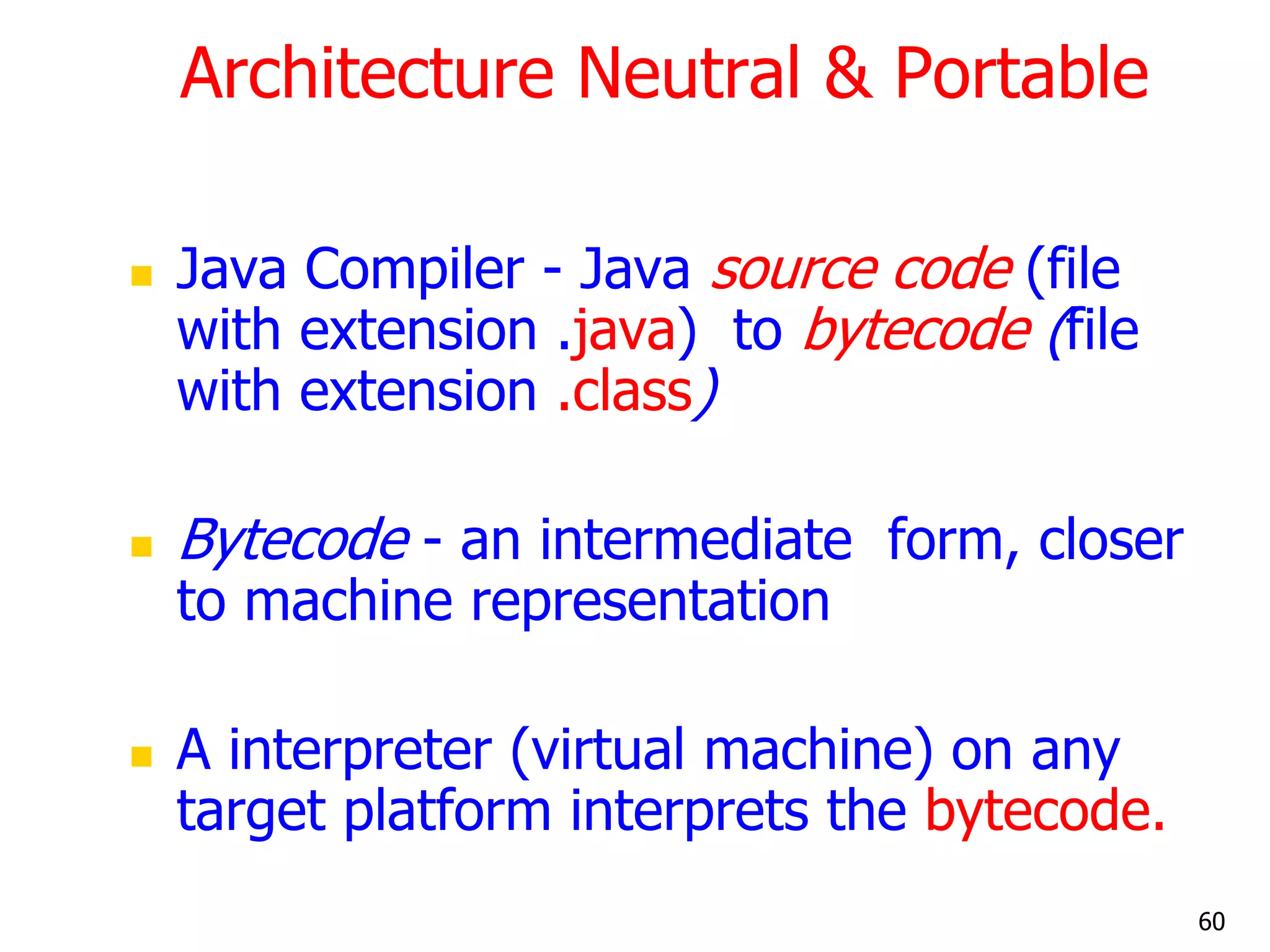

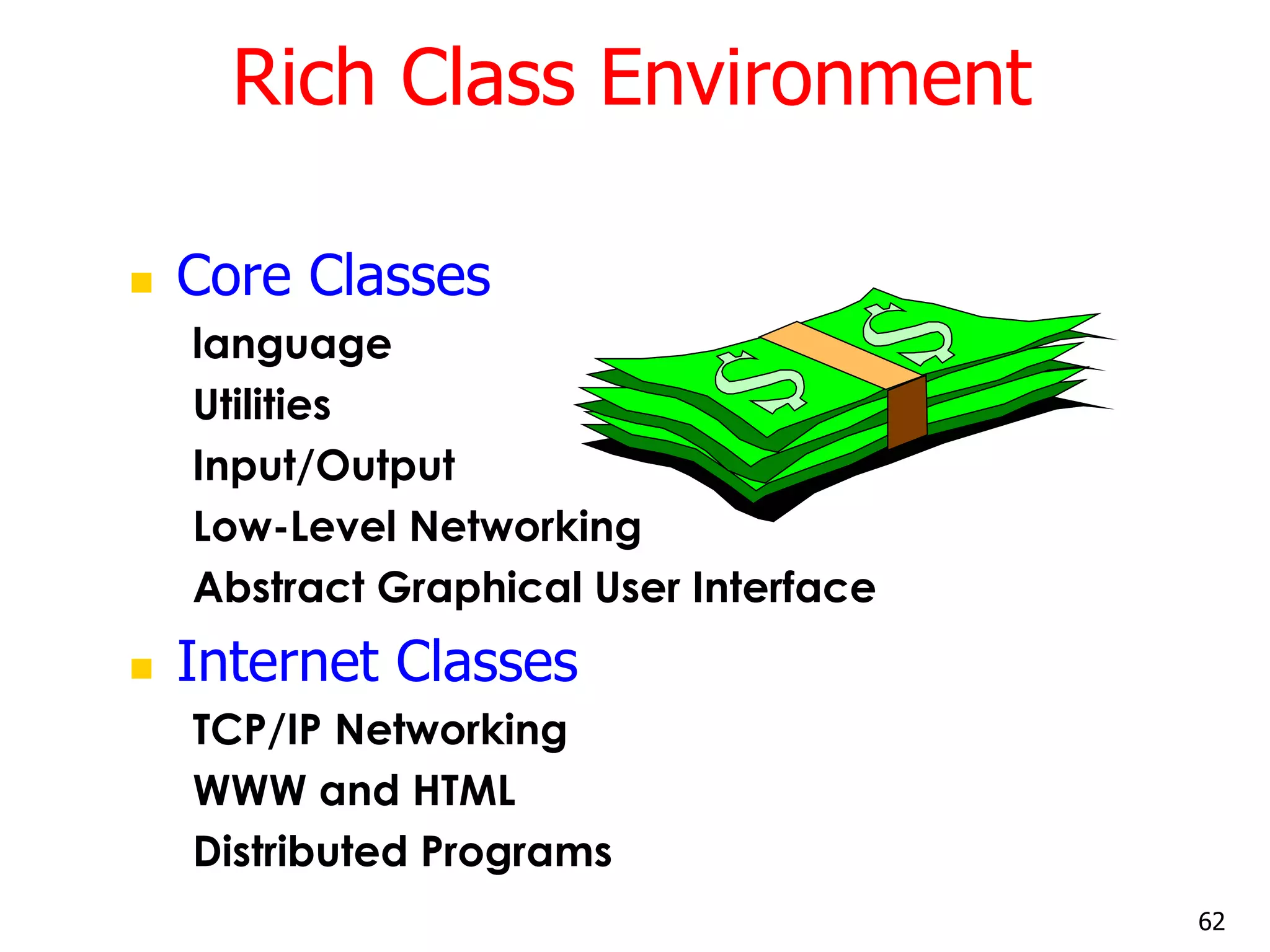
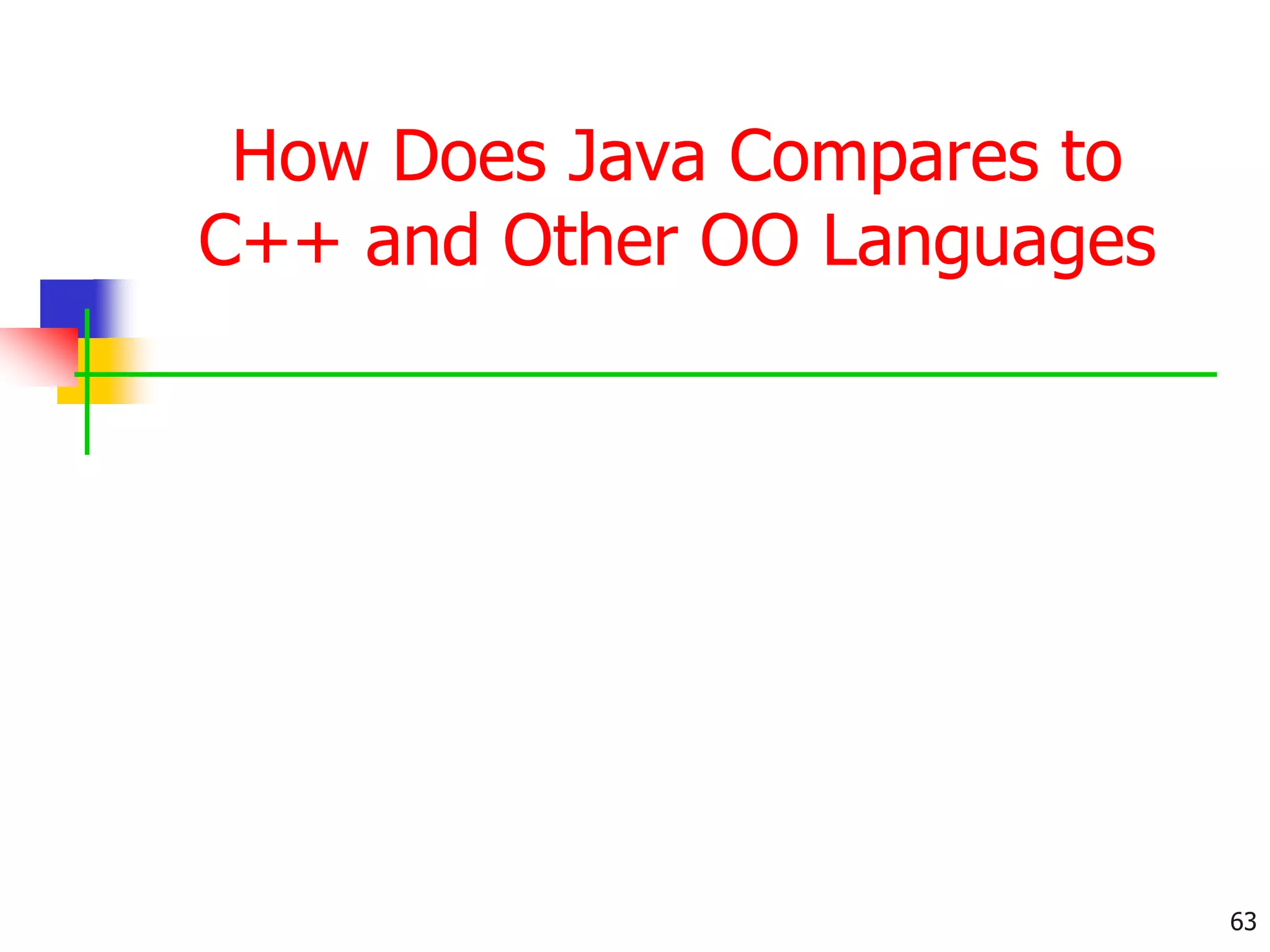


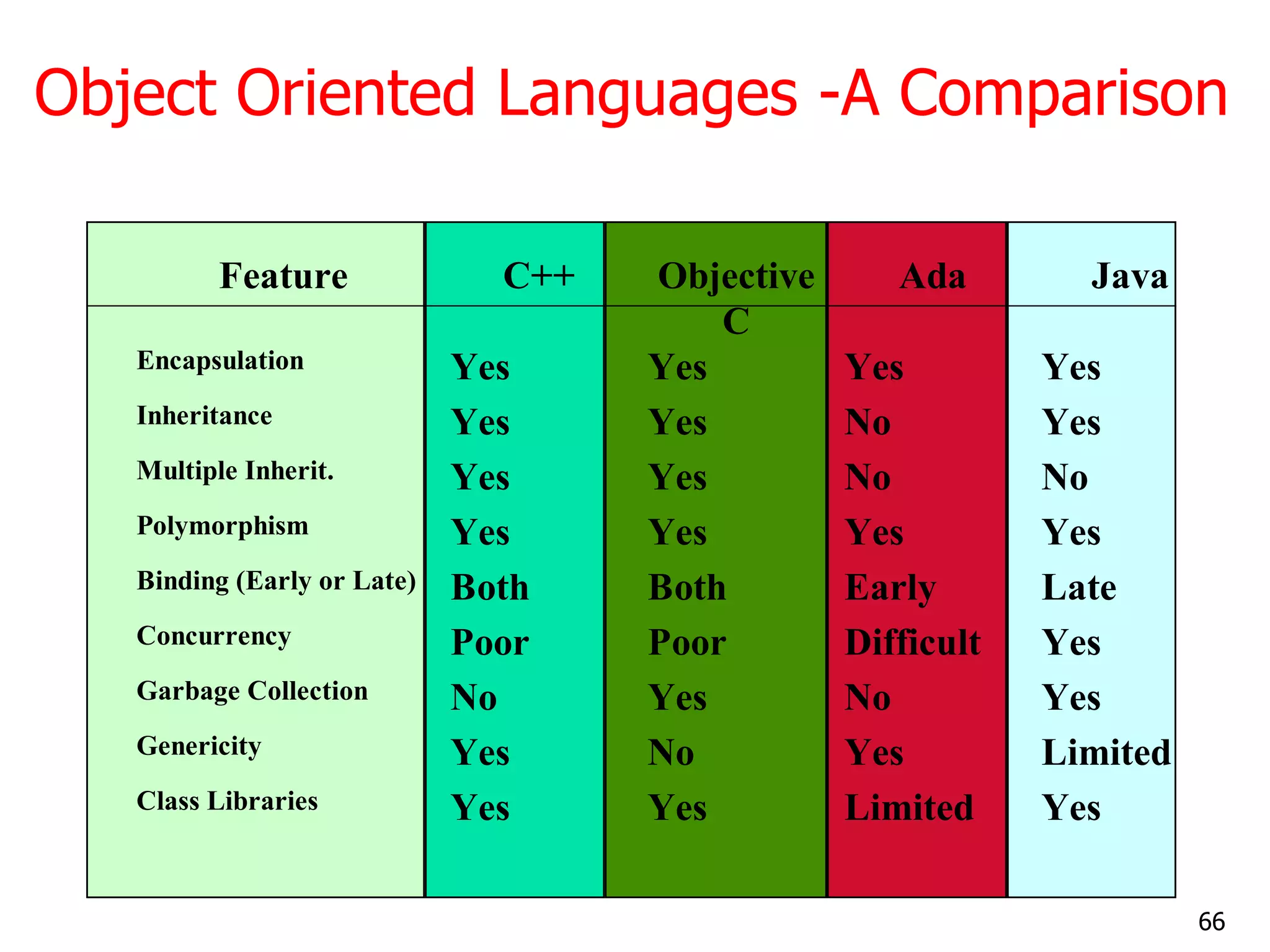
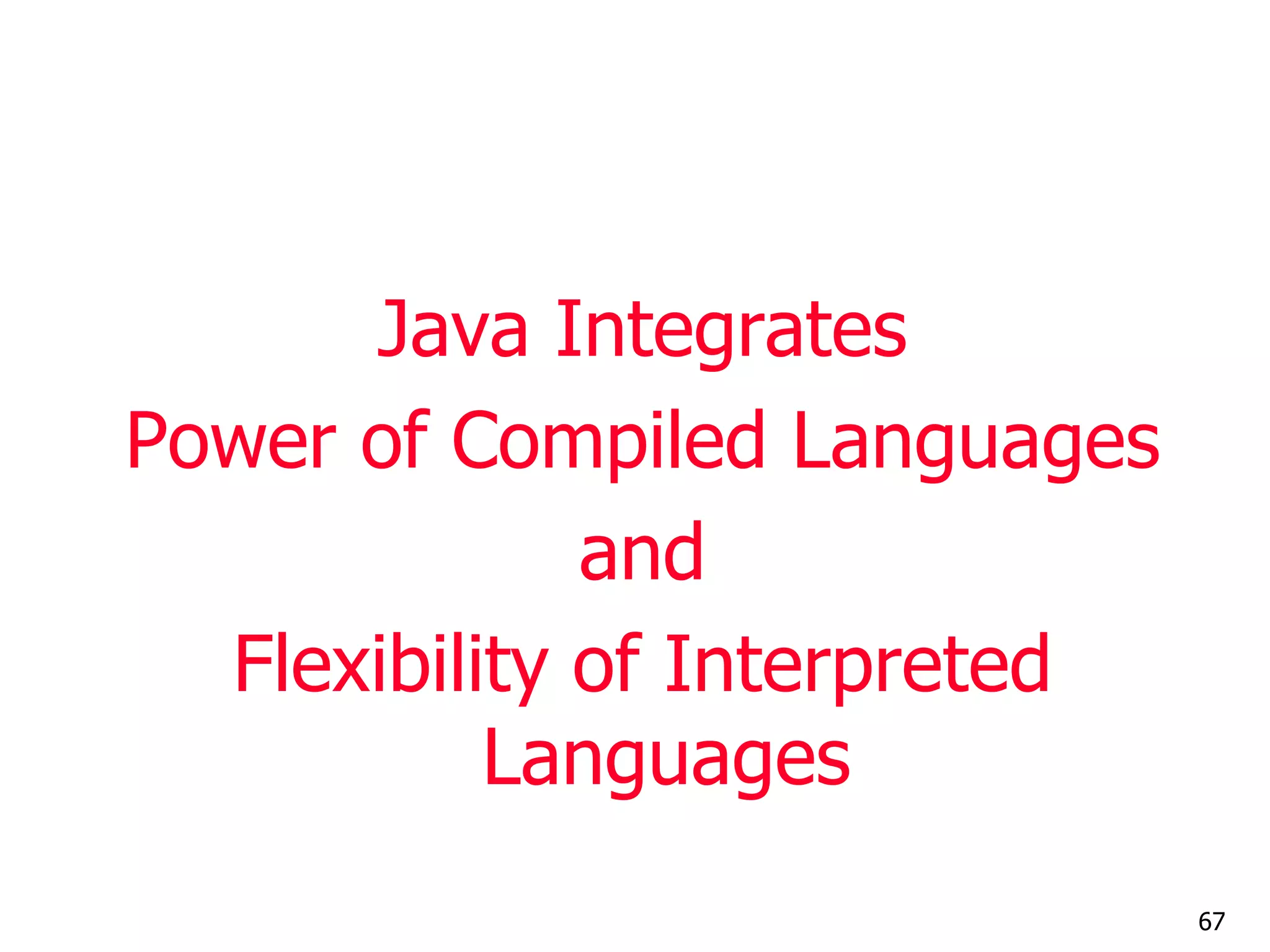
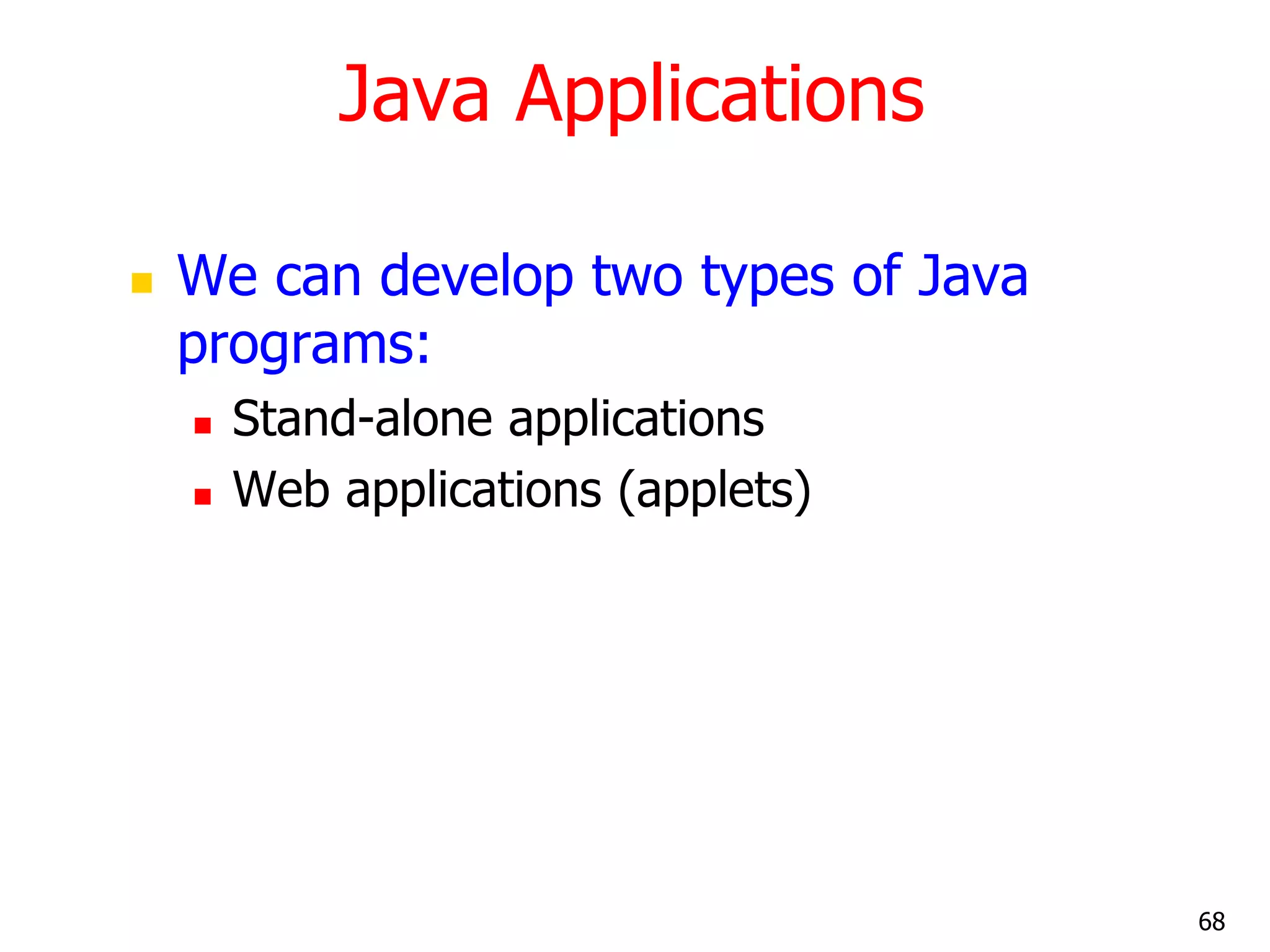
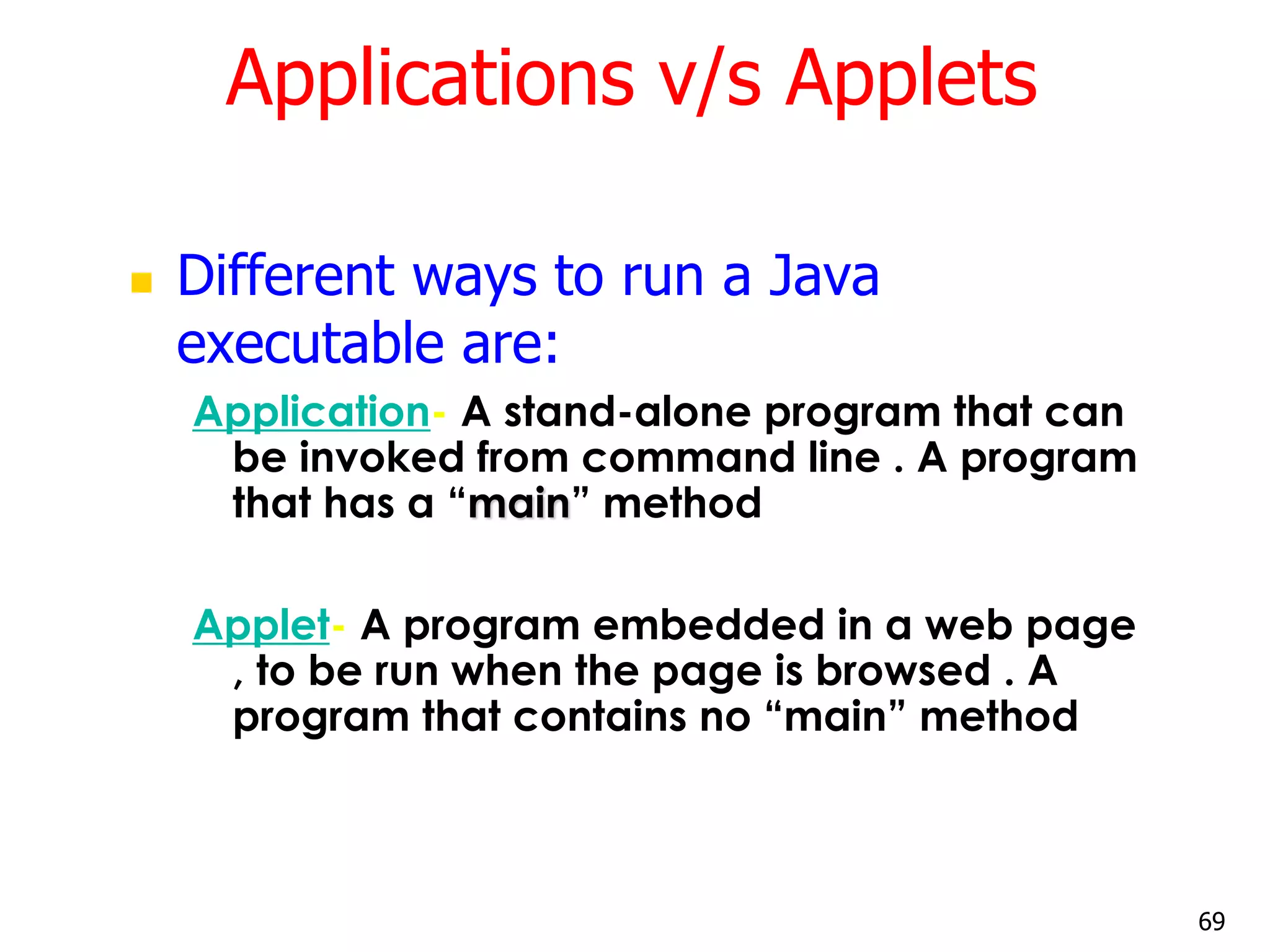




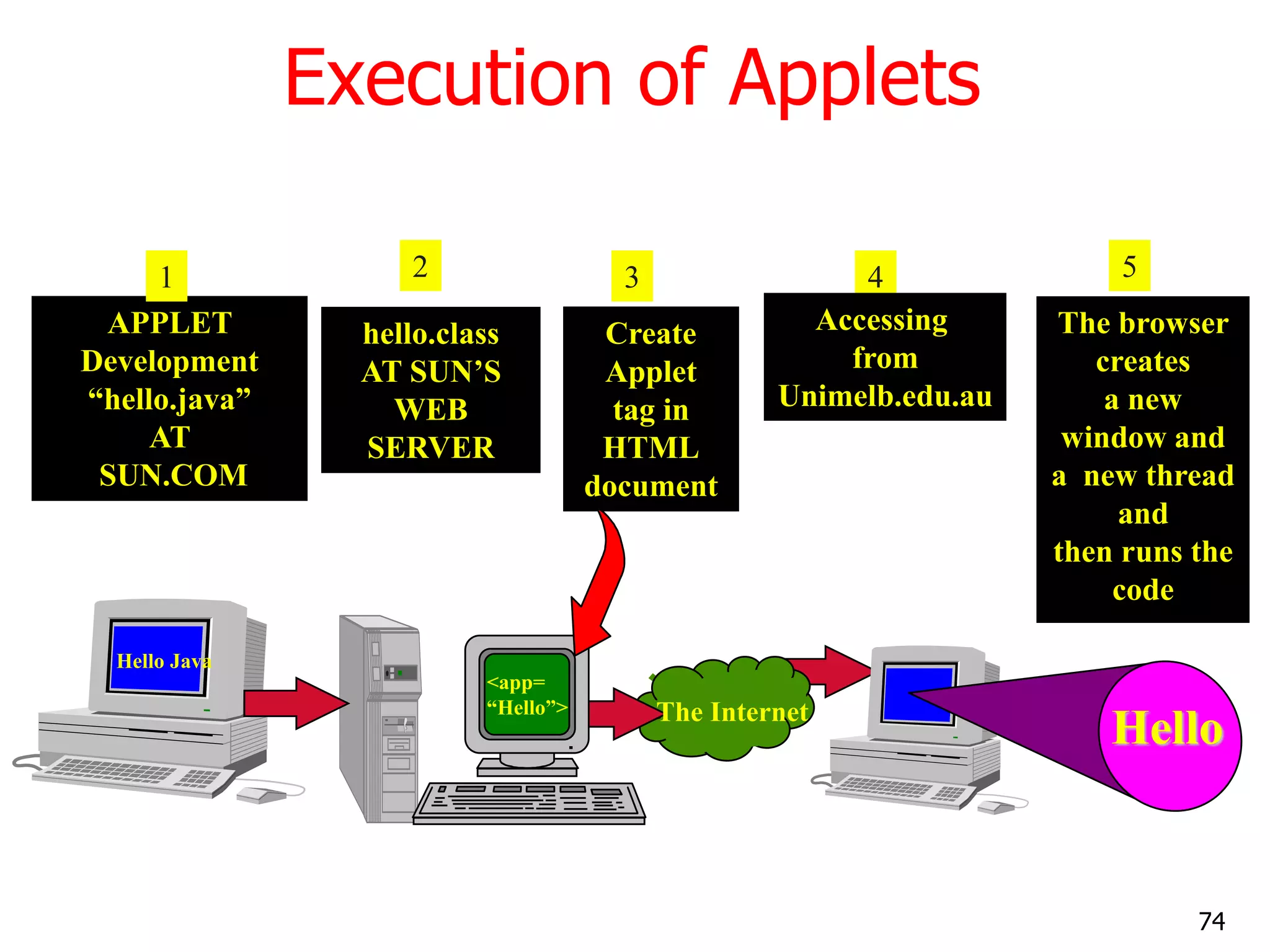
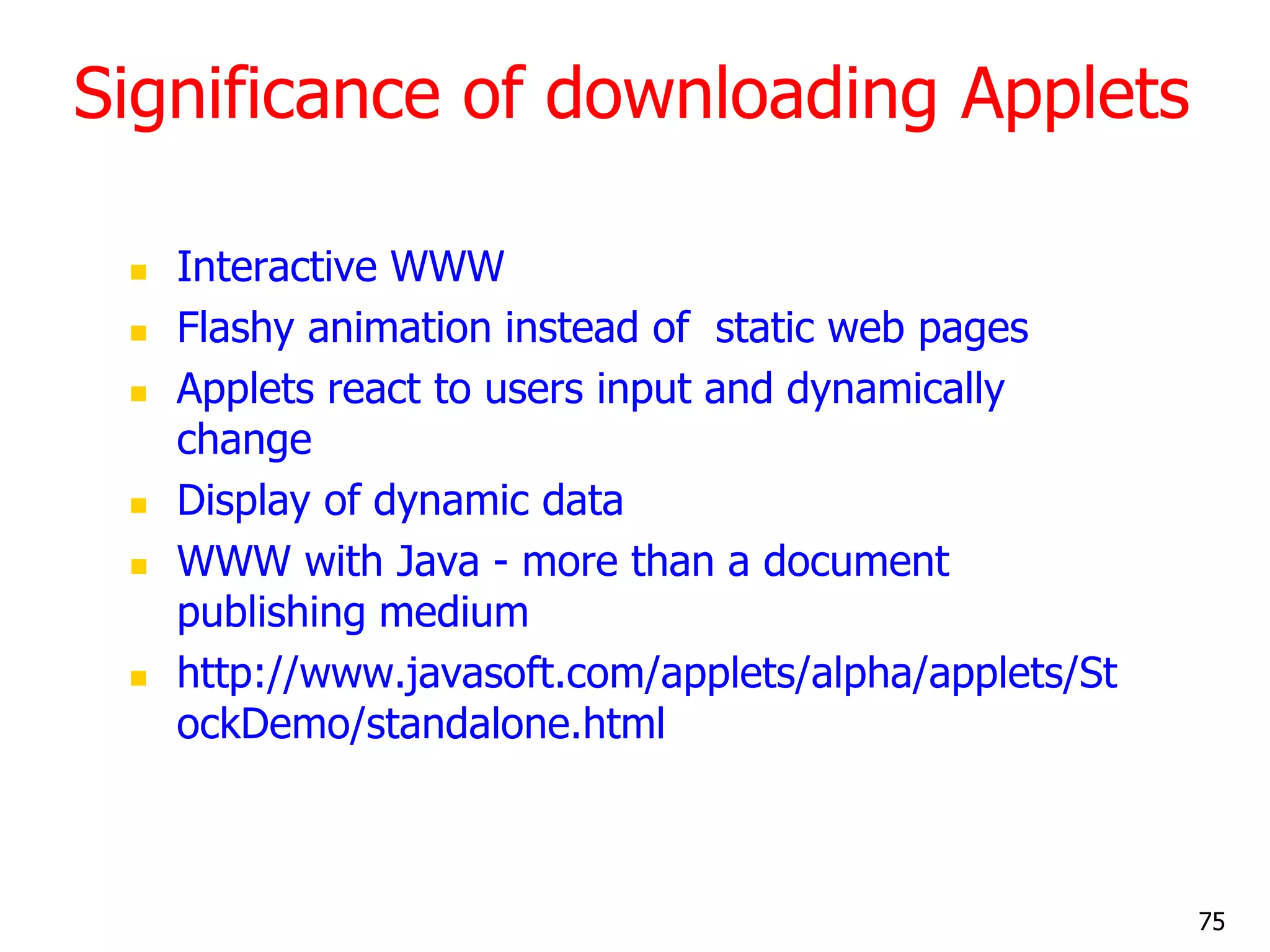


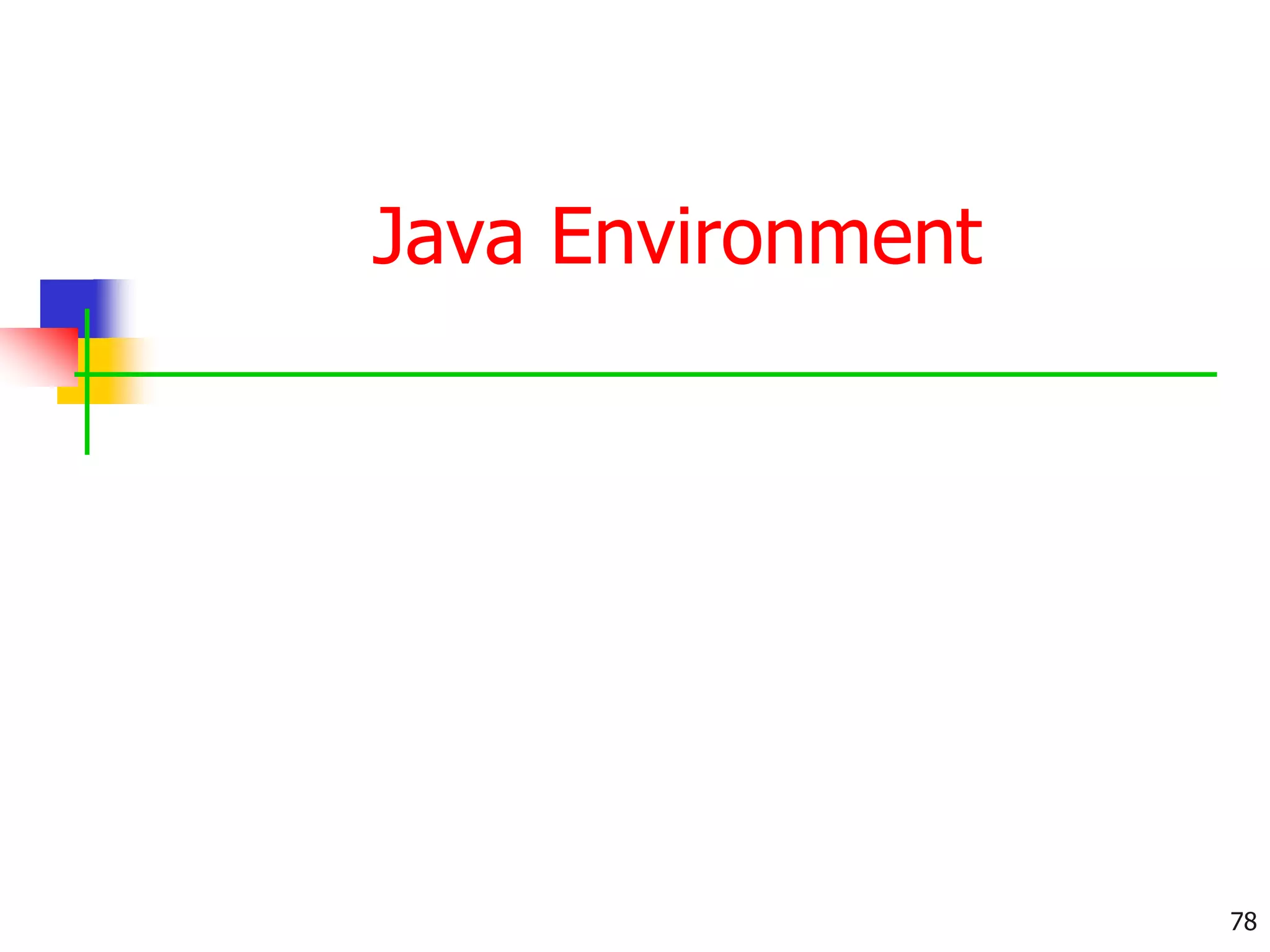
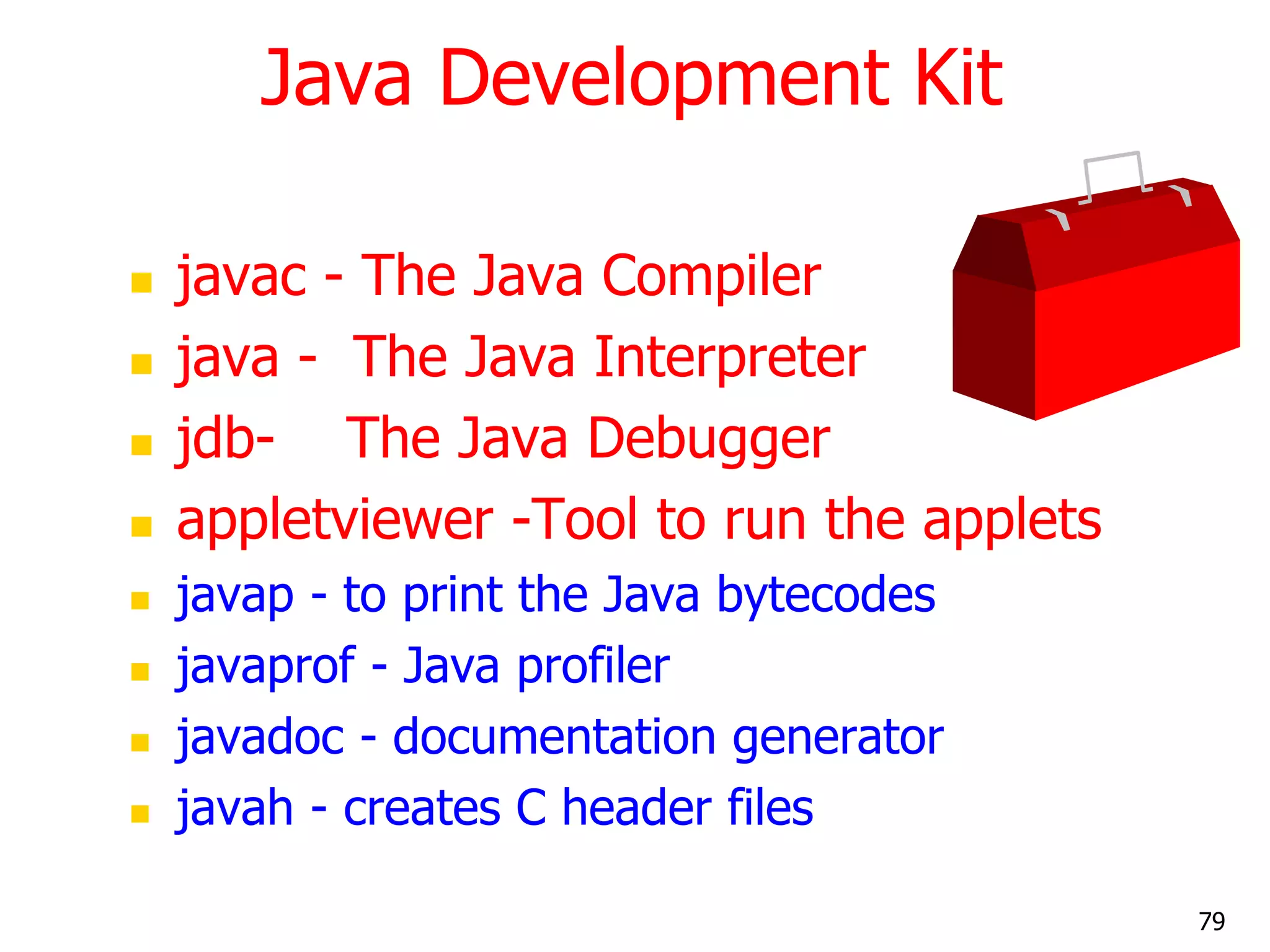
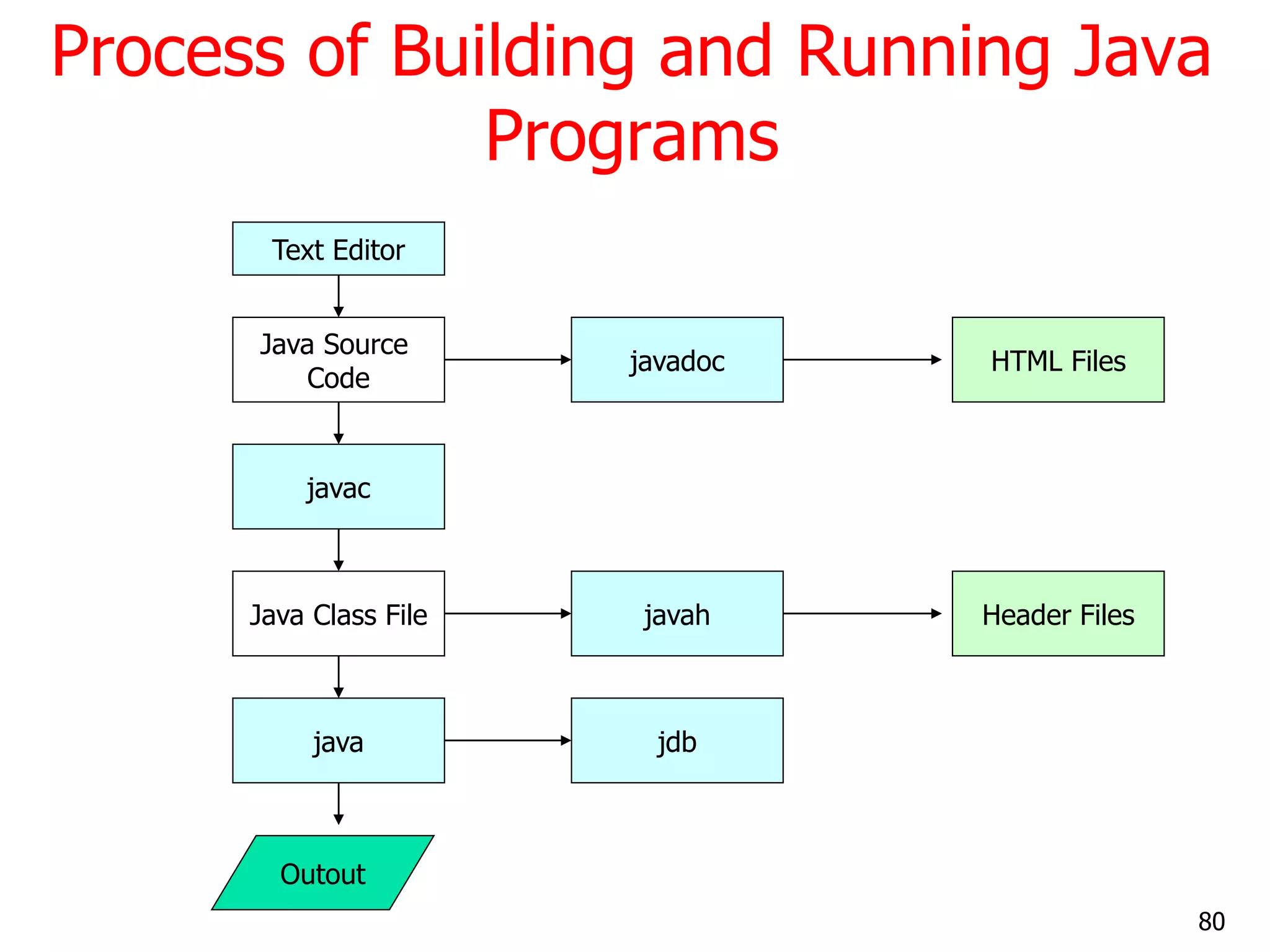

![Hello Internet // hello.java: Hello Internet program class HelloInternet { public static void main(String args[]) { System.out.println(―Hello Internet‖); } } 82](https://image.slidesharecdn.com/corejavacompletenotes-121028072655-phpapp01/75/Core-java-complete-notes-Contact-at-91-814-614-5674-82-2048.jpg)
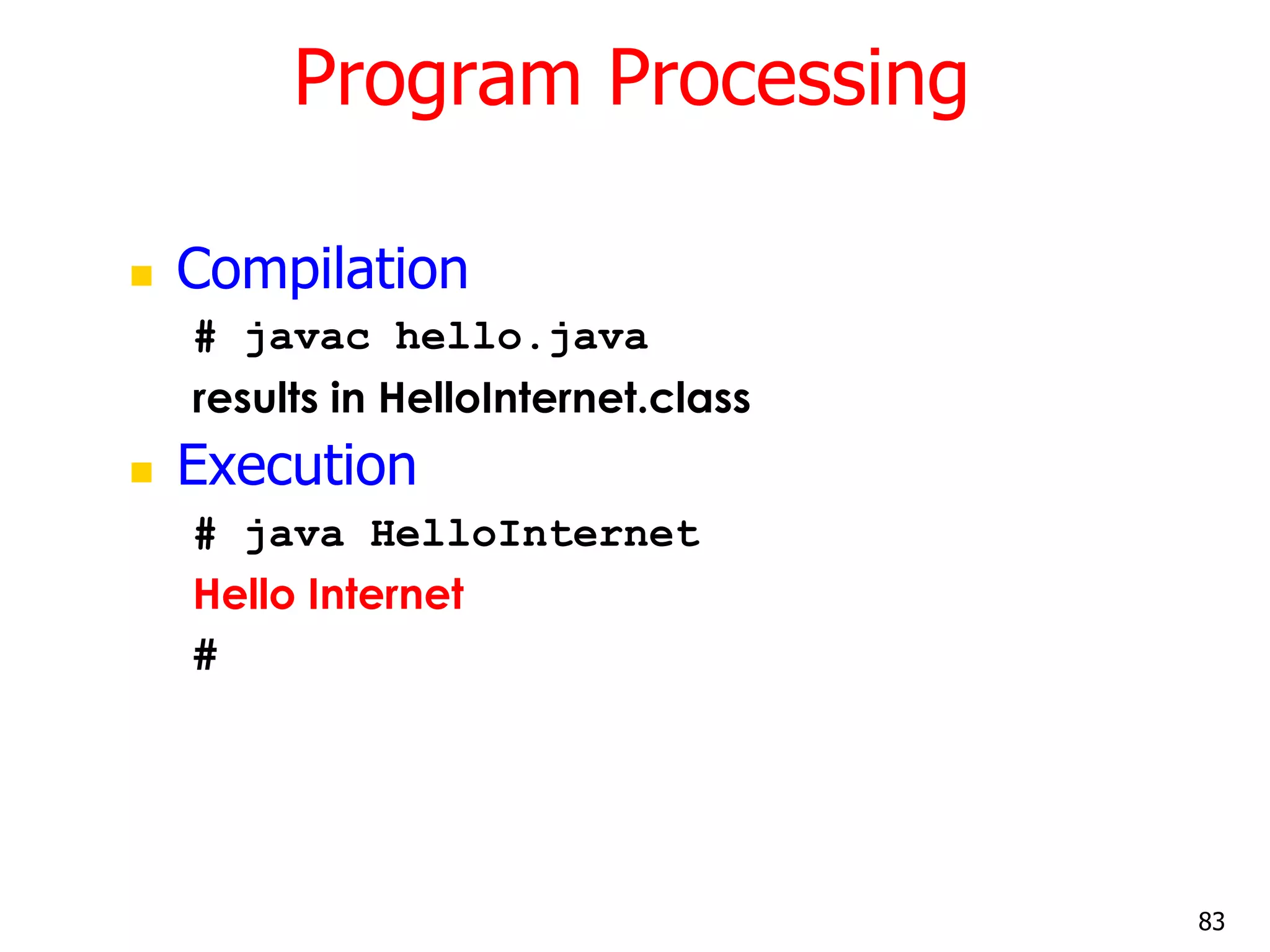
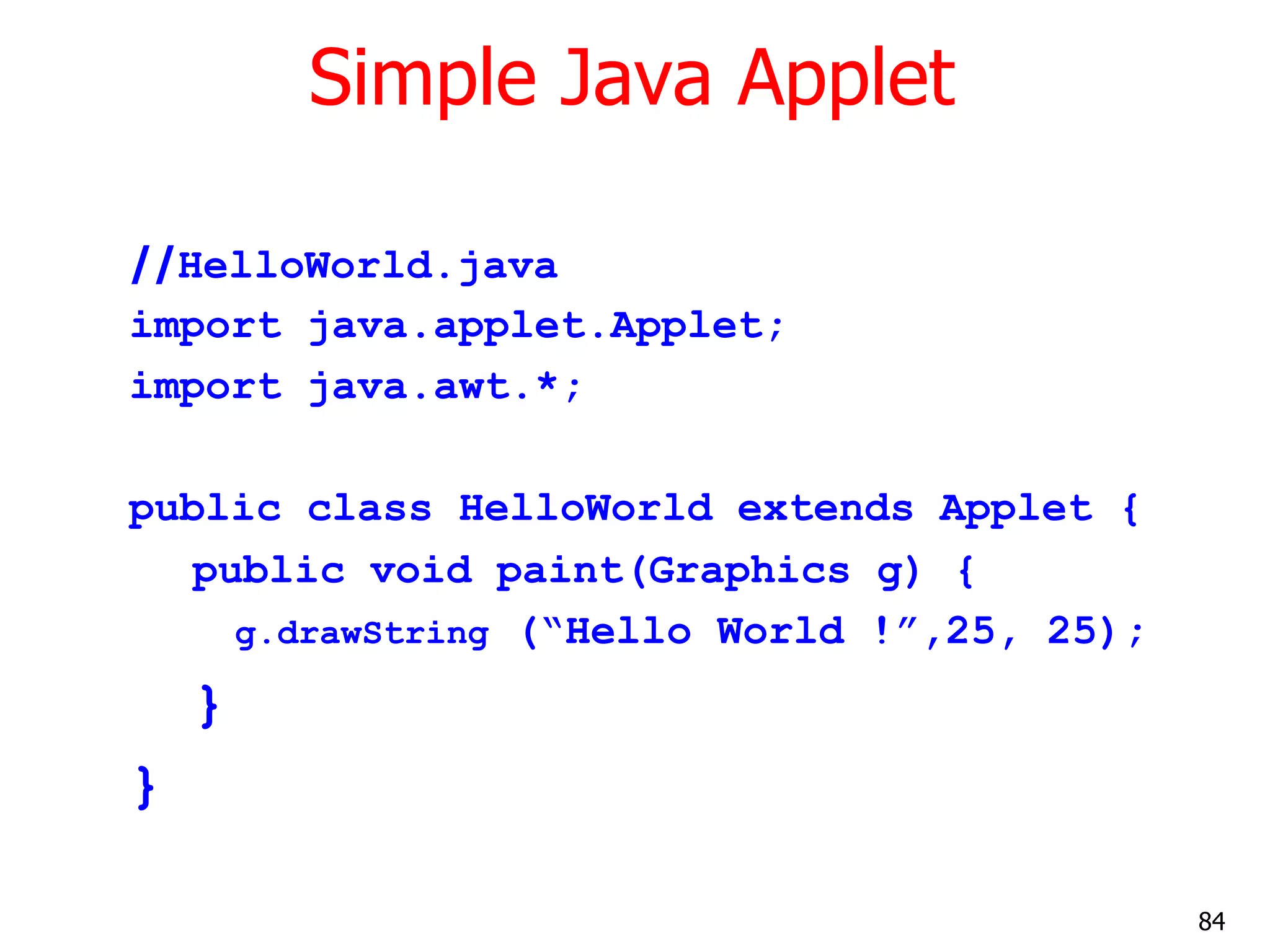
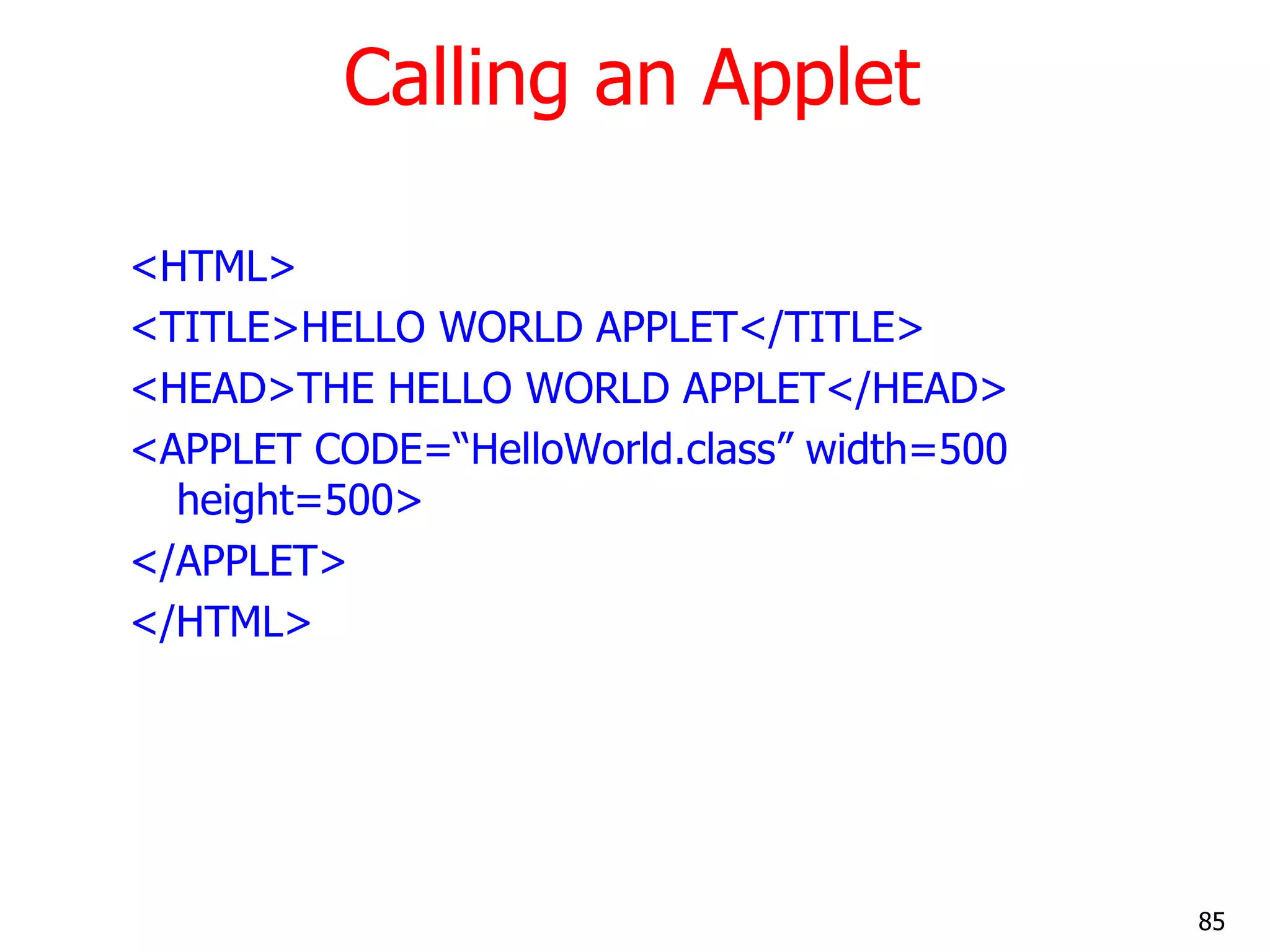

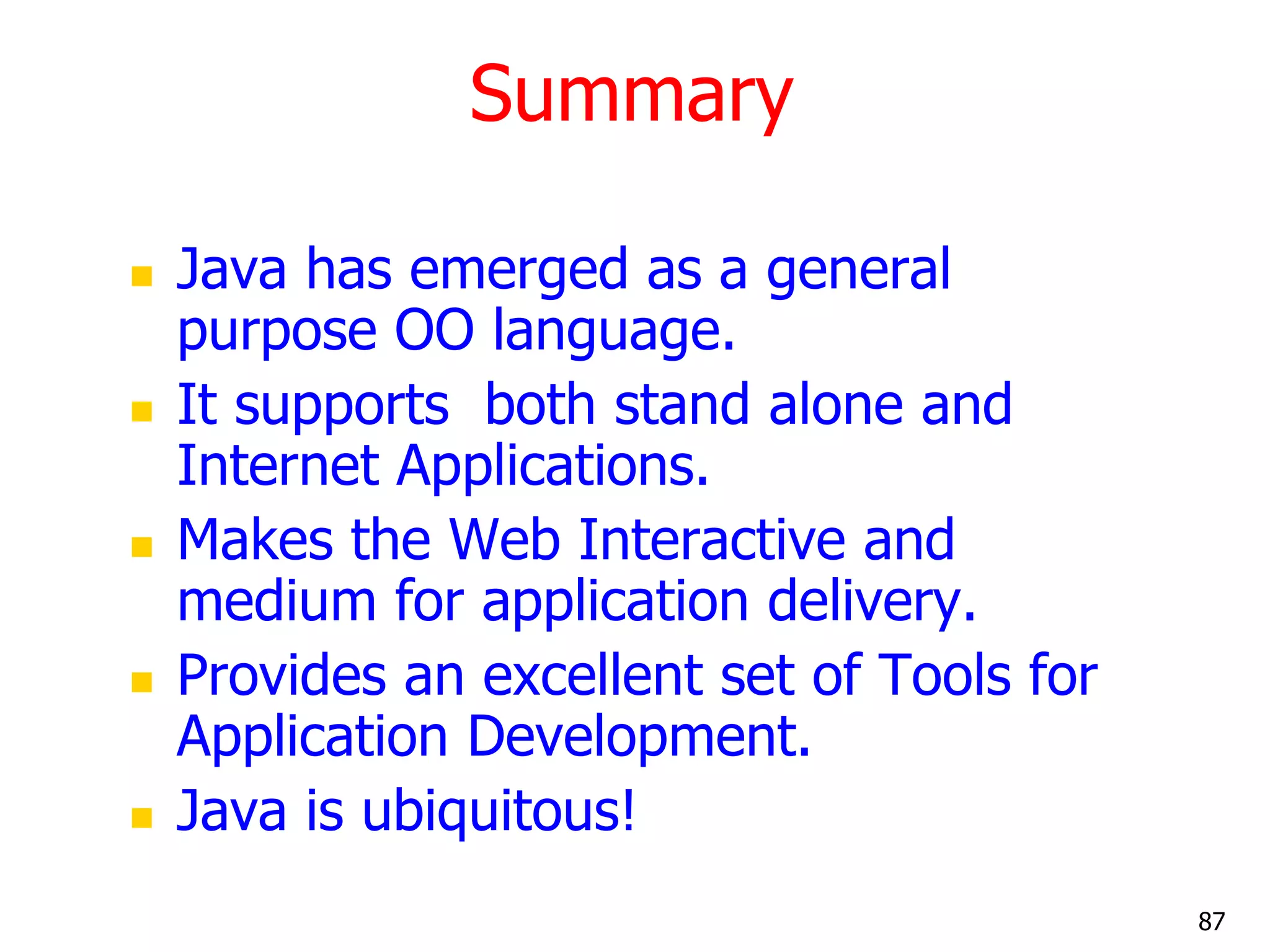

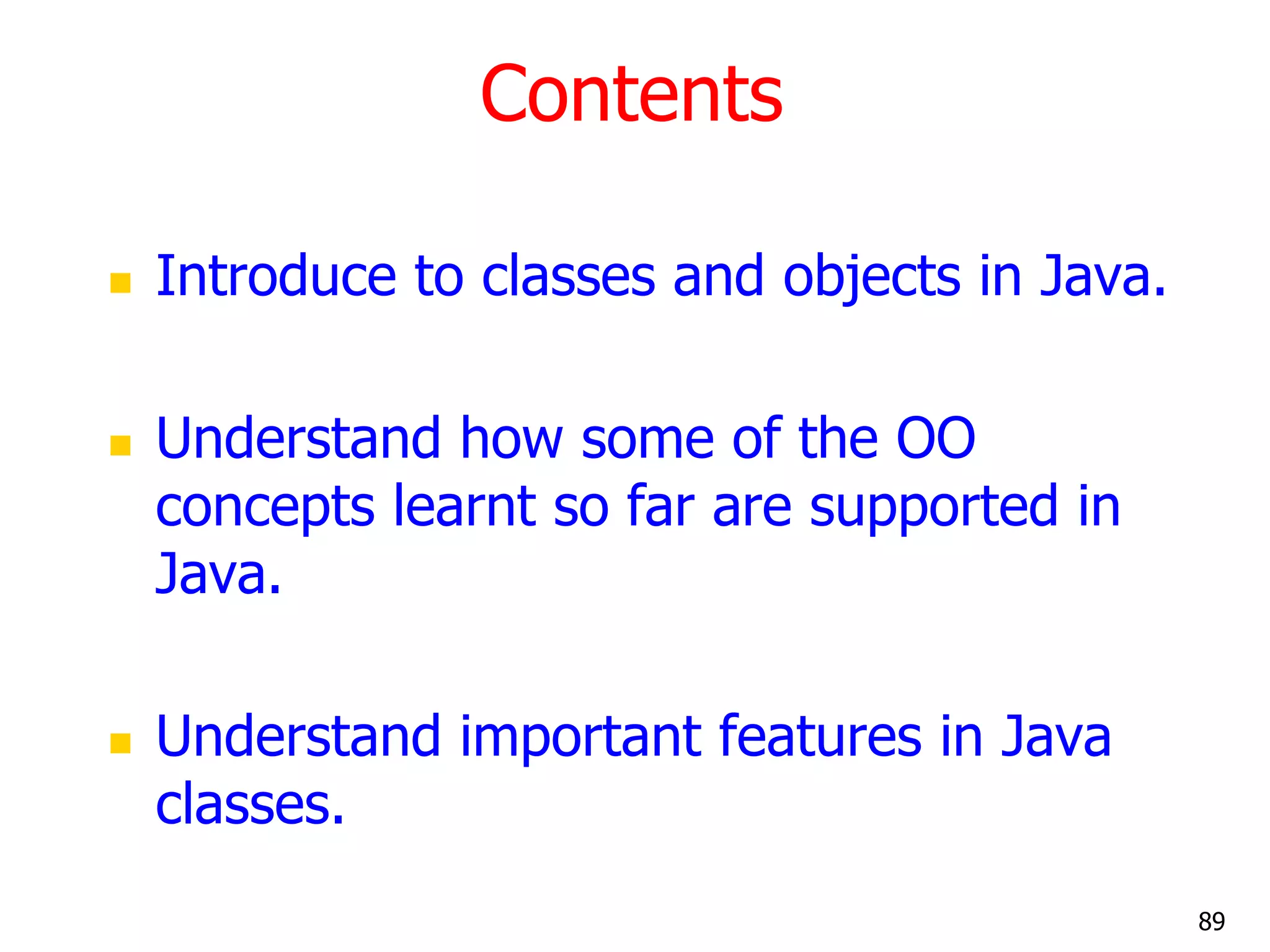
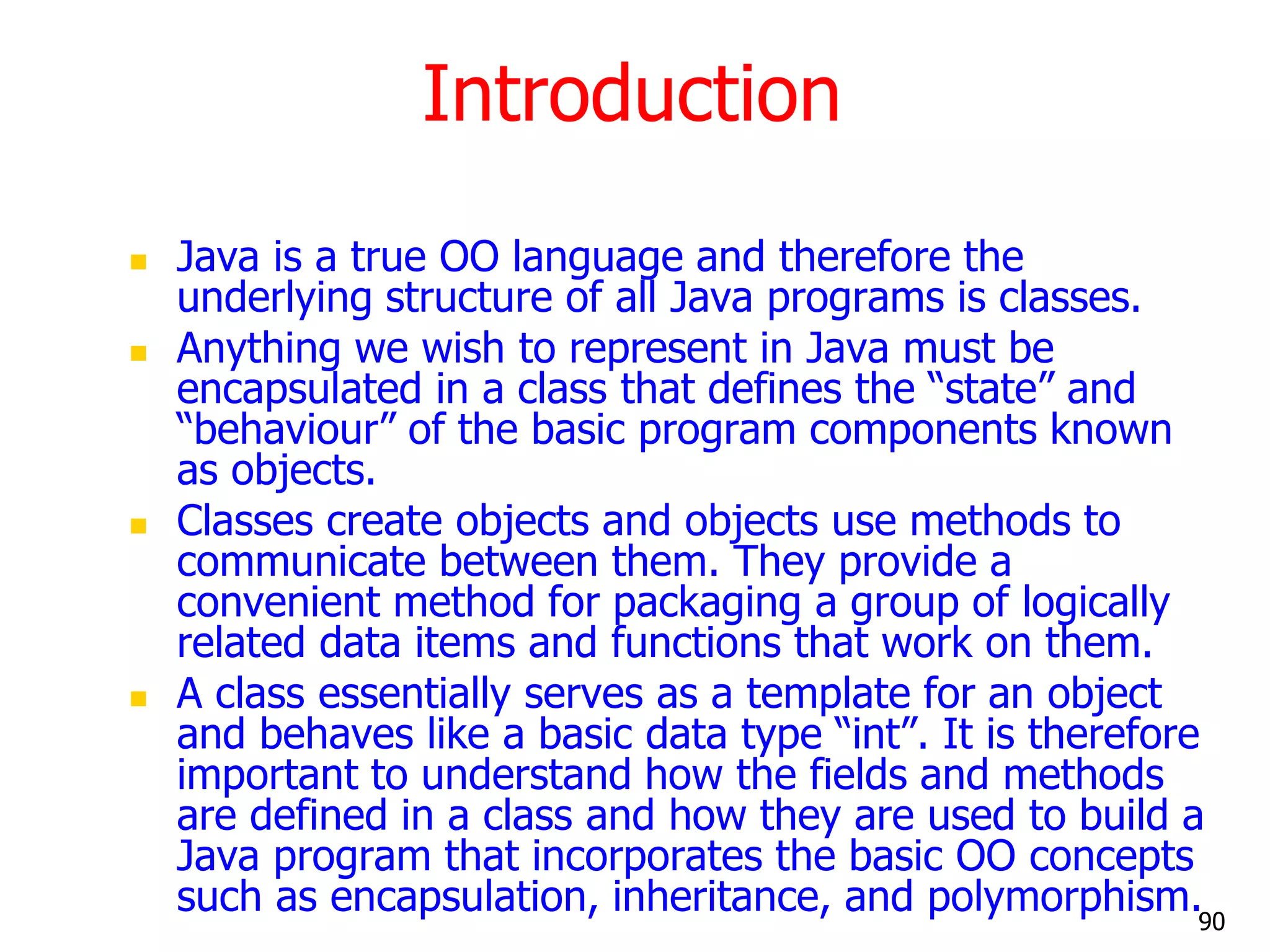
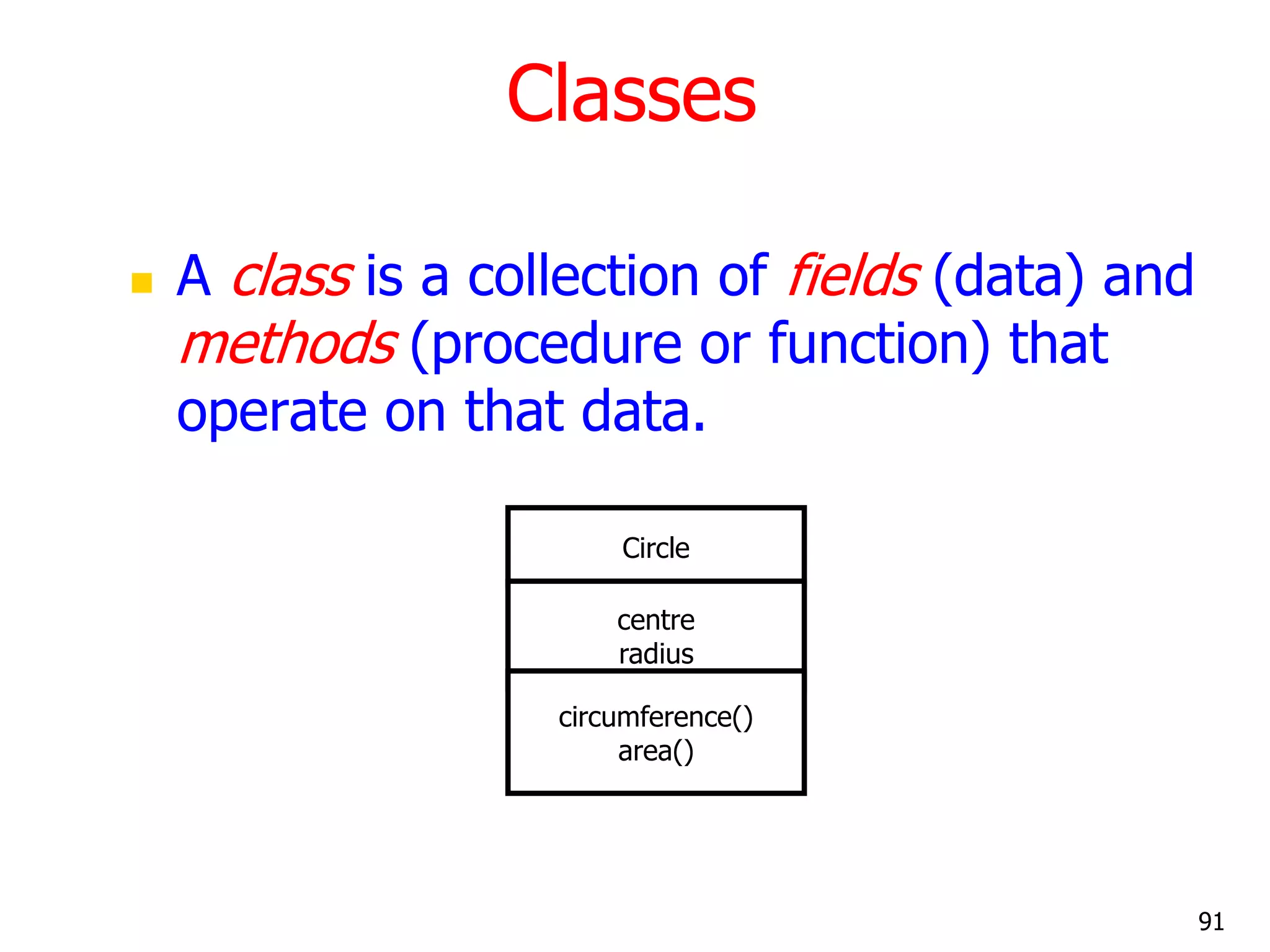
![Classes A class is a collection of fields (data) and methods (procedure or function) that operate on that data. The basic syntax for a class definition: Bare bone class – no fields, no methods public class Circle { // my circle class } class ClassName [extends SuperClassName] { [fields declaration] [methods declaration] } 92](https://image.slidesharecdn.com/corejavacompletenotes-121028072655-phpapp01/75/Core-java-complete-notes-Contact-at-91-814-614-5674-92-2048.jpg)
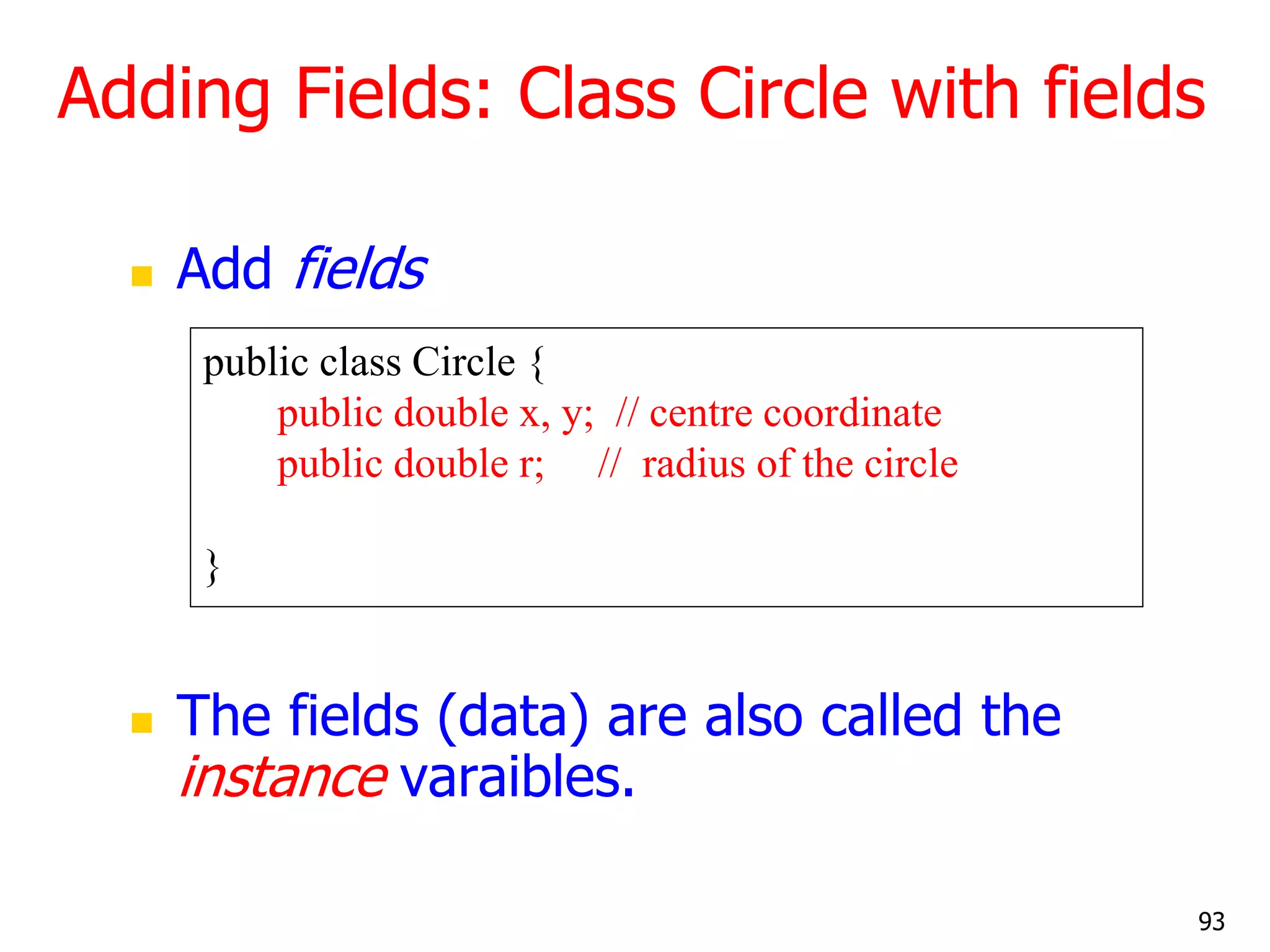
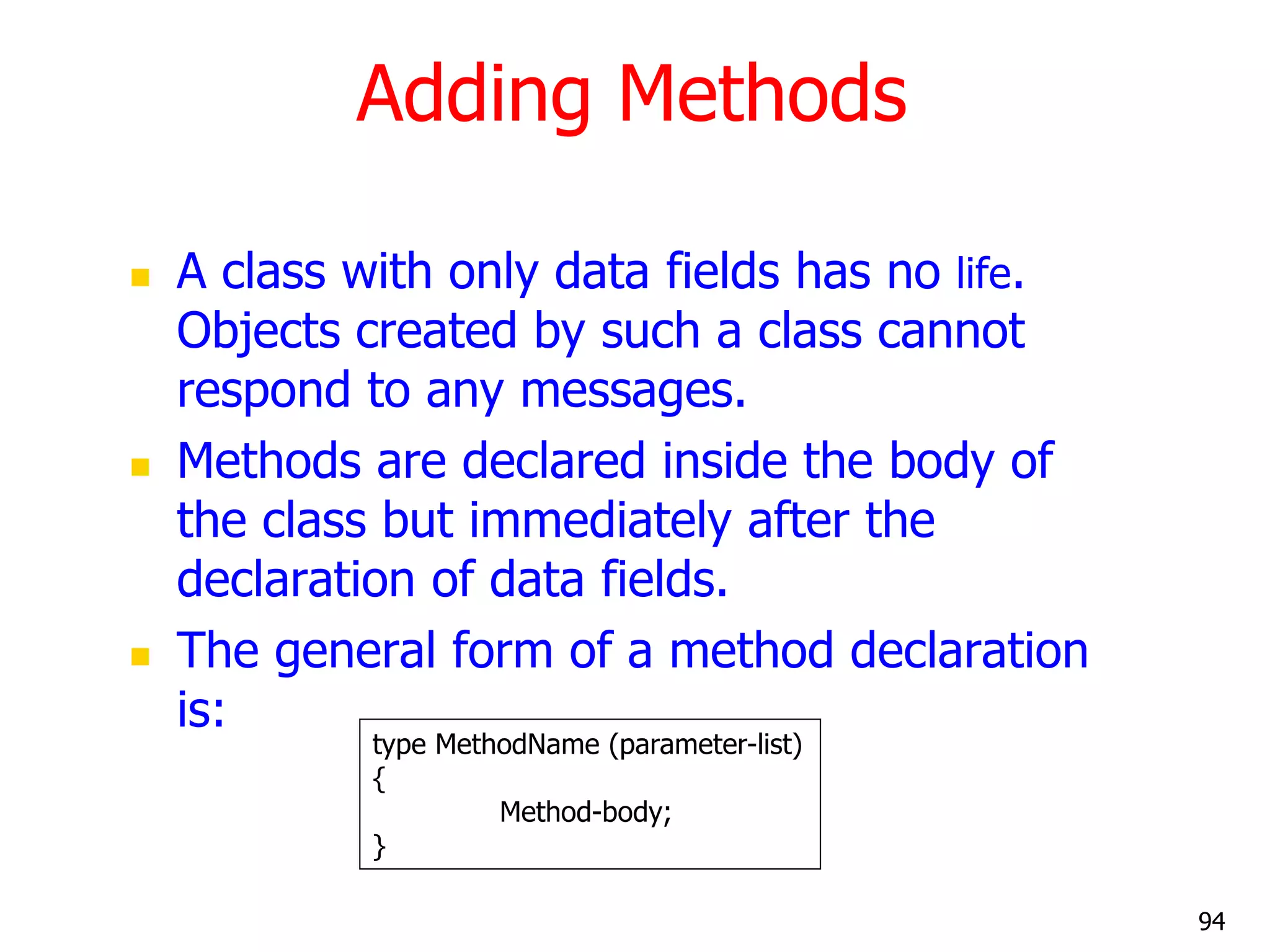
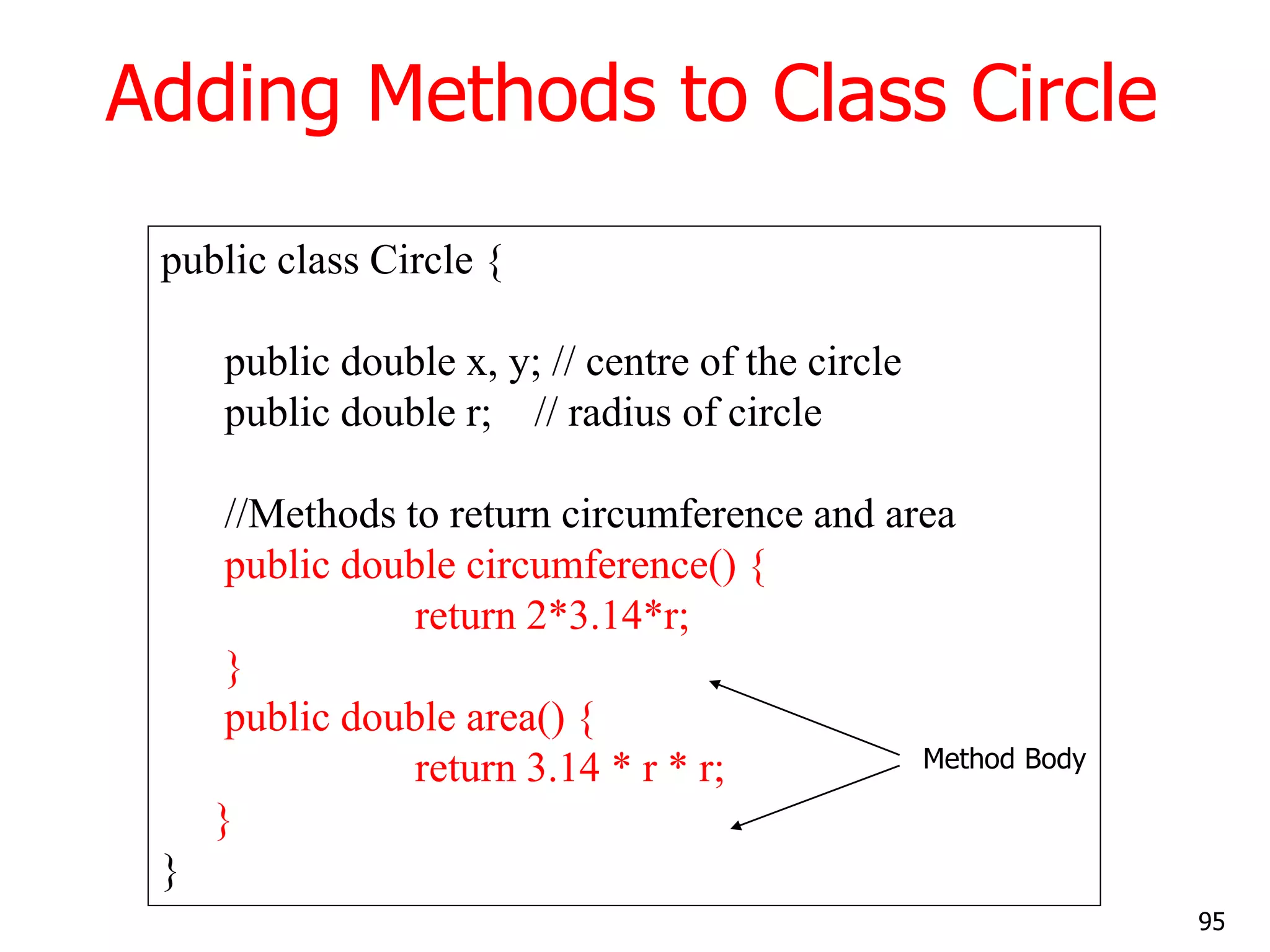
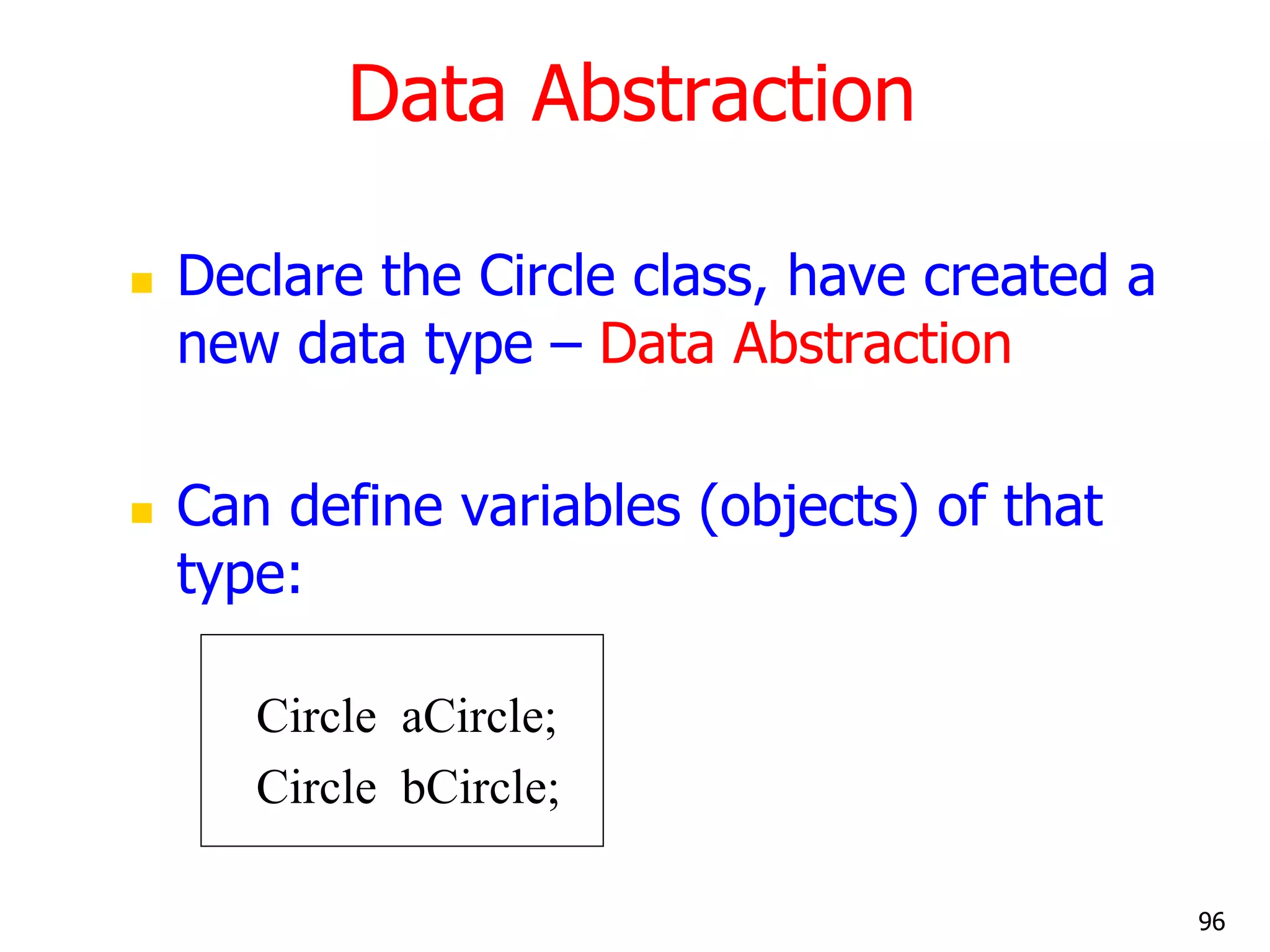
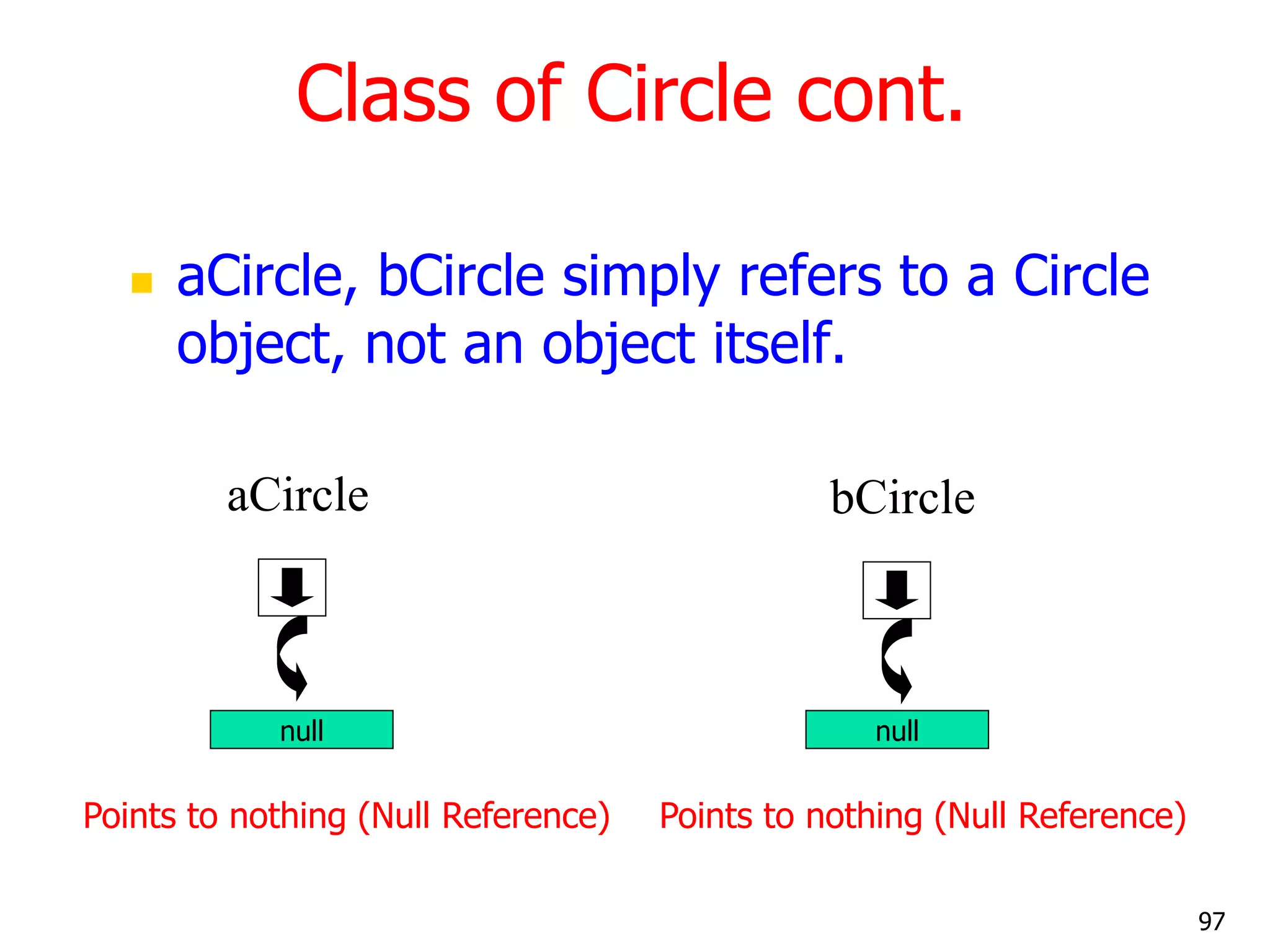
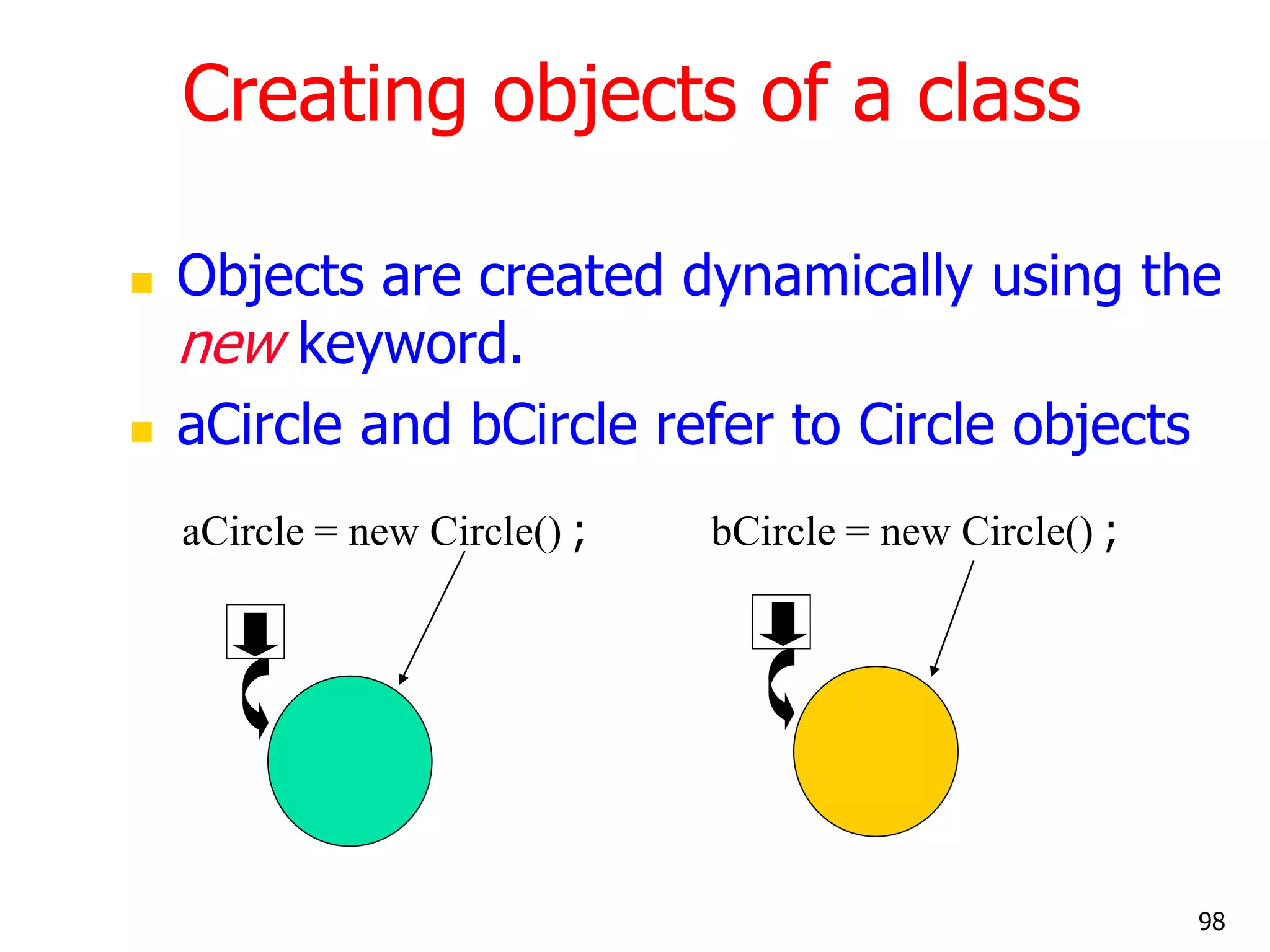

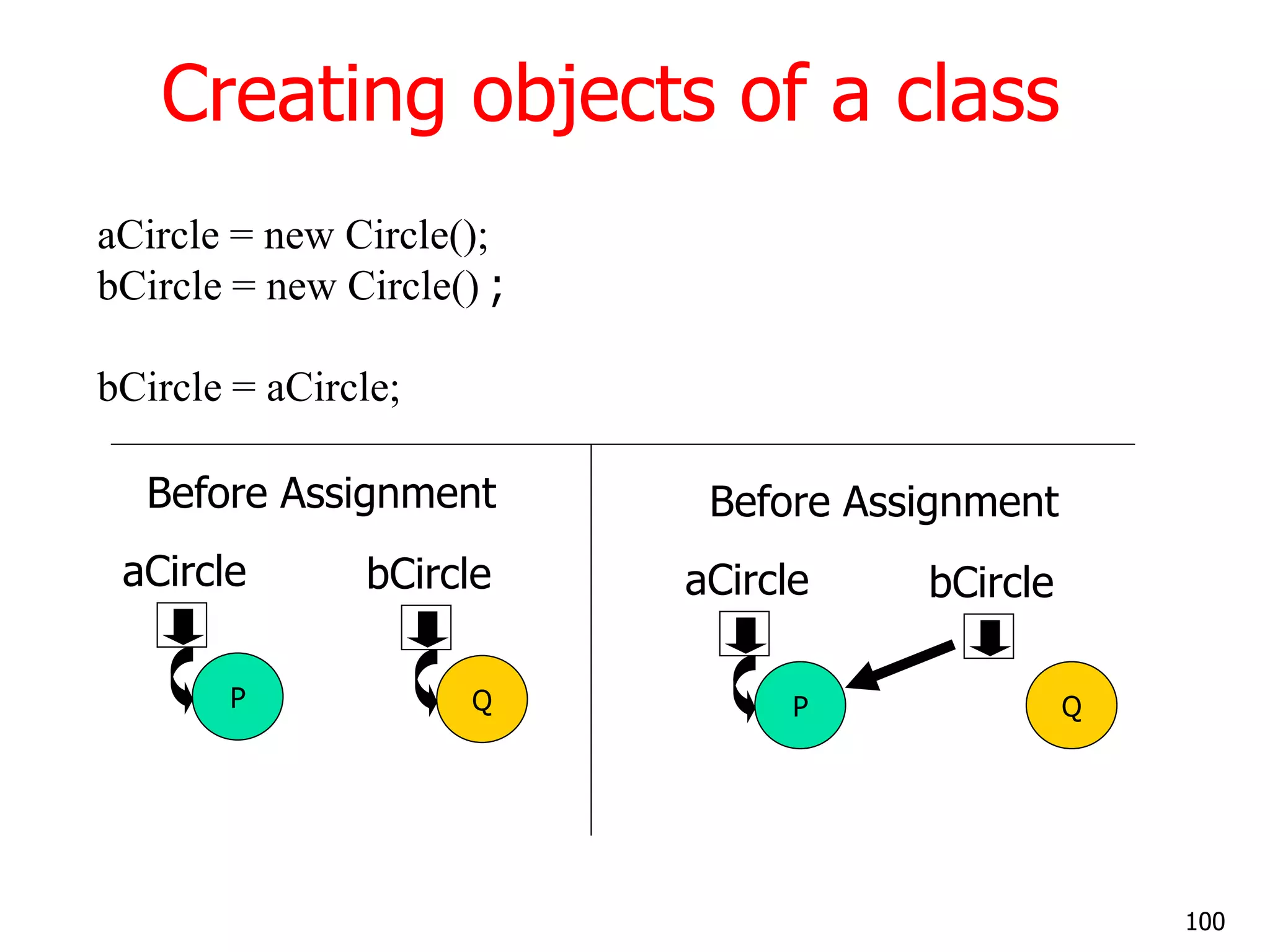

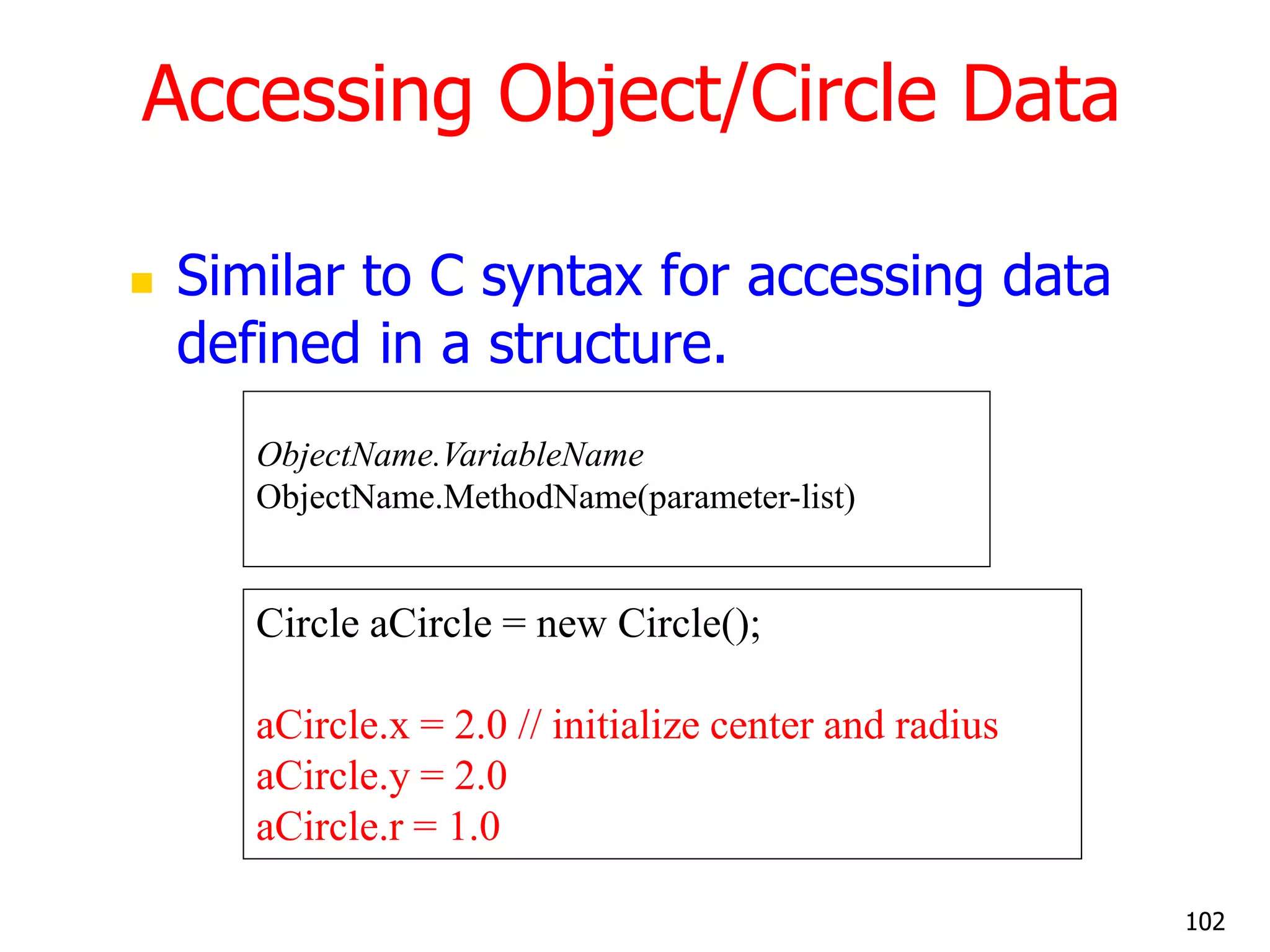

![Using Circle Class // Circle.java: Contains both Circle class and its user class //Add Circle class code here class MyMain { public static void main(String args[]) { Circle aCircle; // creating reference aCircle = new Circle(); // creating object aCircle.x = 10; // assigning value to data field aCircle.y = 20; aCircle.r = 5; double area = aCircle.area(); // invoking method double circumf = aCircle.circumference(); System.out.println("Radius="+aCircle.r+" Area="+area); System.out.println("Radius="+aCircle.r+" Circumference ="+circumf); } } [raj@mundroo]%: java MyMain Radius=5.0 Area=78.5 Radius=5.0 Circumference =31.400000000000002 104](https://image.slidesharecdn.com/corejavacompletenotes-121028072655-phpapp01/75/Core-java-complete-notes-Contact-at-91-814-614-5674-104-2048.jpg)
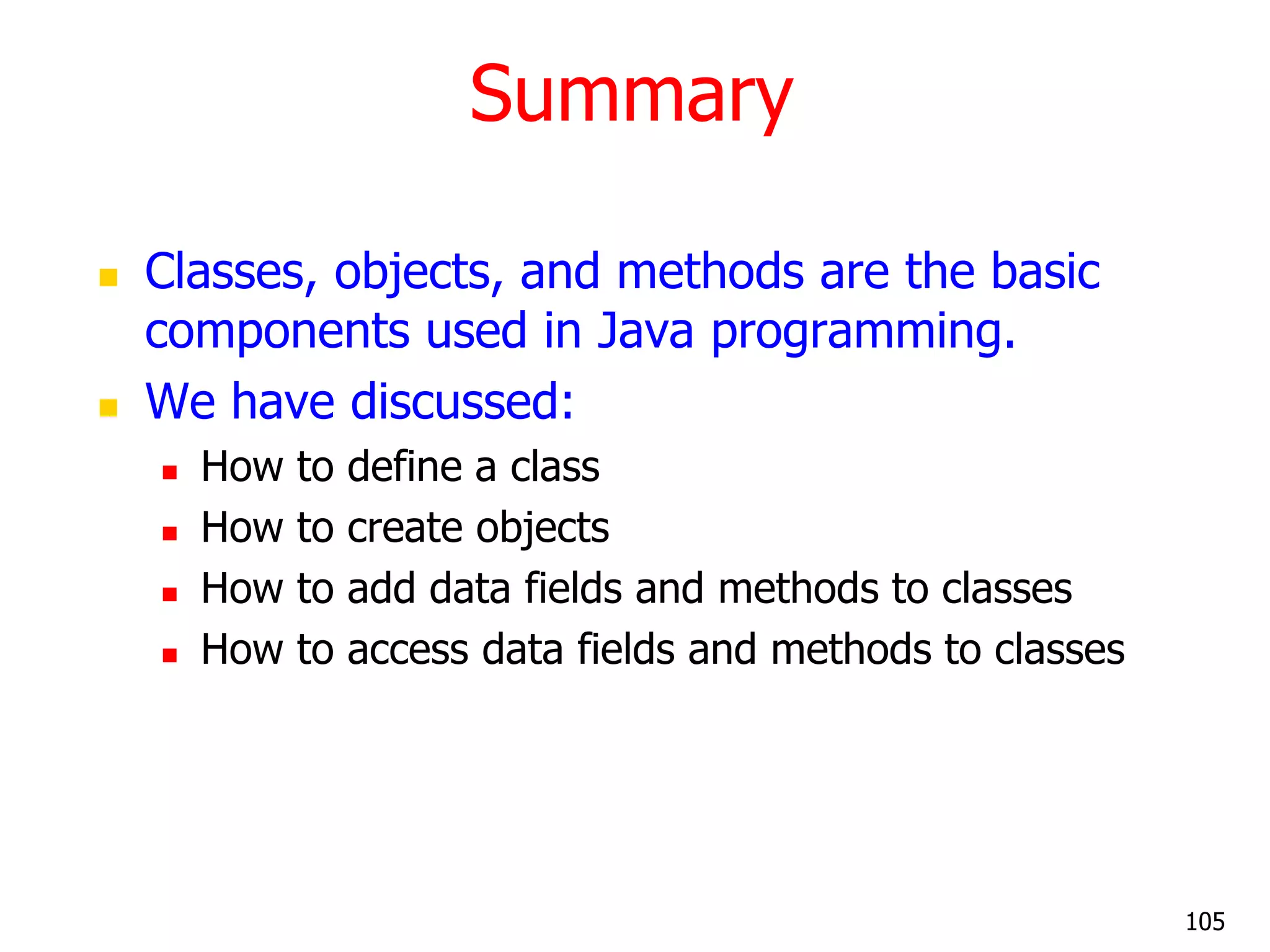
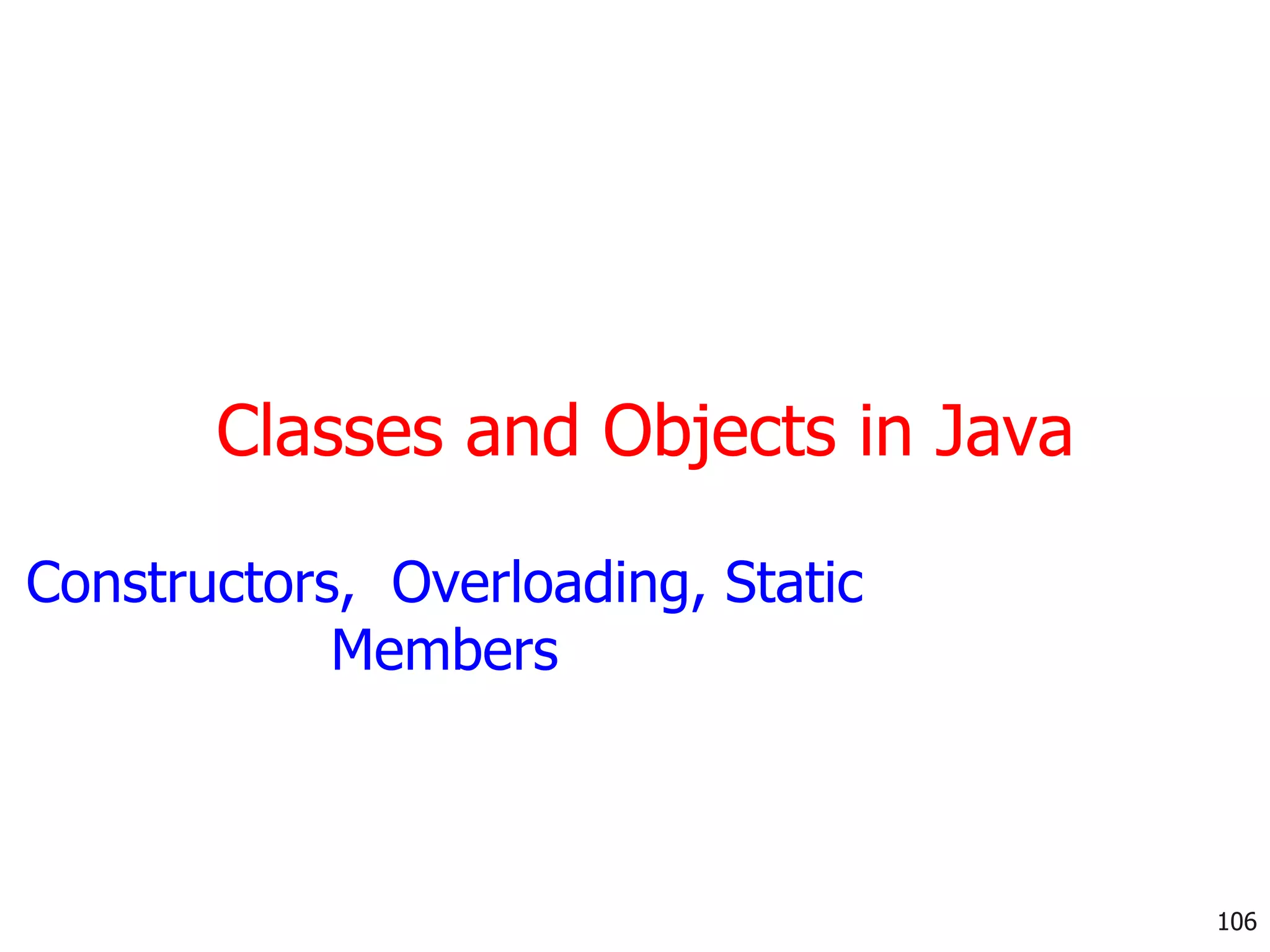
![Refer to the Earlier Circle Program // Circle.java: Contains both Circle class and its user class //Add Circle class code here class MyMain { public static void main(String args[]) { Circle aCircle; // creating reference aCircle = new Circle(); // creating object aCircle.x = 10; // assigning value to data field aCircle.y = 20; aCircle.r = 5; double area = aCircle.area(); // invoking method double circumf = aCircle.circumference(); System.out.println("Radius="+aCircle.r+" Area="+area); System.out.println("Radius="+aCircle.r+" Circumference ="+circumf); } } [raj@mundroo]%: java MyMain Radius=5.0 Area=78.5 Radius=5.0 Circumference =31.400000000000002 107](https://image.slidesharecdn.com/corejavacompletenotes-121028072655-phpapp01/75/Core-java-complete-notes-Contact-at-91-814-614-5674-107-2048.jpg)

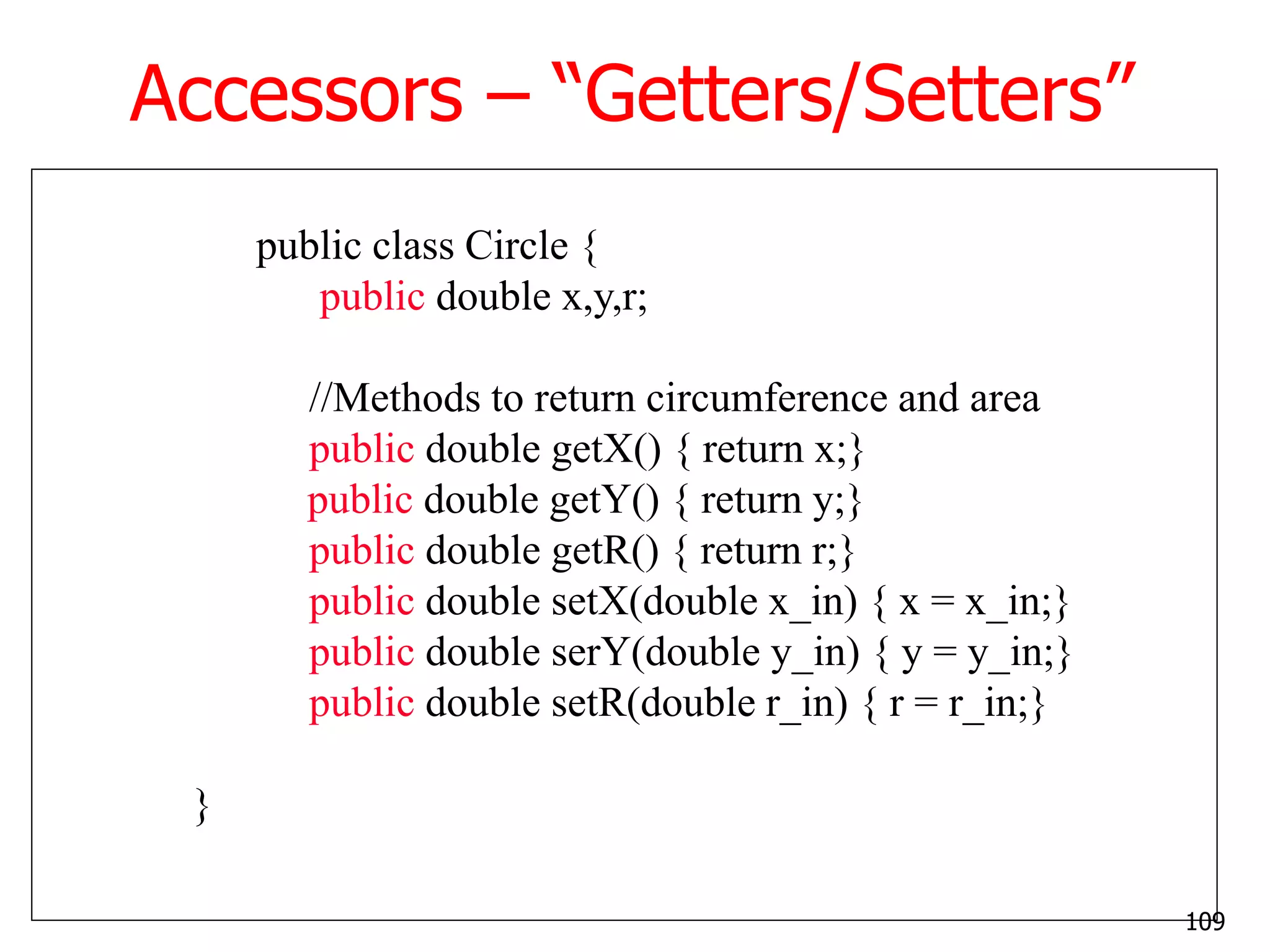
![How does this code looks ? More readable ? // Circle.java: Contains both Circle class and its user class //Add Circle class code here class MyMain { public static void main(String args[]) { Circle aCircle; // creating reference aCircle = new Circle(); // creating object aCircle.setX(10); aCircle.setY(20); aCircle.setR(5); double area = aCircle.area(); // invoking method double circumf = aCircle.circumference(); System.out.println("Radius="+aCircle.getR()+" Area="+area); System.out.println("Radius="+aCircle.getR()+" Circumference ="+circumf); } } [raj@mundroo]%: java MyMain Radius=5.0 Area=78.5 Radius=5.0 Circumference =31.400000000000002 110](https://image.slidesharecdn.com/corejavacompletenotes-121028072655-phpapp01/75/Core-java-complete-notes-Contact-at-91-814-614-5674-110-2048.jpg)
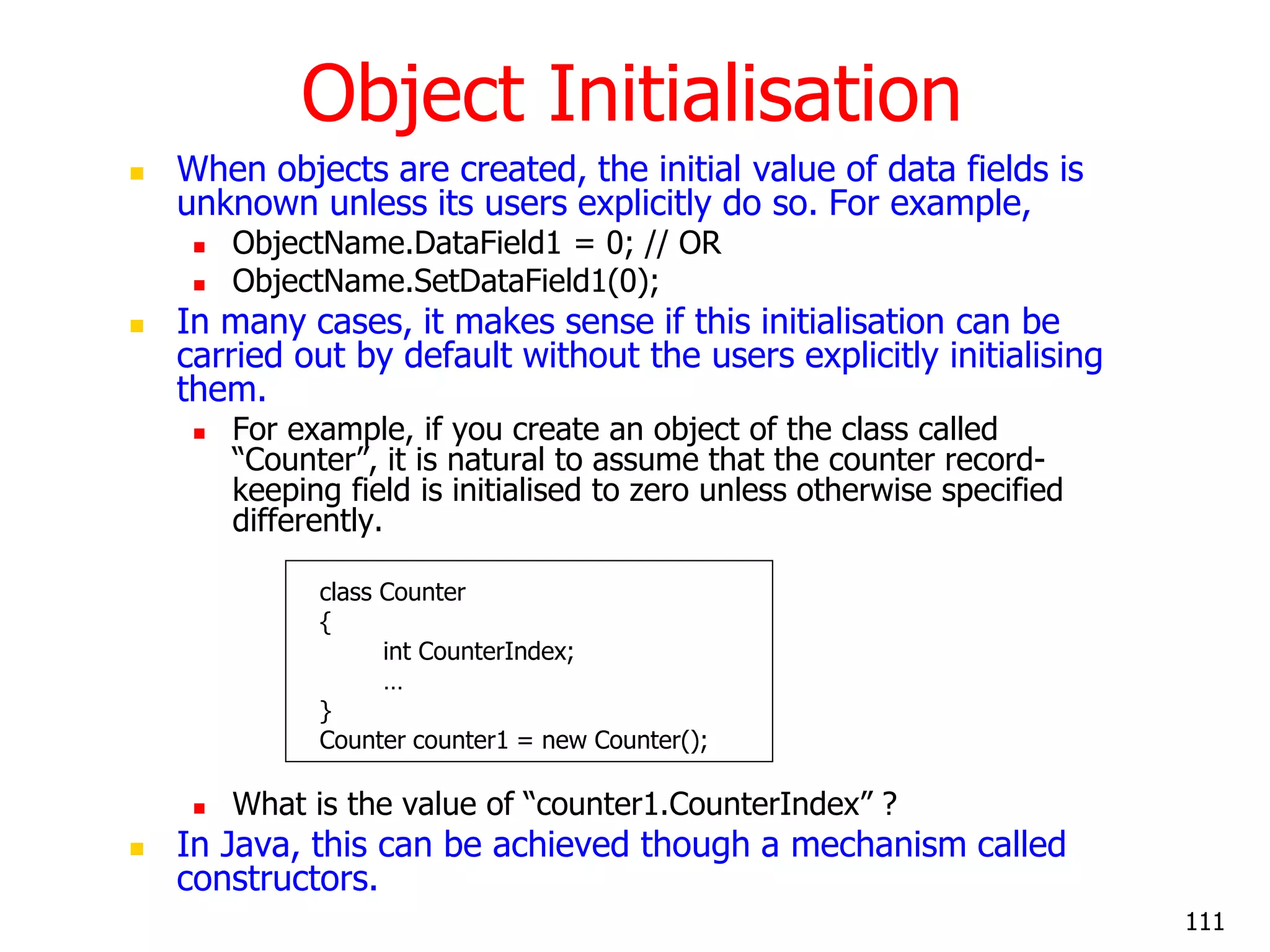

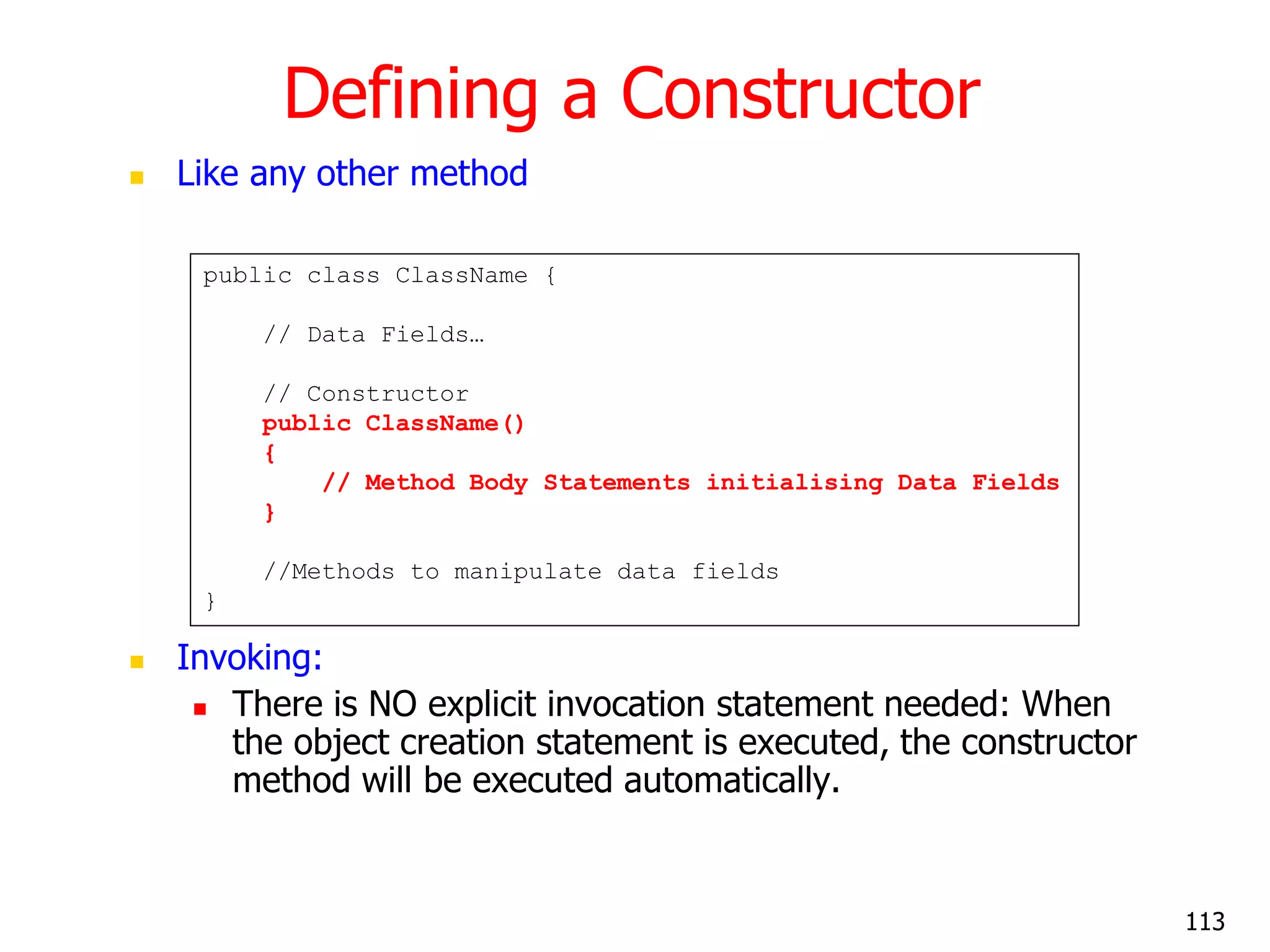
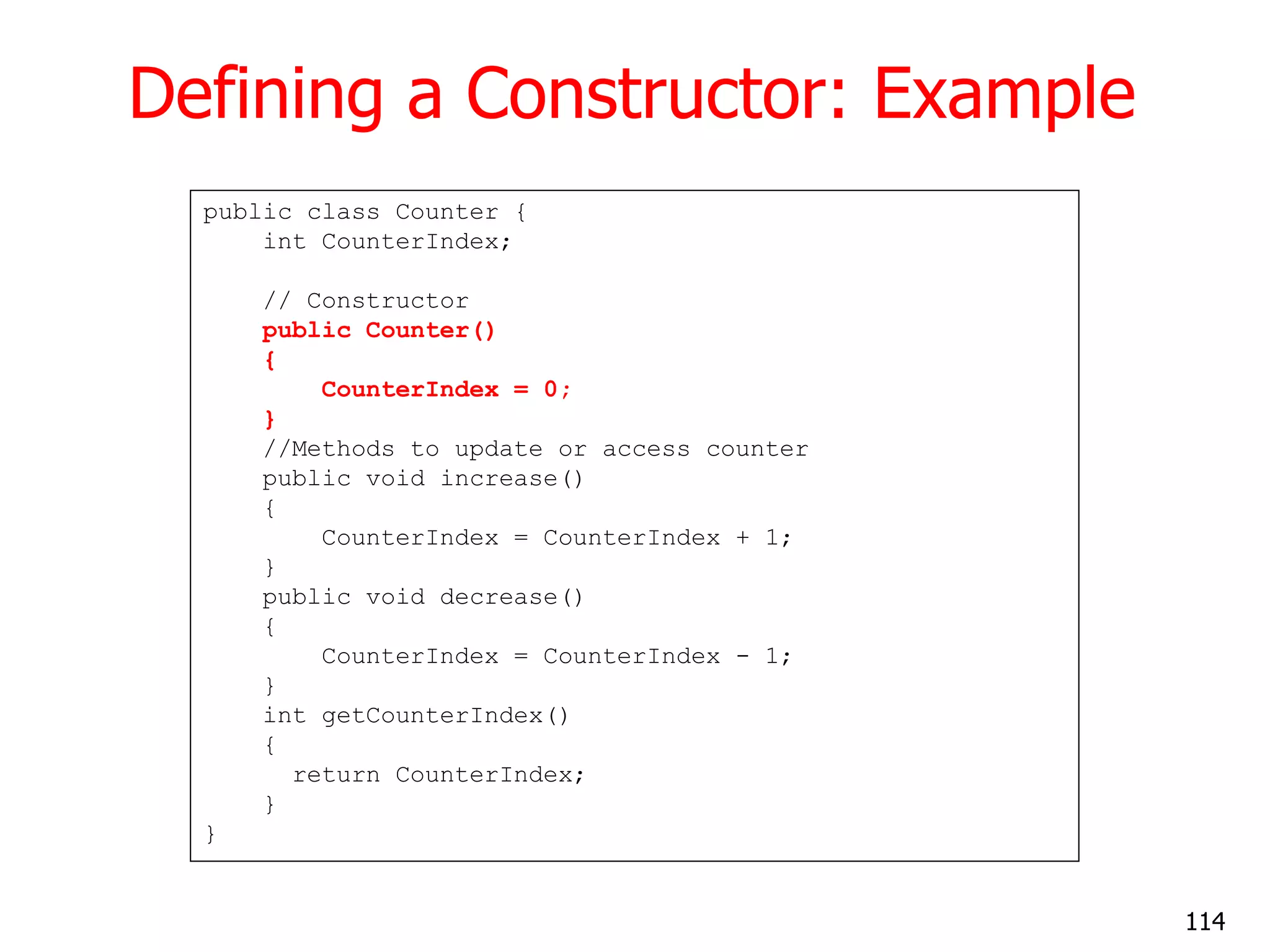
![Trace counter value at each statement and What is the output ? class MyClass { public static void main(String args[]) { Counter counter1 = new Counter(); counter1.increase(); int a = counter1.getCounterIndex(); counter1.increase(); int b = counter1.getCounterIndex(); if ( a > b ) counter1.increase(); else counter1.decrease(); System.out.println(counter1.getCounterIndex()); } } 115](https://image.slidesharecdn.com/corejavacompletenotes-121028072655-phpapp01/75/Core-java-complete-notes-Contact-at-91-814-614-5674-115-2048.jpg)
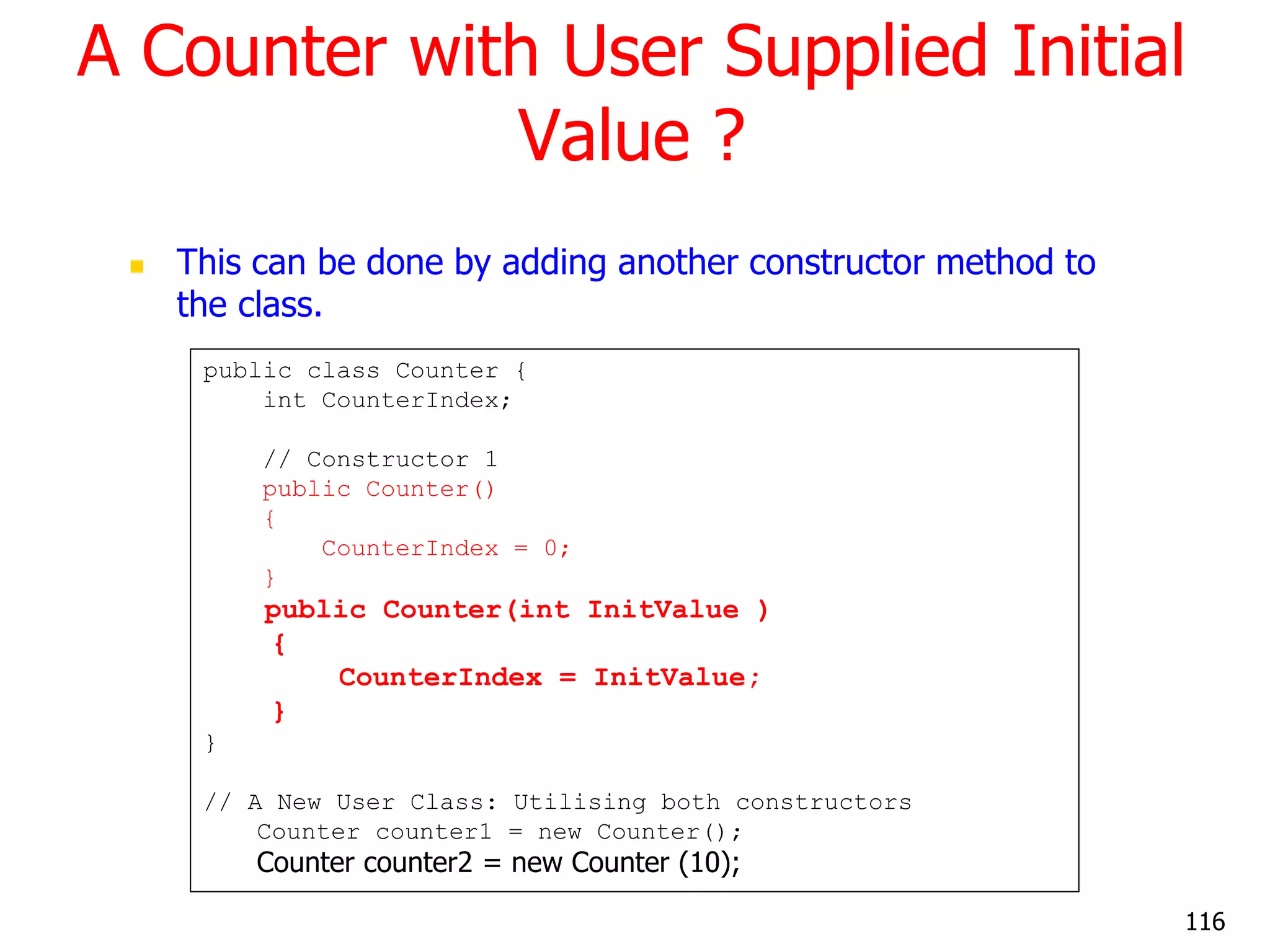


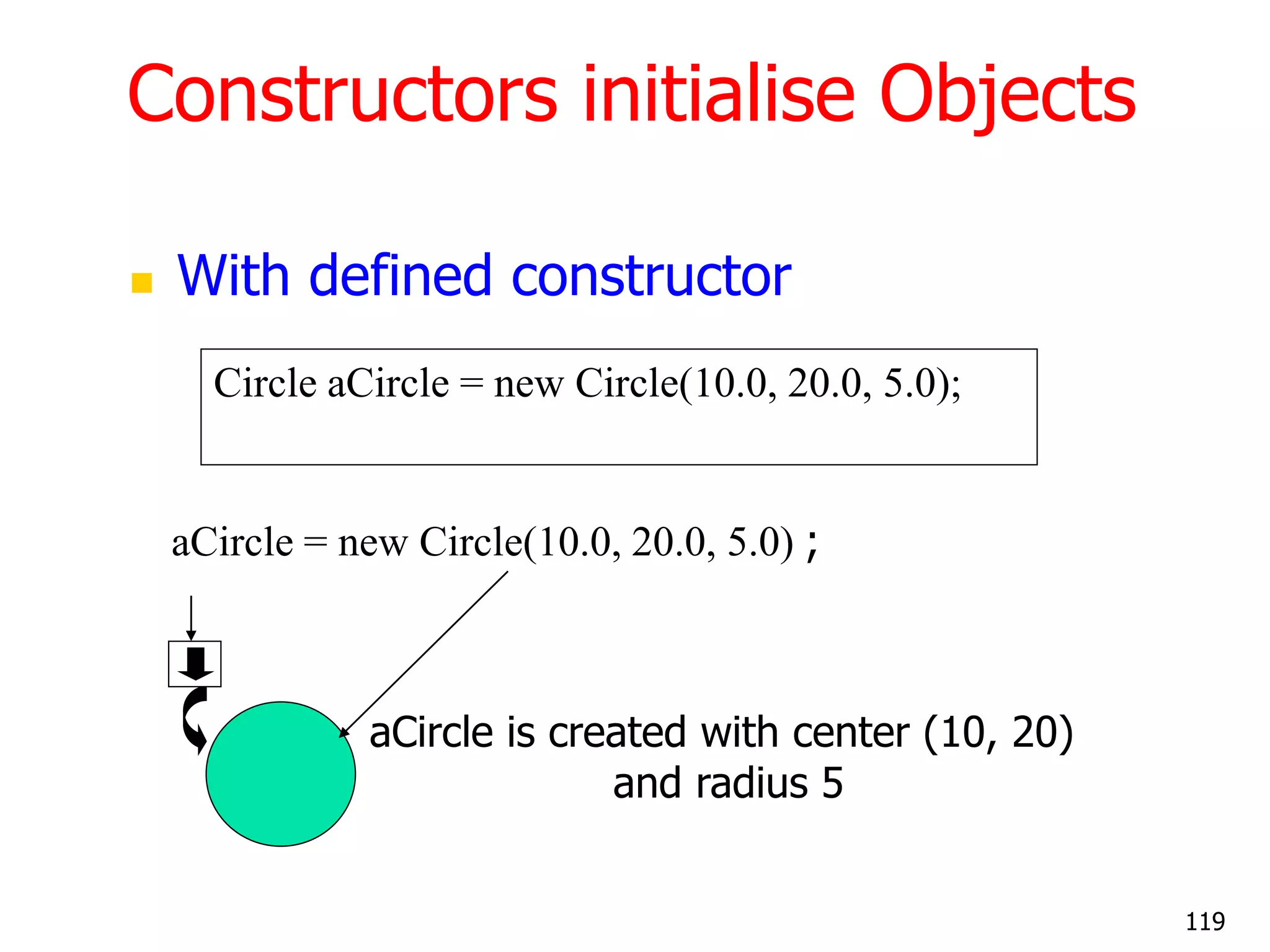


![Initializing with constructors public class TestCircles { public static void main(String args[]){ Circle circleA = new Circle( 10.0, 12.0, 20.0); Circle circleB = new Circle(10.0); Circle circleC = new Circle(); } } circleA = new Circle(10, 12, 20) circleB = new Circle(10) Centre = (0,0) Radius=10 circleC = new Circle() Centre = (0,0) Radius = 1 Centre = (10,12) Radius = 20 122](https://image.slidesharecdn.com/corejavacompletenotes-121028072655-phpapp01/75/Core-java-complete-notes-Contact-at-91-814-614-5674-122-2048.jpg)
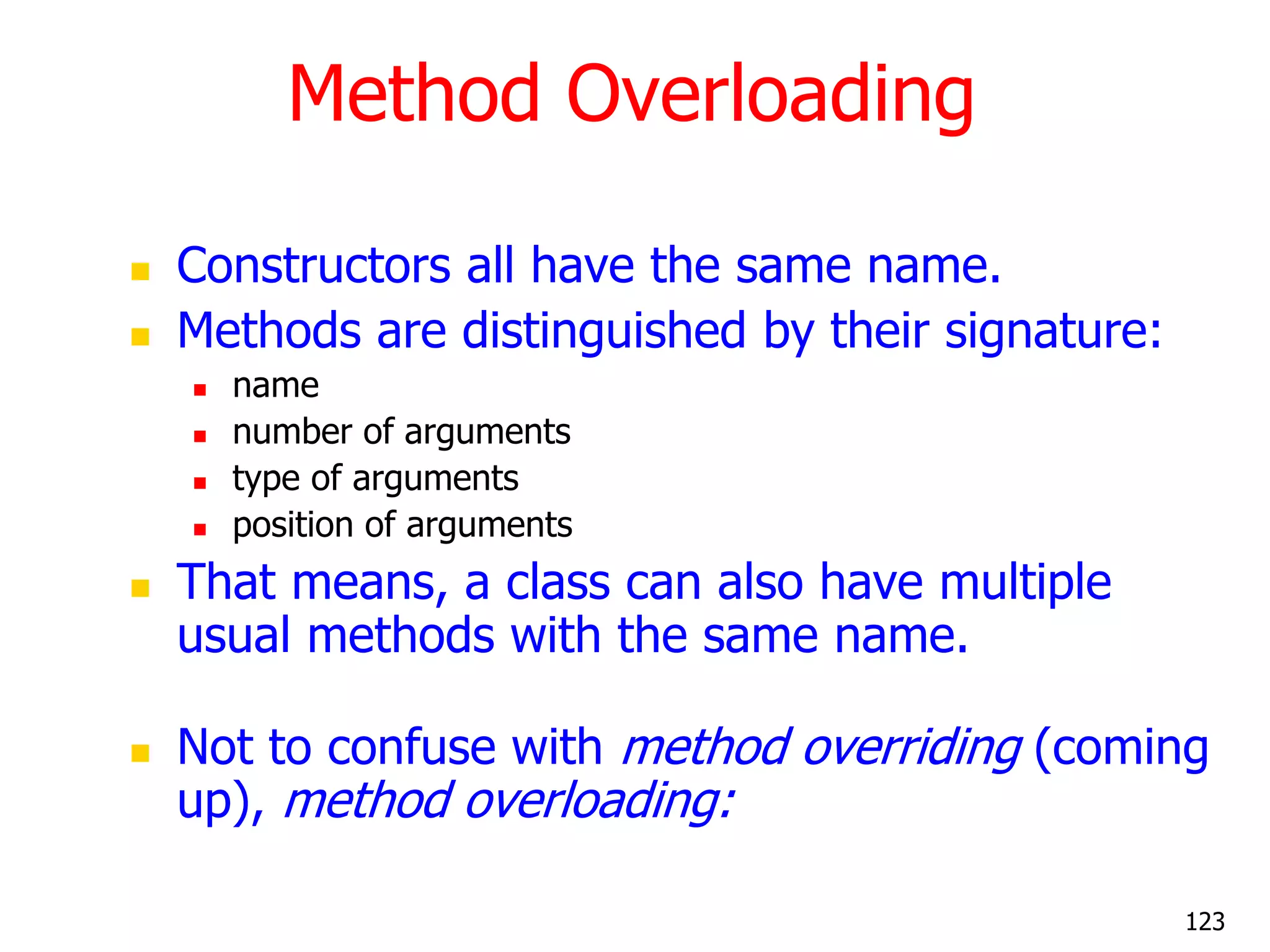

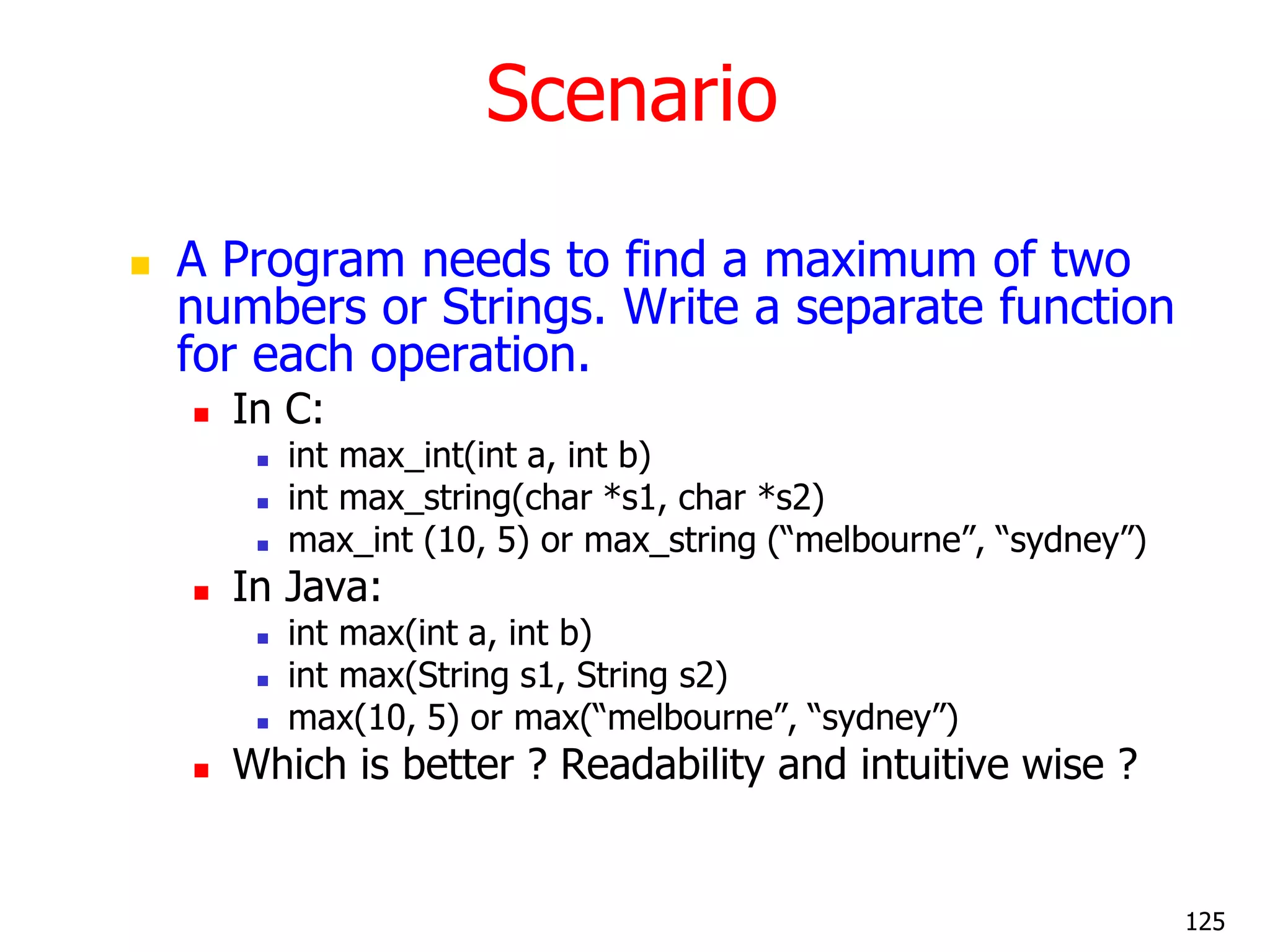
![A Program with Method Overloading// Compare.java: a class comparing different items class Compare { static int max(int a, int b) { if( a > b) return a; else return b; } static String max(String a, String b) { if( a.compareTo (b) > 0) return a; else return b; } public static void main(String args[]) { String s1 = "Melbourne"; String s2 = "Sydney"; String s3 = "Adelaide"; int a = 10; int b = 20; System.out.println(max(a, b)); // which number is big System.out.println(max(s1, s2)); // which city is big System.out.println(max(s1, s3)); // which city is big } } 126](https://image.slidesharecdn.com/corejavacompletenotes-121028072655-phpapp01/75/Core-java-complete-notes-Contact-at-91-814-614-5674-126-2048.jpg)
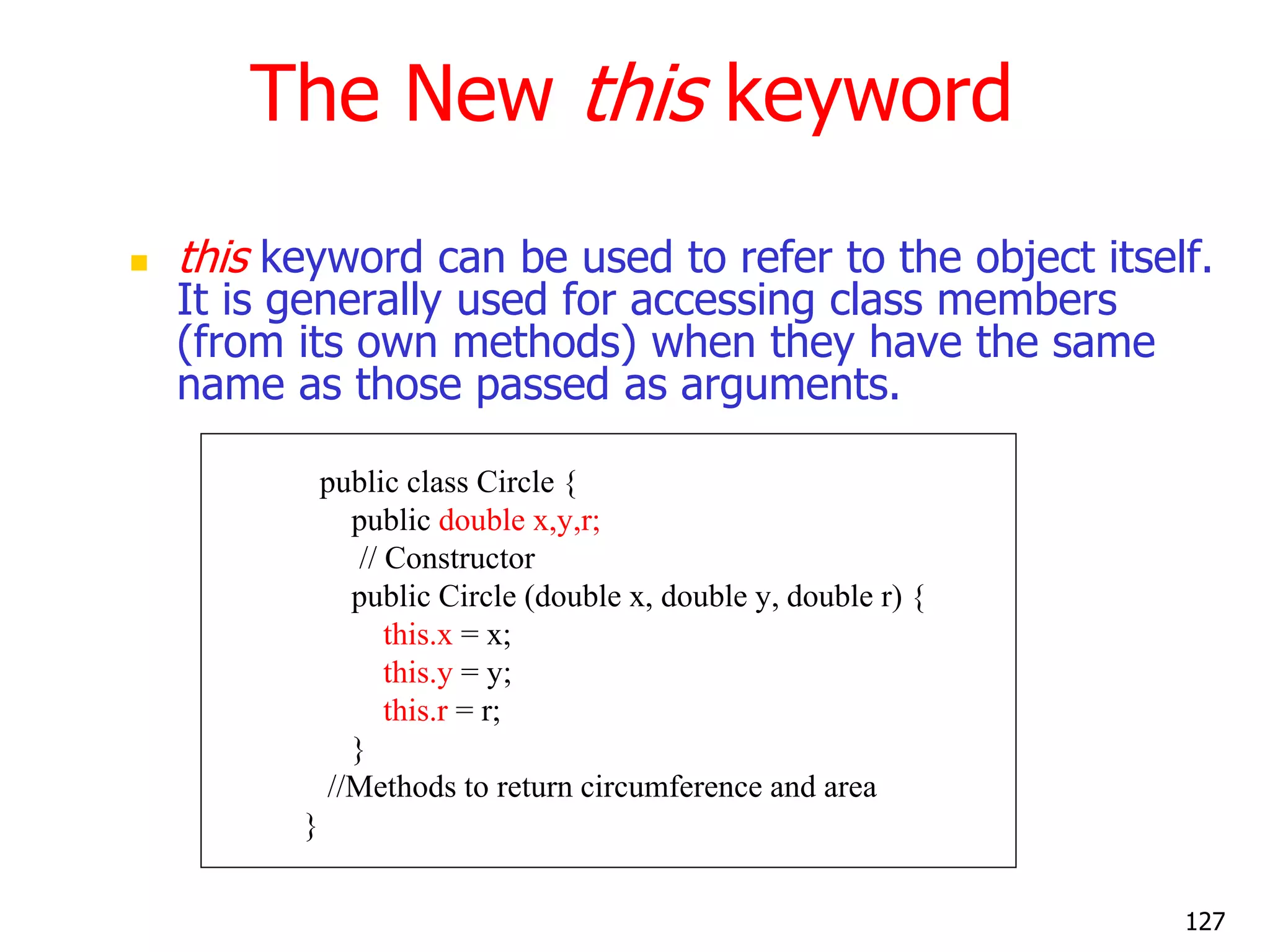

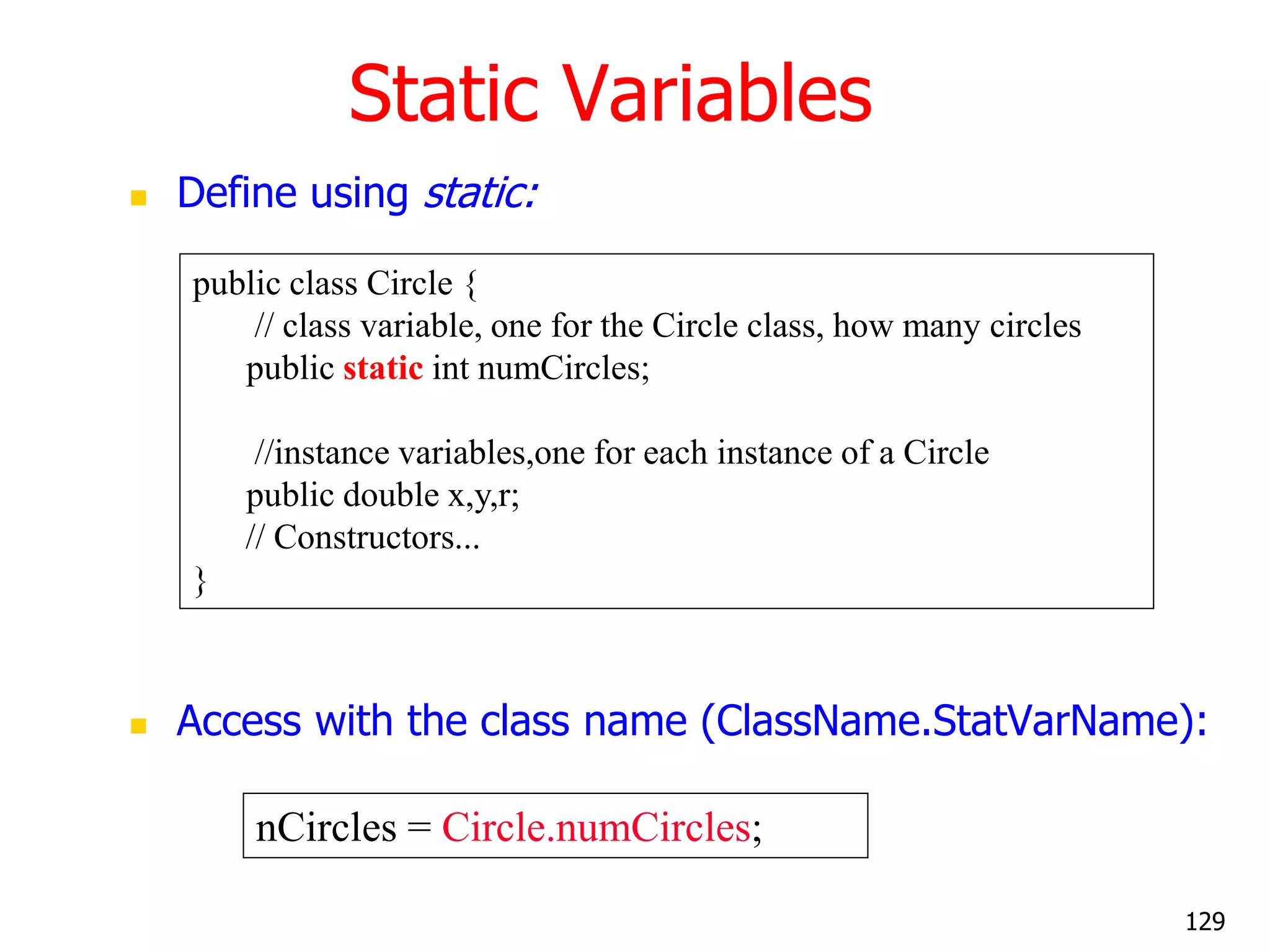
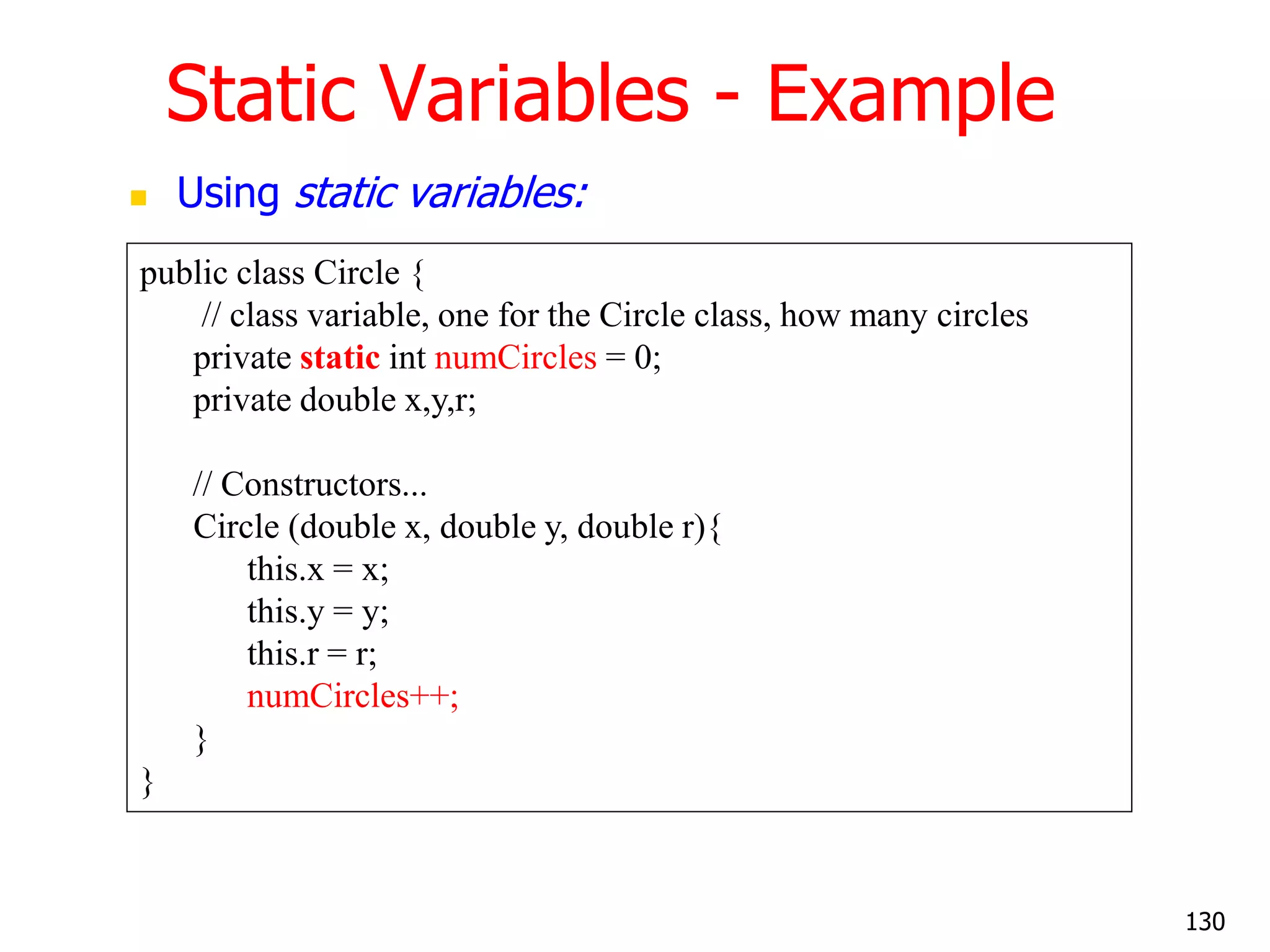
![Class Variables - Example Using static variables: public class CountCircles { public static void main(String args[]){ Circle circleA = new Circle( 10, 12, 20); // numCircles = 1 Circle circleB = new Circle( 5, 3, 10); // numCircles = 2 } } circleA = new Circle(10, 12, 20) circleB = new Circle(5, 3, 10) numCircles 131](https://image.slidesharecdn.com/corejavacompletenotes-121028072655-phpapp01/75/Core-java-complete-notes-Contact-at-91-814-614-5674-131-2048.jpg)


![Comparator class with Static methods // Comparator.java: A class with static data items comparision methods class Comparator { public static int max(int a, int b) { if( a > b) return a; else return b; } public static String max(String a, String b) { if( a.compareTo (b) > 0) return a; else return b; } } class MyClass { public static void main(String args[]) { String s1 = "Melbourne"; String s2 = "Sydney"; String s3 = "Adelaide"; int a = 10; int b = 20; System.out.println(Comparator.max(a, b)); // which number is big System.out.println(Comparator.max(s1, s2)); // which city is big System.out.println(Comparator.max(s1, s3)); // which city is big } } Directly accessed using ClassName (NO Objects) 134](https://image.slidesharecdn.com/corejavacompletenotes-121028072655-phpapp01/75/Core-java-complete-notes-Contact-at-91-814-614-5674-134-2048.jpg)
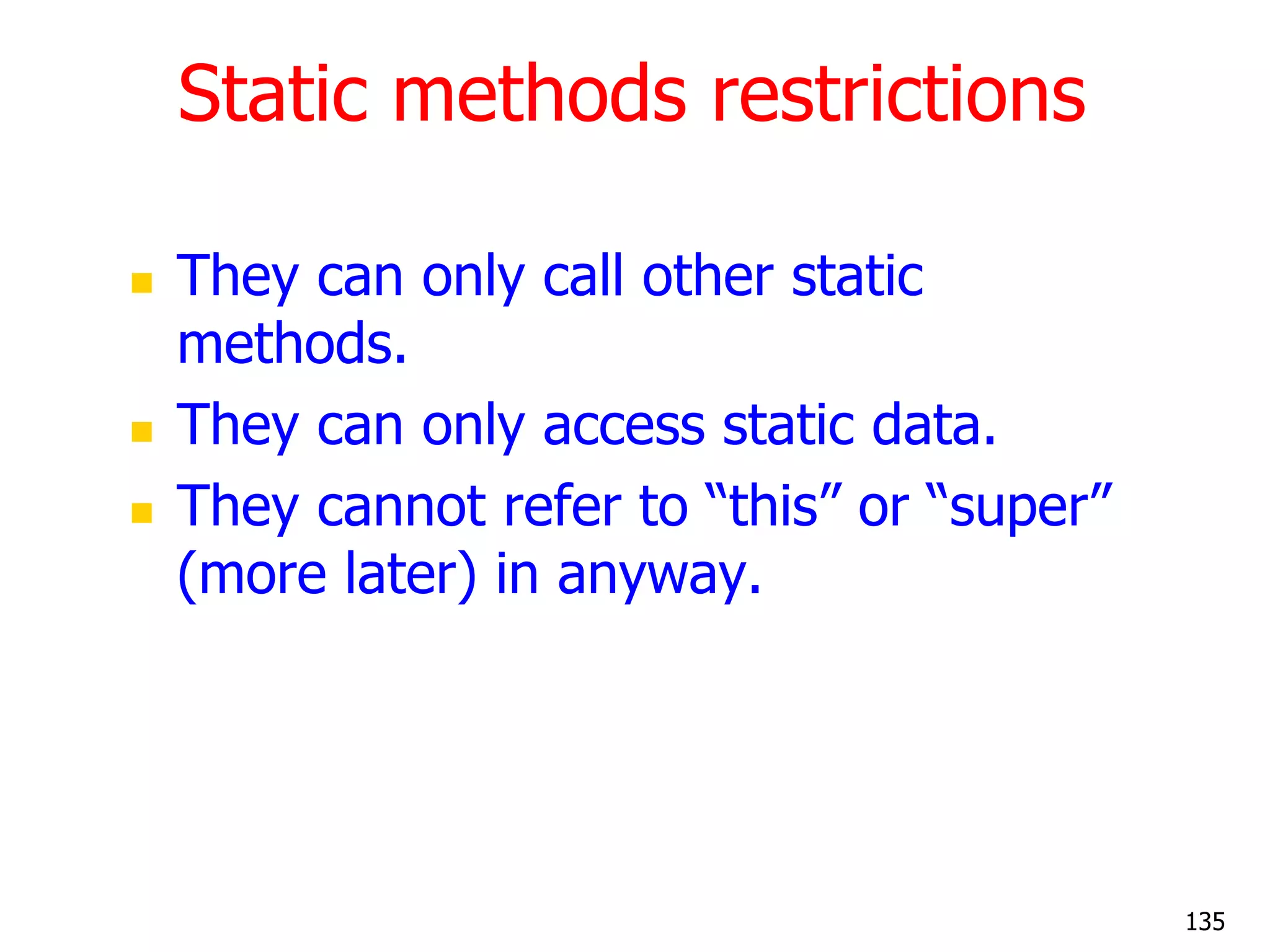
![Summary Constructors allow seamless initialization of objects. Classes can have multiple methods with the same name [Overloading] Classes can have static members, which serve as global members of all objects of a class. Keywords: constructors, polymorphism, method overloading, this, static variables, static methods. 136](https://image.slidesharecdn.com/corejavacompletenotes-121028072655-phpapp01/75/Core-java-complete-notes-Contact-at-91-814-614-5674-136-2048.jpg)
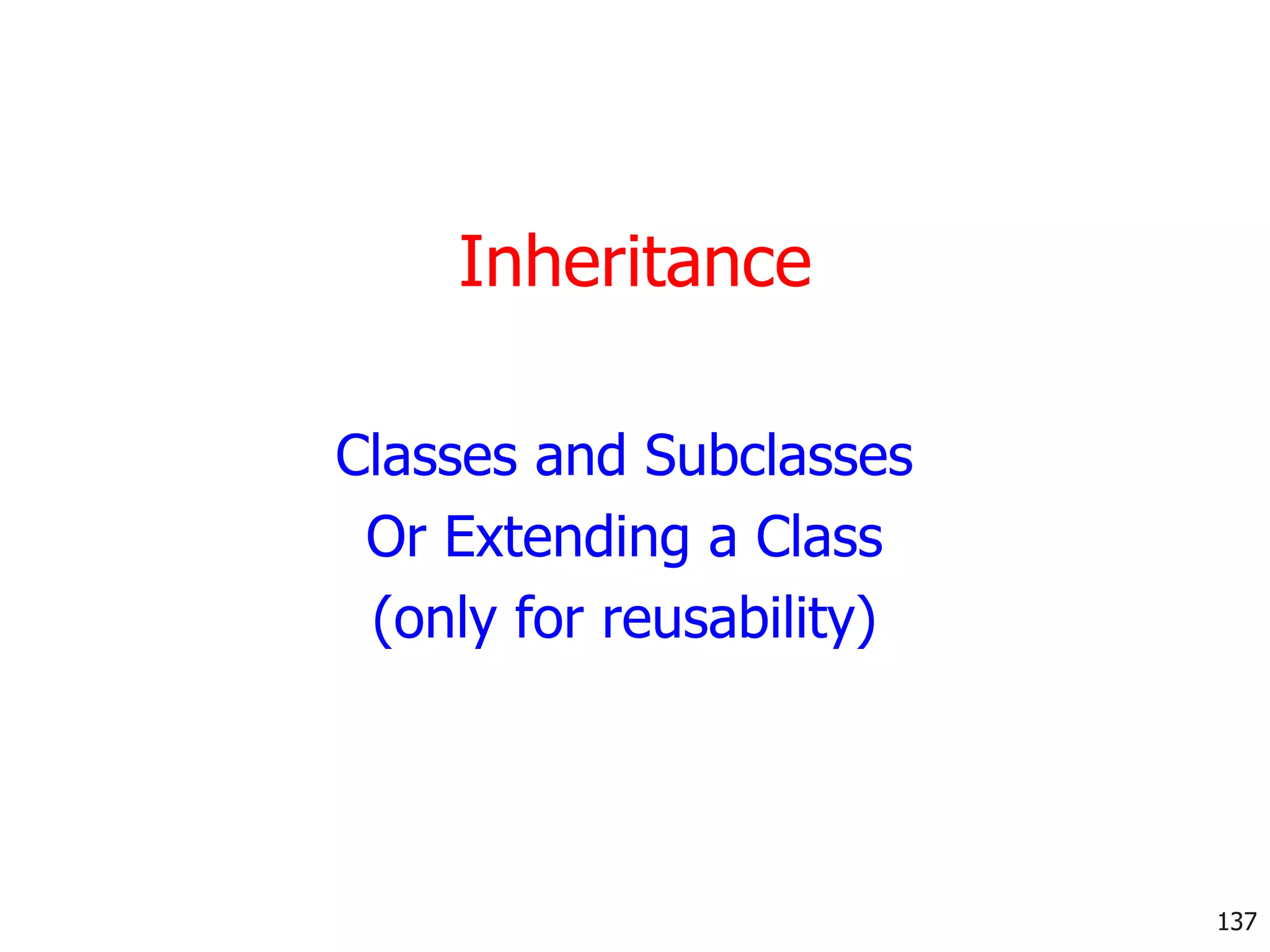

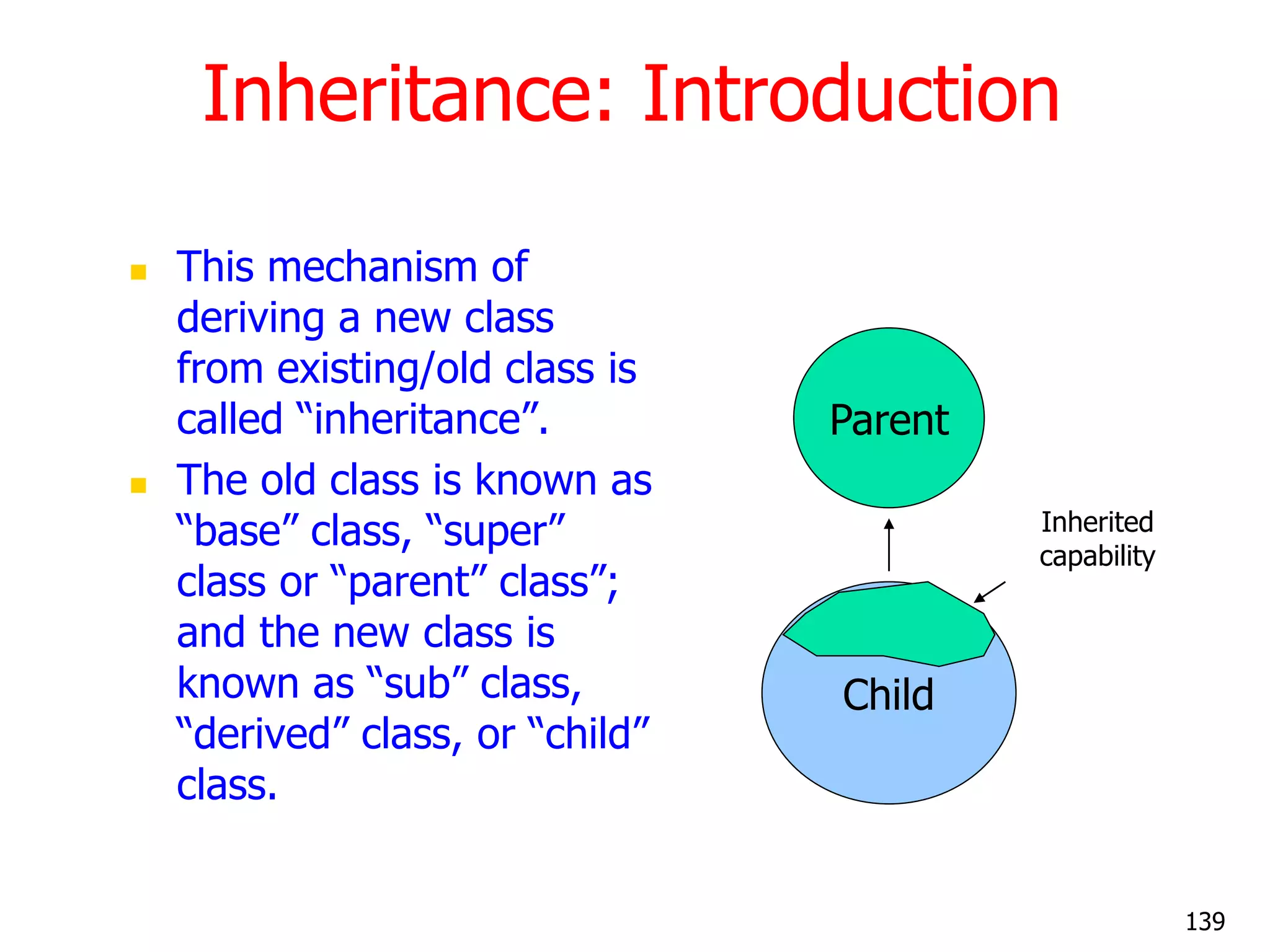
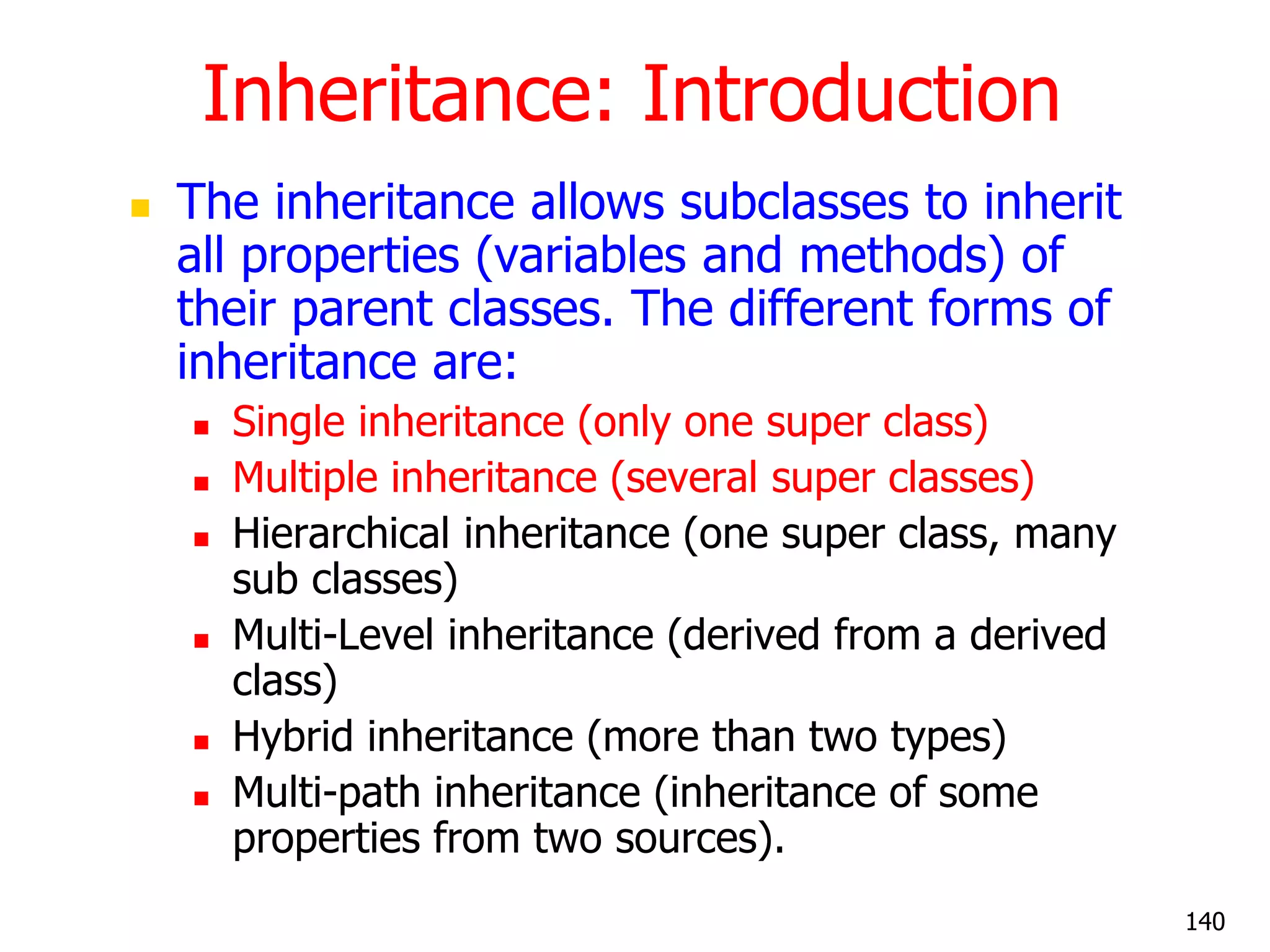
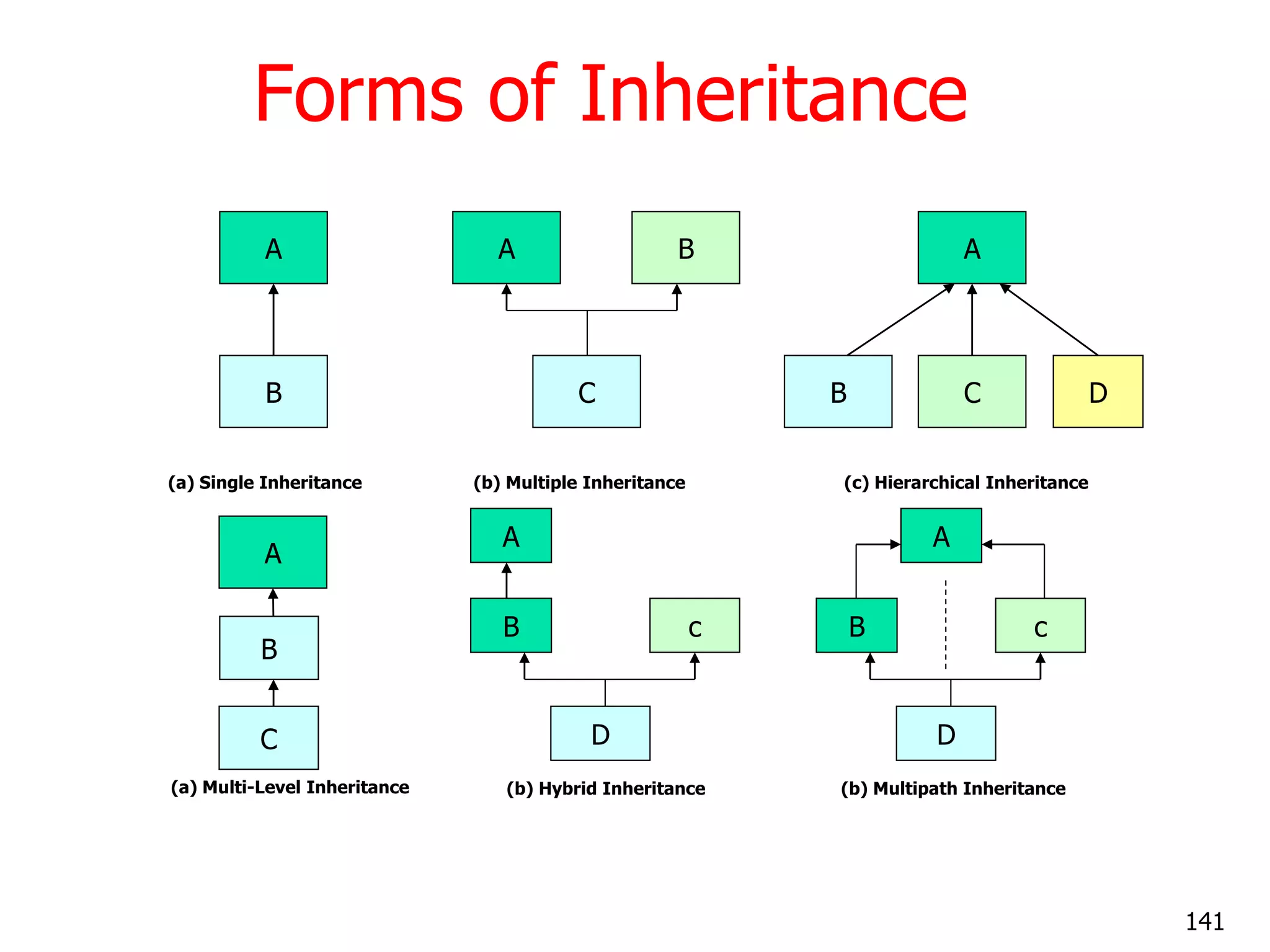
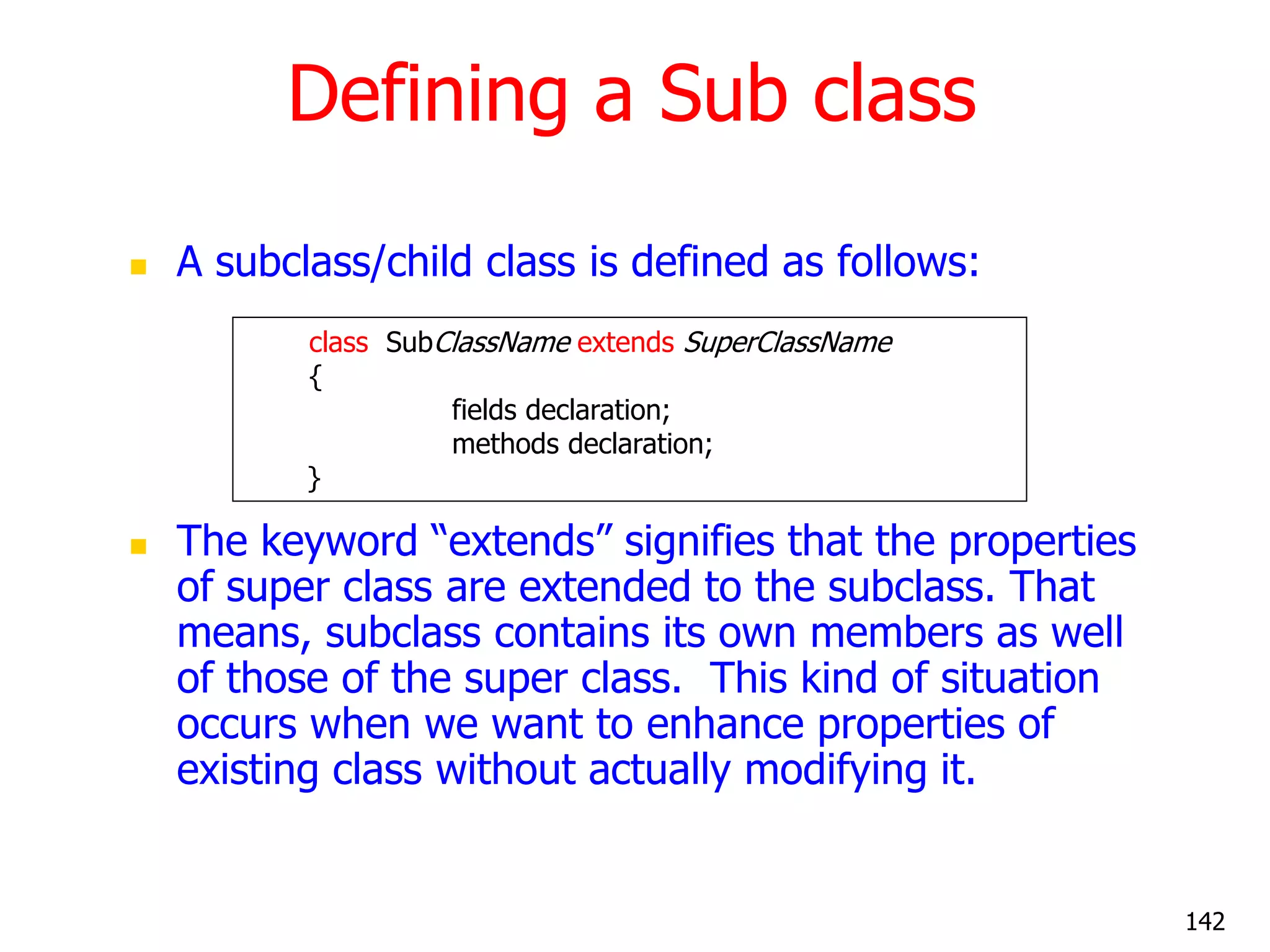

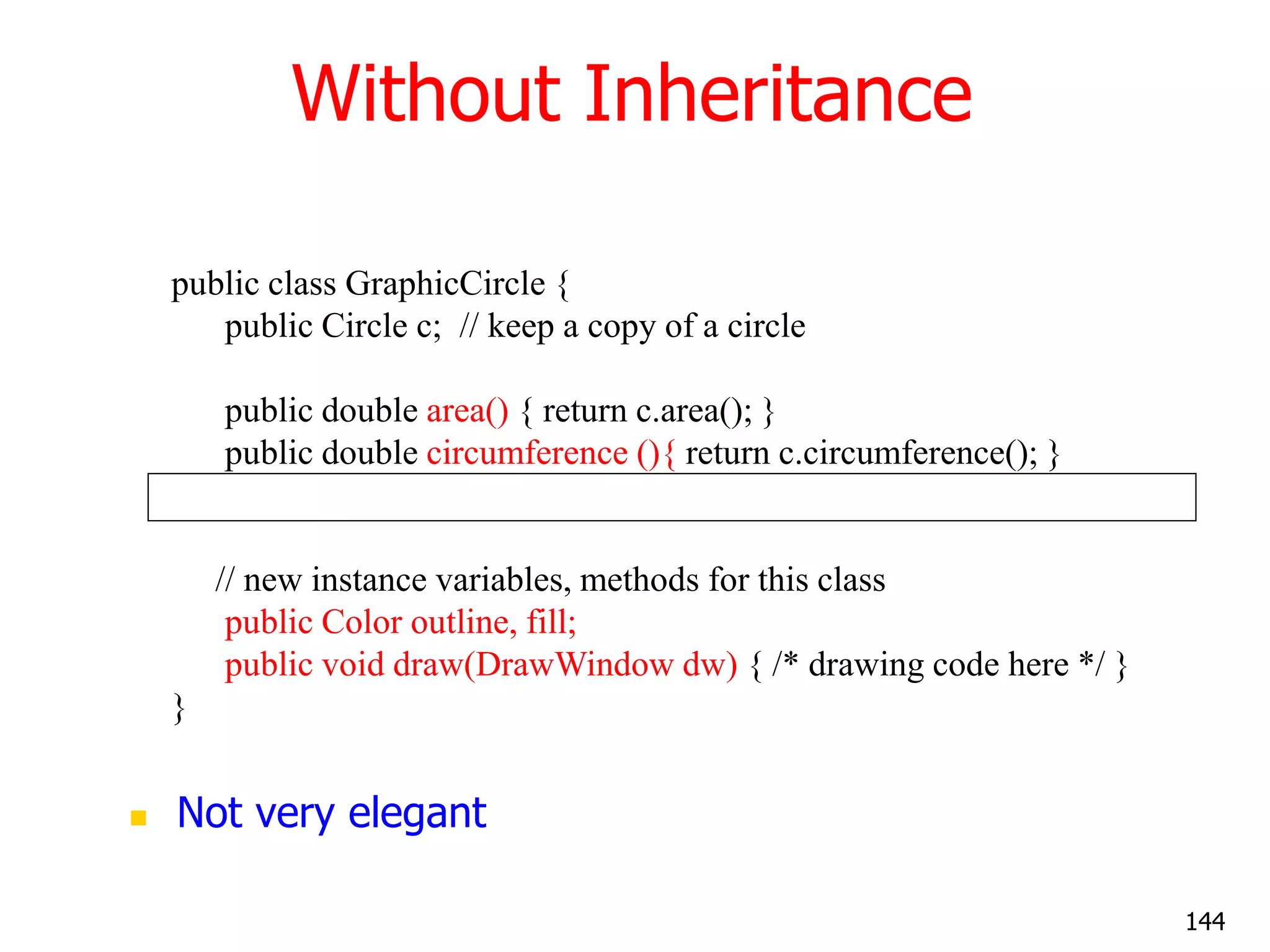
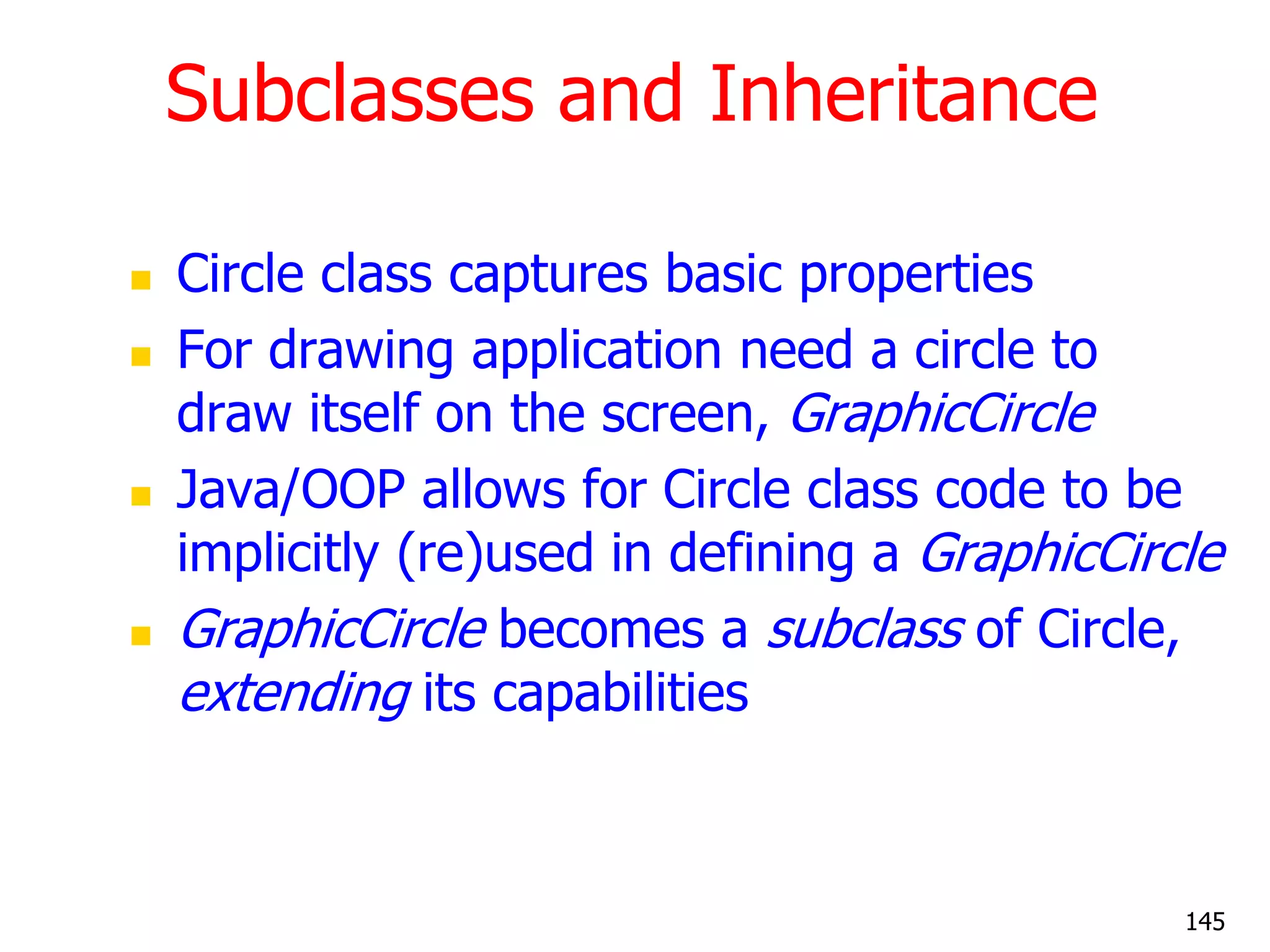
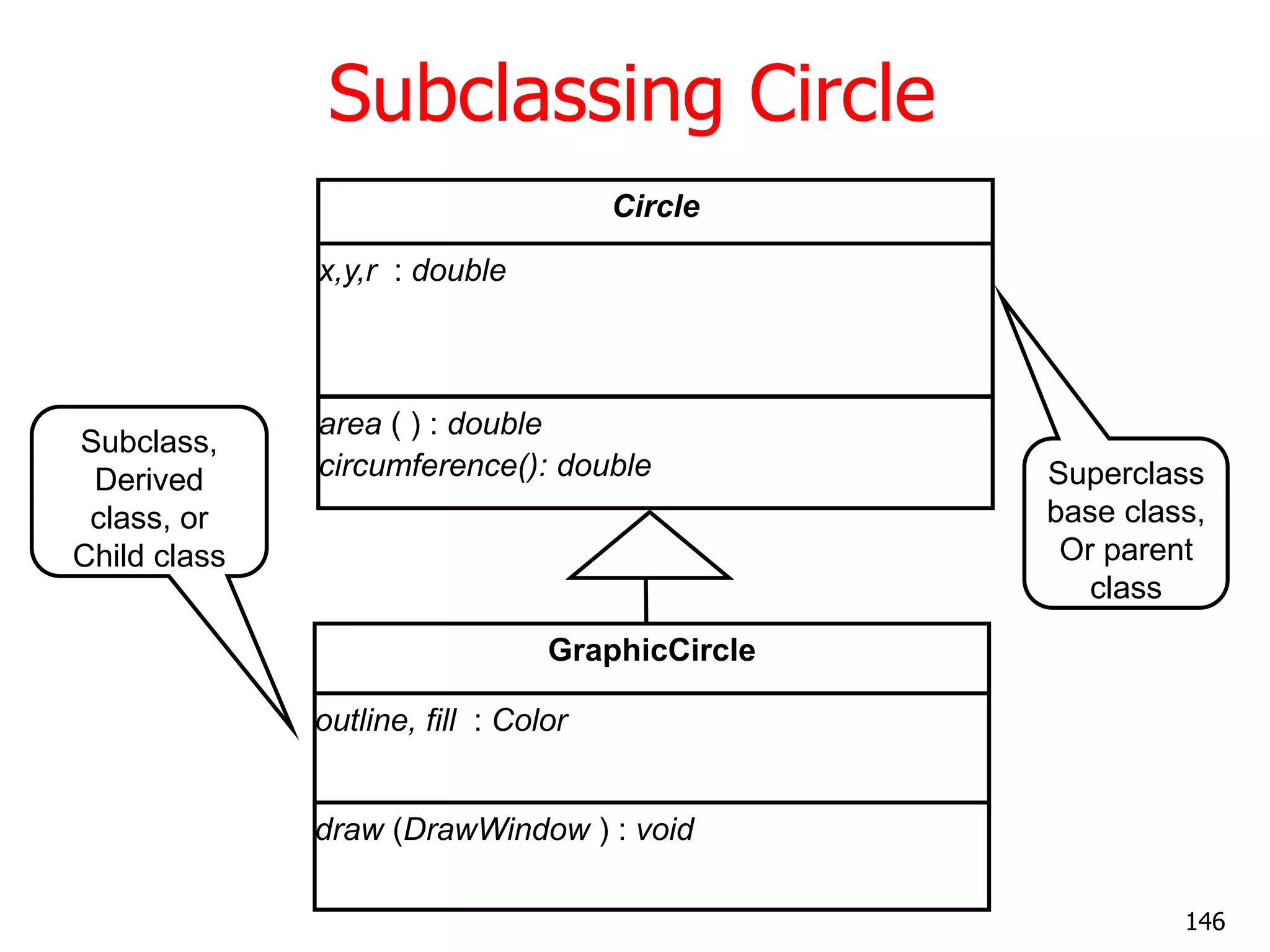





![Shadowed Variables - Example public class Circle { public float r = 100; } public class GraphicCircle extends Circle { public float r = 10; // New variable, resolution in dots per inch } public class CircleTest { public static void main(String[] args){ GraphicCircle gc = new GraphicCircle(); Circle c = gc; System.out.println(― GraphicCircleRadius= ― + gc.r); // 10 System.out.println (― Circle Radius = ― + c.r); // 100 } } 152](https://image.slidesharecdn.com/corejavacompletenotes-121028072655-phpapp01/75/Core-java-complete-notes-Contact-at-91-814-614-5674-152-2048.jpg)
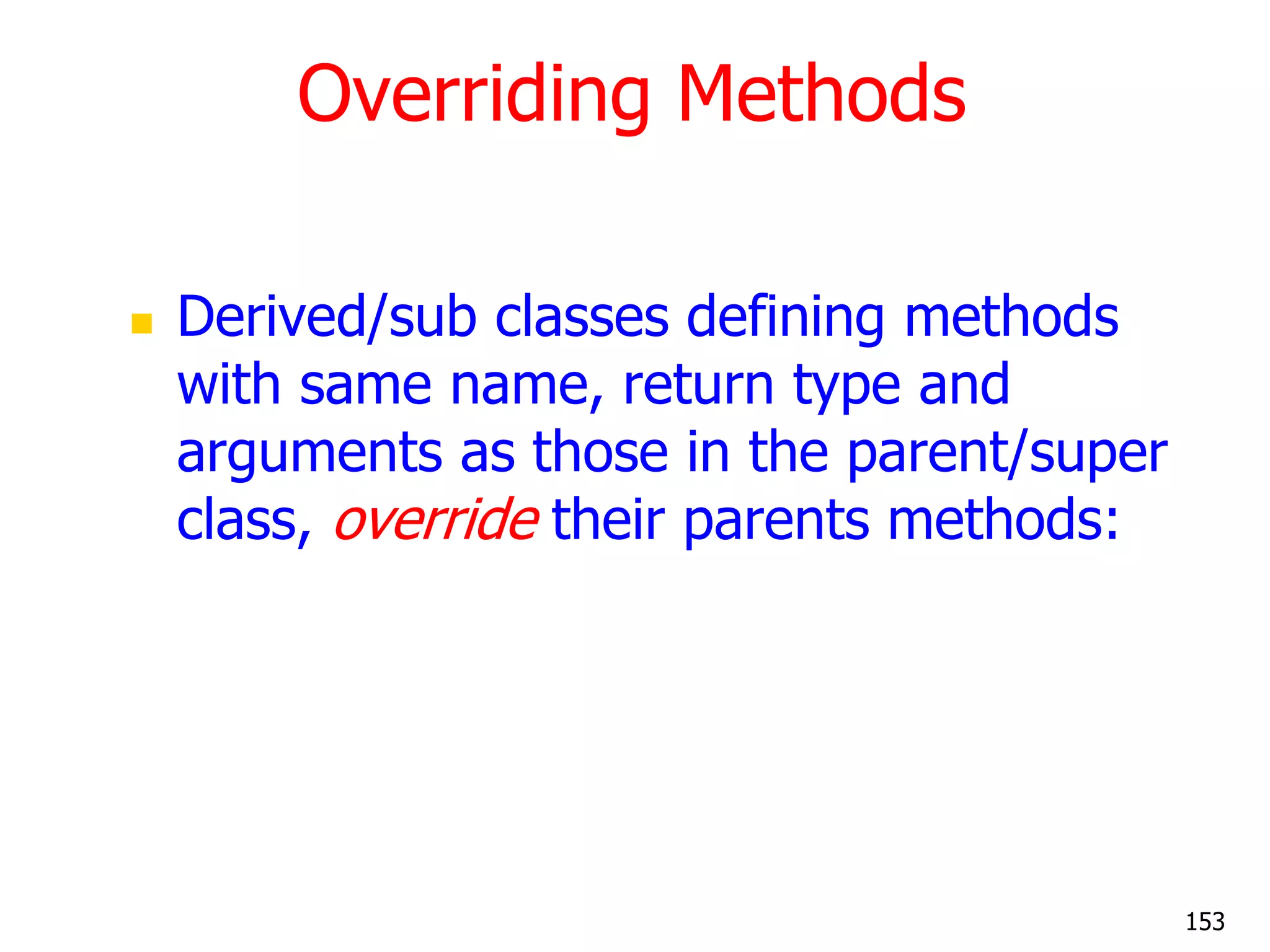
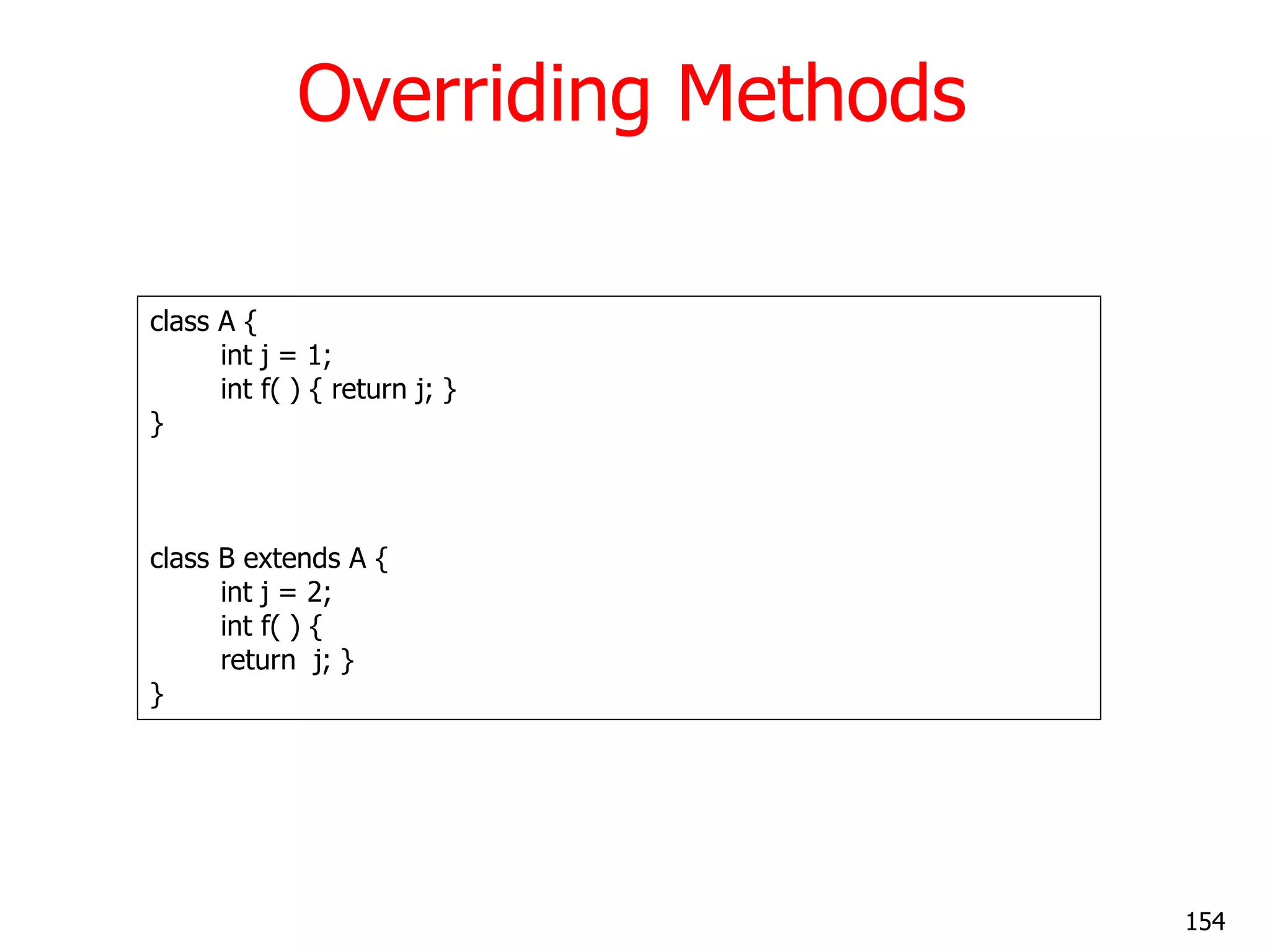
![Overriding Methods class override_test { public static void main(String args[]) { B b = new B(); System.out.println(b.j); // refers to B.j prints 2 System.out.println(b.f()); // refers to B.f prints 2 A a = (A) b; System.out.println(a.j); // now refers to a.j prints 1 System.out.println(a.f()); // overridden method still refers to B.f() prints 2 ! } } Object Type Casting [raj@mundroo] inheritance [1:167] java override_test 2 2 1 2 155](https://image.slidesharecdn.com/corejavacompletenotes-121028072655-phpapp01/75/Core-java-complete-notes-Contact-at-91-814-614-5674-155-2048.jpg)
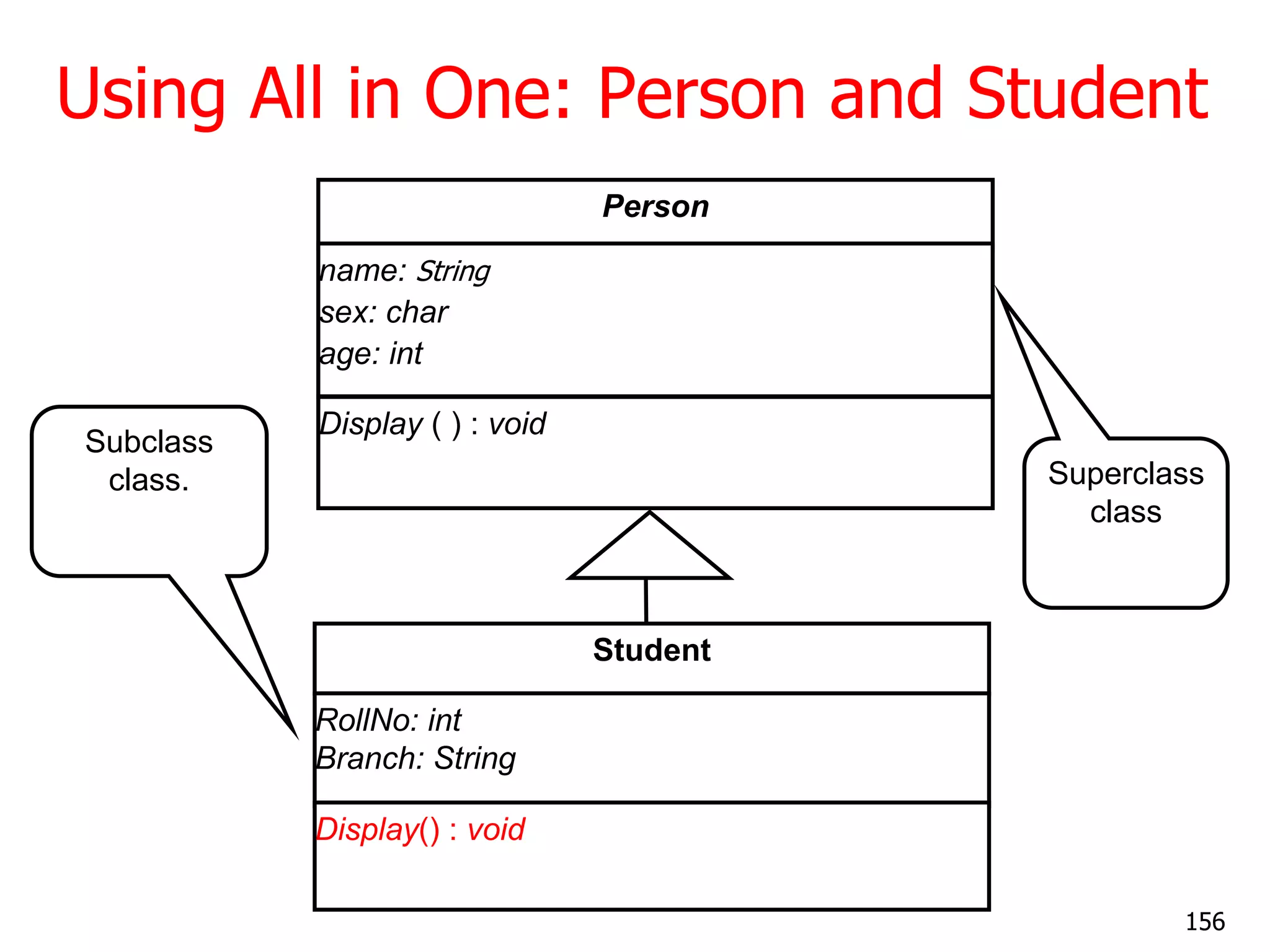


![Driver Class class MyTest { public static void main(String args[] ) { student s1 = new student("Rama", 'M', 21, 1, "Computer Science"); student s2 = new student("Sita", 'F', 19, 2, "Software Engineering"); System.out.println("Student 1 Details..."); s1.Display(); System.out.println("Student 2 Details..."); s2.Display(); person p1 = new person("Rao", 'M', 45); System.out.println("Person Details..."); p1.Display(); } } Can we create Object of person class ? 159](https://image.slidesharecdn.com/corejavacompletenotes-121028072655-phpapp01/75/Core-java-complete-notes-Contact-at-91-814-614-5674-159-2048.jpg)
![Output [raj@mundroo] inheritance [1:154] java MyTest Student 1 Details... Roll No = 1 Name = Rama Sex = M Age = 21 Branch = Computer Science Student 2 Details... Roll No = 2 Name = Sita Sex = F Age = 19 Branch = Software Engineering Person Details... Name = Rao Sex = M Age = 45 [raj@mundroo] inheritance [1:155] 160](https://image.slidesharecdn.com/corejavacompletenotes-121028072655-phpapp01/75/Core-java-complete-notes-Contact-at-91-814-614-5674-160-2048.jpg)

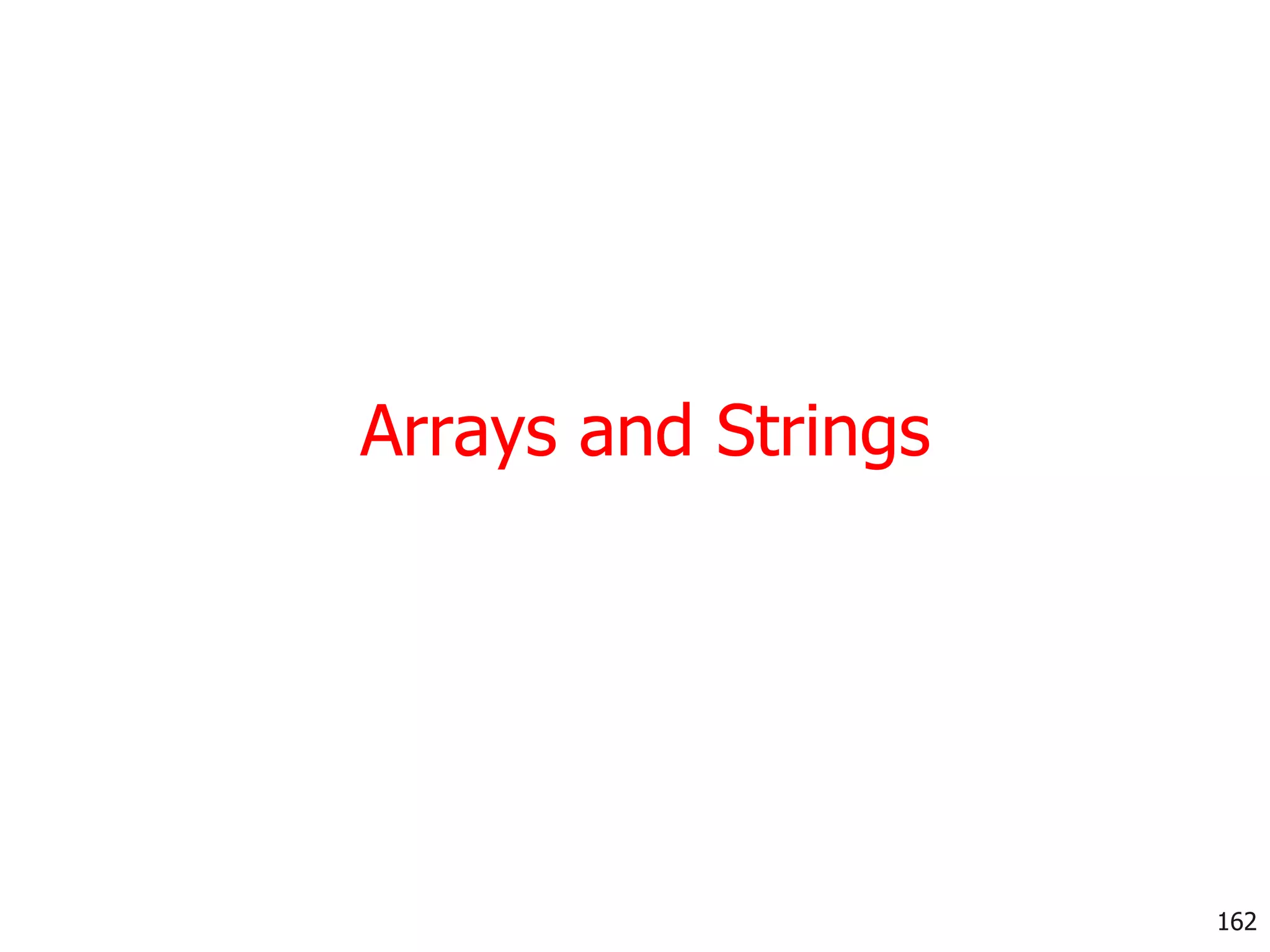

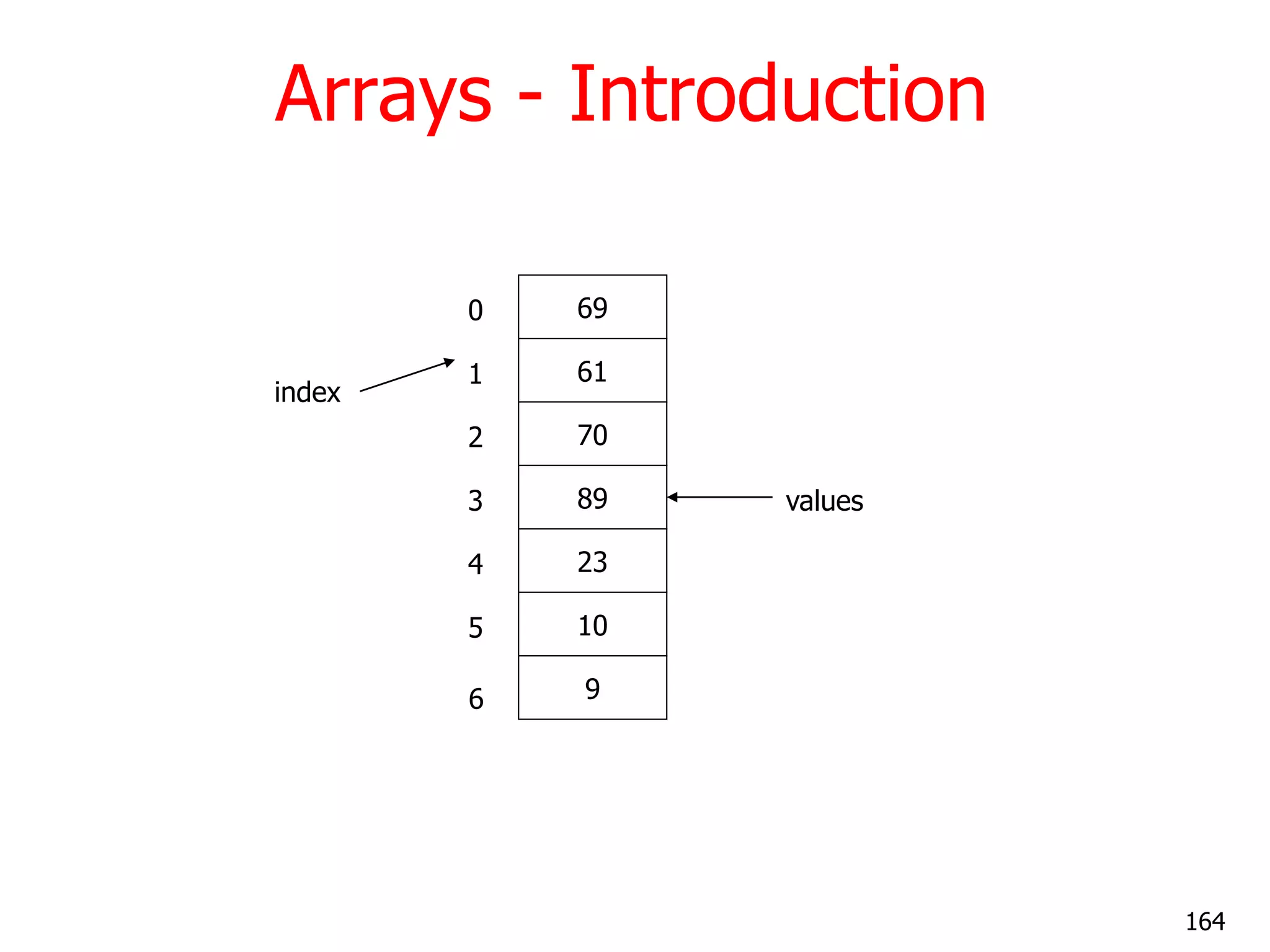
![Declaration of Arrays Like any other variables, arrays must declared and created before they can be used. Creation of arrays involve three steps: Declare the array Create storage area in primary memory. Put values into the array (i.e., Memory location) Declaration of Arrays: Form 1: Type arrayname[] Form 2: Type [] arrayname; Examples: int[] students; int students[]; Note: we don’t specify the size of arrays in the declaration. 165](https://image.slidesharecdn.com/corejavacompletenotes-121028072655-phpapp01/75/Core-java-complete-notes-Contact-at-91-814-614-5674-165-2048.jpg)
![Creation of Arrays After declaring arrays, we need to allocate memory for storage array items. In Java, this is carried out by using ―new‖ operator, as follows: Arrayname = new type[size]; Examples: students = new int[7]; 166](https://image.slidesharecdn.com/corejavacompletenotes-121028072655-phpapp01/75/Core-java-complete-notes-Contact-at-91-814-614-5674-166-2048.jpg)
![Initialisation of Arrays Once arrays are created, they need to be initialised with some values before access their content. A general form of initialisation is: Arrayname [index/subscript] = value; Example: students[0] = 50; students[1] = 40; Like C, Java creates arrays starting with subscript 0 and ends with value one less than the size specified. Unlike C, Java protects arrays from overruns and under runs. Trying to access an array beyond its boundaries will generate an error message. 167](https://image.slidesharecdn.com/corejavacompletenotes-121028072655-phpapp01/75/Core-java-complete-notes-Contact-at-91-814-614-5674-167-2048.jpg)
![Arrays – Length Arrays are fixed length Length is specified at create time In java, all arrays store the allocated size in a variable named ―length‖. We can access the length of arrays as arrayName.length: e.g. int x = students.length; // x = 7 Accessed using the index e.g. int x = students [1]; // x = 40 168](https://image.slidesharecdn.com/corejavacompletenotes-121028072655-phpapp01/75/Core-java-complete-notes-Contact-at-91-814-614-5674-168-2048.jpg)
![Arrays – Example // StudentArray.java: store integers in arrays and access public class StudentArray{ public static void main(String[] args) { int[] students; students = new int[7]; System.out.println("Array Length = " + students.length); for ( int i=0; i < students.length; i++) students[i] = 2*i; System.out.println("Values Stored in Array:"); for ( int i=0; i < students.length; i++) System.out.println(students[i]); } } :w 169](https://image.slidesharecdn.com/corejavacompletenotes-121028072655-phpapp01/75/Core-java-complete-notes-Contact-at-91-814-614-5674-169-2048.jpg)
![Arrays – Initializing at Declaration Arrays can also be initialised like standard variables at the time of their declaration. Type arrayname[] = {list of values}; Example: int[] students = {55, 69, 70, 30, 80}; Creates and initializes the array of integers of length 5. In this case it is not necessary to use the new operator. 170](https://image.slidesharecdn.com/corejavacompletenotes-121028072655-phpapp01/75/Core-java-complete-notes-Contact-at-91-814-614-5674-170-2048.jpg)
![Arrays – Example // StudentArray.java: store integers in arrays and access public class StudentArray{ public static void main(String[] args) { int[] students = {55, 69, 70, 30, 80}; System.out.println("Array Length = " + students.length); System.out.println("Values Stored in Array:"); for ( int i=0; i < students.length; i++) System.out.println(students[i]); } } 171](https://image.slidesharecdn.com/corejavacompletenotes-121028072655-phpapp01/75/Core-java-complete-notes-Contact-at-91-814-614-5674-171-2048.jpg)
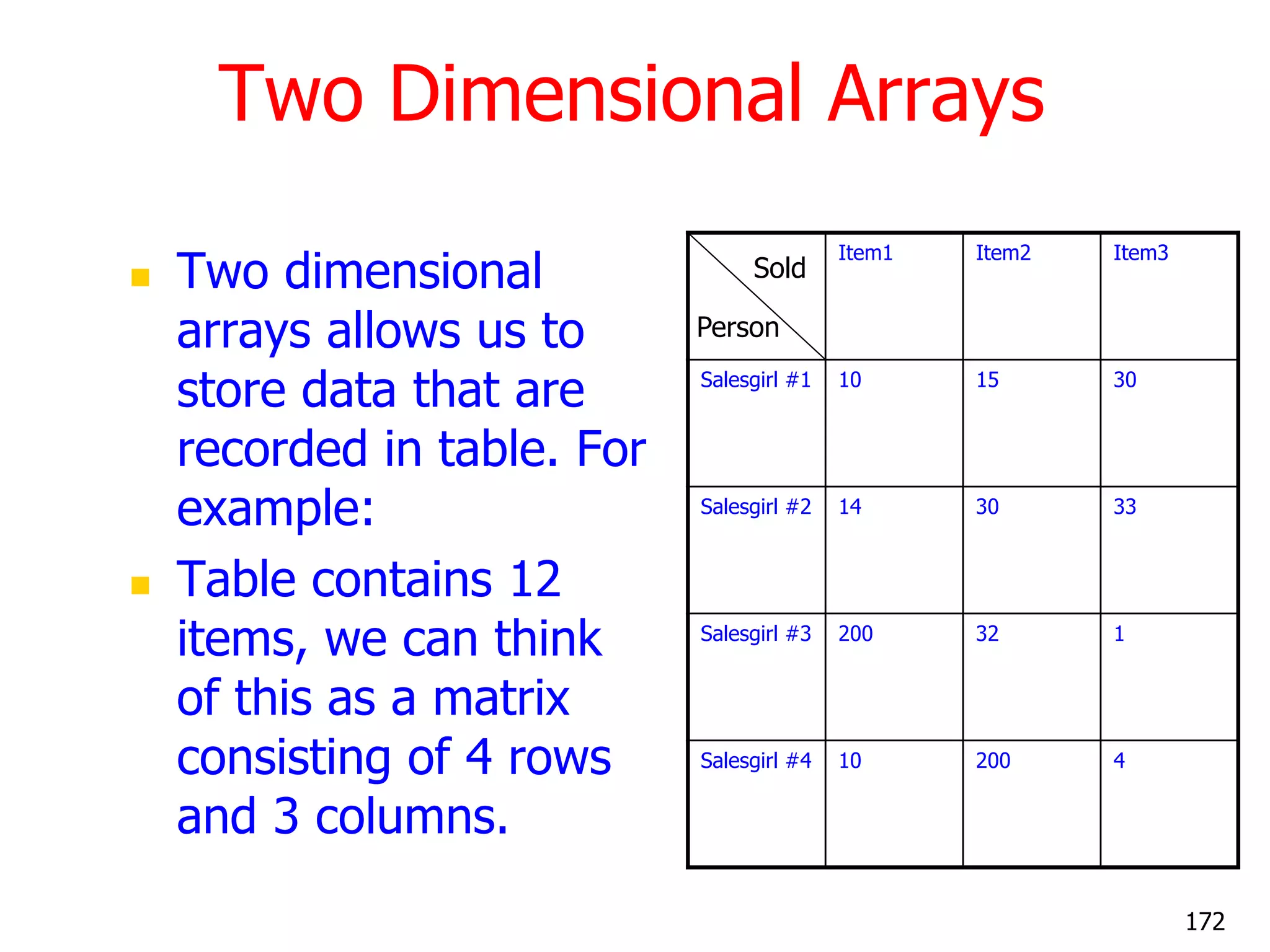
![2D arrays manipulations Declaration: int myArray [][]; Creation: myArray = new int[4][3]; // OR int myArray [][] = new int[4][3]; Initialisation: Single Value; myArray[0][0] = 10; Multiple values: int tableA[2][3] = {{10, 15, 30}, {14, 30, 33}}; int tableA[][] = {{10, 15, 30}, {14, 30, 33}}; 173](https://image.slidesharecdn.com/corejavacompletenotes-121028072655-phpapp01/75/Core-java-complete-notes-Contact-at-91-814-614-5674-173-2048.jpg)
![Variable Size Arrays Java treats multidimensional arrays as ―arrays of arrays‖. It is possible to declare a 2D arrays as follows: int a[][] = new int [3][]; a[0]= new int [3]; a[1]= new int [2]; a[2]= new int [4]; 174](https://image.slidesharecdn.com/corejavacompletenotes-121028072655-phpapp01/75/Core-java-complete-notes-Contact-at-91-814-614-5674-174-2048.jpg)
![Try: Write a program to Add to Matrix Define 2 dimensional matrix variables: Say: int a[][], b[][]; Define their size to be 2x3 Initialise like some values Create a matrix c to storage sum value c[0][0] = a[0][0] + b[0][0] Print the contents of result matrix. 175](https://image.slidesharecdn.com/corejavacompletenotes-121028072655-phpapp01/75/Core-java-complete-notes-Contact-at-91-814-614-5674-175-2048.jpg)
![Arrays of Objects Arrays can be used to store objects Circle[] circleArray; circleArray = new Circle[25]; The above statement creates an array that can store references to 25 Circle objects. Circle objects are not created. 176](https://image.slidesharecdn.com/corejavacompletenotes-121028072655-phpapp01/75/Core-java-complete-notes-Contact-at-91-814-614-5674-176-2048.jpg)
![Arrays of Objects Create the Circle objects and stores them in the array. //declare an array for Circle Circle circleArray[] = new Circle[25]; int r = 0; // create circle objects and store in array for (r=0; r <25; r++) circleArray[r] = new Circle(r); 177](https://image.slidesharecdn.com/corejavacompletenotes-121028072655-phpapp01/75/Core-java-complete-notes-Contact-at-91-814-614-5674-177-2048.jpg)

![Introduction String manipulation is the most common operation performed in Java programs. The easiest way to represent a String (a sequence of characters) is by using an array of characters. Example: char place[] = new char[4]; place[0] = ‗J‘; place[1] = ‗a‘; place[2] = ‗v‘; place[3] = ‗a‘; Although character arrays have the advantage of being able to query their length, they themselves are too primitive and don‘t support a range of common string operations. For example, copying a string, searching for specific pattern etc. Recognising the importance and common usage of String manipulation in large software projects, Java supports String as one of the fundamental data type at the language level. Strings related book keeping operations (e.g., end of string) are handled automatically. 179](https://image.slidesharecdn.com/corejavacompletenotes-121028072655-phpapp01/75/Core-java-complete-notes-Contact-at-91-814-614-5674-179-2048.jpg)
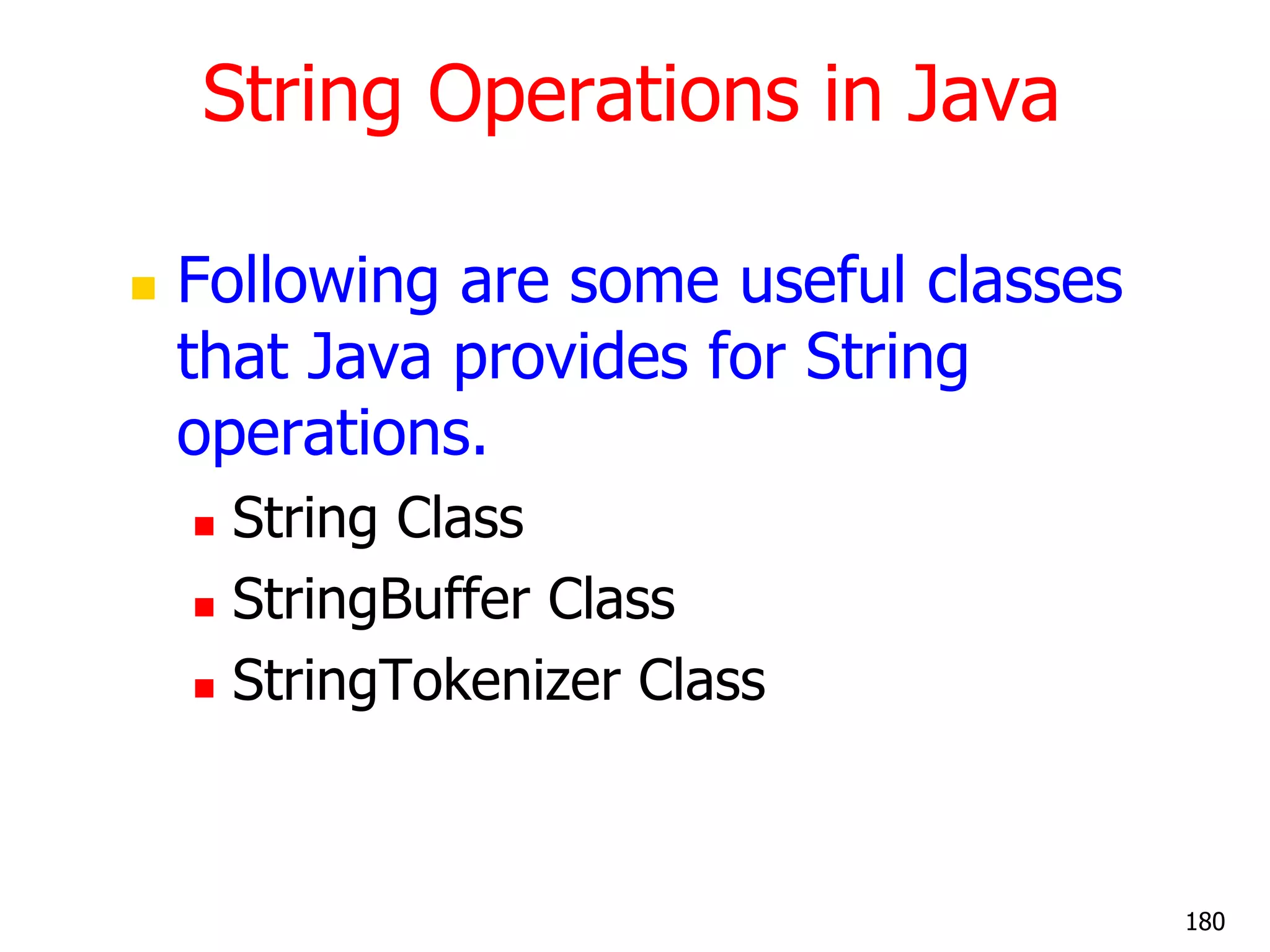
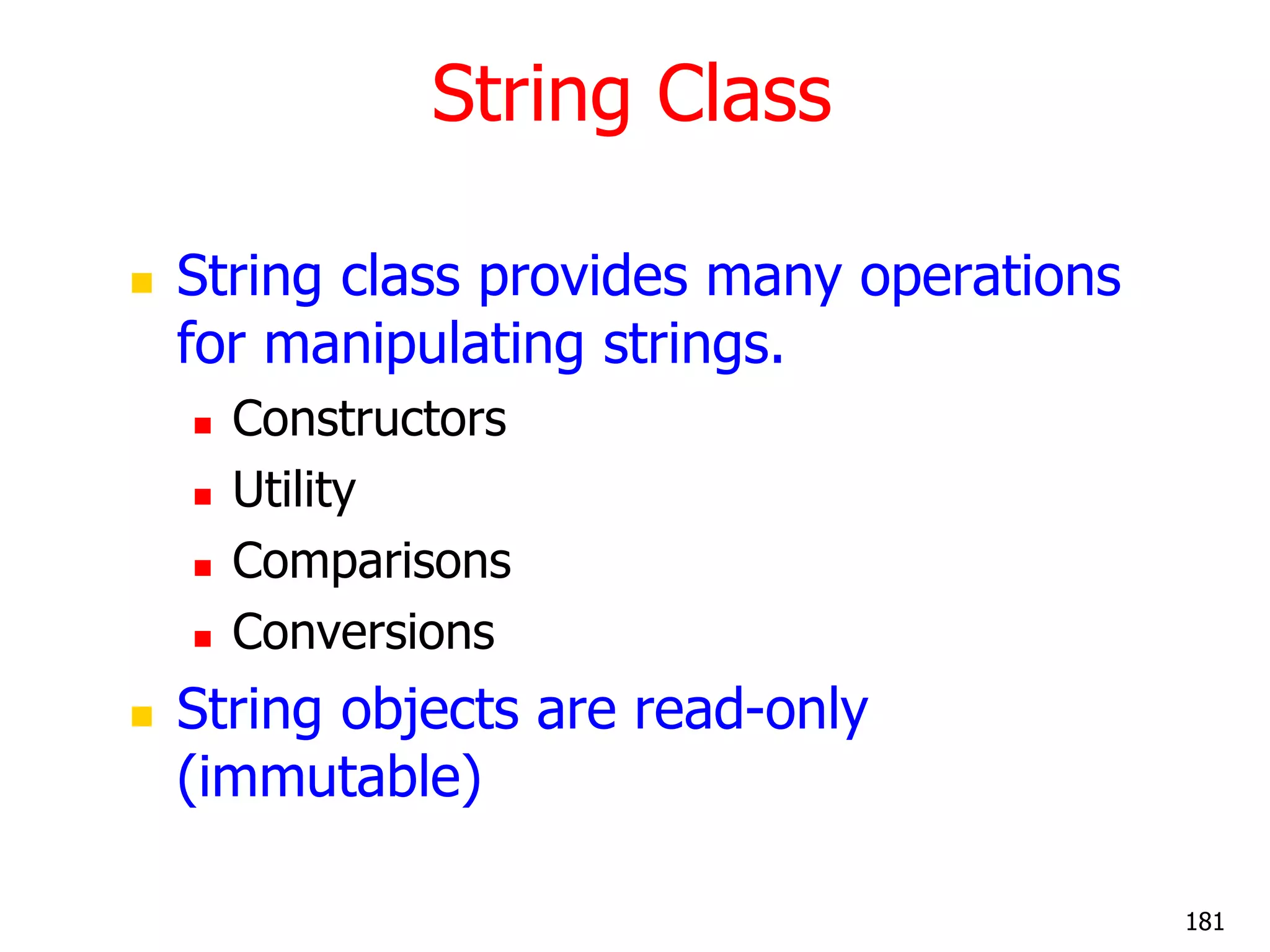
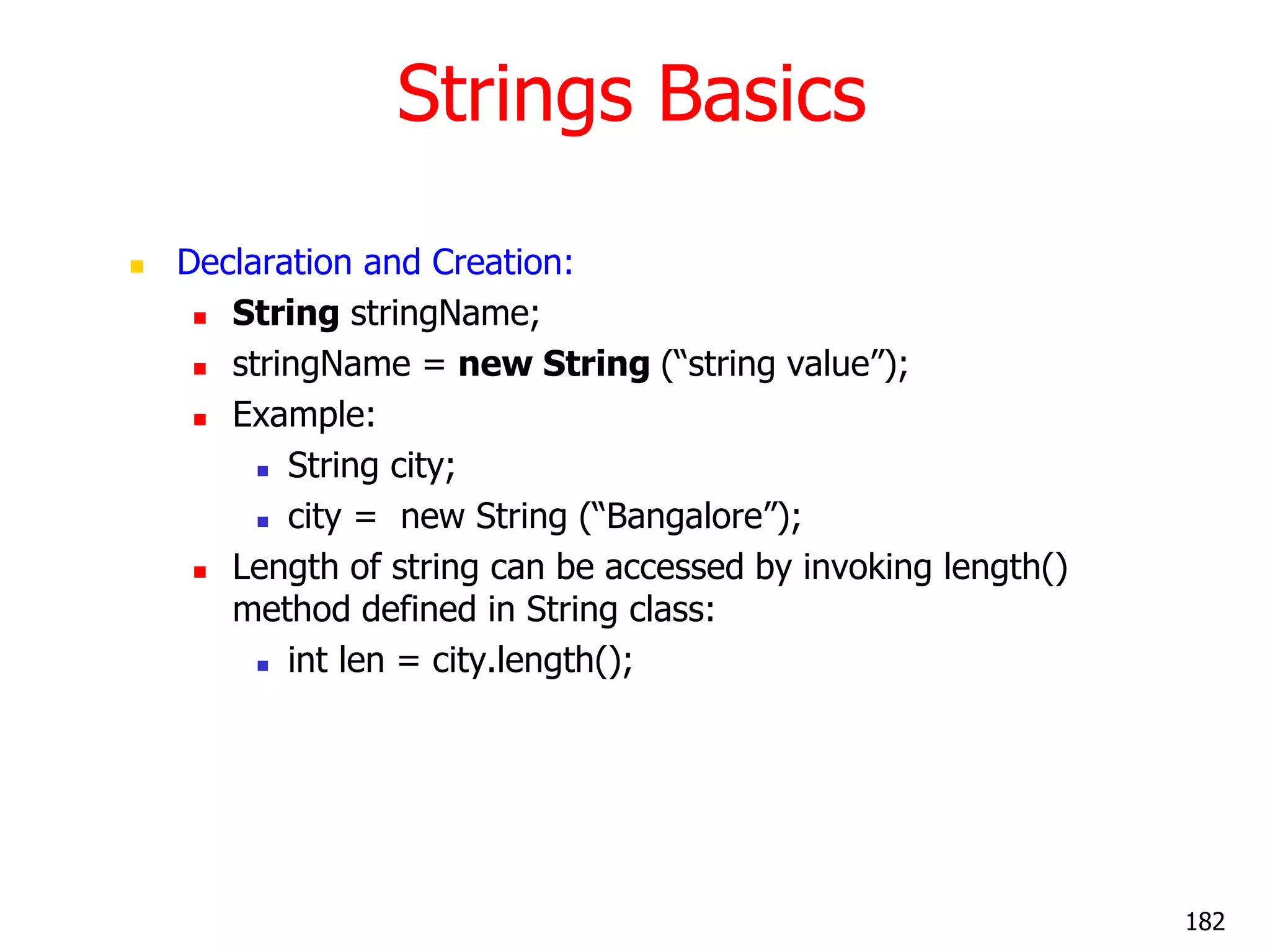
![String operations and Arrays Java Strings can be concatenated using the + operator. String city = ―New‖ + ―York‖; String city1 = ―Delhi‖; String city2 = ―New ―+city1; Strings Arrays String city[] = new String[5]; city[0] = new String(―Melbourne‖); city[1] = new String(―Sydney‖); … String megacities[] = {―Brisbane‖, ―Sydney‖, ―Melbourne‖, ―Adelaide‖, ―Perth‖}; 183](https://image.slidesharecdn.com/corejavacompletenotes-121028072655-phpapp01/75/Core-java-complete-notes-Contact-at-91-814-614-5674-183-2048.jpg)
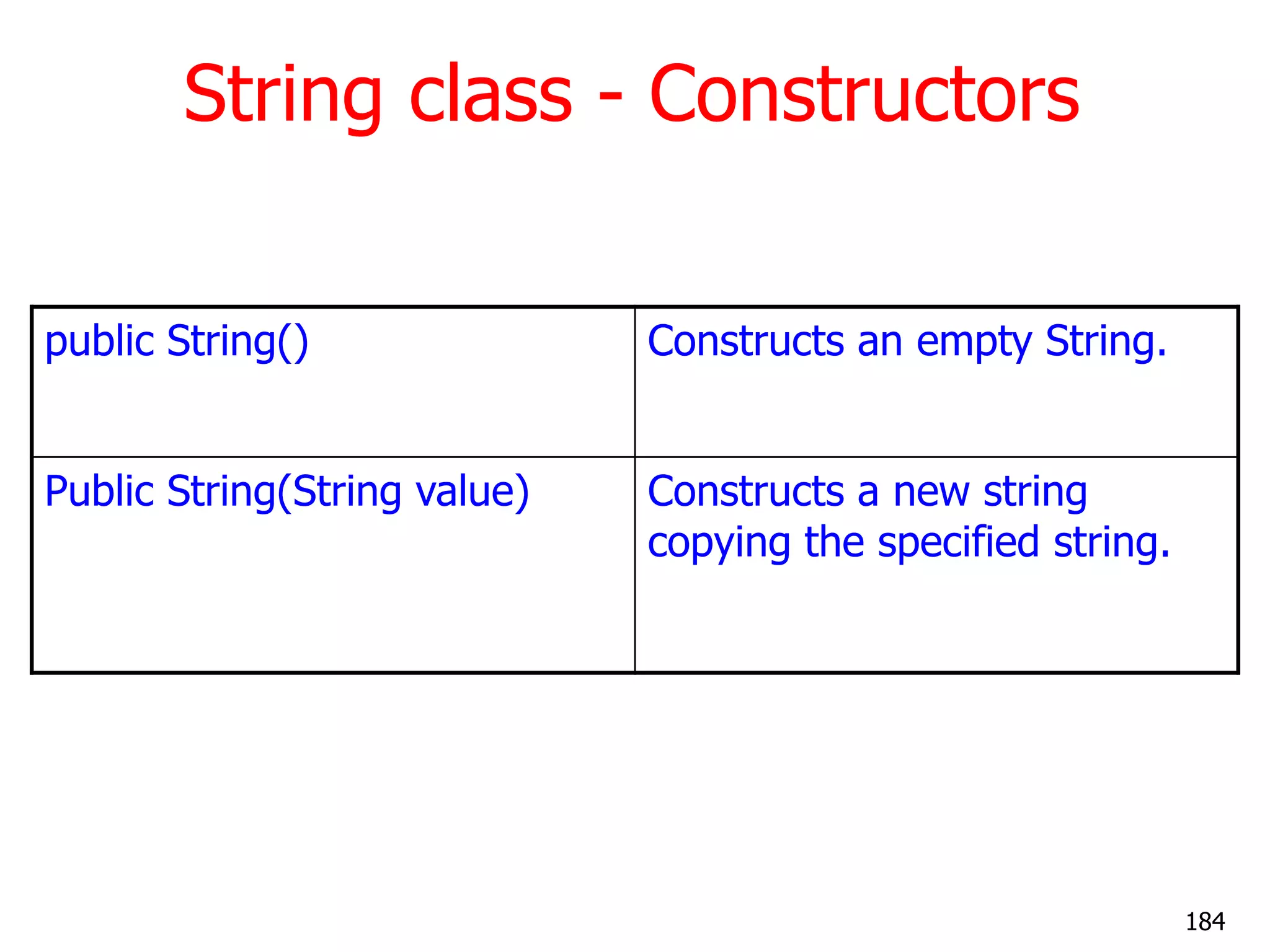
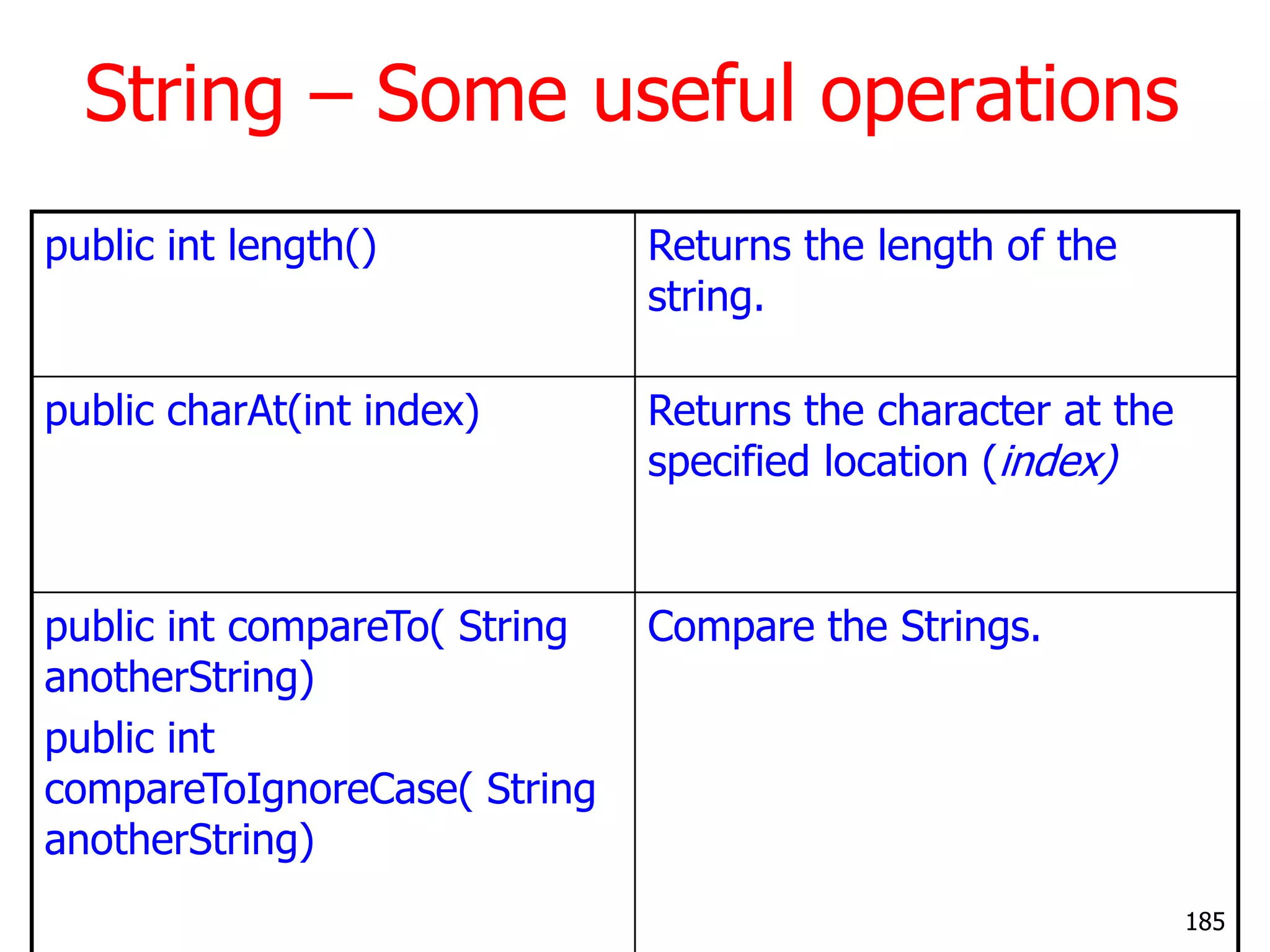
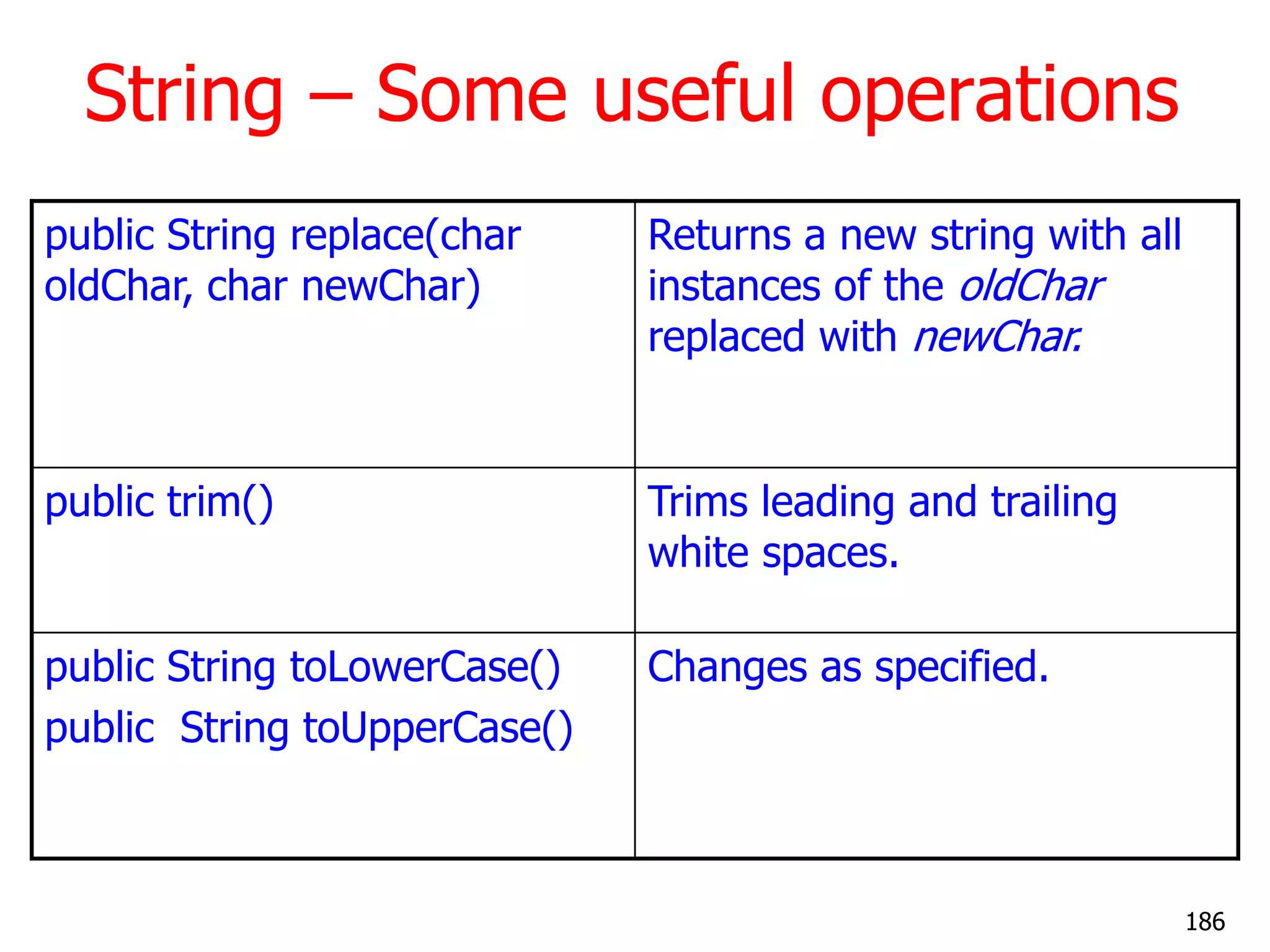
![String Class - example // StringDemo.java: some operations on strings class StringDemo { public static void main(String[] args) { String s = new String("Have a nice Day"); // String Length = 15 System.out.println("String Length = " + s.length() ); // Modified String = Have a Good Day System.out.println("Modified String = " + s.replace('n', 'N')); // Converted to Uppercse = HAVE A NICE DAY" System.out.println("Converted to Uppercase = " + s.toUpperCase()); // Converted to Lowercase = have a nice day" System.out.println("Converted to Lowercase = " + s.toLowerCase()); } } 187](https://image.slidesharecdn.com/corejavacompletenotes-121028072655-phpapp01/75/Core-java-complete-notes-Contact-at-91-814-614-5674-187-2048.jpg)
![StringDemo Output [raj@mundroo] Arrays [1:130] java StringDemo String Length = 15 Modified String = Have a Nice Day Converted to Uppercase = HAVE A NICE DAY Converted to Lowercase = have a nice day [raj@mundroo] Arrays [1:131] 188](https://image.slidesharecdn.com/corejavacompletenotes-121028072655-phpapp01/75/Core-java-complete-notes-Contact-at-91-814-614-5674-188-2048.jpg)
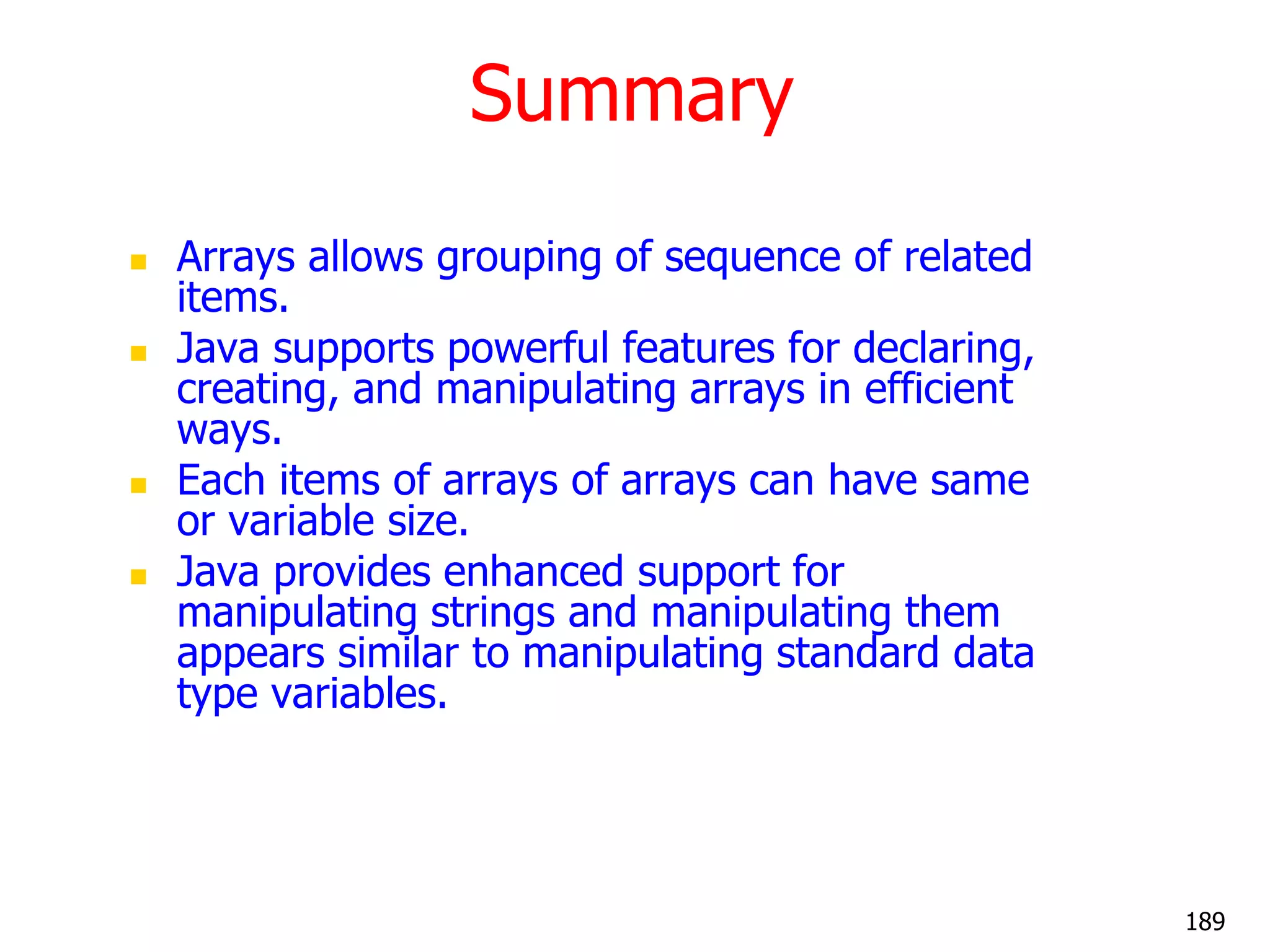
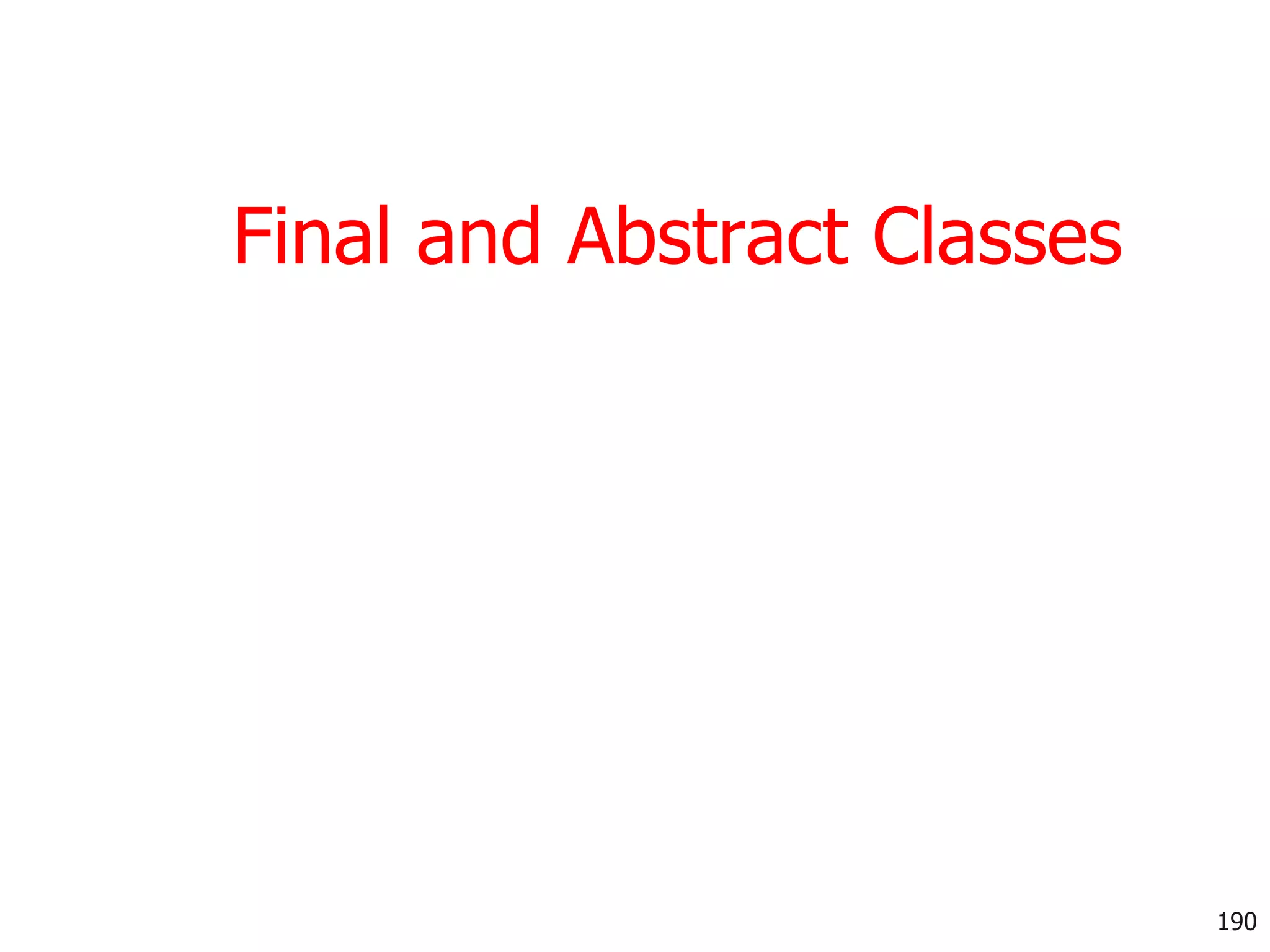

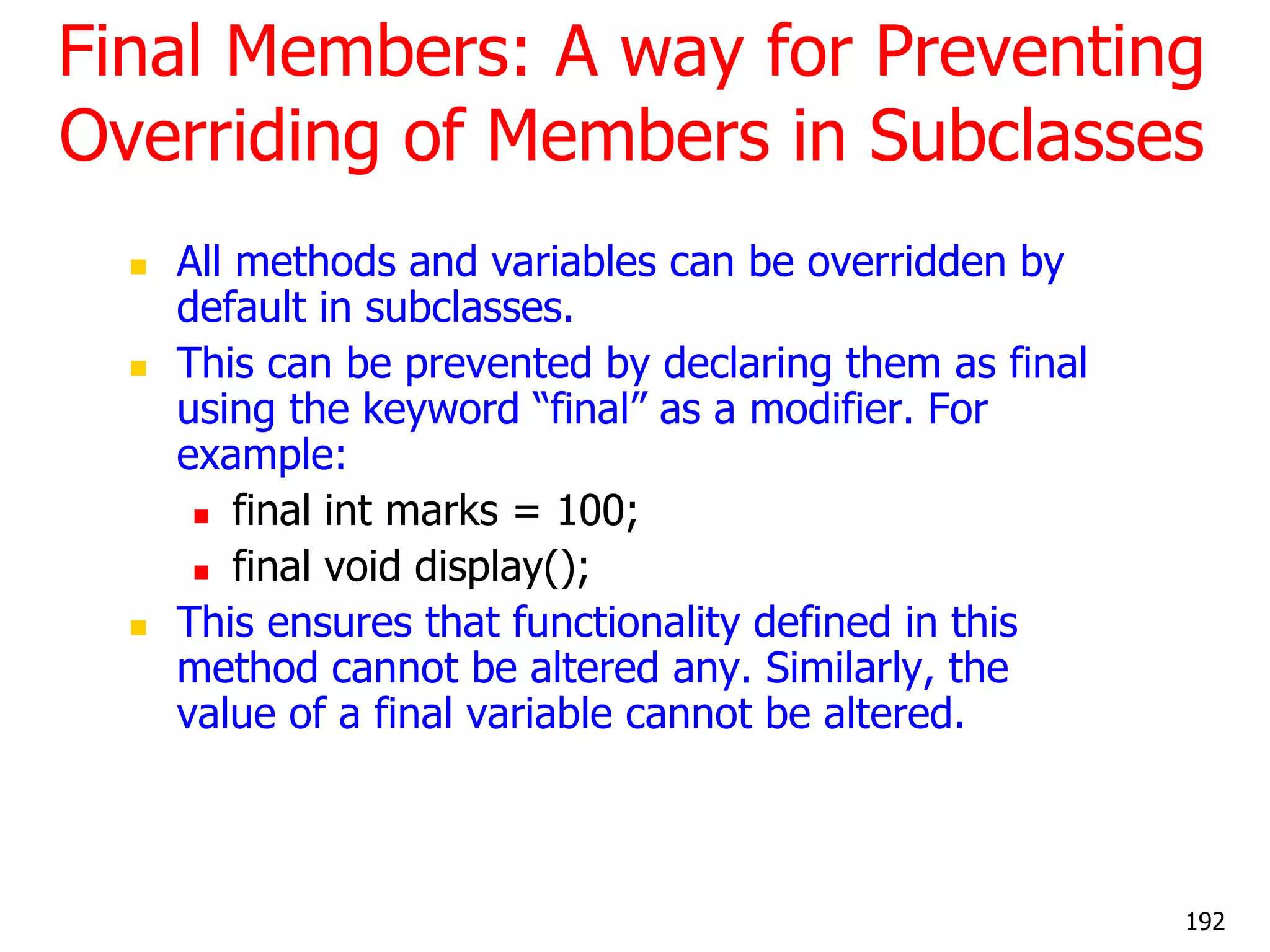
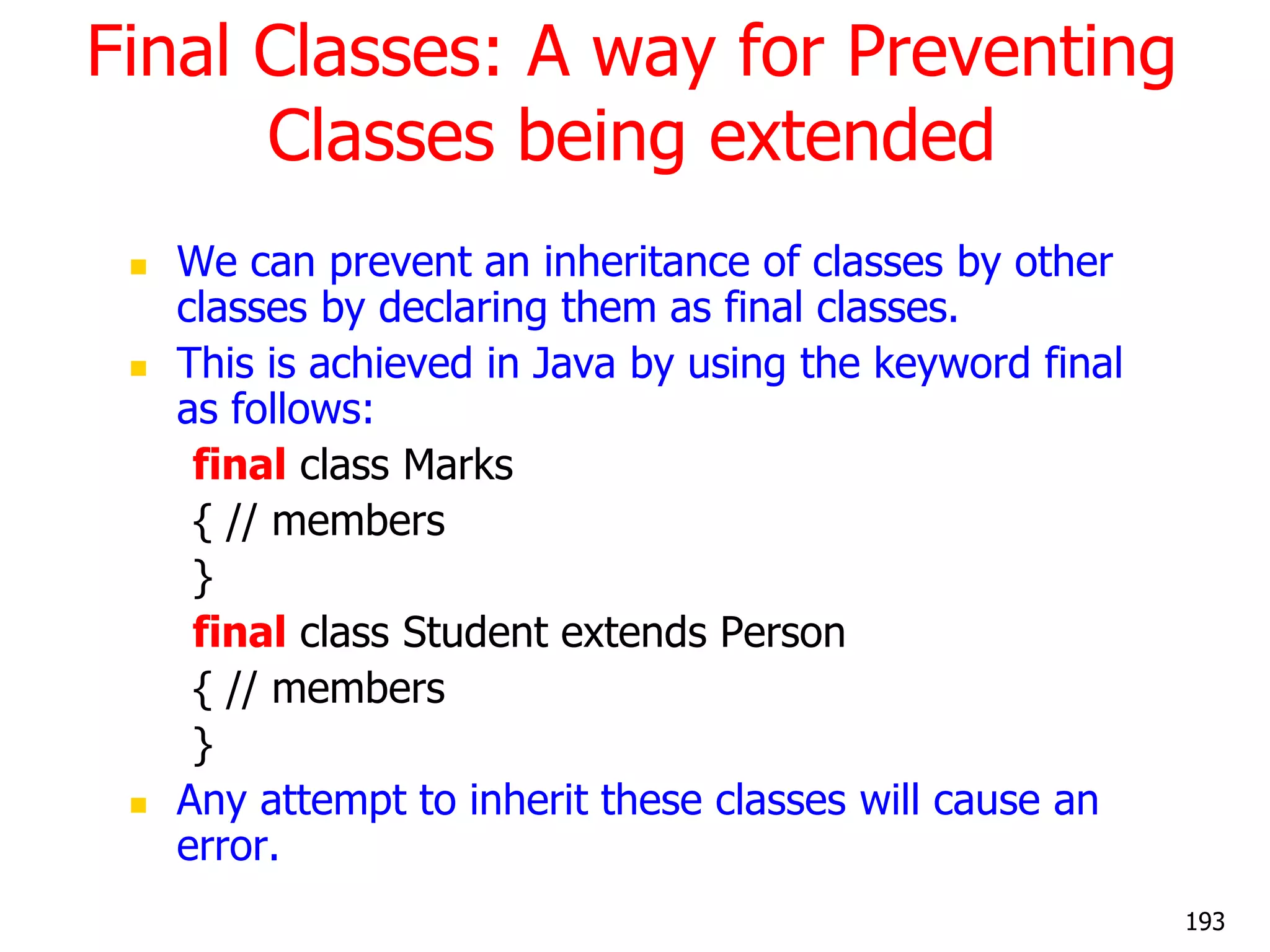
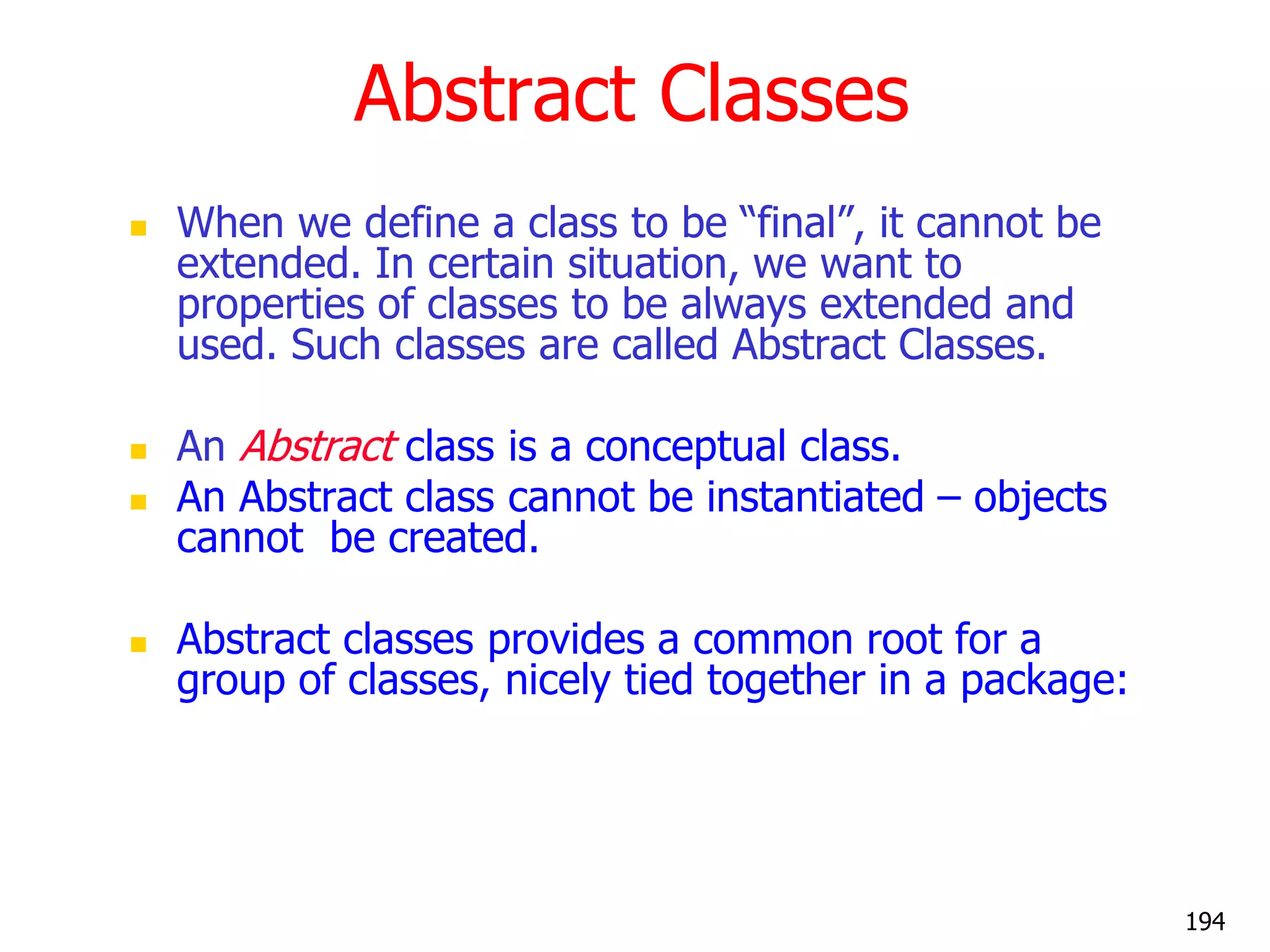


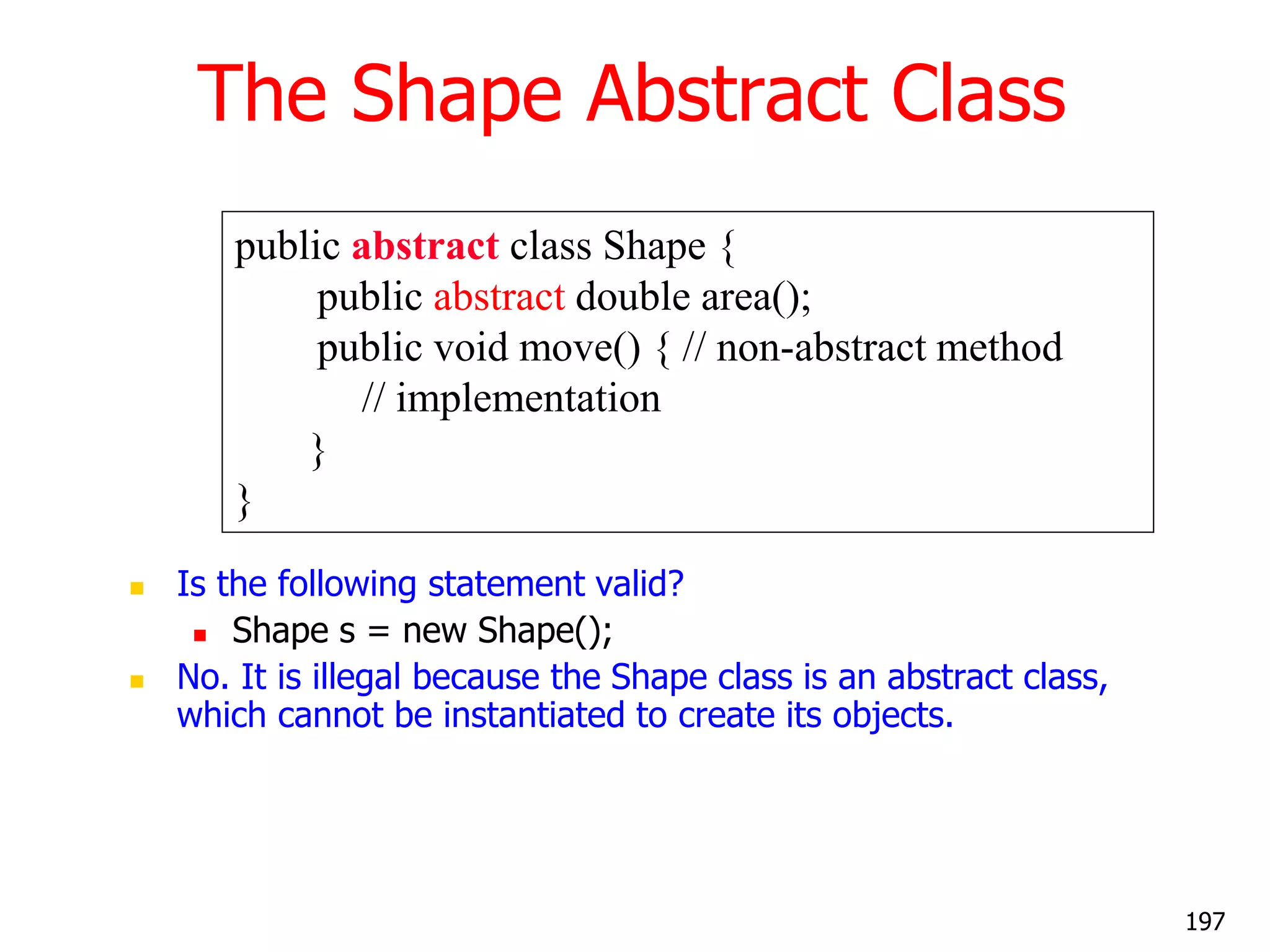
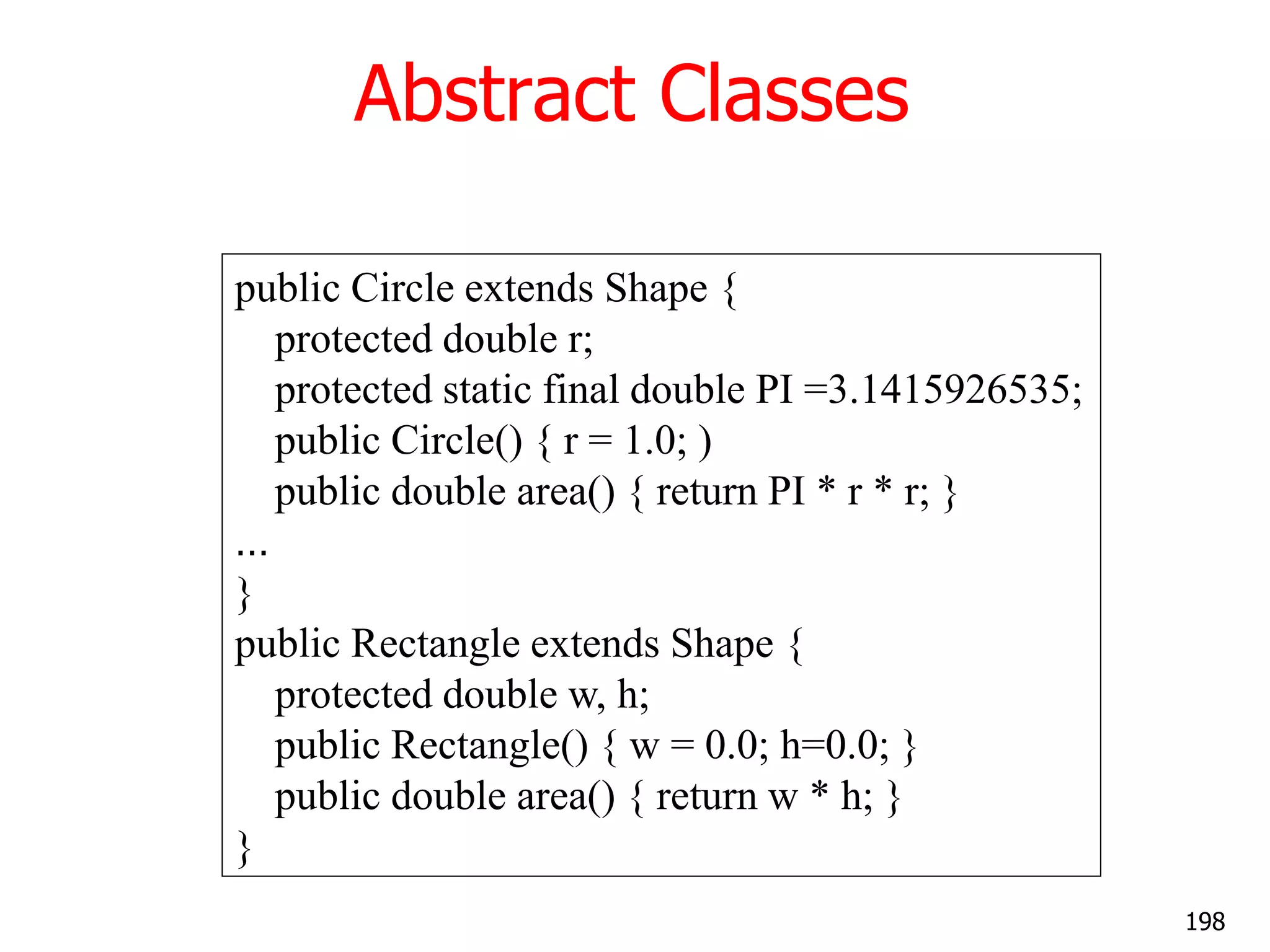
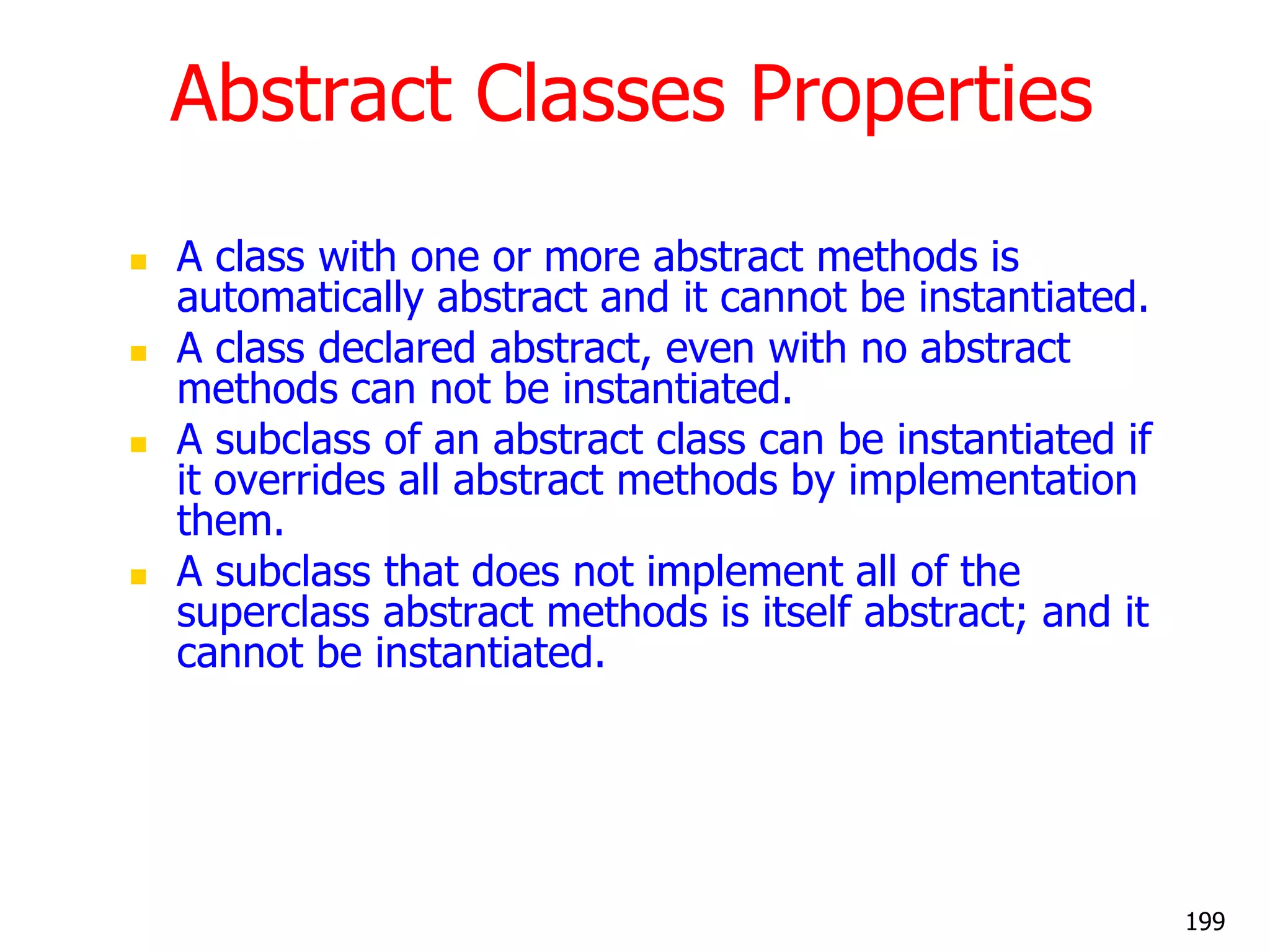


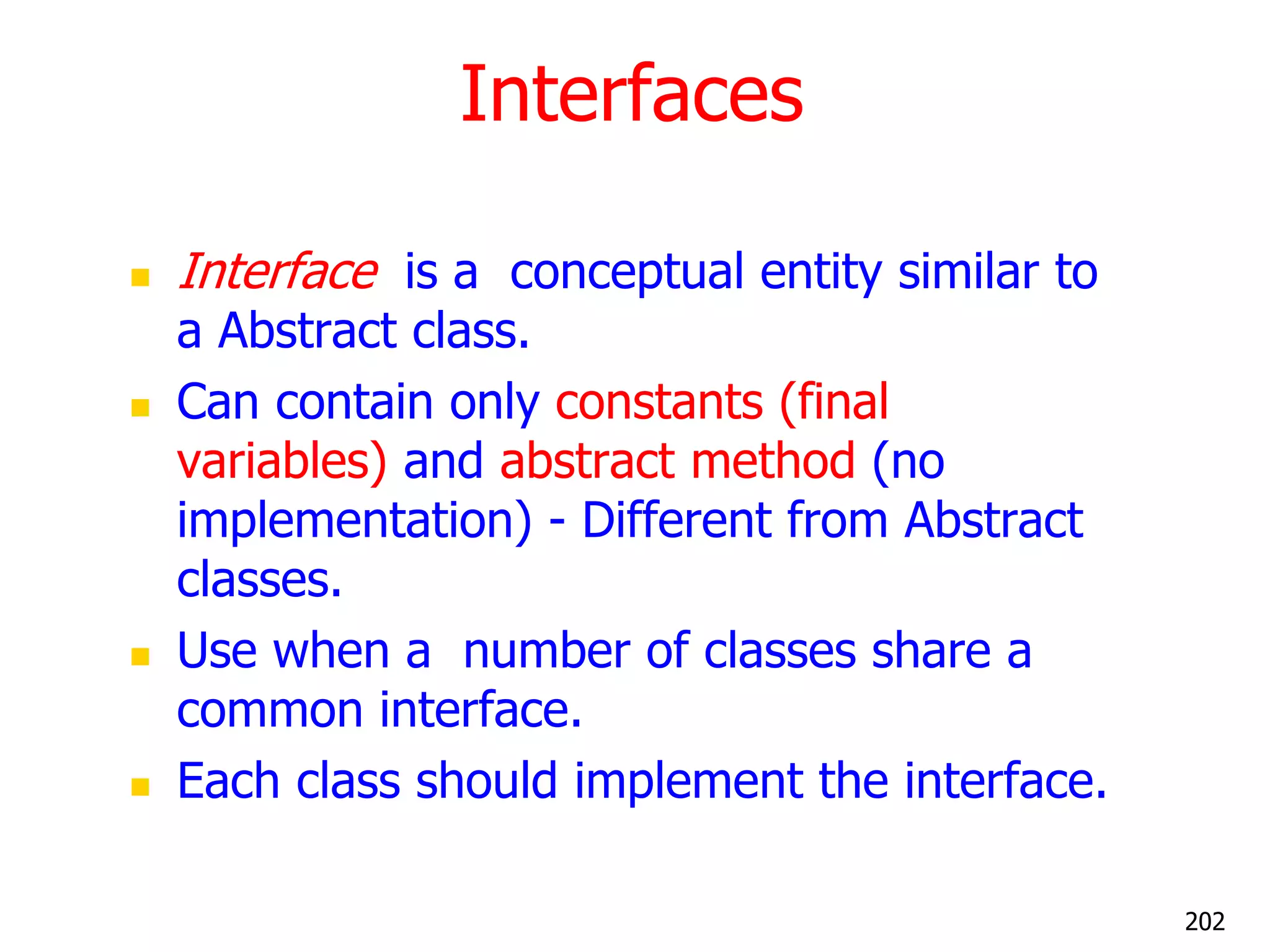
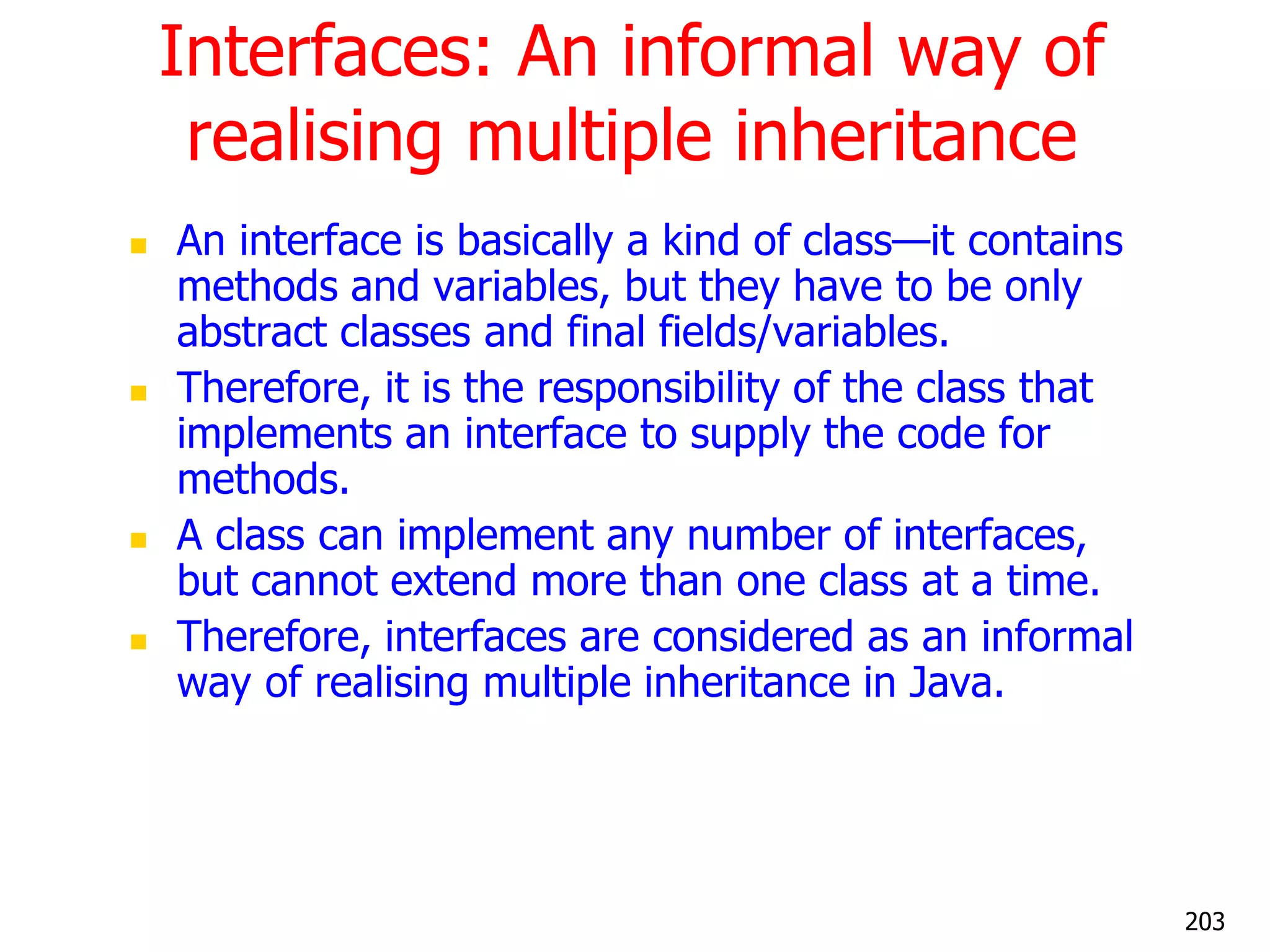
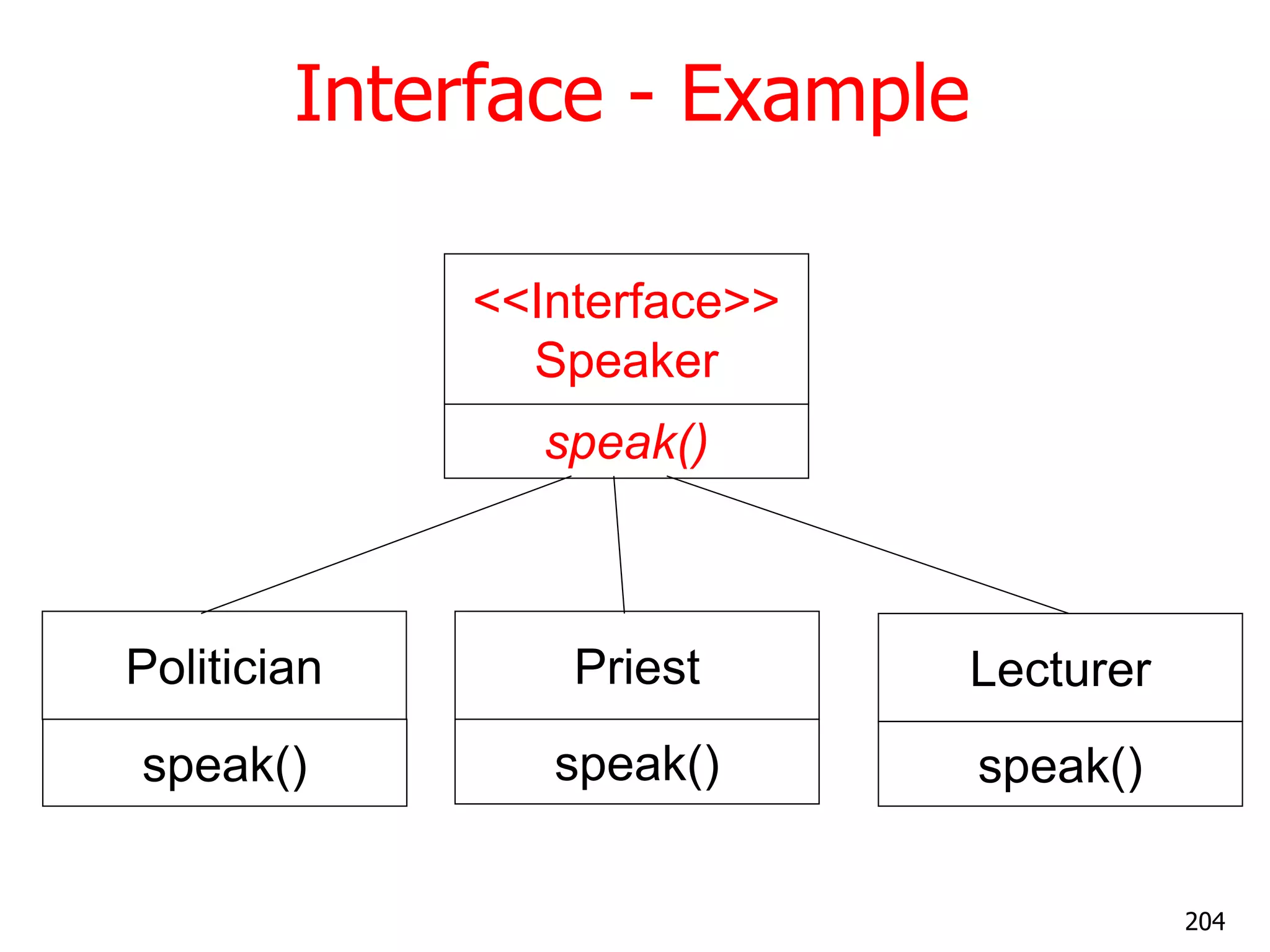
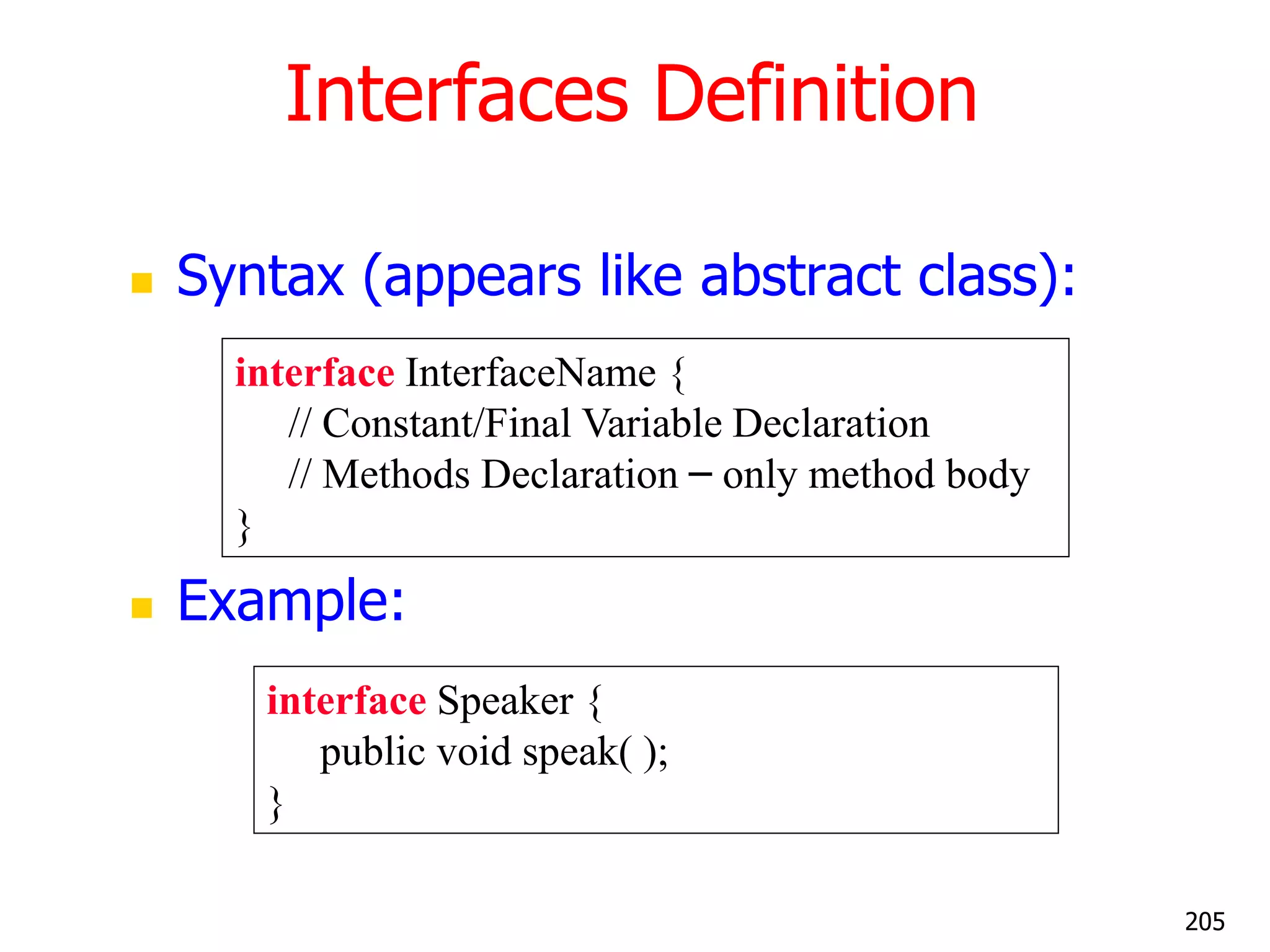
![Implementing Interfaces Interfaces are used like super-classes who properties are inherited by classes. This is achieved by creating a class that implements the given interface as follows: class ClassName implements InterfaceName [, InterfaceName2, …] { // Body of Class } 206](https://image.slidesharecdn.com/corejavacompletenotes-121028072655-phpapp01/75/Core-java-complete-notes-Contact-at-91-814-614-5674-206-2048.jpg)
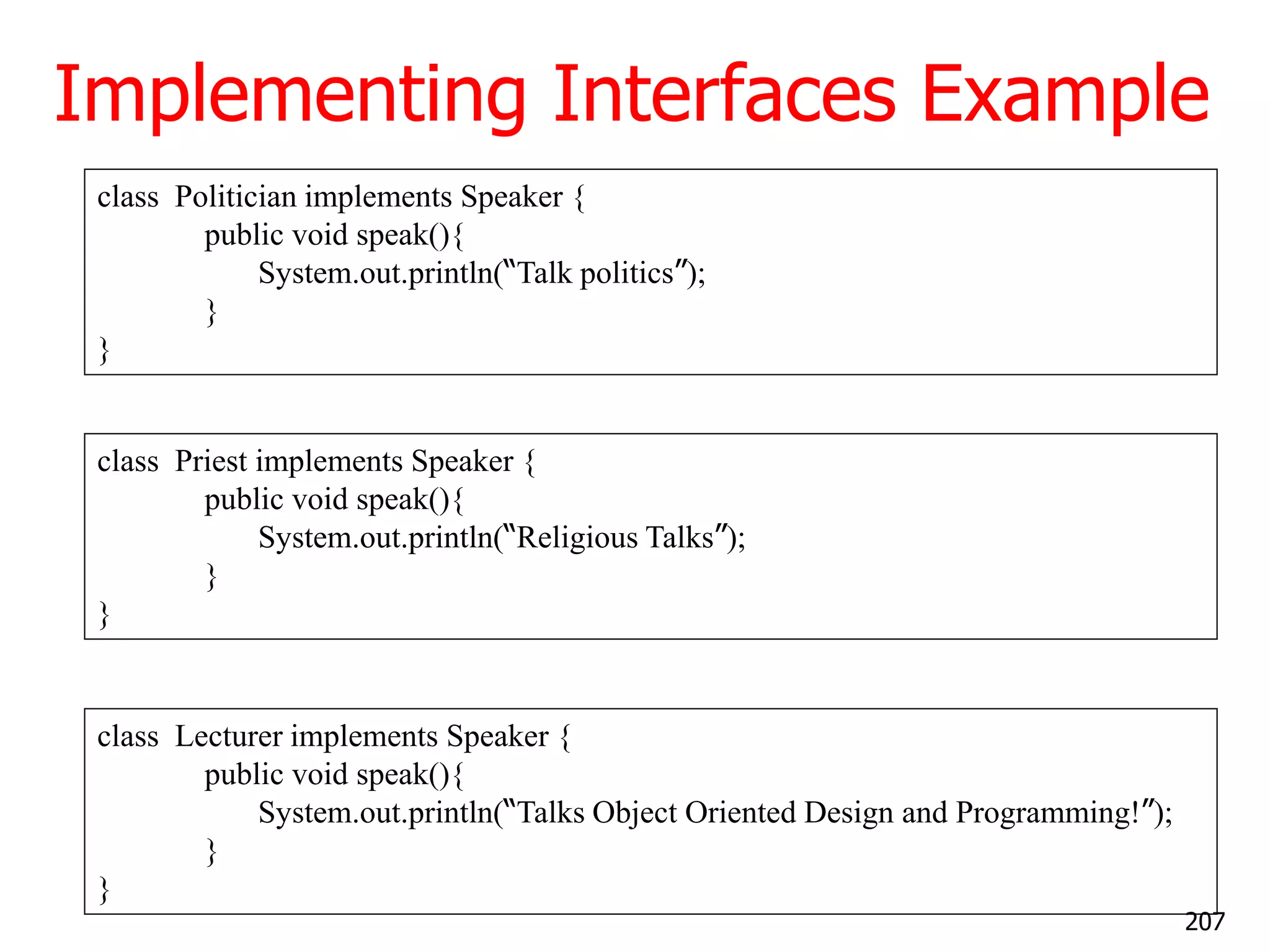

![Inheritance and Interface Implementation A general form of interface implementation: This shows a class can extended another class while implementing one or more interfaces. It appears like a multiple inheritance (if we consider interfaces as special kind of classes with certain restrictions or special features). class ClassName extends SuperClass implements InterfaceName [, InterfaceName2, …] { // Body of Class } 209](https://image.slidesharecdn.com/corejavacompletenotes-121028072655-phpapp01/75/Core-java-complete-notes-Contact-at-91-814-614-5674-209-2048.jpg)
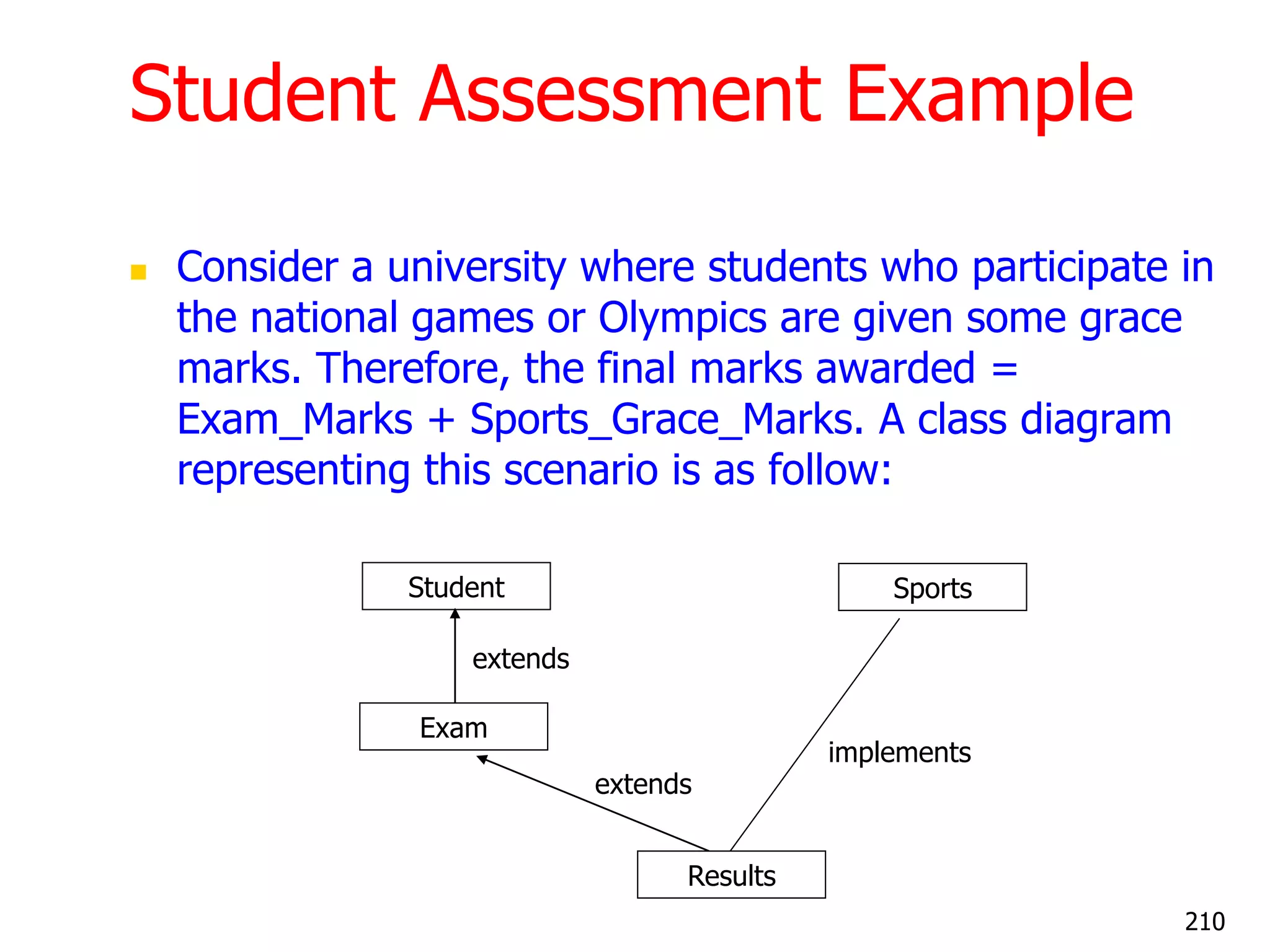

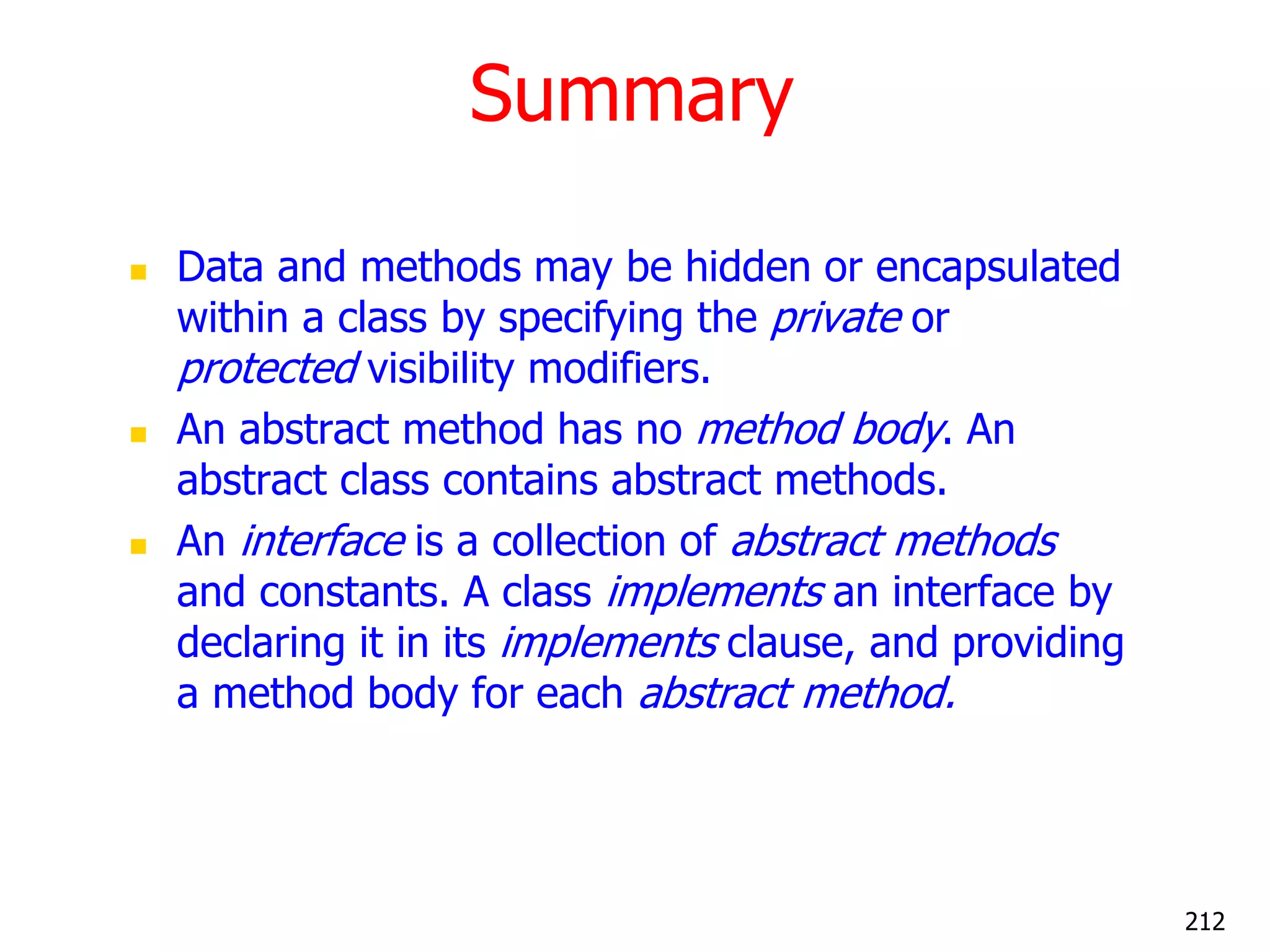
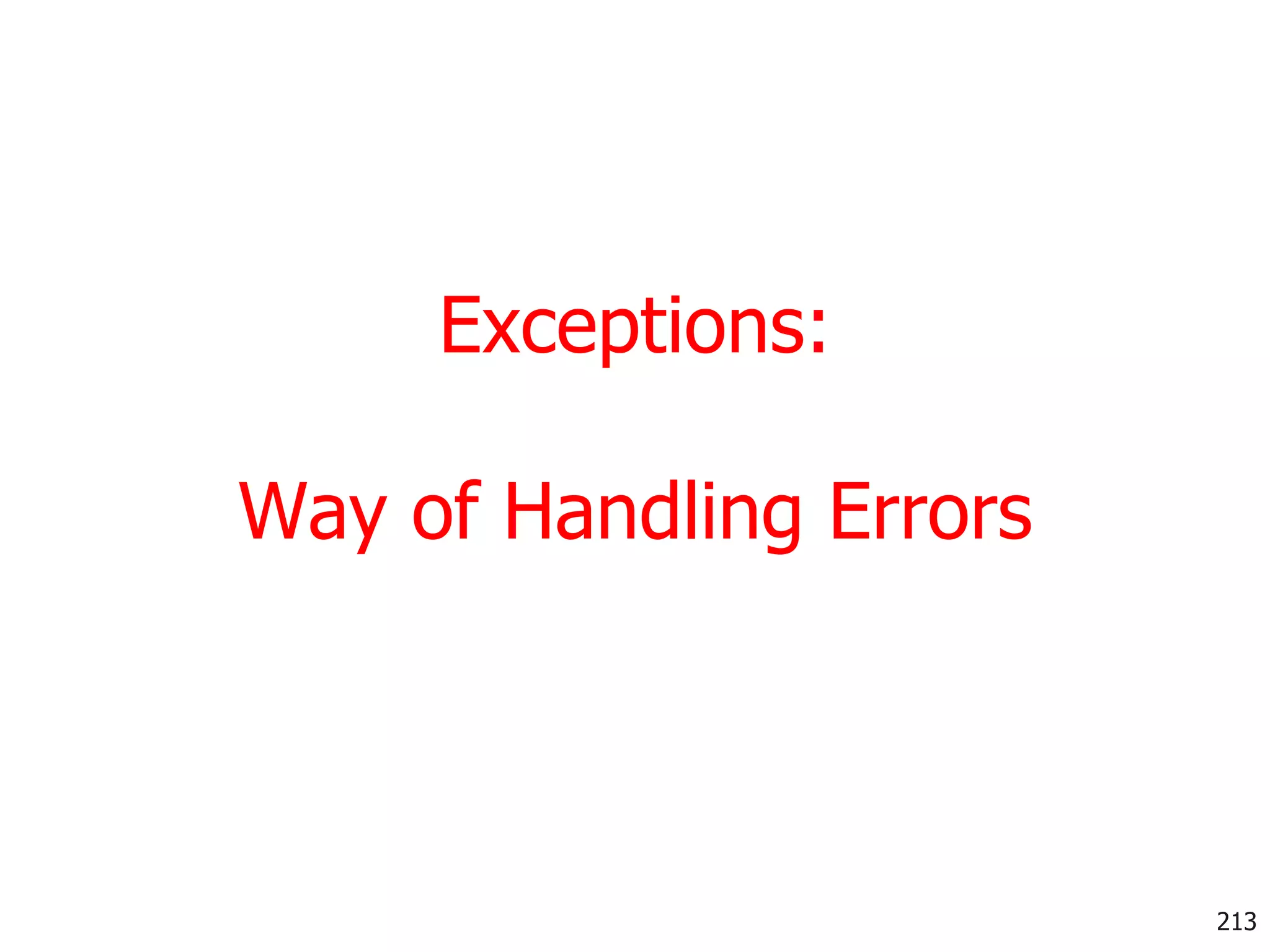
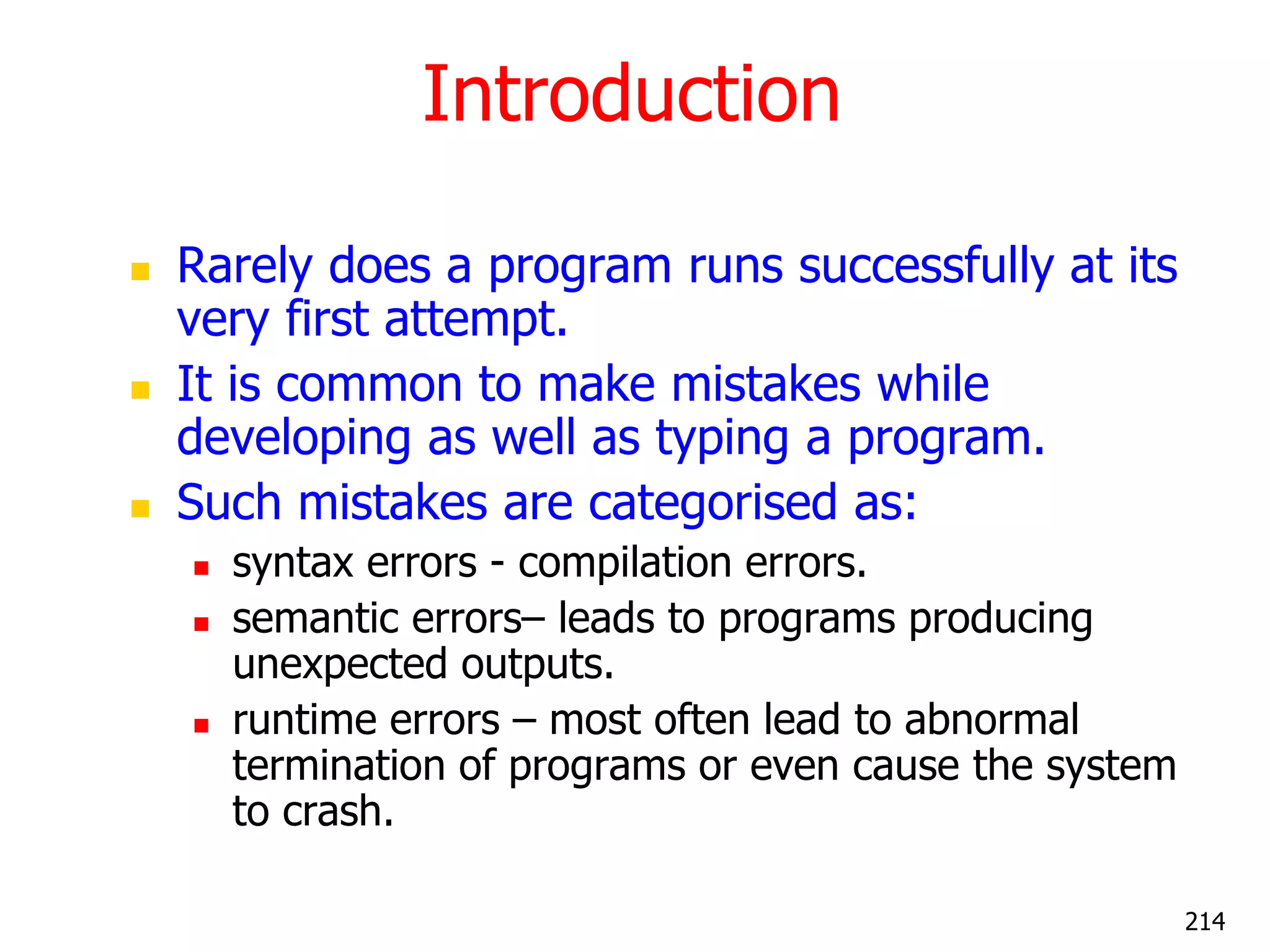

![Without Error Handling – Example 1 class NoErrorHandling{ public static void main(String[] args){ int a,b; a = 7; b = 0; System.out.println(“Result is “ + a/b); System.out.println(“Program reached this line”); } } Program does not reach here No compilation errors. While running it reports an error and stops without executing further statements: java.lang.ArithmeticException: / by zero at Error2.main(Error2.java:10) 216](https://image.slidesharecdn.com/corejavacompletenotes-121028072655-phpapp01/75/Core-java-complete-notes-Contact-at-91-814-614-5674-216-2048.jpg)
![Traditional way of Error Handling - Example 2 class WithErrorHandling{ public static void main(String[] args){ int a,b; a = 7; b = 0; if (b != 0){ System.out.println(“Result is “ + a/b); } else{ System.out.println(“ B is zero); } System.out.println(“Program is complete”); } } Program reaches here 217](https://image.slidesharecdn.com/corejavacompletenotes-121028072655-phpapp01/75/Core-java-complete-notes-Contact-at-91-814-614-5674-217-2048.jpg)

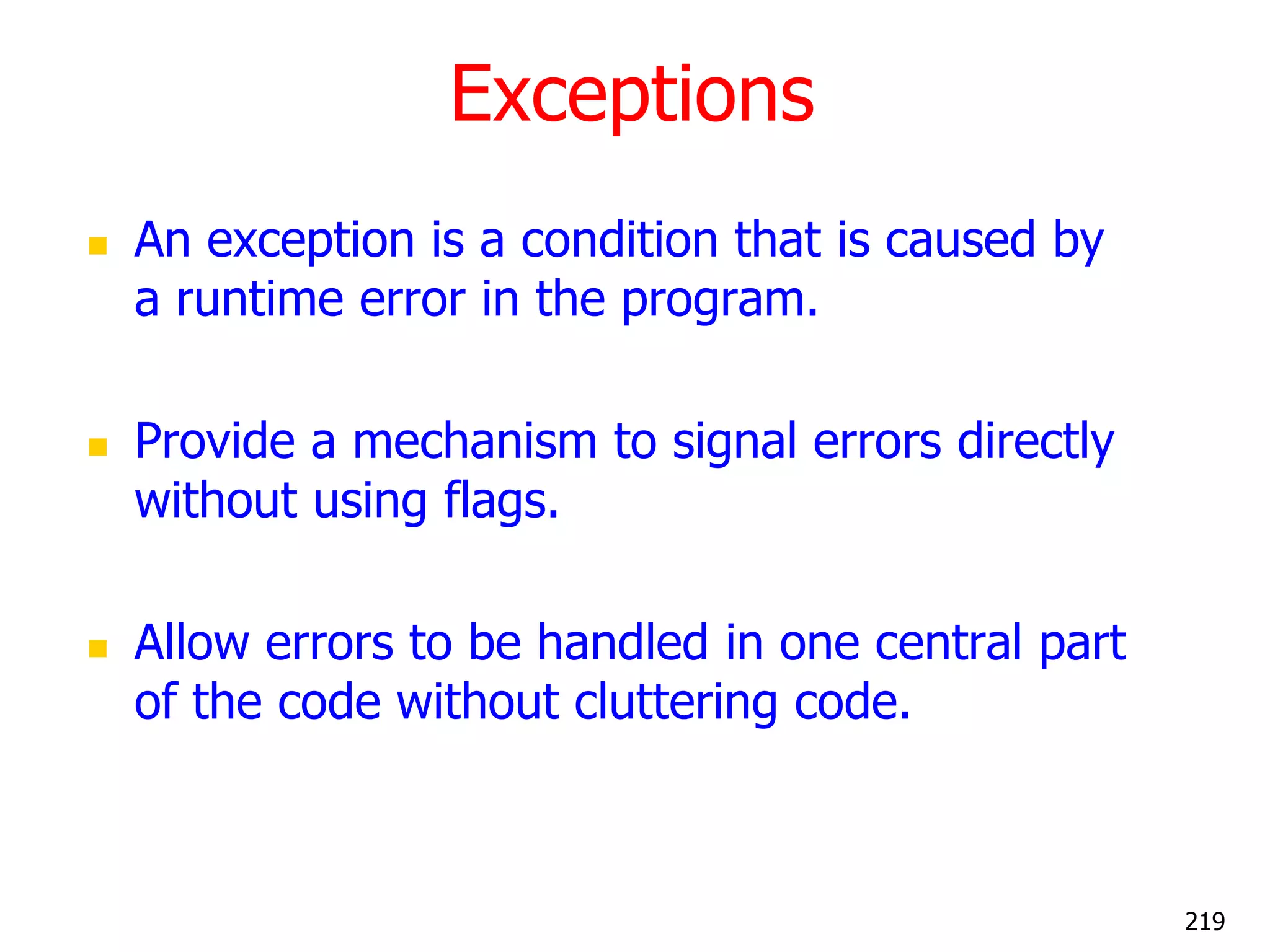
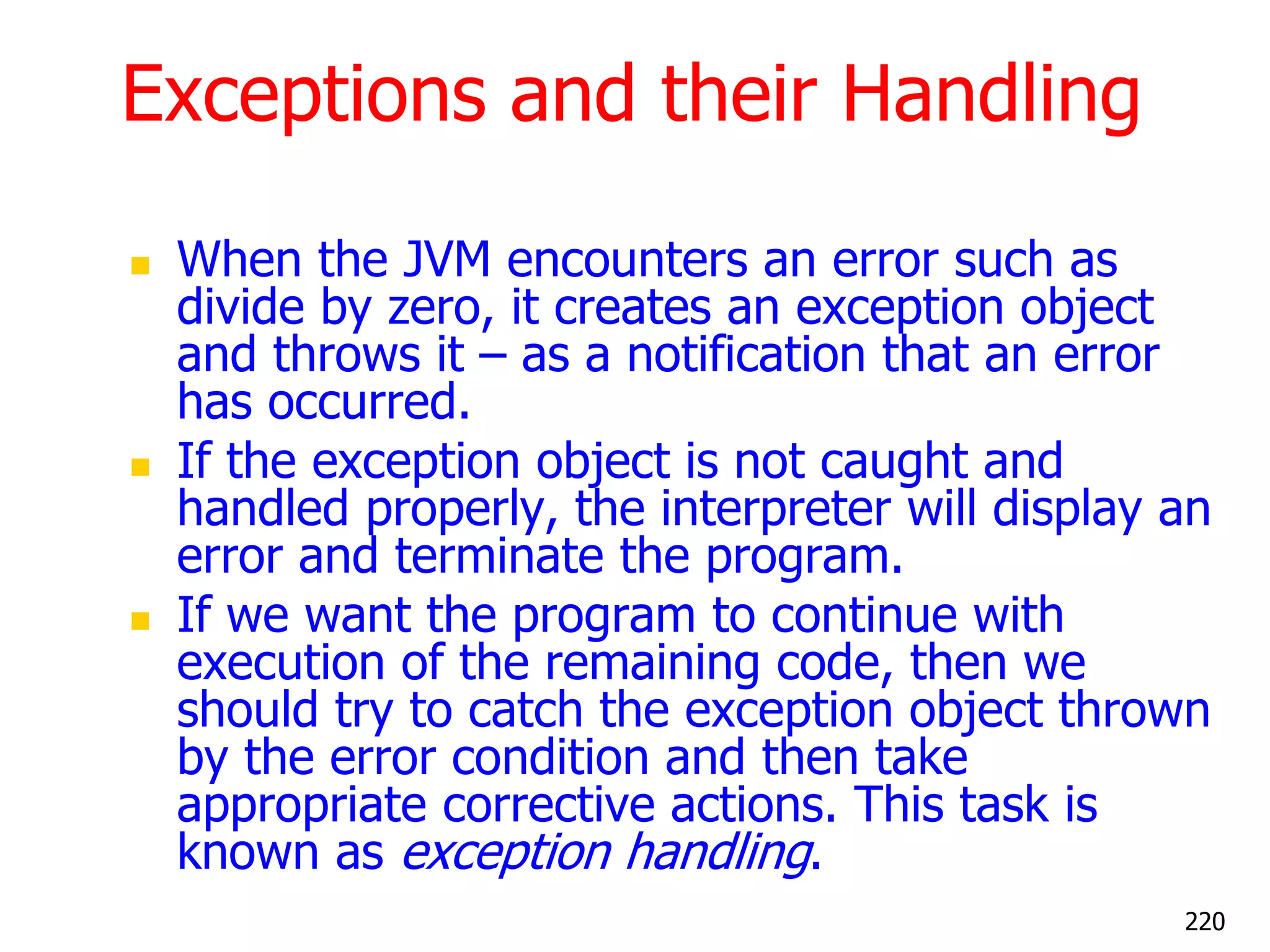

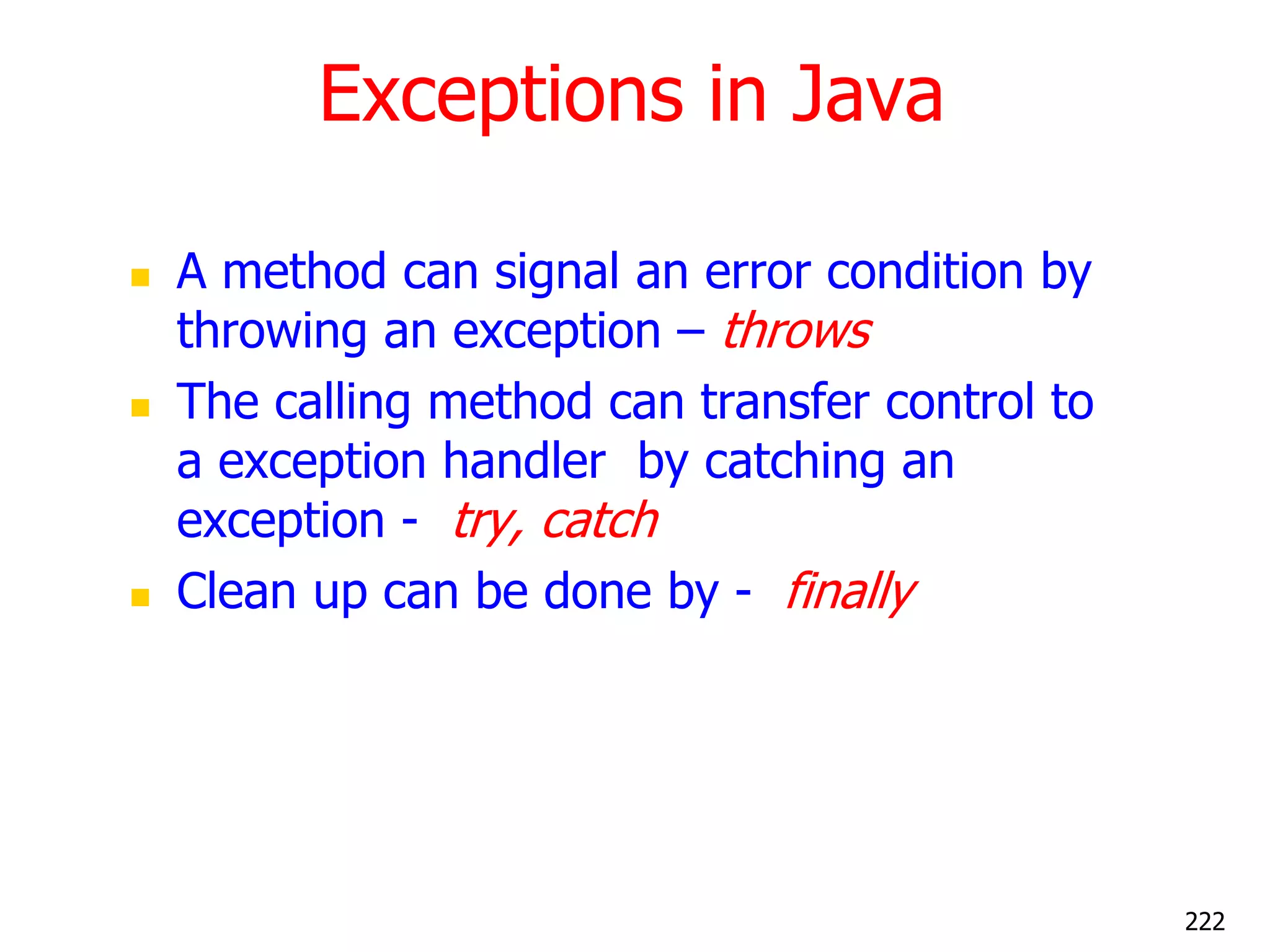
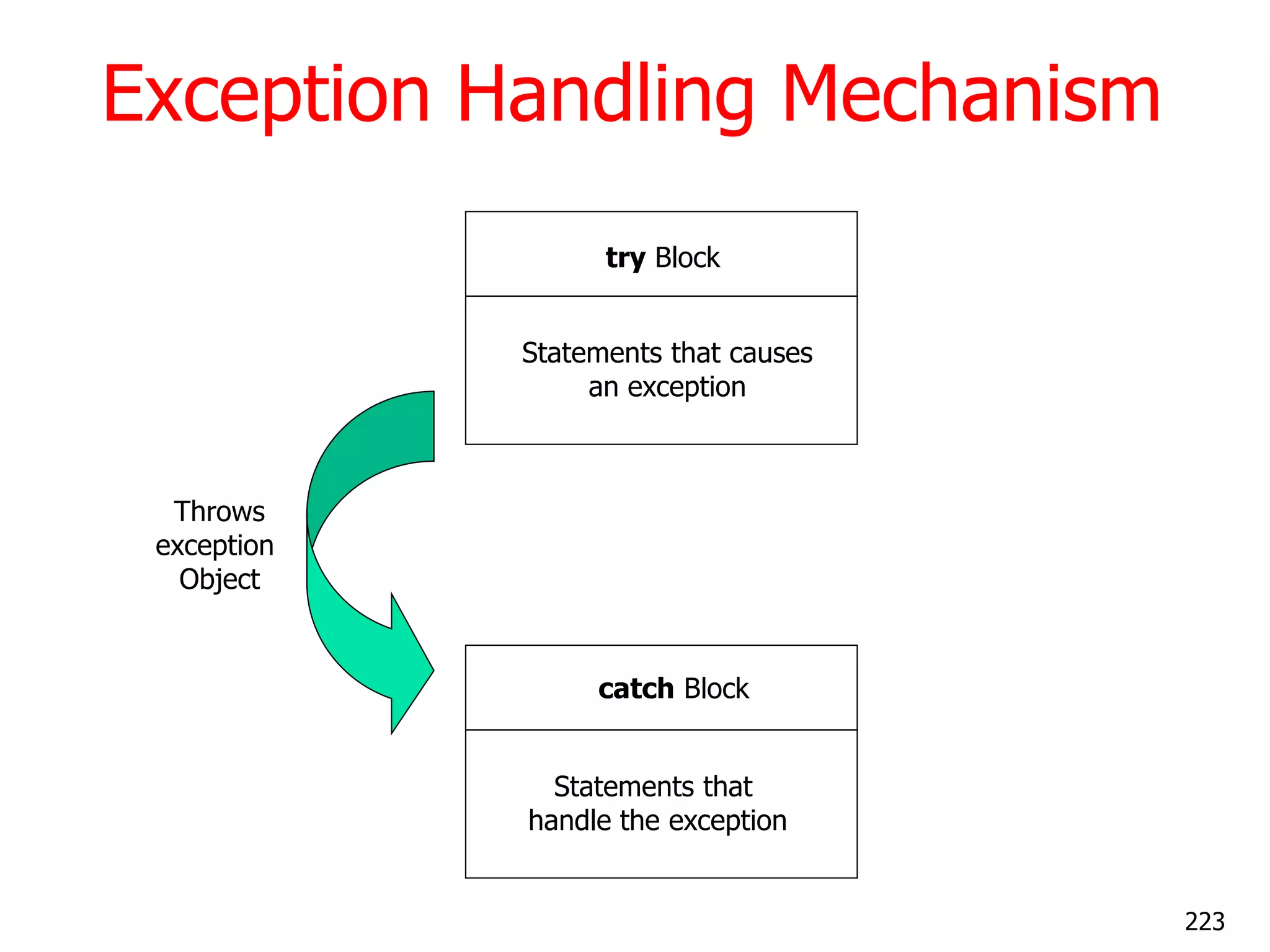

![With Exception Handling - Example 3 class WithExceptionHandling{ public static void main(String[] args){ int a,b; float r; a = 7; b = 0; try{ r = a/b; System.out.println(“Result is “ + r); } catch(ArithmeticException e){ System.out.println(“ B is zero); } System.out.println(“Program reached this line”); } } Program Reaches here 225](https://image.slidesharecdn.com/corejavacompletenotes-121028072655-phpapp01/75/Core-java-complete-notes-Contact-at-91-814-614-5674-225-2048.jpg)
![Finding a Sum of Integer Values Passed as Command Line Parameters // ComLineSum.java: adding command line parameters class ComLineSum { public static void main(String args[]) { int InvalidCount = 0; int number, sum = 0; for( int i = 0; i < args.length; i++) { try { number = Integer.parseInt(args[i]); } catch(NumberFormatException e) { InvalidCount++; System.out.println("Invalid Number: "+args[i]); continue;//skip the remaining part of loop } sum += number; } System.out.println("Number of Invalid Arguments = "+InvalidCount); System.out.println("Number of Valid Arguments = "+(args.length-InvalidCount)); System.out.println("Sum of Valid Arguments = "+sum); } } 226](https://image.slidesharecdn.com/corejavacompletenotes-121028072655-phpapp01/75/Core-java-complete-notes-Contact-at-91-814-614-5674-226-2048.jpg)
![Sample Runs [raj@mundroo] java ComLineSum 1 2 Number of Invalid Arguments = 0 Number of Valid Arguments = 2 Sum of Valid Arguments = 3 [raj@mundroo] java ComLineSum 1 2 abc Invalid Number: abc Number of Invalid Arguments = 1 Number of Valid Arguments = 2 Sum of Valid Arguments = 3 227](https://image.slidesharecdn.com/corejavacompletenotes-121028072655-phpapp01/75/Core-java-complete-notes-Contact-at-91-814-614-5674-227-2048.jpg)

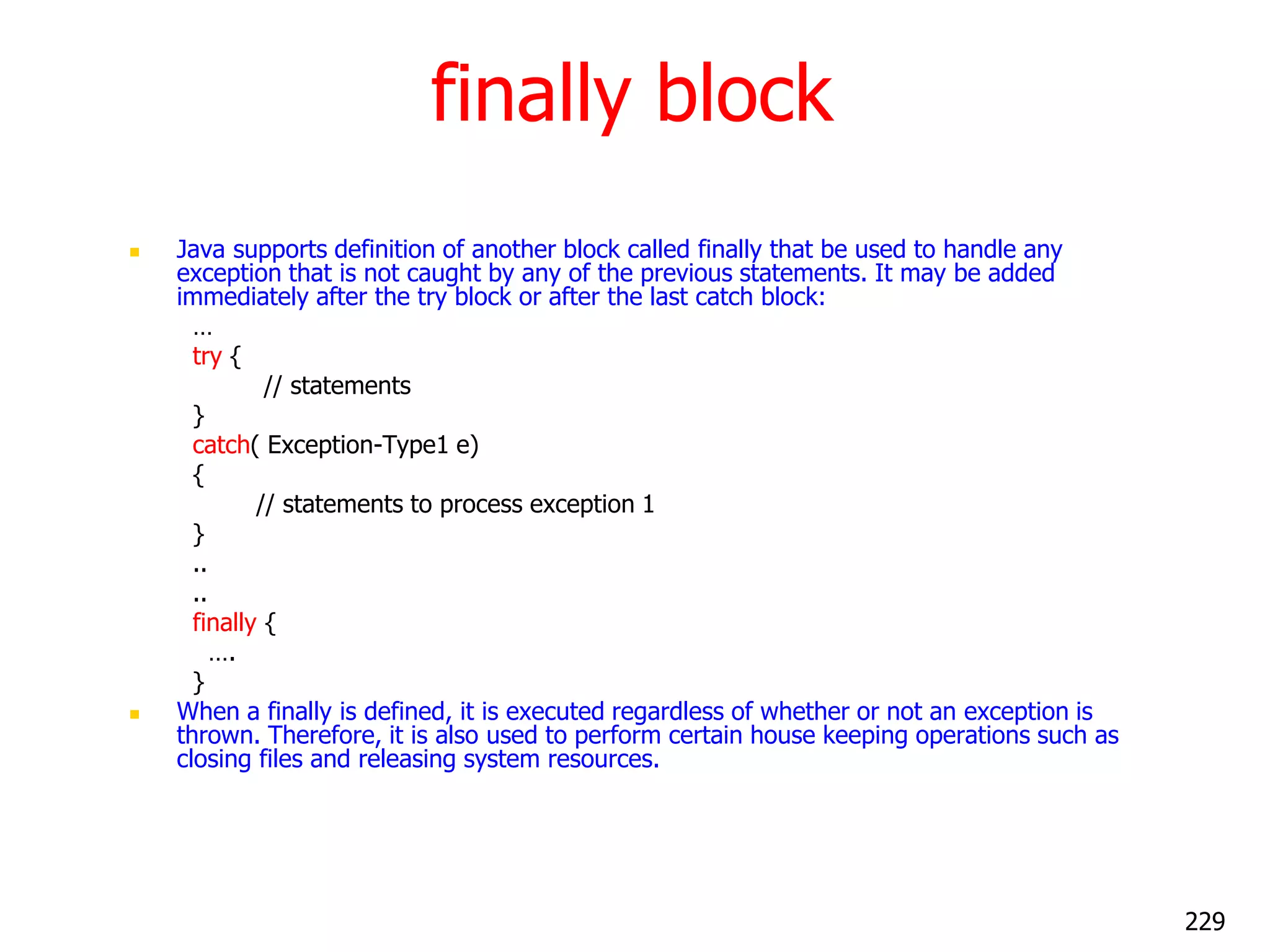
![With Exception Handling - Example 4 class WithExceptionCatchThrow{ public static void main(String[] args){ int a,b; float r; a = 7; b = 0; try{ r = a/b; System.out.println(“Result is “ + r); } catch(ArithmeticException e){ System.out.println(“ B is zero); throw e; } System.out.println(“Program is complete”); } } Program Does Not reach here when exception occurs 230](https://image.slidesharecdn.com/corejavacompletenotes-121028072655-phpapp01/75/Core-java-complete-notes-Contact-at-91-814-614-5674-230-2048.jpg)
![With Exception Handling - Example 5 class WithExceptionCatchThrowFinally{ public static void main(String[] args){ int a,b; float r; a = 7; b = 0; try{ r = a/b; System.out.println(“Result is “ + r); } catch(ArithmeticException e){ System.out.println(“ B is zero); throw e; } finally{ System.out.println(“Program is complete”); } } } Program reaches here 231](https://image.slidesharecdn.com/corejavacompletenotes-121028072655-phpapp01/75/Core-java-complete-notes-Contact-at-91-814-614-5674-231-2048.jpg)

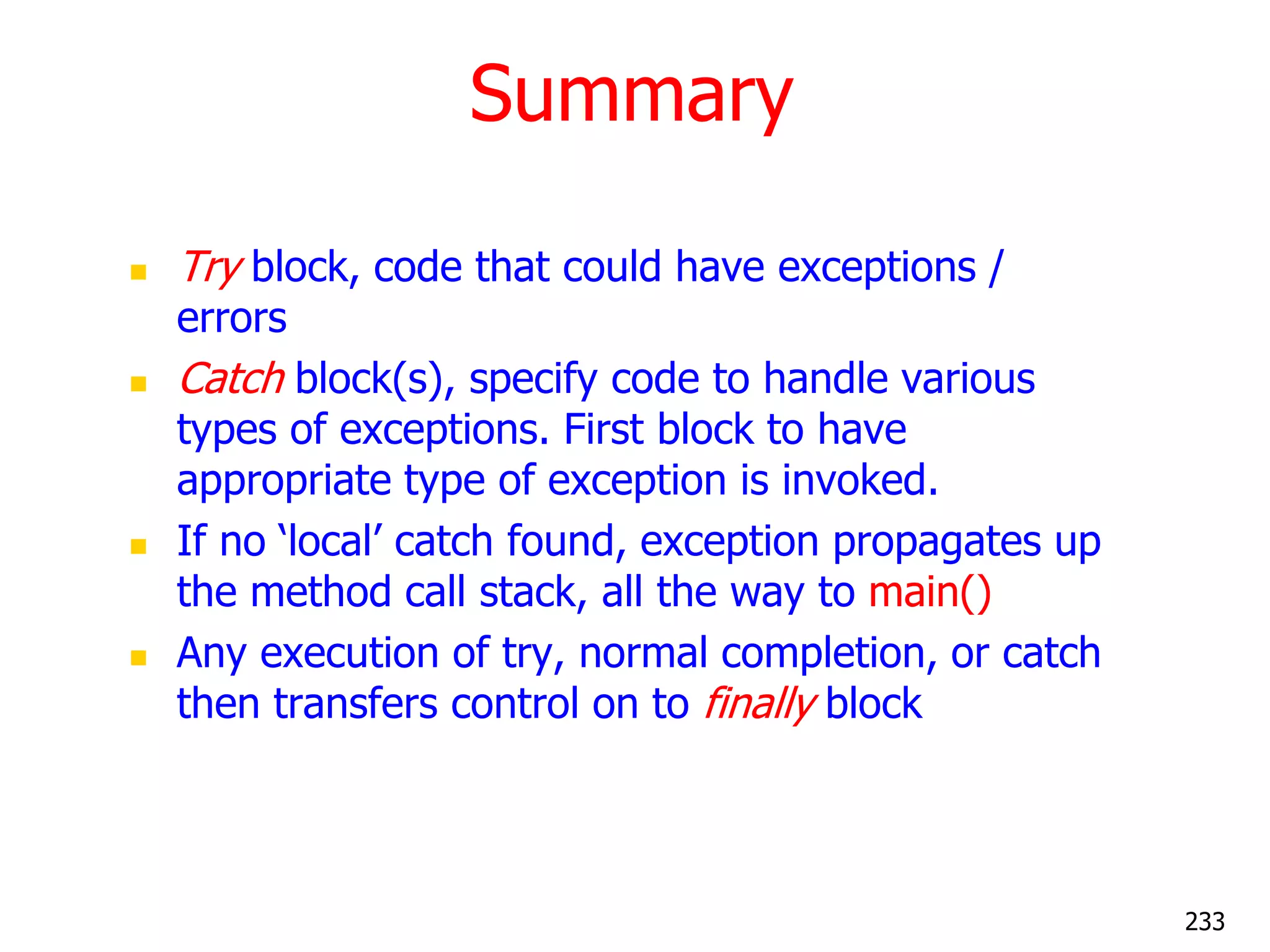
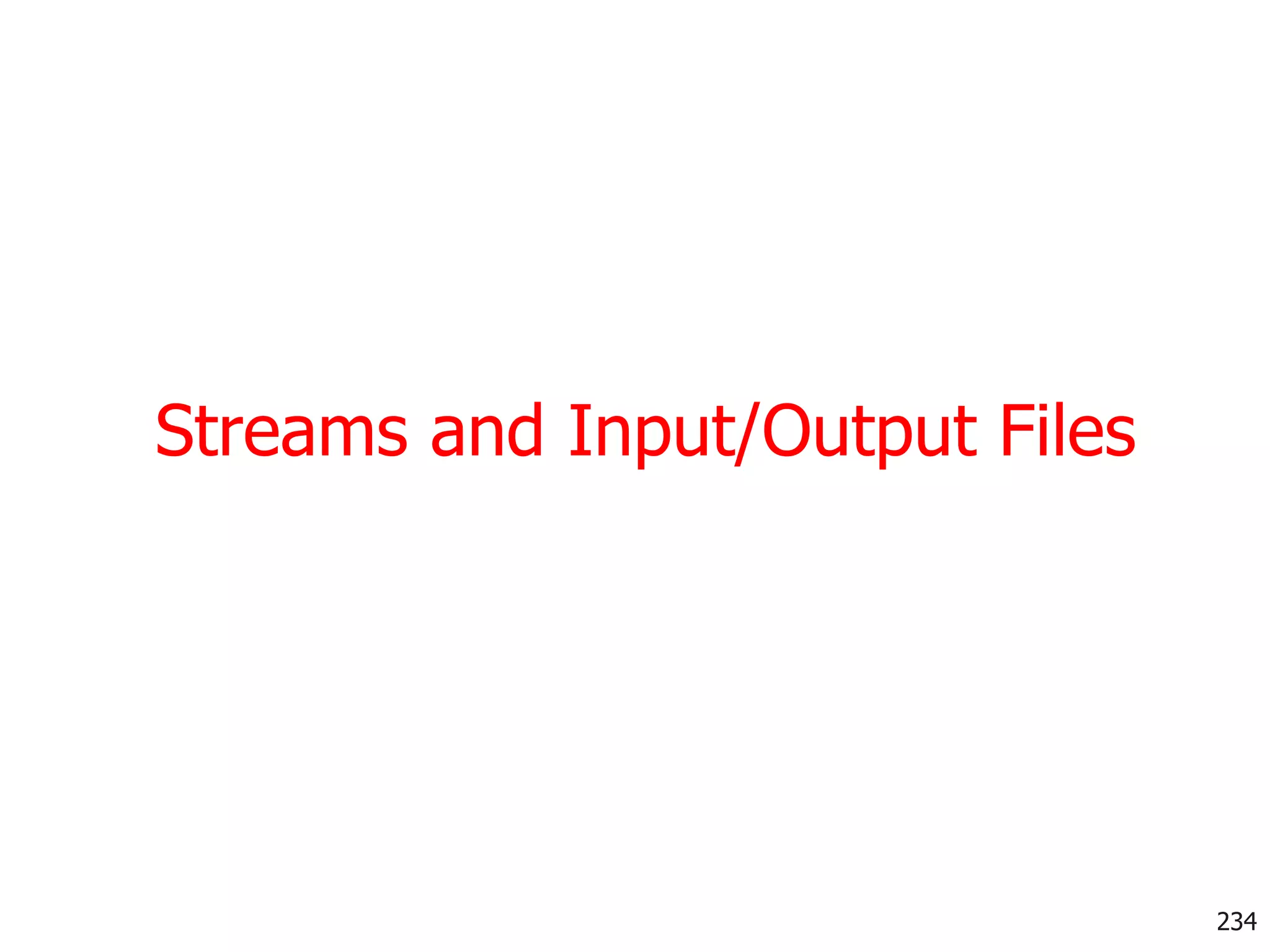
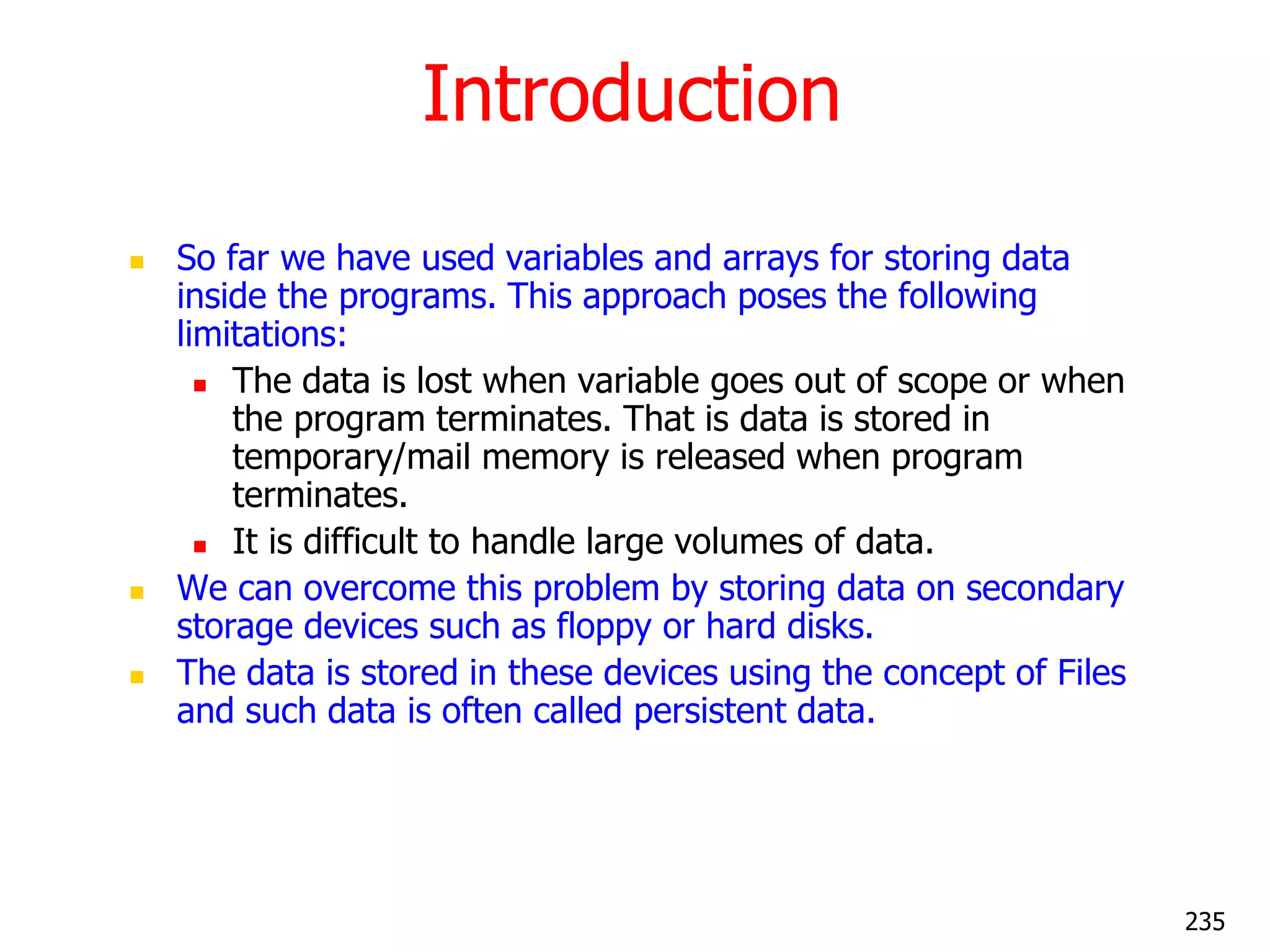
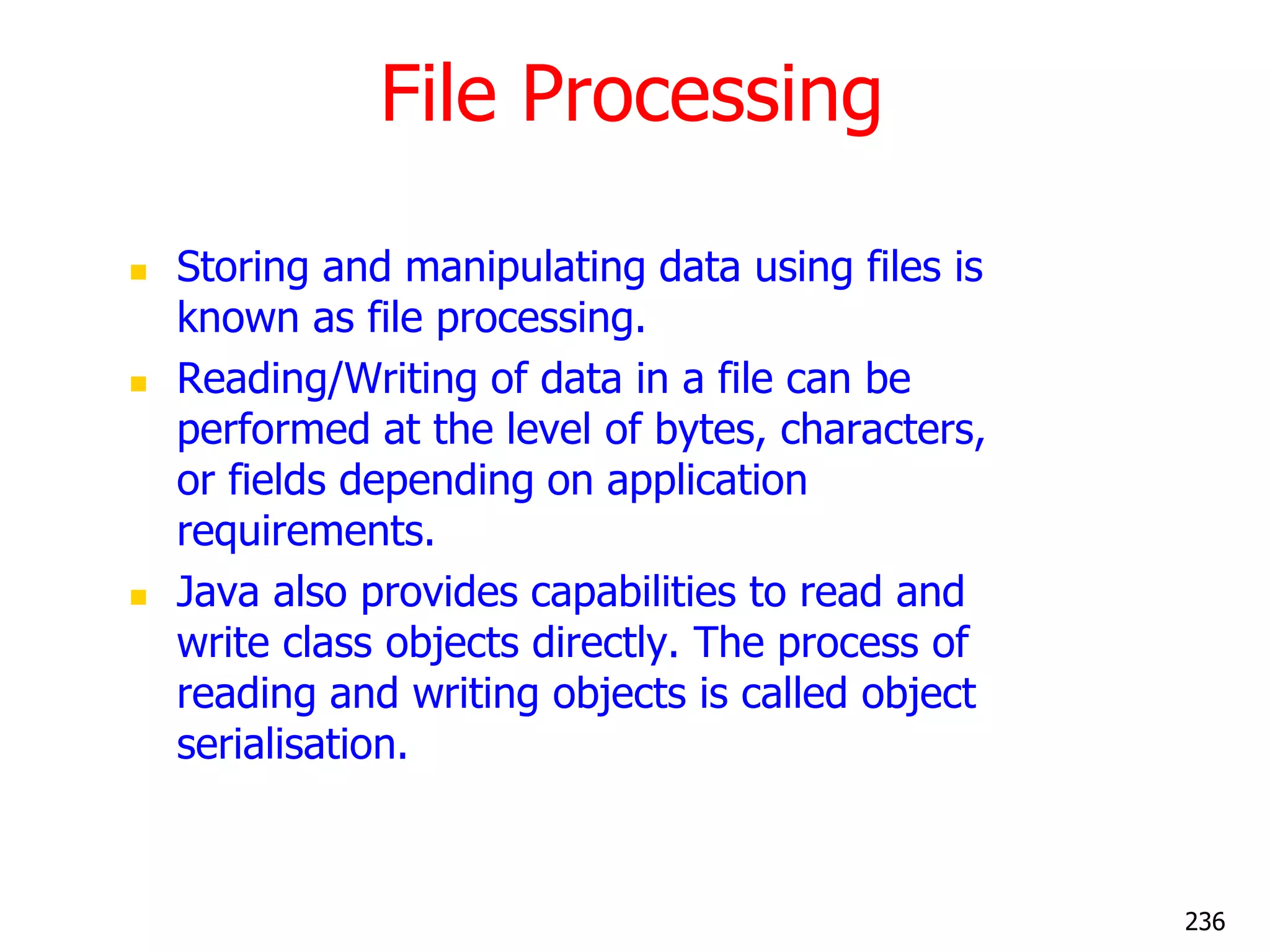
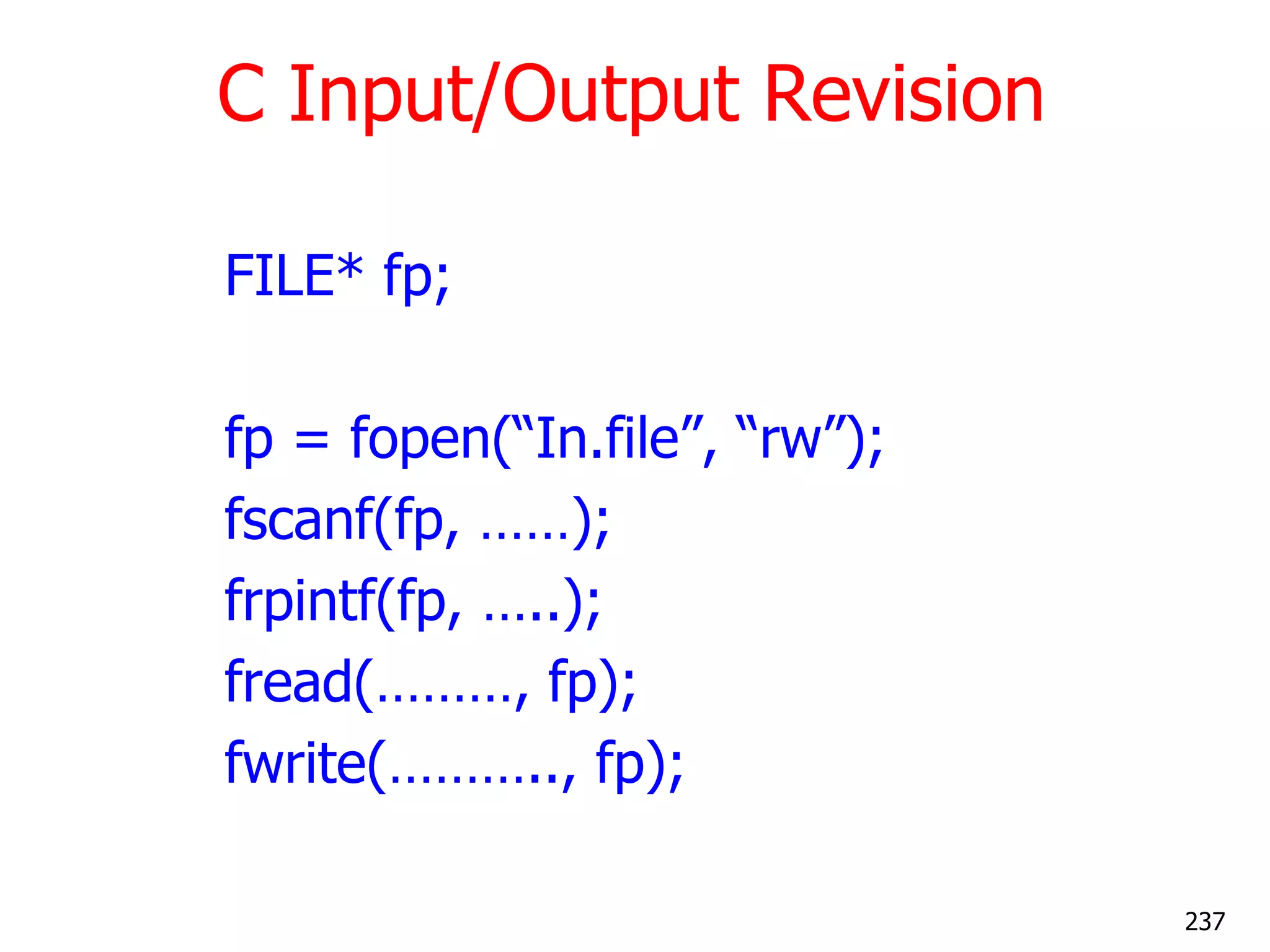
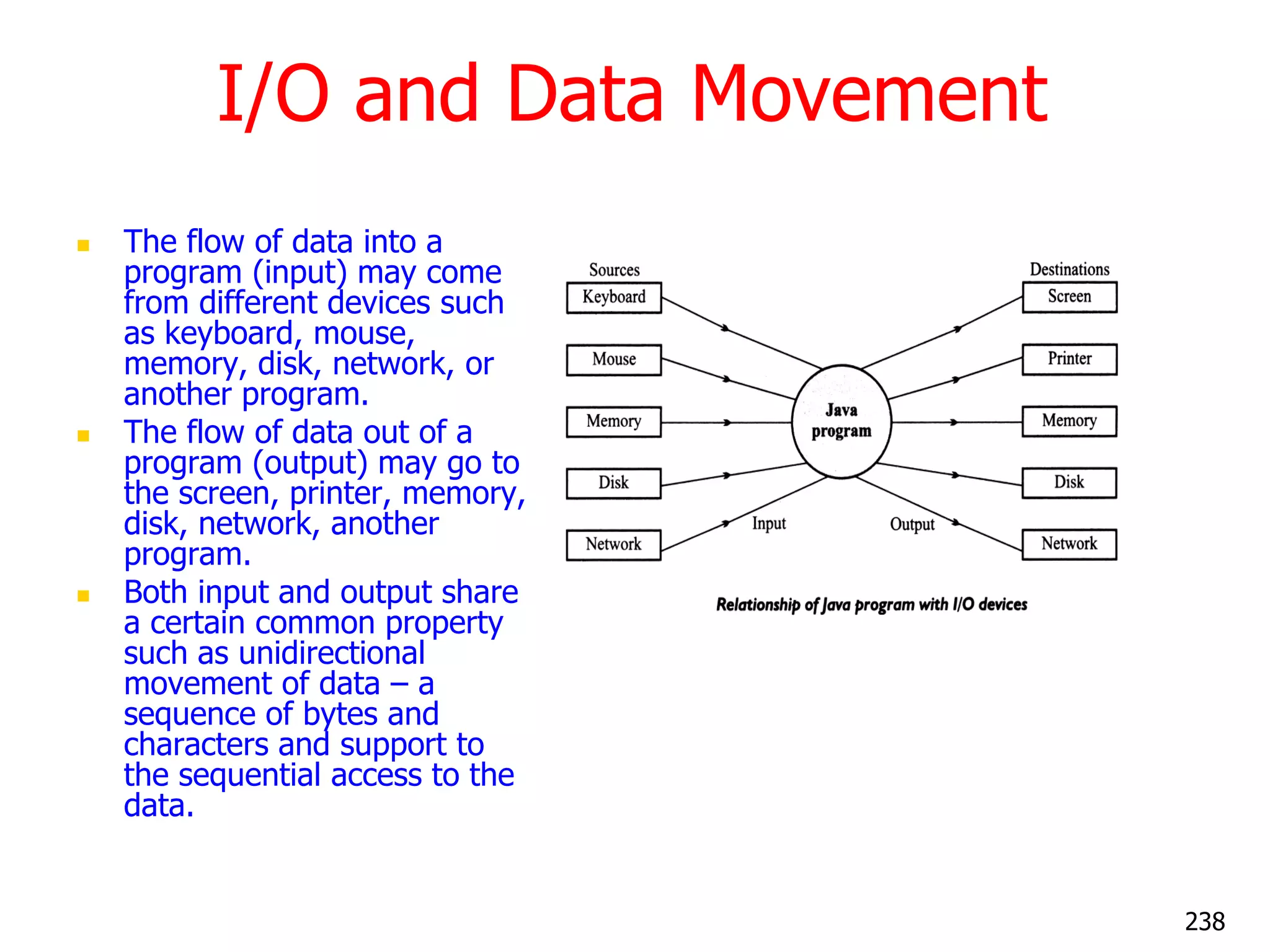
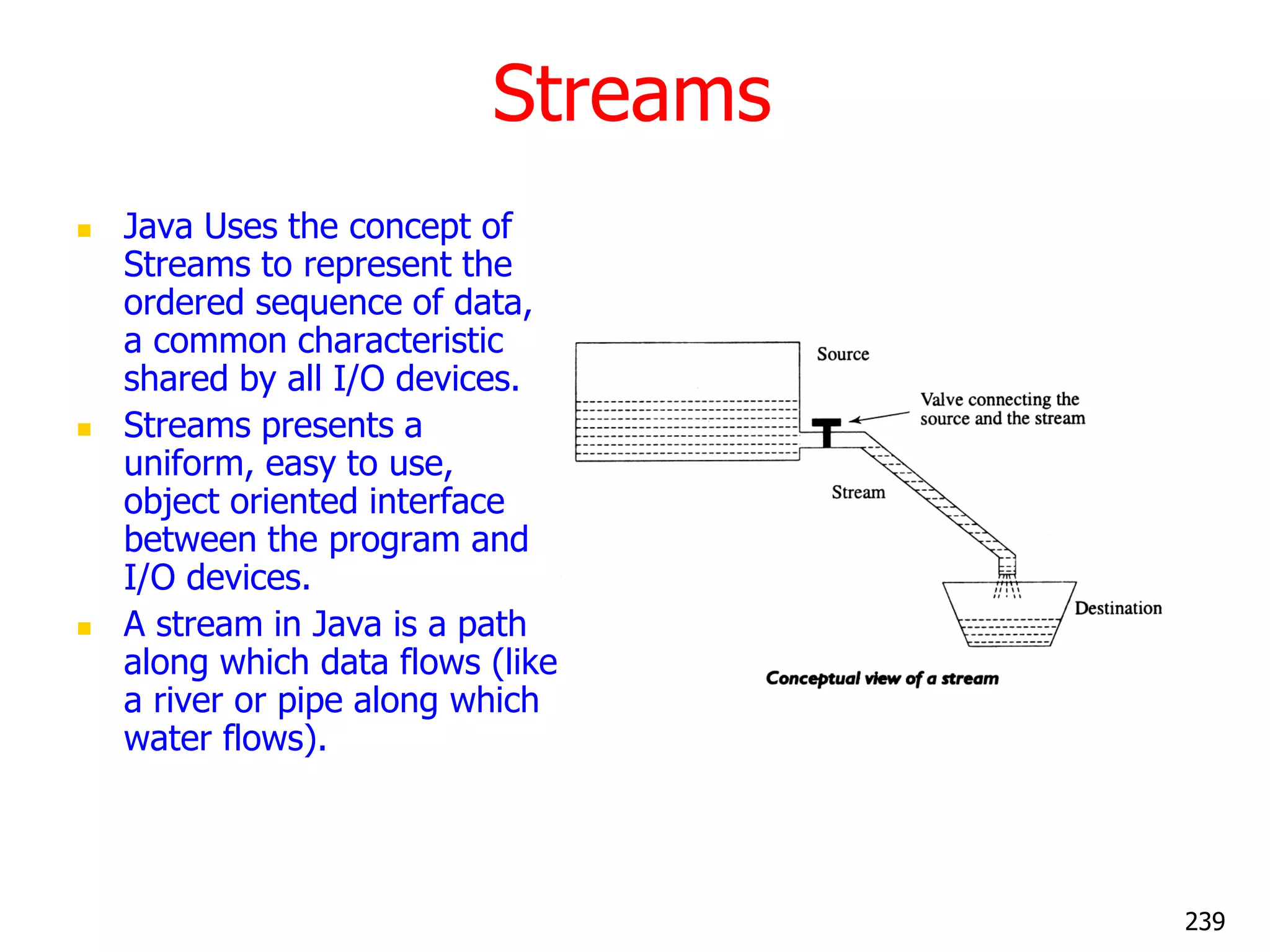
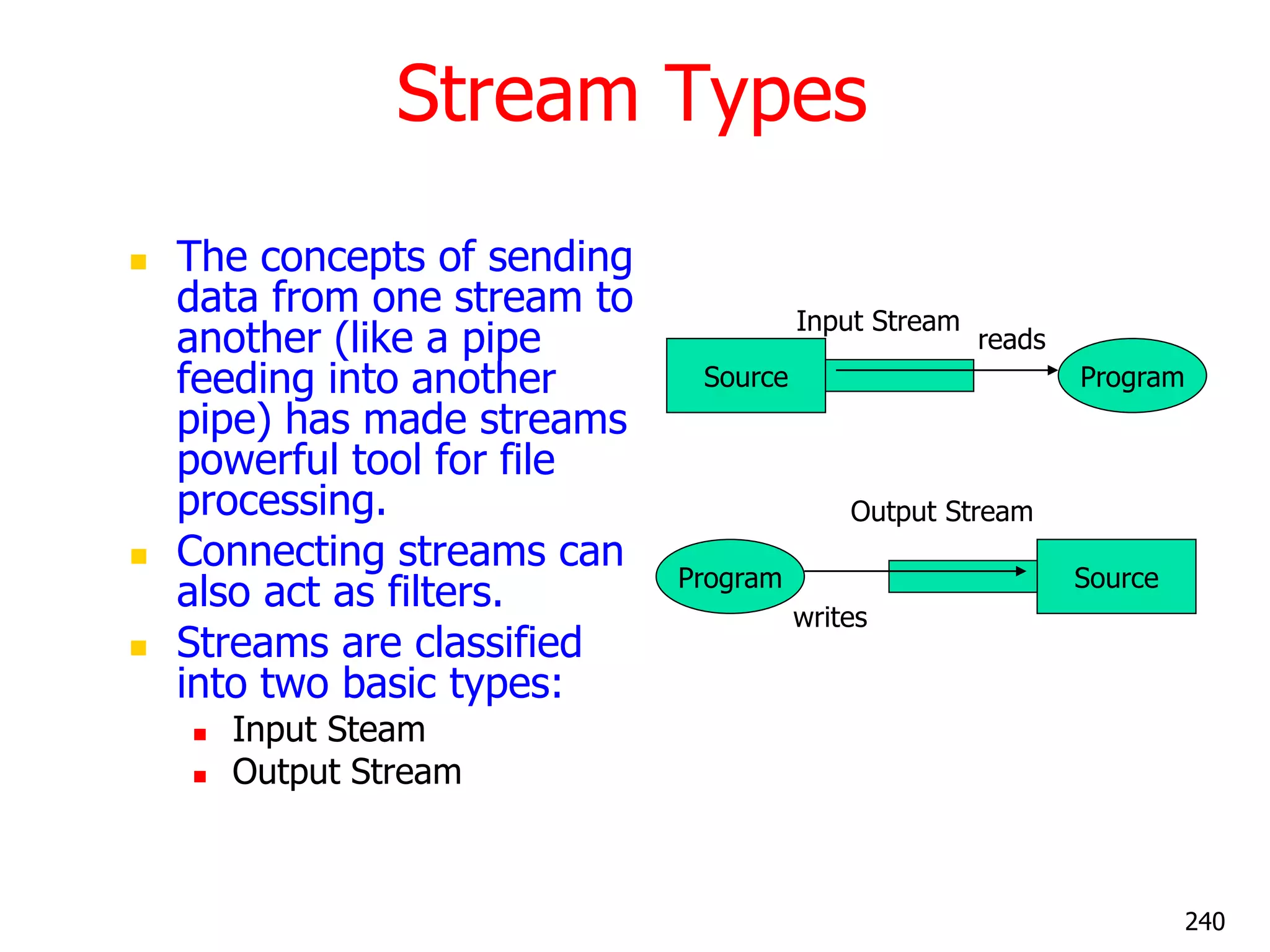

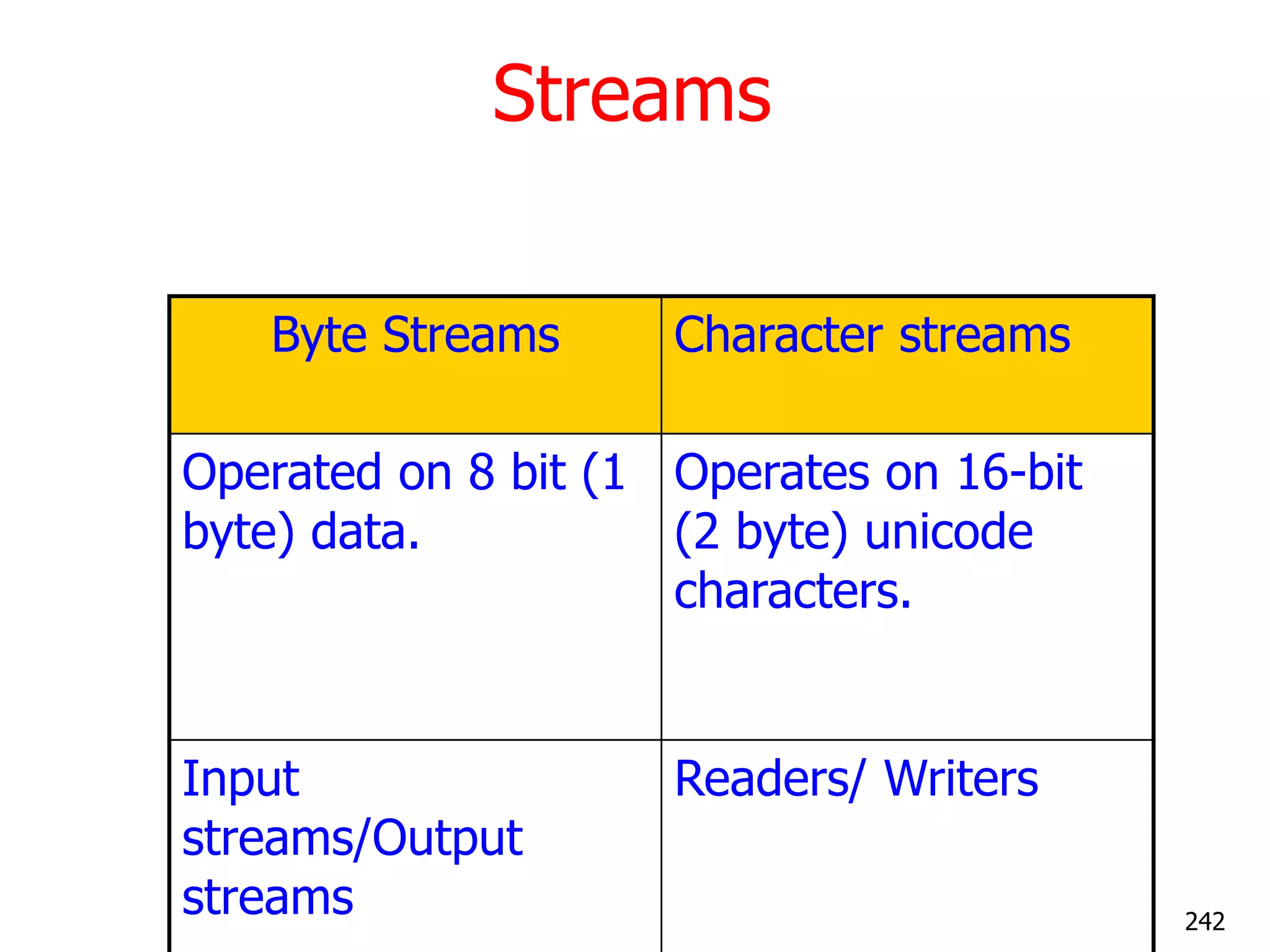
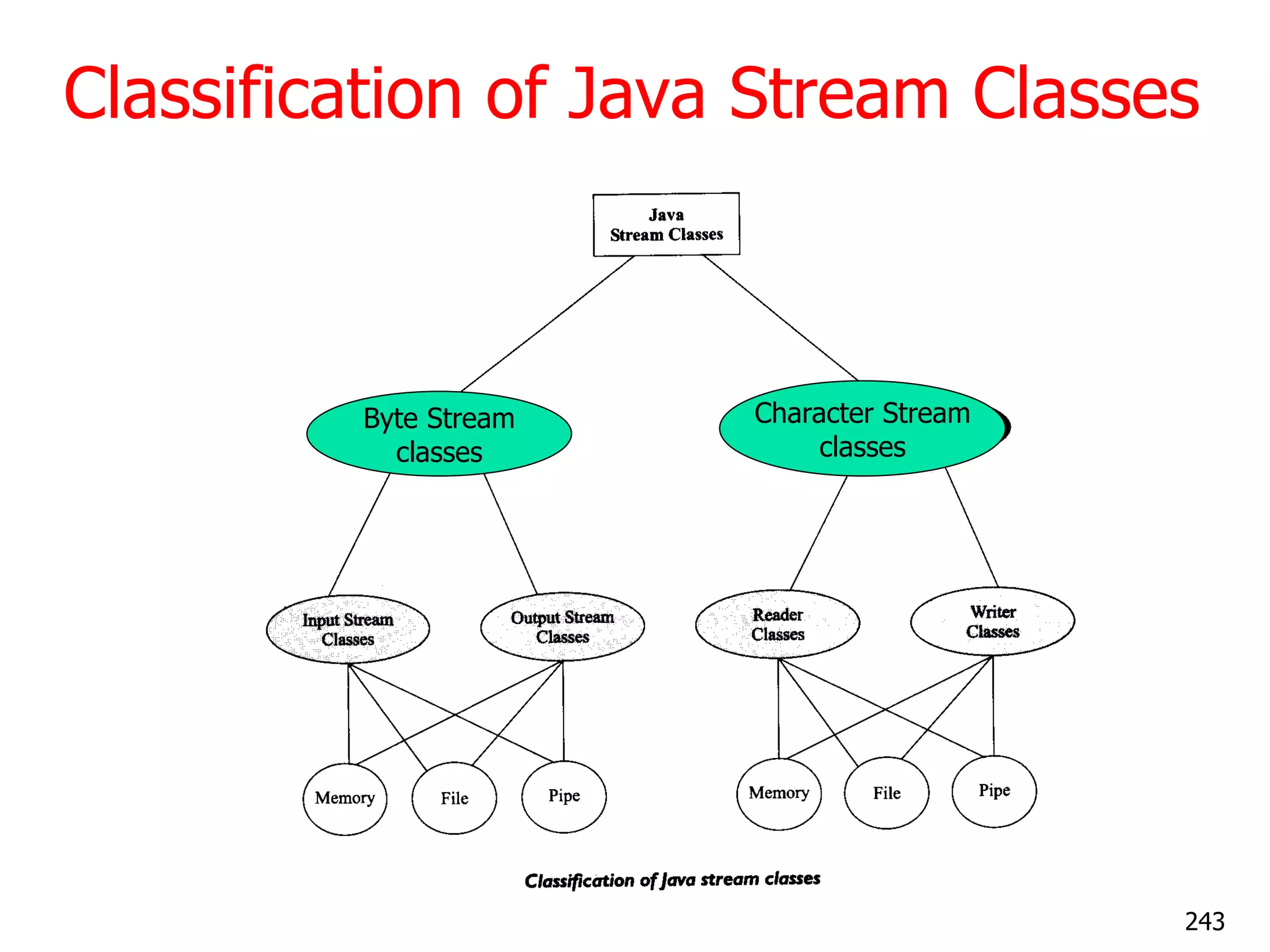
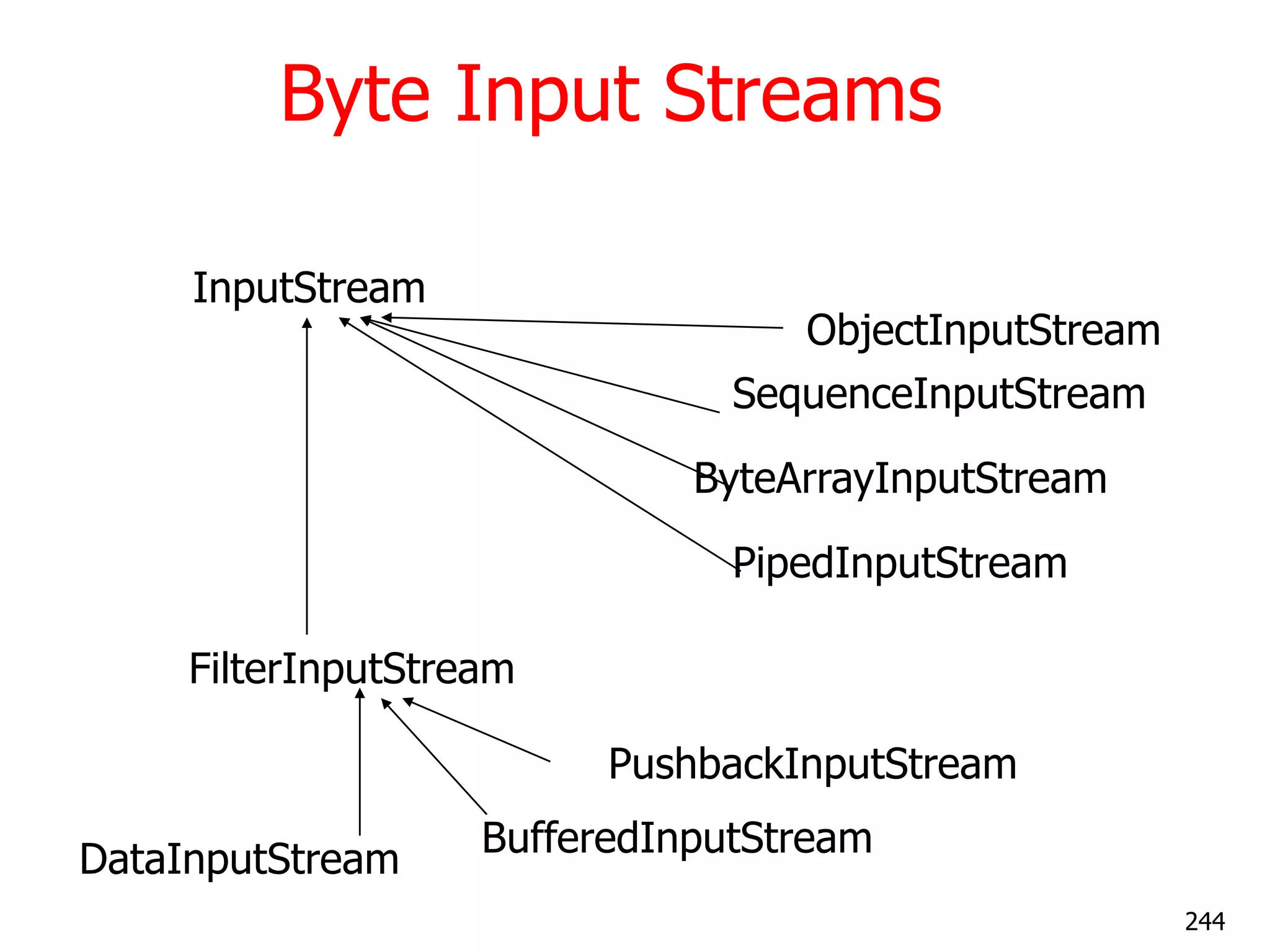
![Byte Input Streams - operations public abstract int read() Reads a byte and returns as a integer 0-255 public int read(byte[] buf, int offset, int count) Reads and stores the bytes in buf starting at offset. Count is the maximum read. public int read(byte[] buf) Same as previous offset=0 and length=buf.length() 245](https://image.slidesharecdn.com/corejavacompletenotes-121028072655-phpapp01/75/Core-java-complete-notes-Contact-at-91-814-614-5674-245-2048.jpg)
![Byte Input Stream - example Count total number of bytes in the file import java.io.*; class CountBytes { public static void main(String[] args) throws FileNotFoundException, IOException { FileInputStream in; in = new FileInputStream(―InFile.txt‖); int total = 0; while (in.read() != -1) total++; System.out.println(total + ― bytes‖); } } 246](https://image.slidesharecdn.com/corejavacompletenotes-121028072655-phpapp01/75/Core-java-complete-notes-Contact-at-91-814-614-5674-246-2048.jpg)
![What happens if the file did not exist JVM throws exception and terminates the program since there is no exception handler defined. [raj@mundroo] Streams [1:165] java CountBytes Exception in thread "main" java.io.FileNotFoundException: FileIn.txt (No such file or directory) at java.io.FileInputStream.open(Native Method) at java.io.FileInputStream.<init>(FileInputStream.java:64) at CountBytes.main(CountBytes.java:12) 247](https://image.slidesharecdn.com/corejavacompletenotes-121028072655-phpapp01/75/Core-java-complete-notes-Contact-at-91-814-614-5674-247-2048.jpg)

![Byte Output Streams - operations public abstract void write(int b) Write b as bytes. public void write(byte[] buf, int offset, int count) Write count bytes starting from offset in buf. public void write(byte[] buf) Same as previous offset=0 and count = buf.length() 249](https://image.slidesharecdn.com/corejavacompletenotes-121028072655-phpapp01/75/Core-java-complete-notes-Contact-at-91-814-614-5674-249-2048.jpg)
![Byte Output Stream - example Read from standard in and write to standard out import java.io.*; class ReadWrite { public static void main(string[] args) throws IOException { int b; while (( b = System.in.read()) != -1) { System.out.write(b); } } 250](https://image.slidesharecdn.com/corejavacompletenotes-121028072655-phpapp01/75/Core-java-complete-notes-Contact-at-91-814-614-5674-250-2048.jpg)
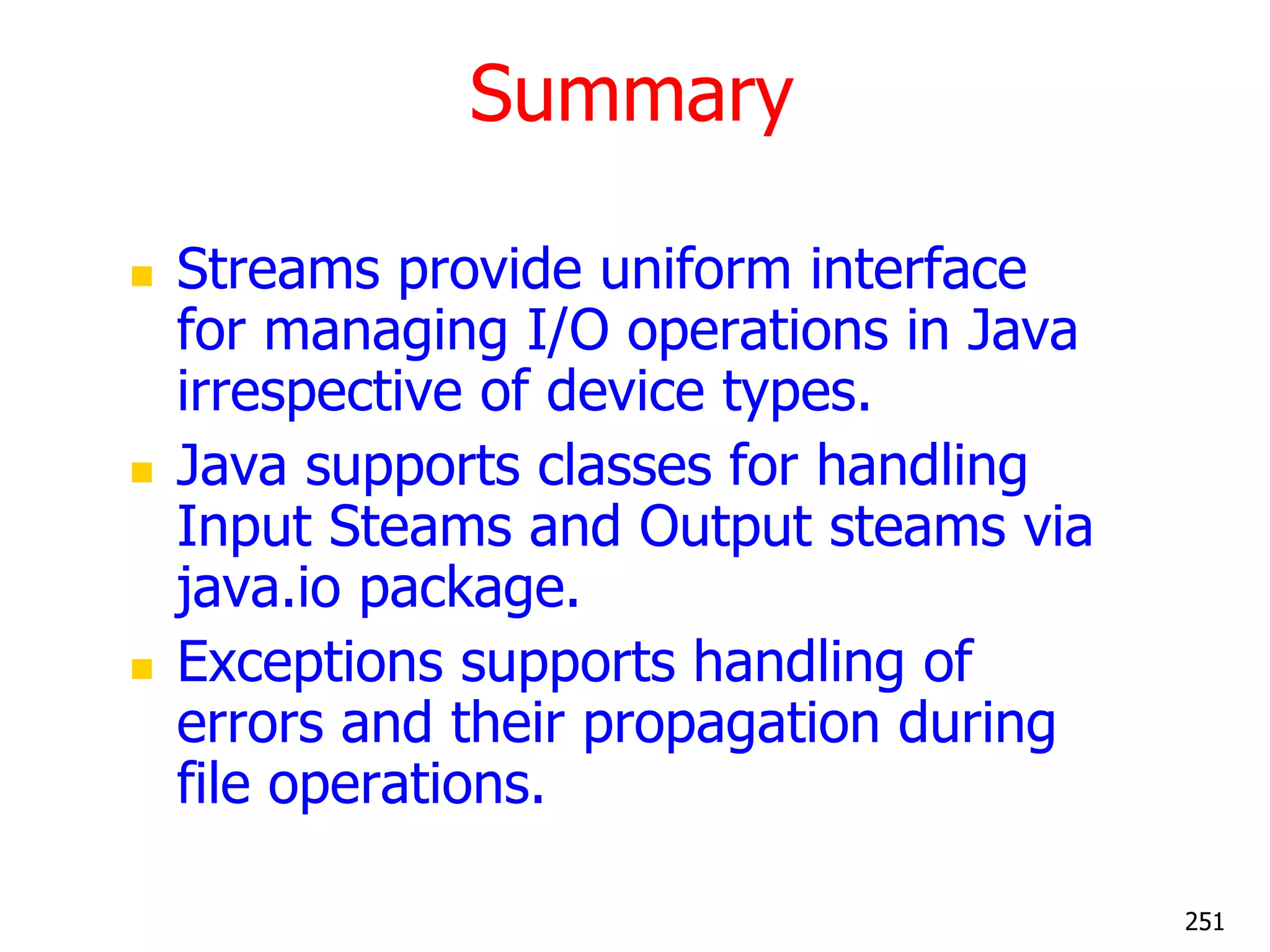
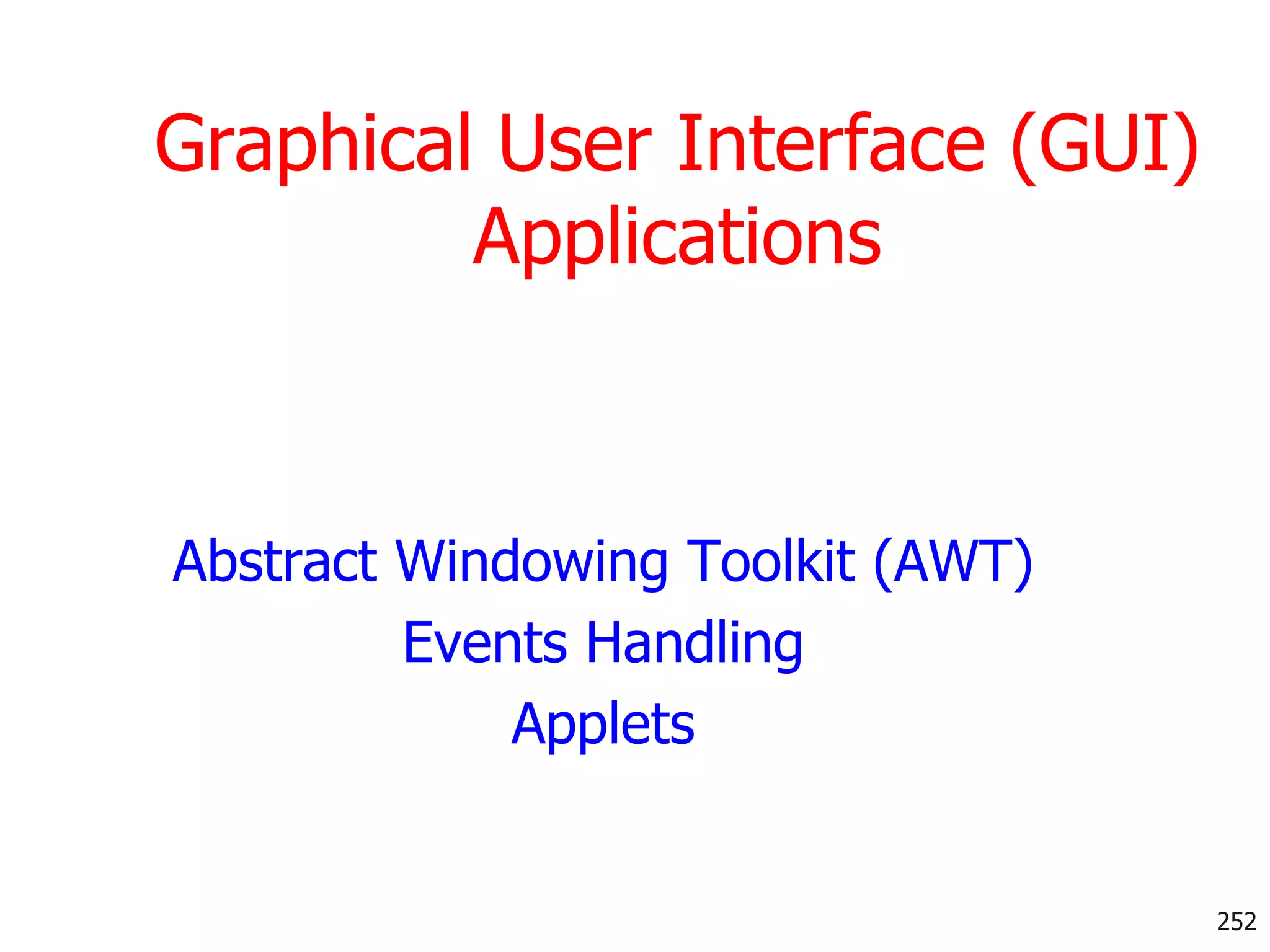
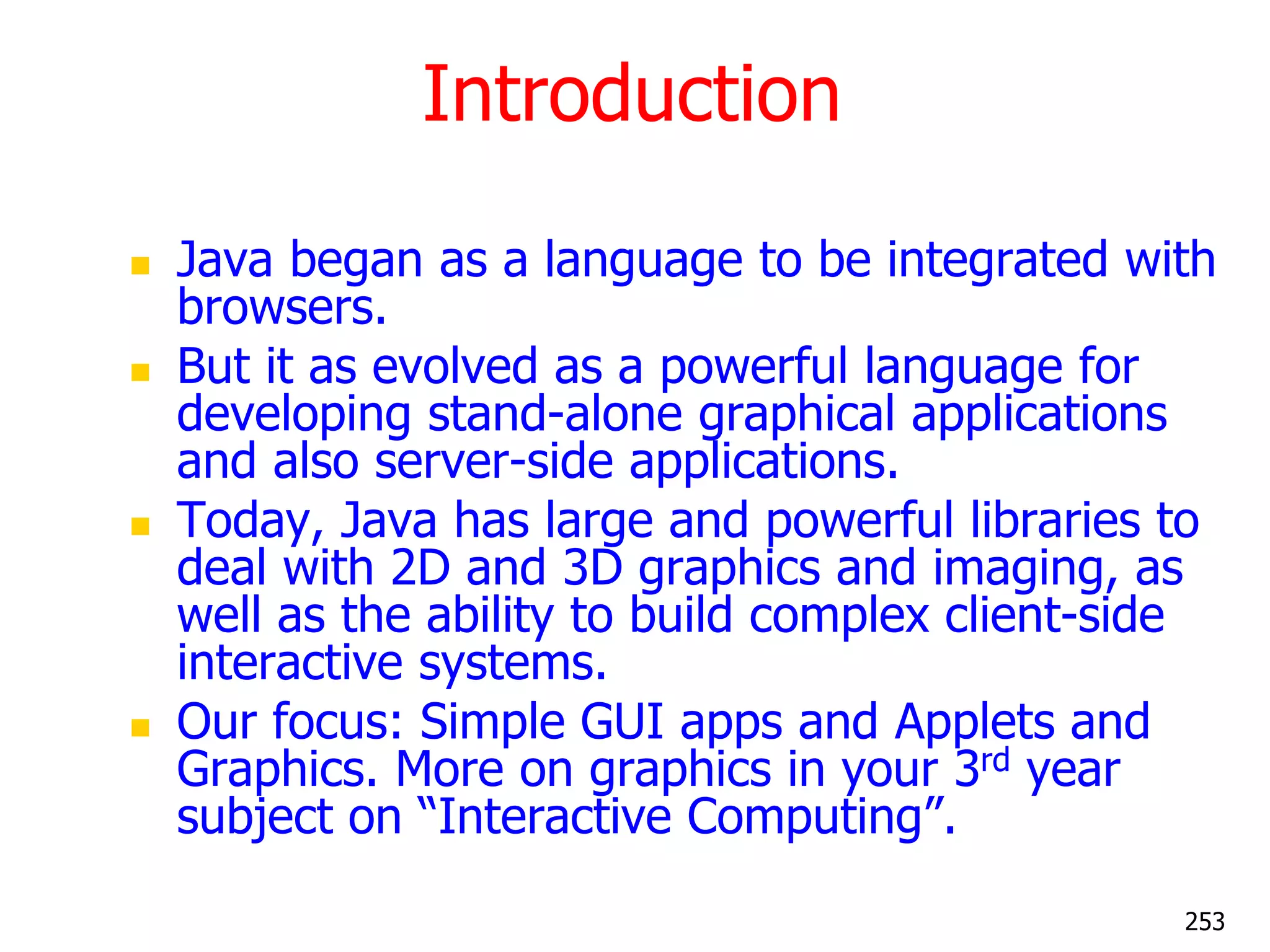
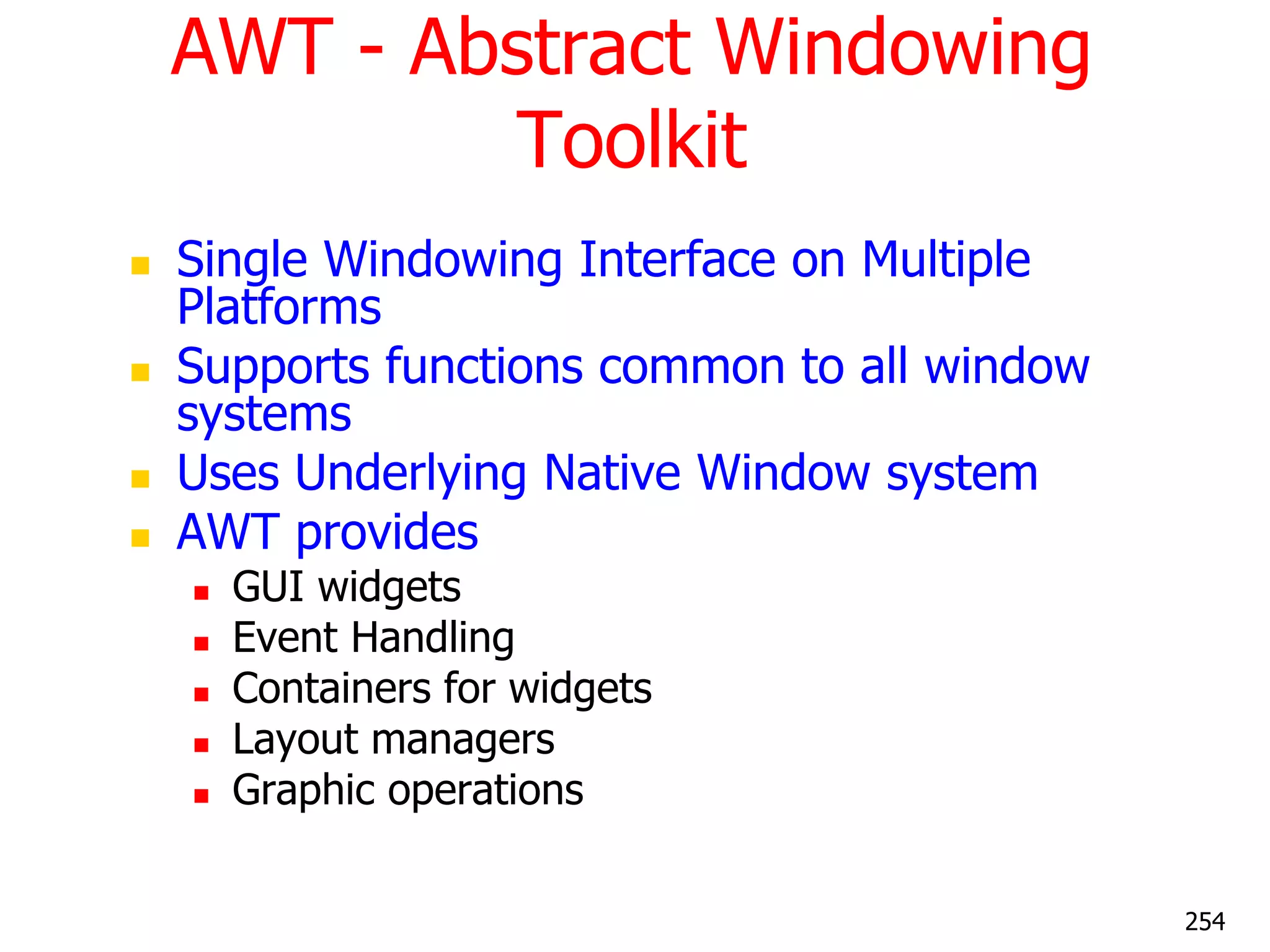
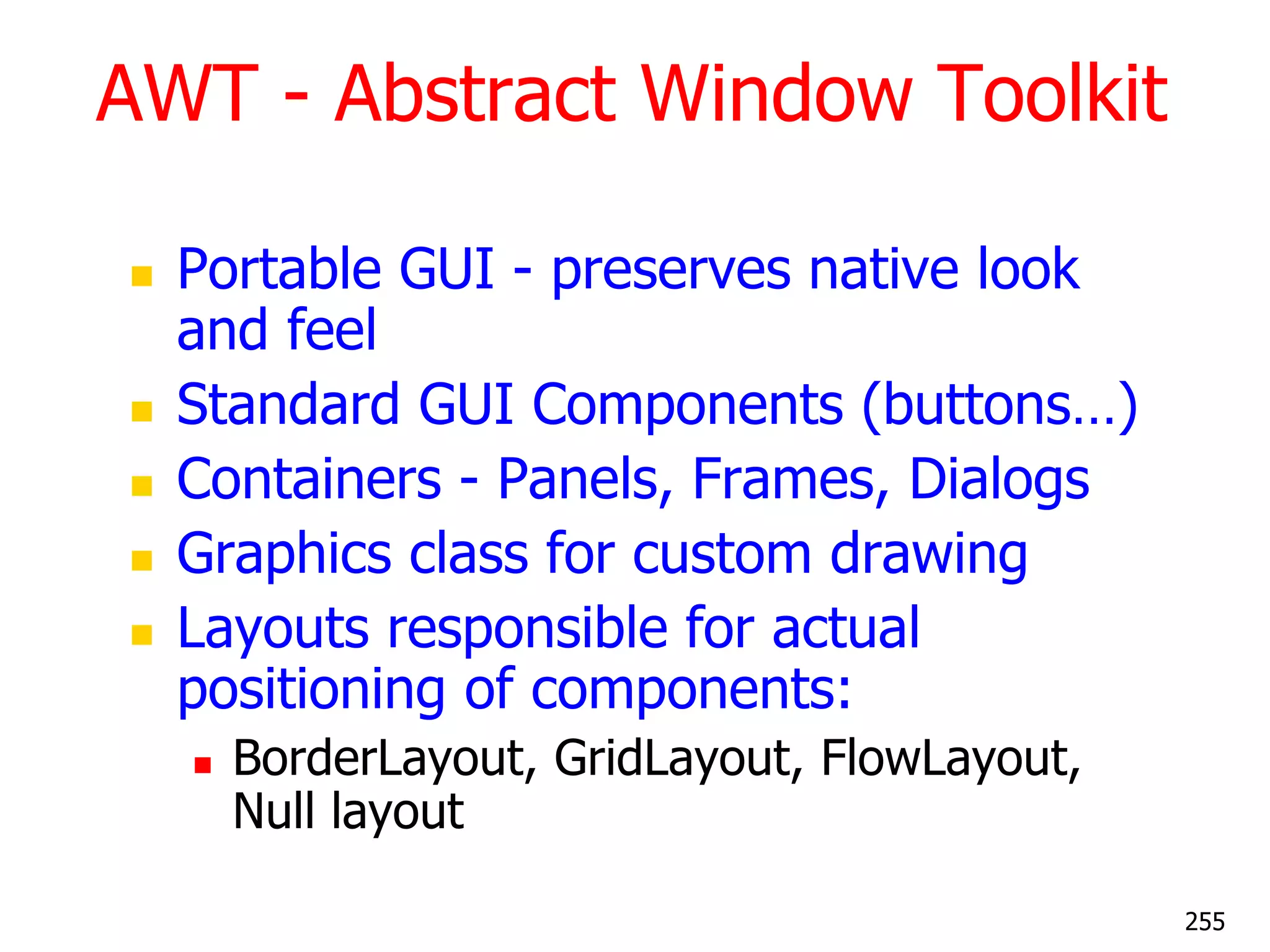

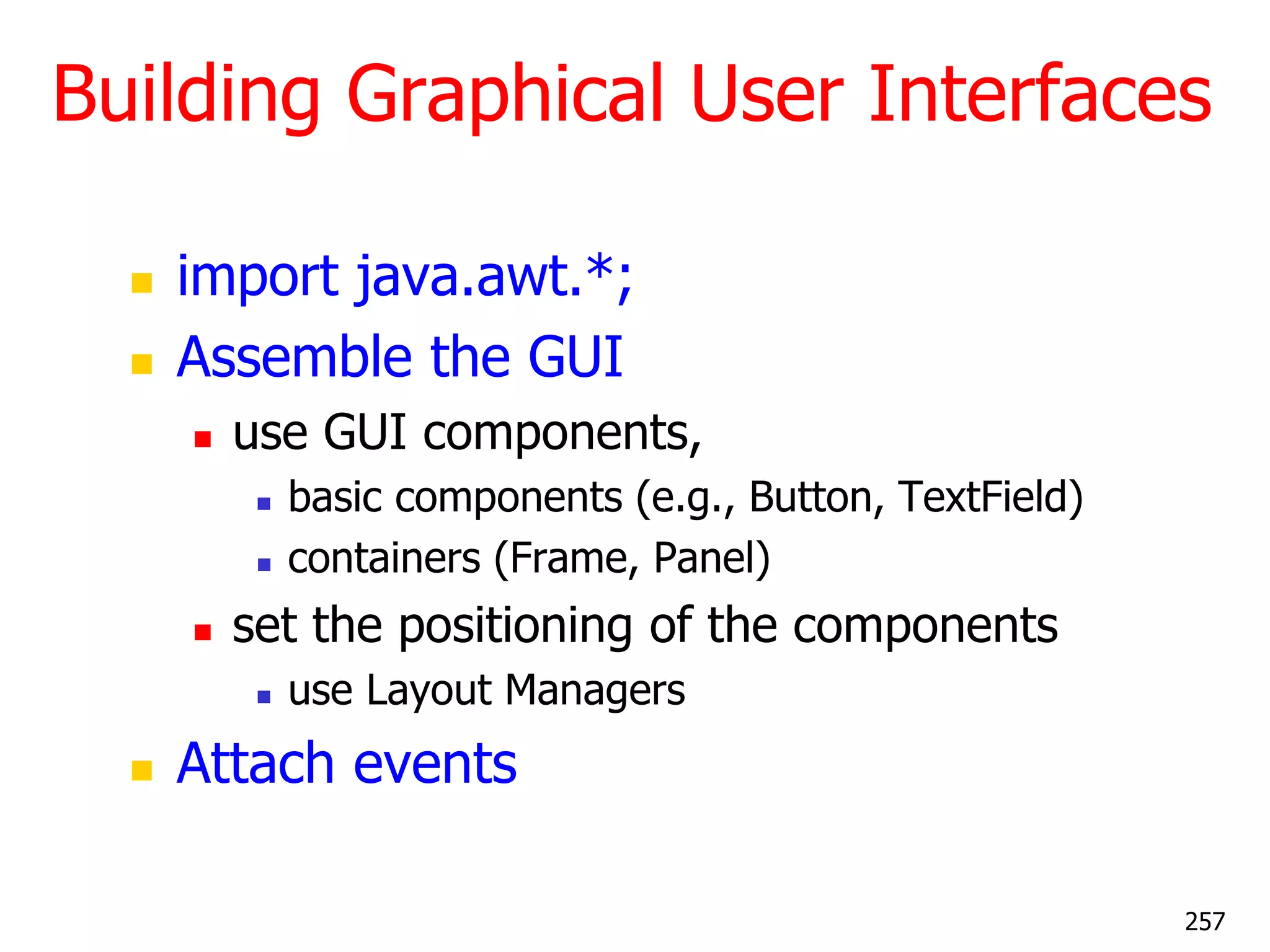
![A sample GUI program import java.awt.*; public class MyGui { public static void main(String args[] ) { Frame f = new Frame ("My Frame"); Button b = new Button("OK"); TextField tf = new TextField("Programming in Java", 20); f.setLayout(new FlowLayout()); f.add(b); f.add(tf); f.setSize(300, 300); f.setVisible(true); } } 258](https://image.slidesharecdn.com/corejavacompletenotes-121028072655-phpapp01/75/Core-java-complete-notes-Contact-at-91-814-614-5674-258-2048.jpg)



![Listener Interfaces in java.awt.event.* [1] ActionListener [2] ItemListener [3] MouseMotionListener [4] MouseListener [5] KeyListener [6] FocusListener [7] AdjustmentListener [8] ComponentListener [9] WindowListener [10] ContainerListener [11] TextListener 262](https://image.slidesharecdn.com/corejavacompletenotes-121028072655-phpapp01/75/Core-java-complete-notes-Contact-at-91-814-614-5674-262-2048.jpg)
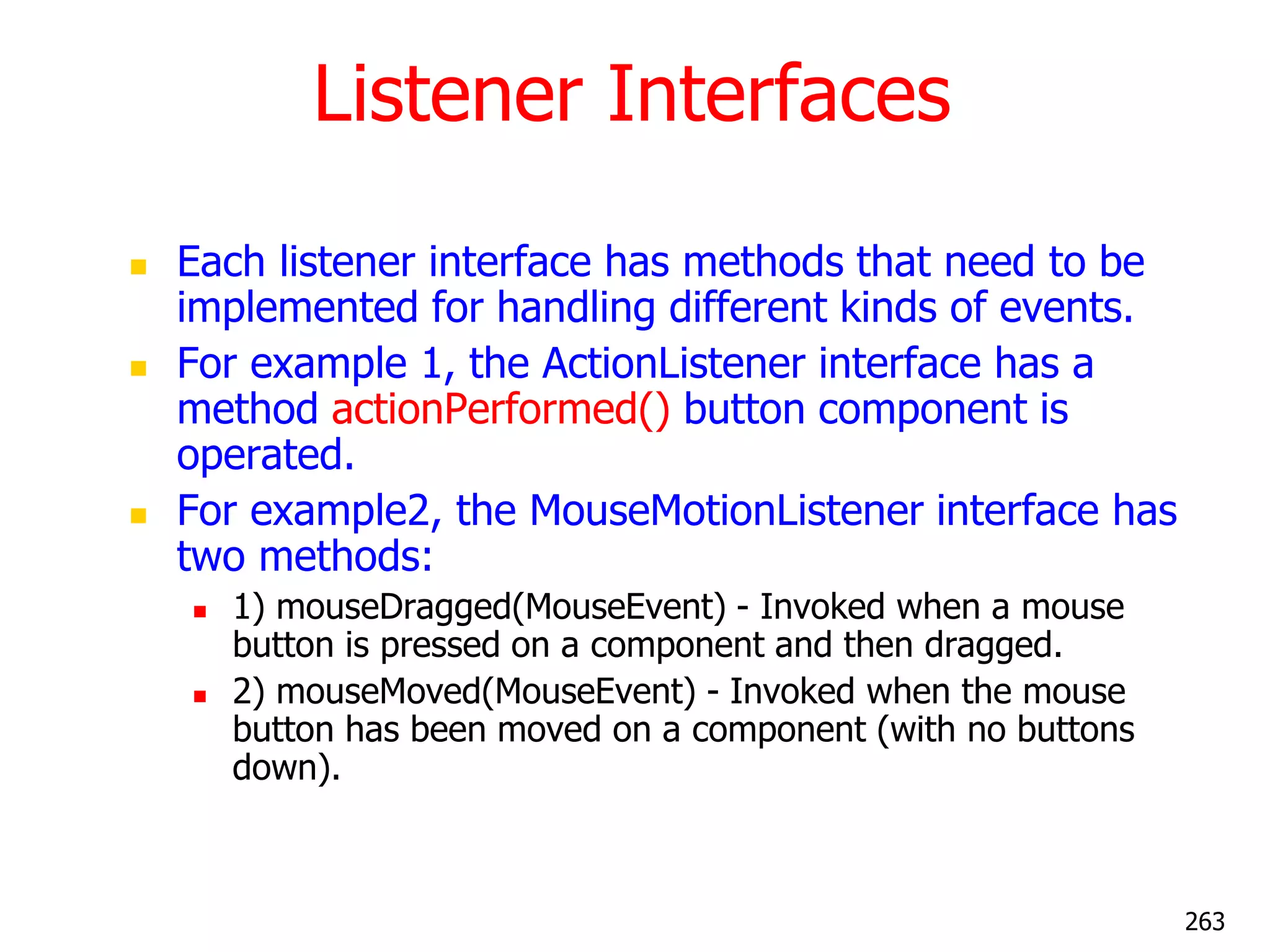
![Implementing the ActionListener Interface and attaching an event handler to a button import java.awt.*; import java.awt.event.*; public class MyGui1 { public static void main(String args[] ) { Frame f = new Frame ("My Frame"); MyGuiAction ga = new MyGuiAction(f); } } class MyGuiAction implements ActionListener { static int count = 0; Button b; TextField tf; MyGuiAction(Frame f) { b = new Button("OK"); b.addActionListener(this); tf = new TextField("Hello Java", 20); f.setLayout(new FlowLayout()); f.add(b); f.add(tf); f.setSize(300, 300); f.setVisible(true); } public void actionPerformed( ActionEvent e) { if(e.getSource() == b) { count++; System.out.println("Button is Pressed"); tf.setText("Hello Java Click "+count); } } } 264](https://image.slidesharecdn.com/corejavacompletenotes-121028072655-phpapp01/75/Core-java-complete-notes-Contact-at-91-814-614-5674-264-2048.jpg)
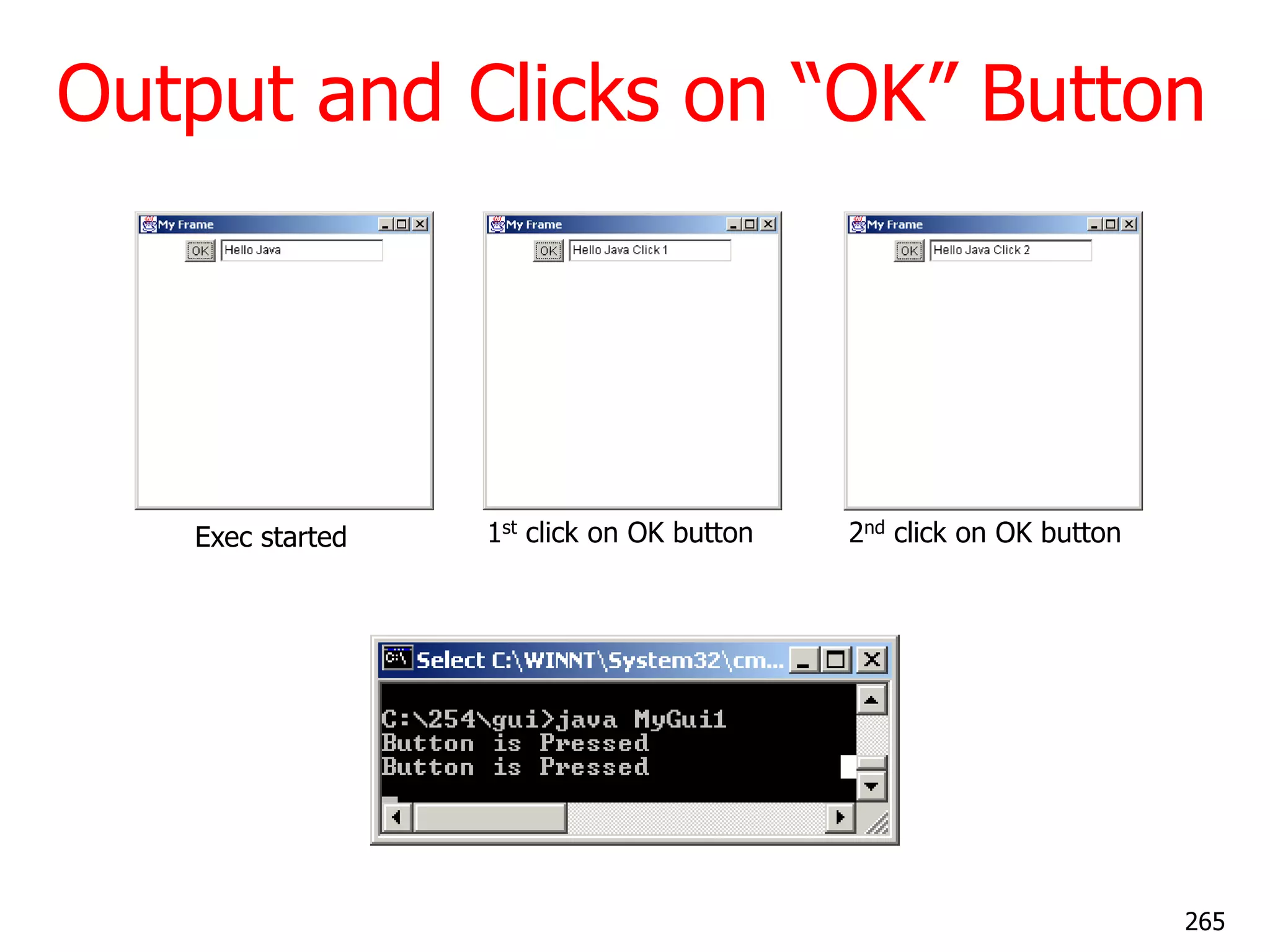
![BorderLayout Example import java.awt.*; public class MyGui2 { public static void main(String args[] ) { Frame f = new Frame ("My Frame"); f.setLayout(new BorderLayout()); // Add text field to top f.add("North",new TextField()); // Create the panel with buttons at the bottom... Panel p = new Panel(); // FlowLayout p.add(new Button("OK")); p.add(new Button("Cancel")); f.add("South",p); f.add("Center", new TextField("Center region")); f.setSize(300, 300); f.setVisible(true); } } 266](https://image.slidesharecdn.com/corejavacompletenotes-121028072655-phpapp01/75/Core-java-complete-notes-Contact-at-91-814-614-5674-266-2048.jpg)


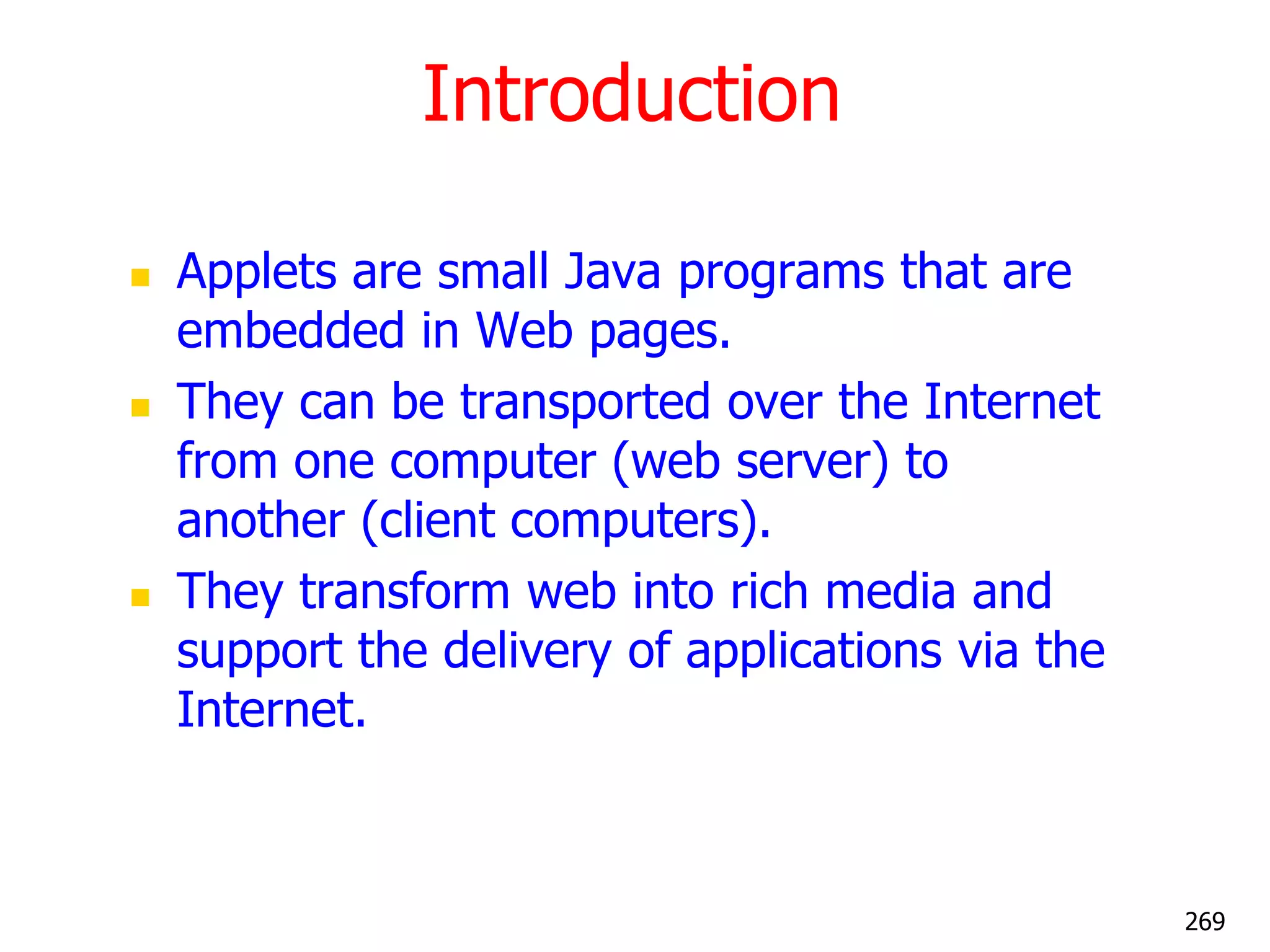
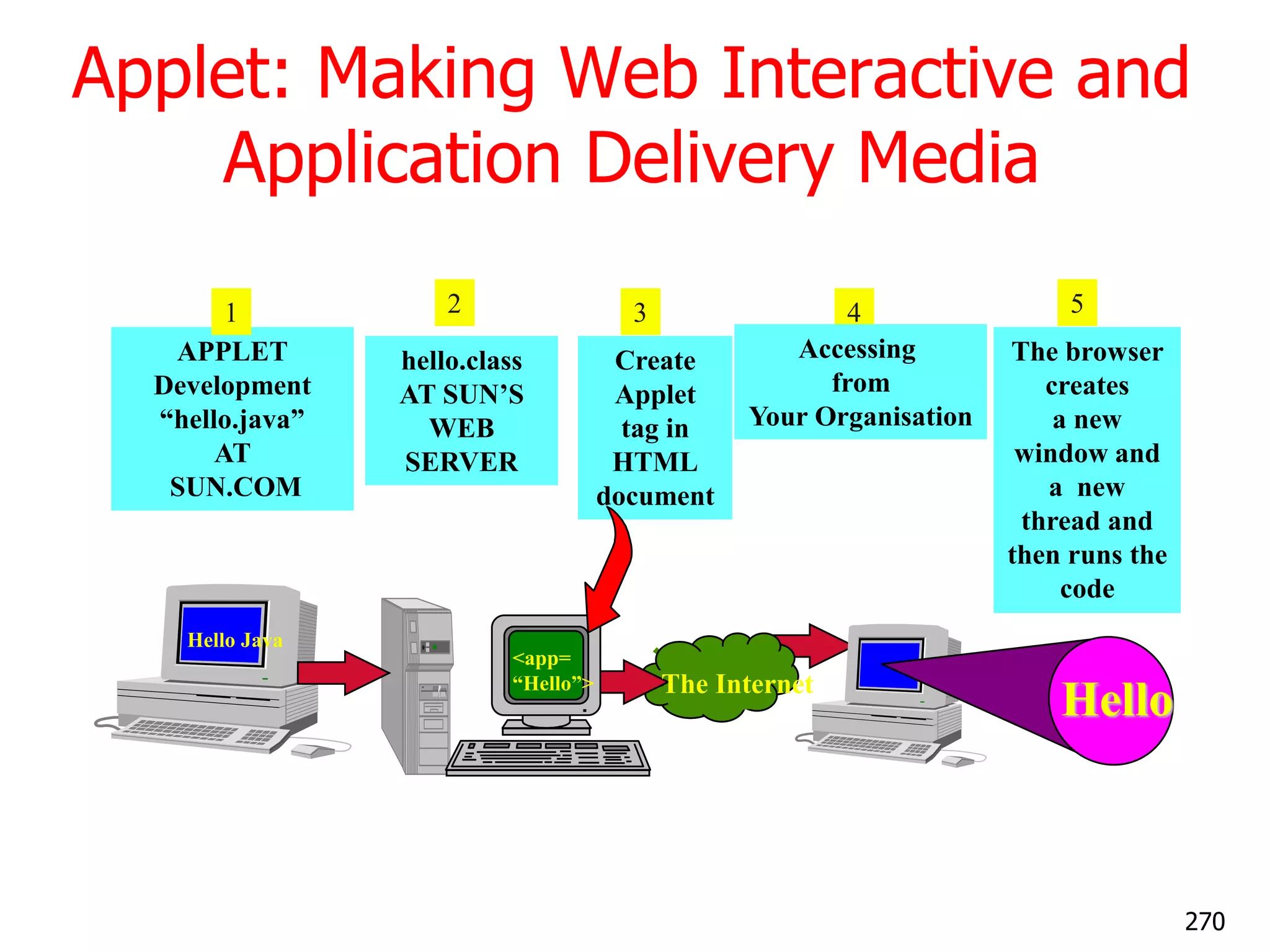
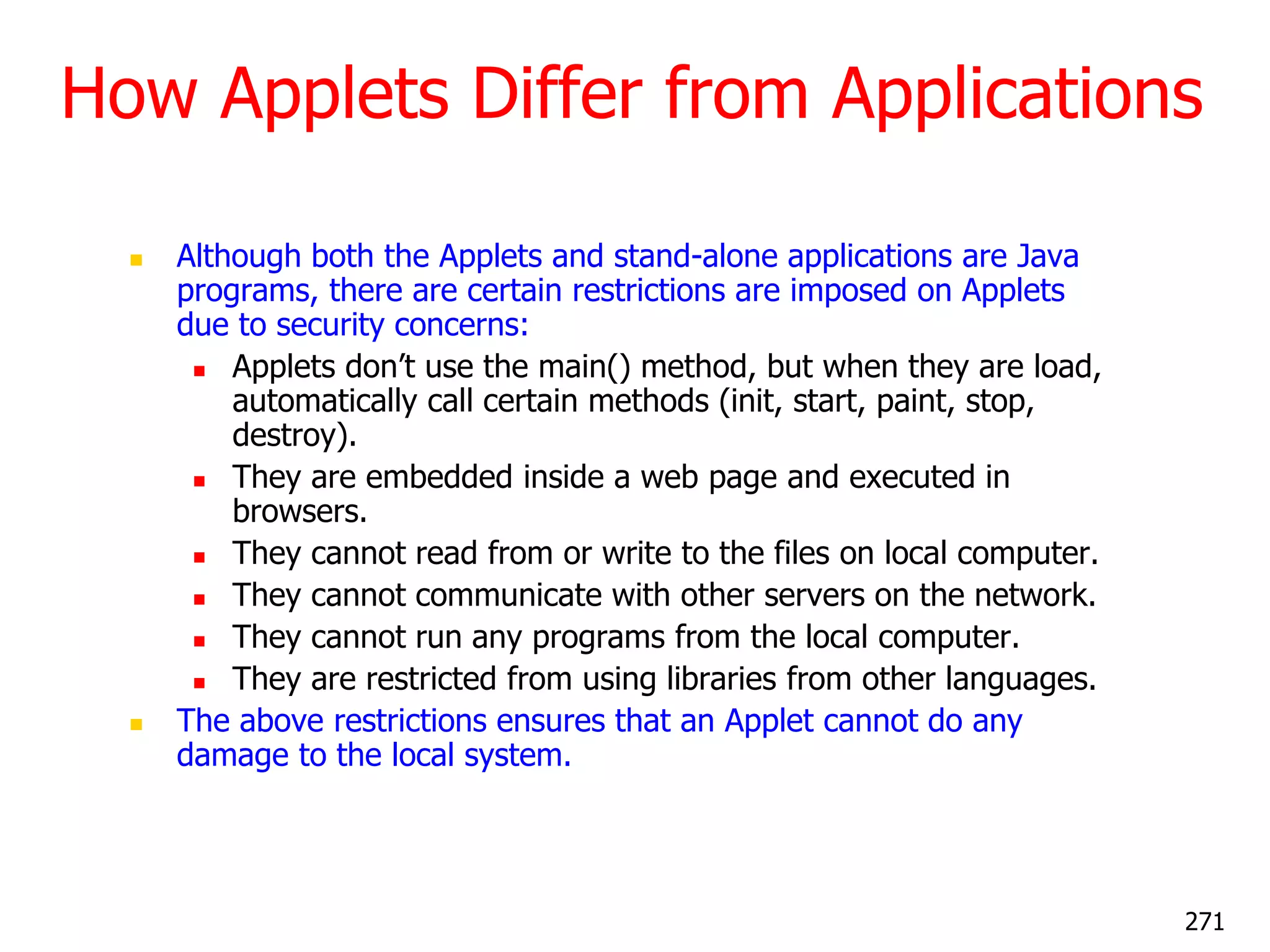

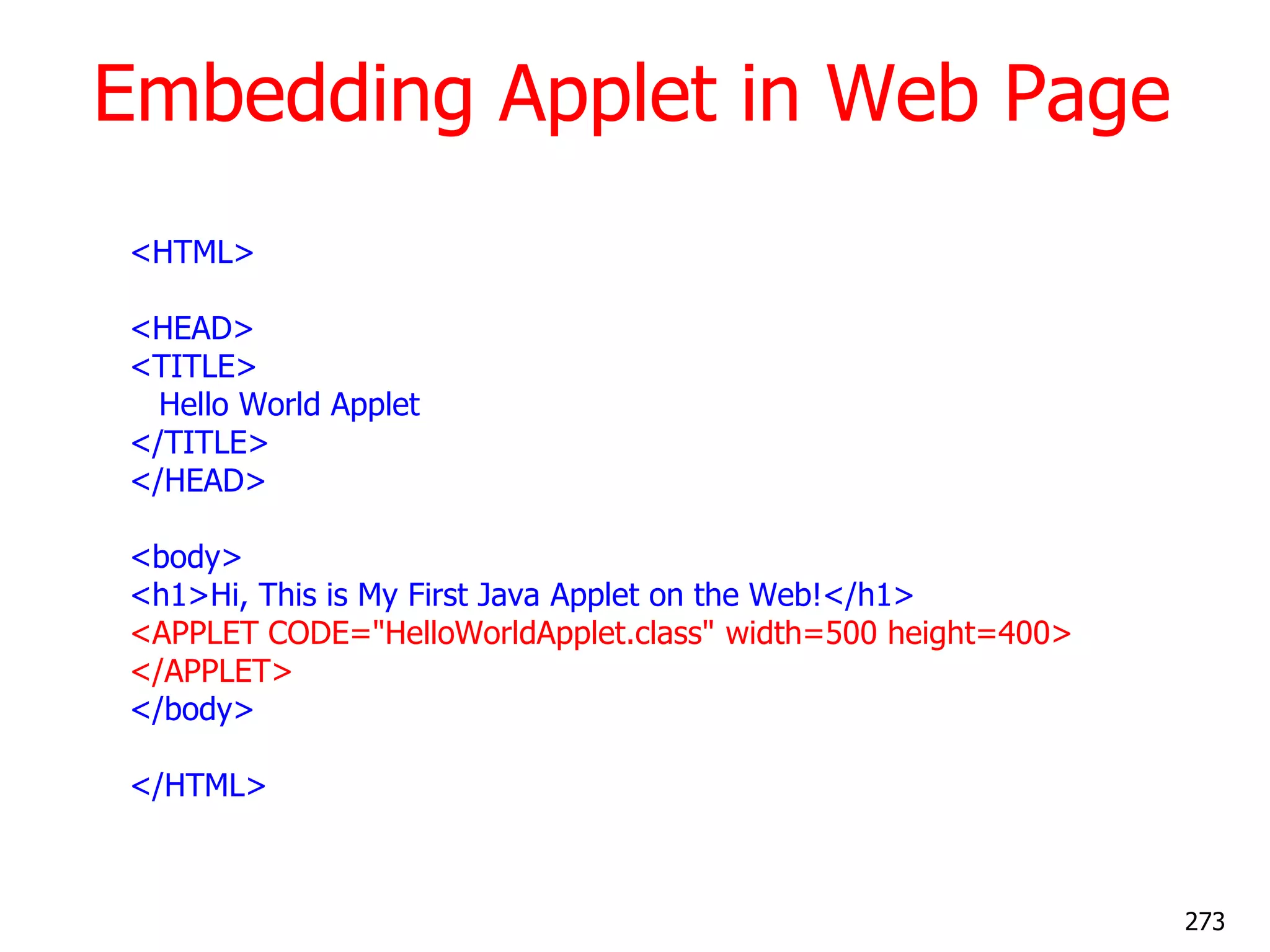


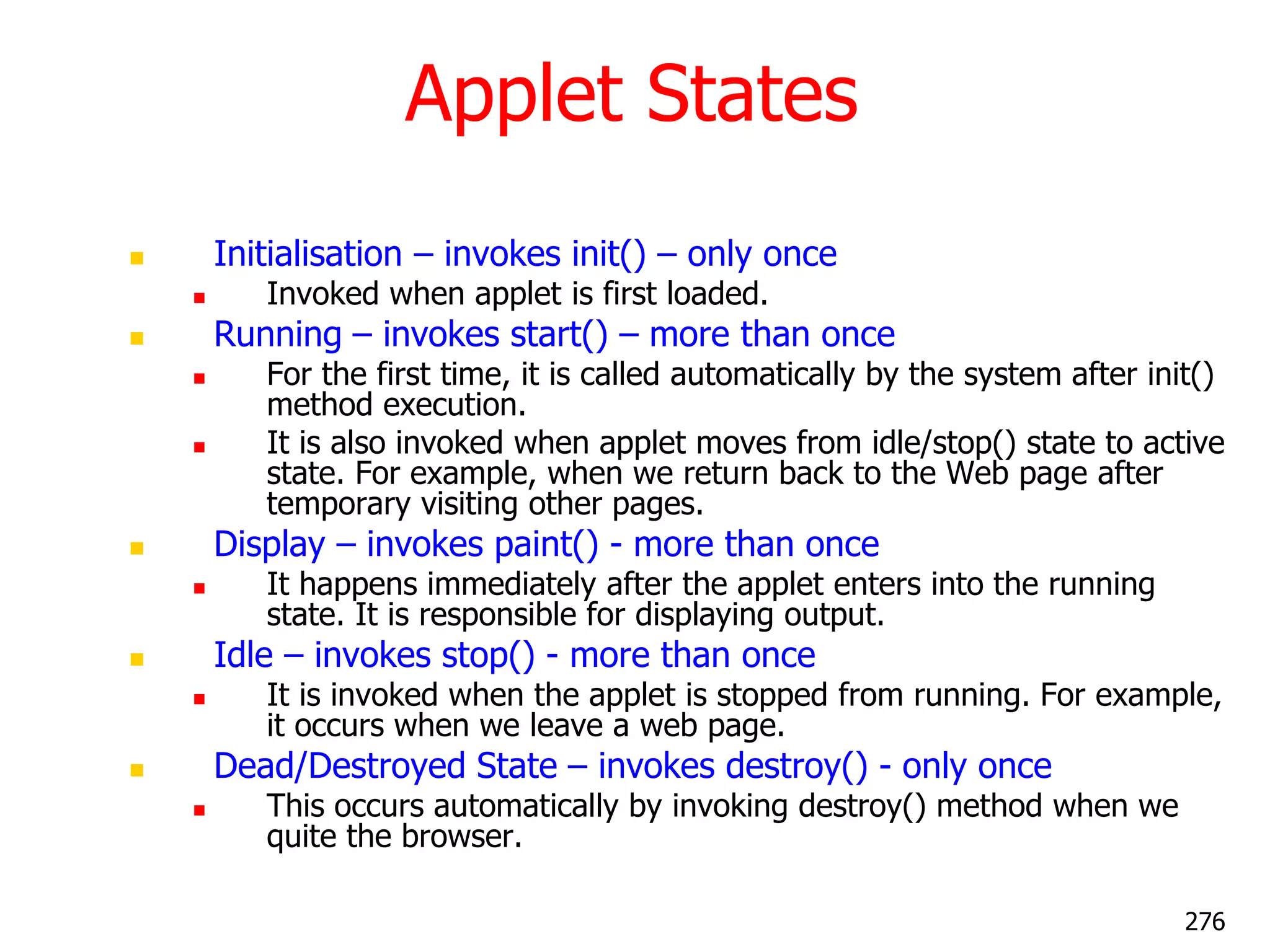

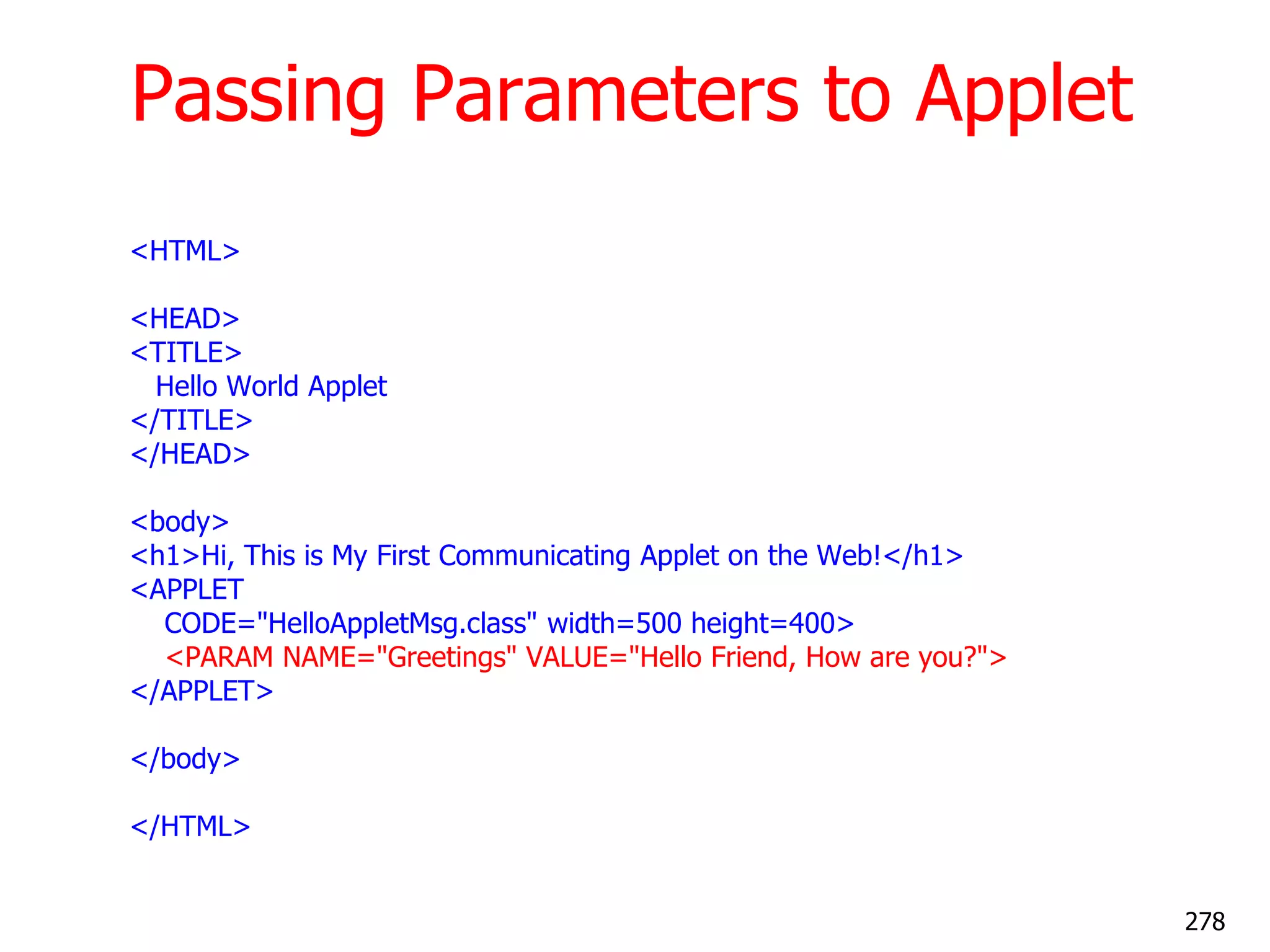

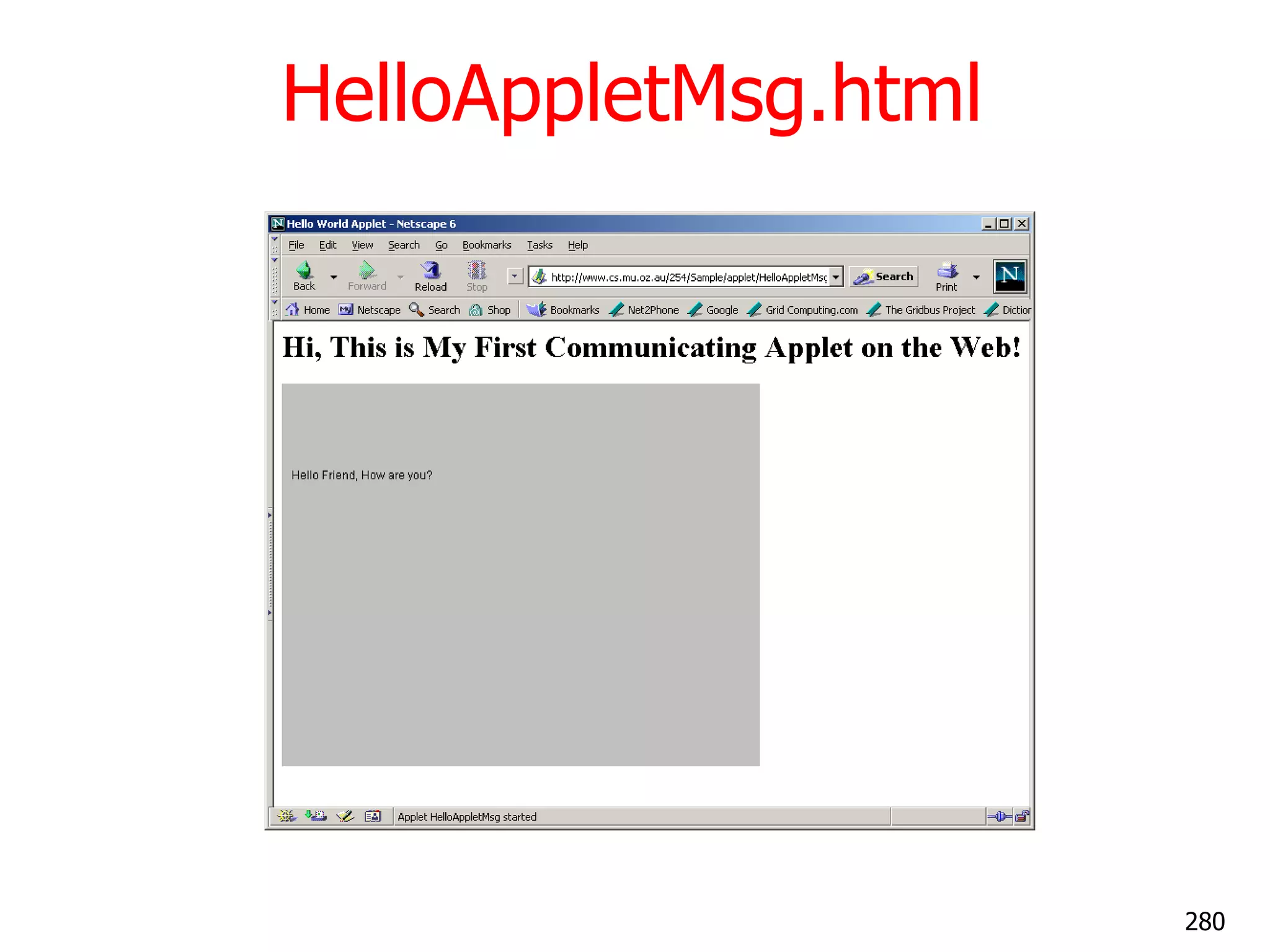



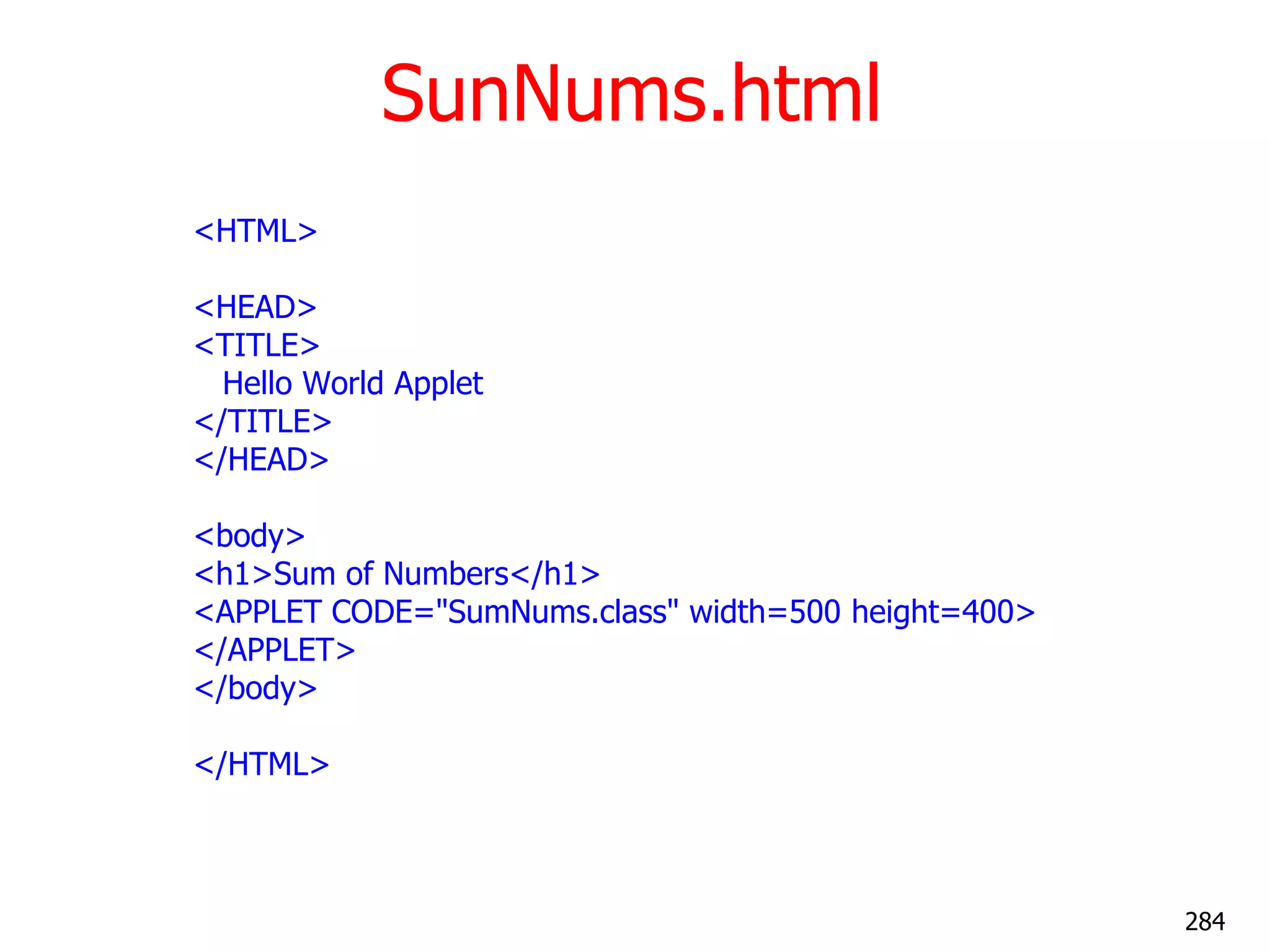


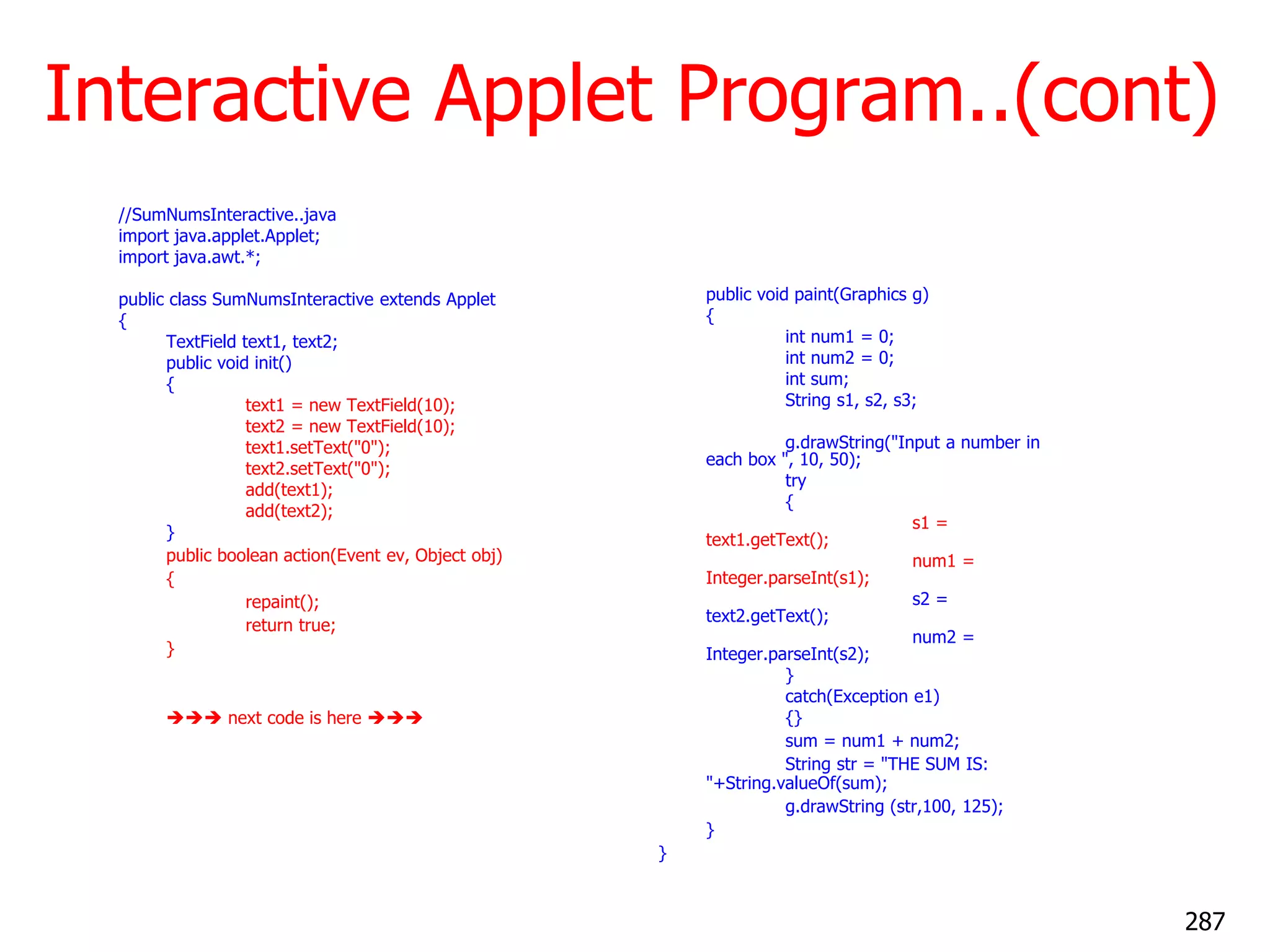
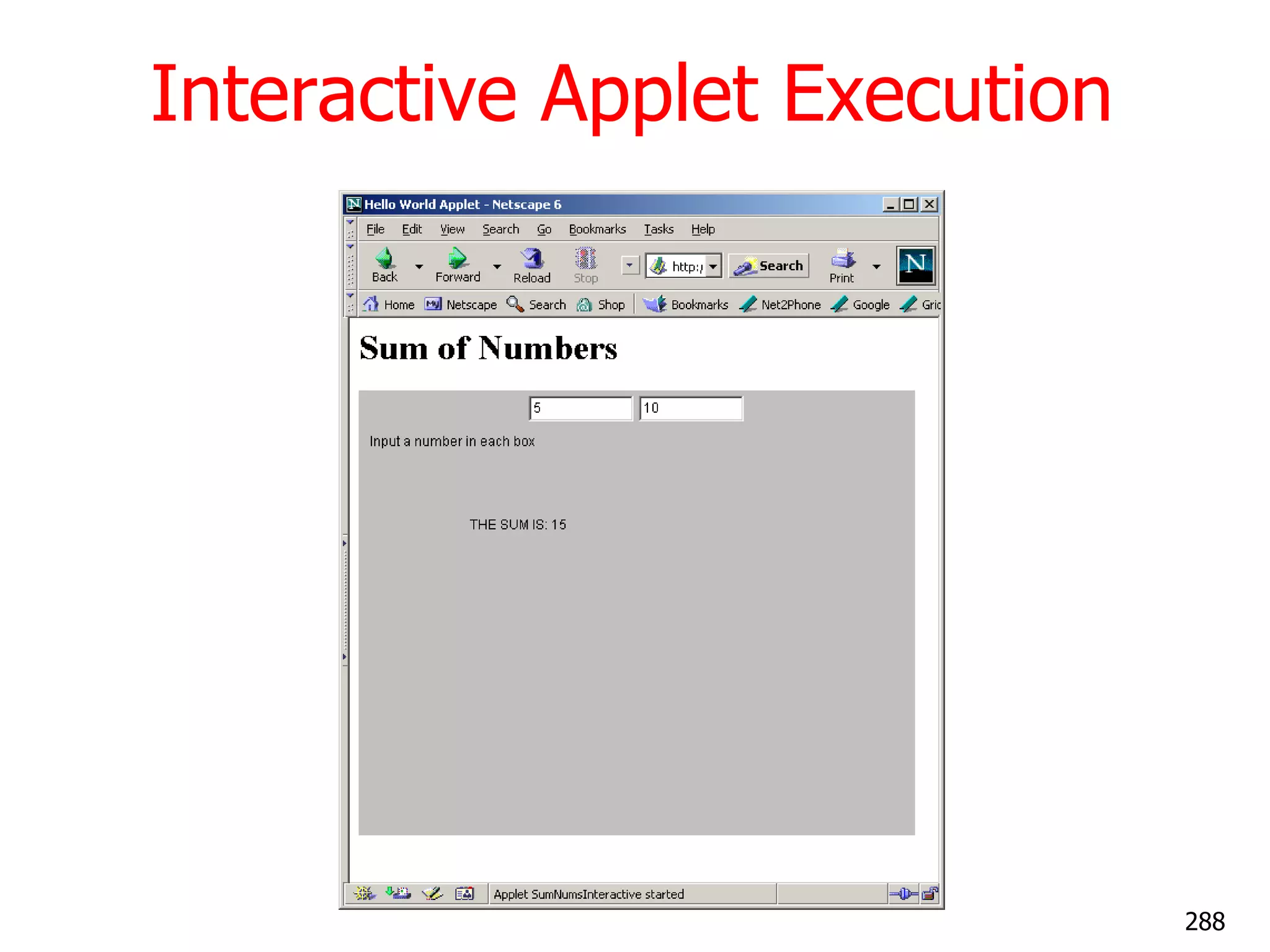
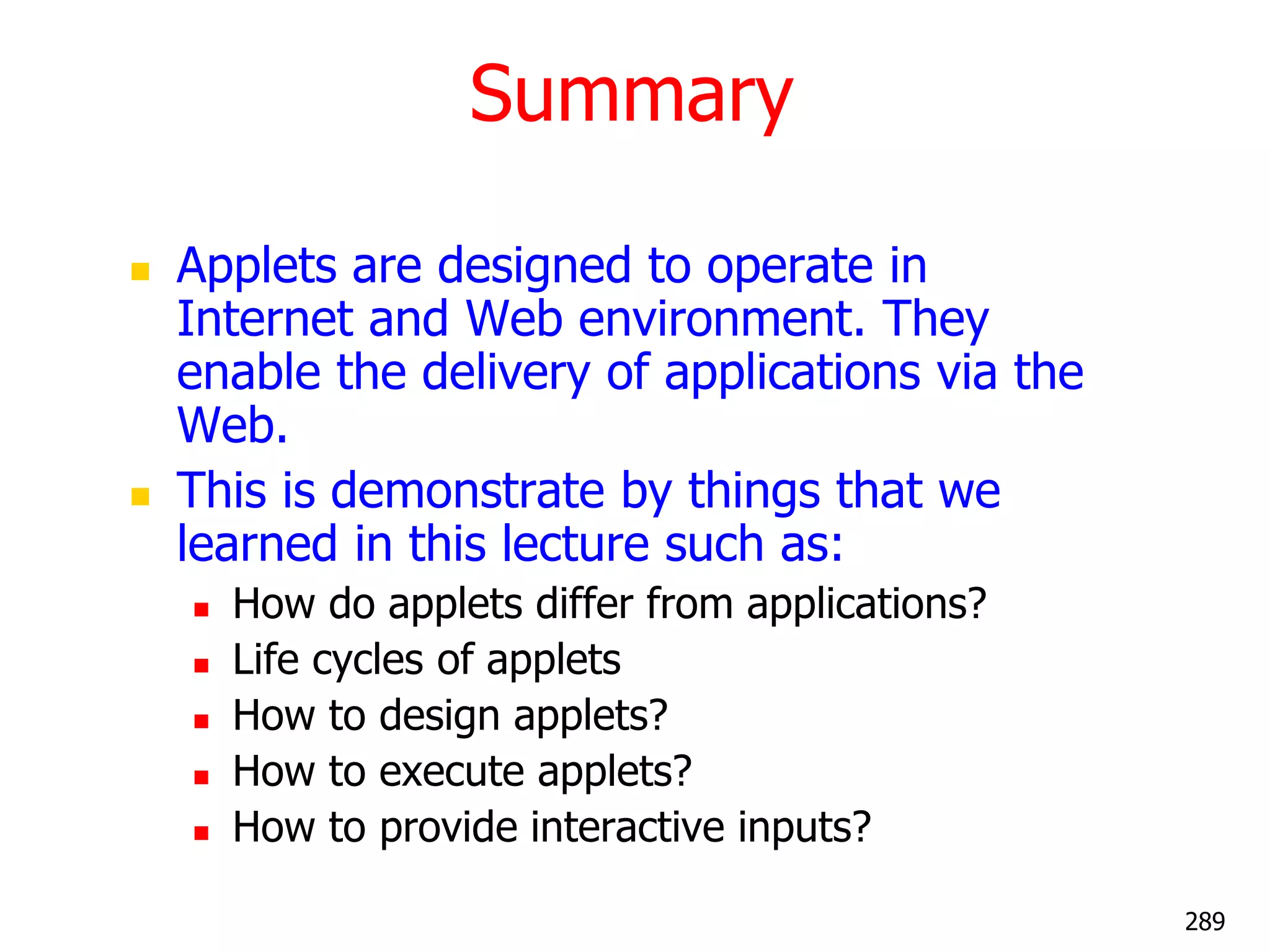



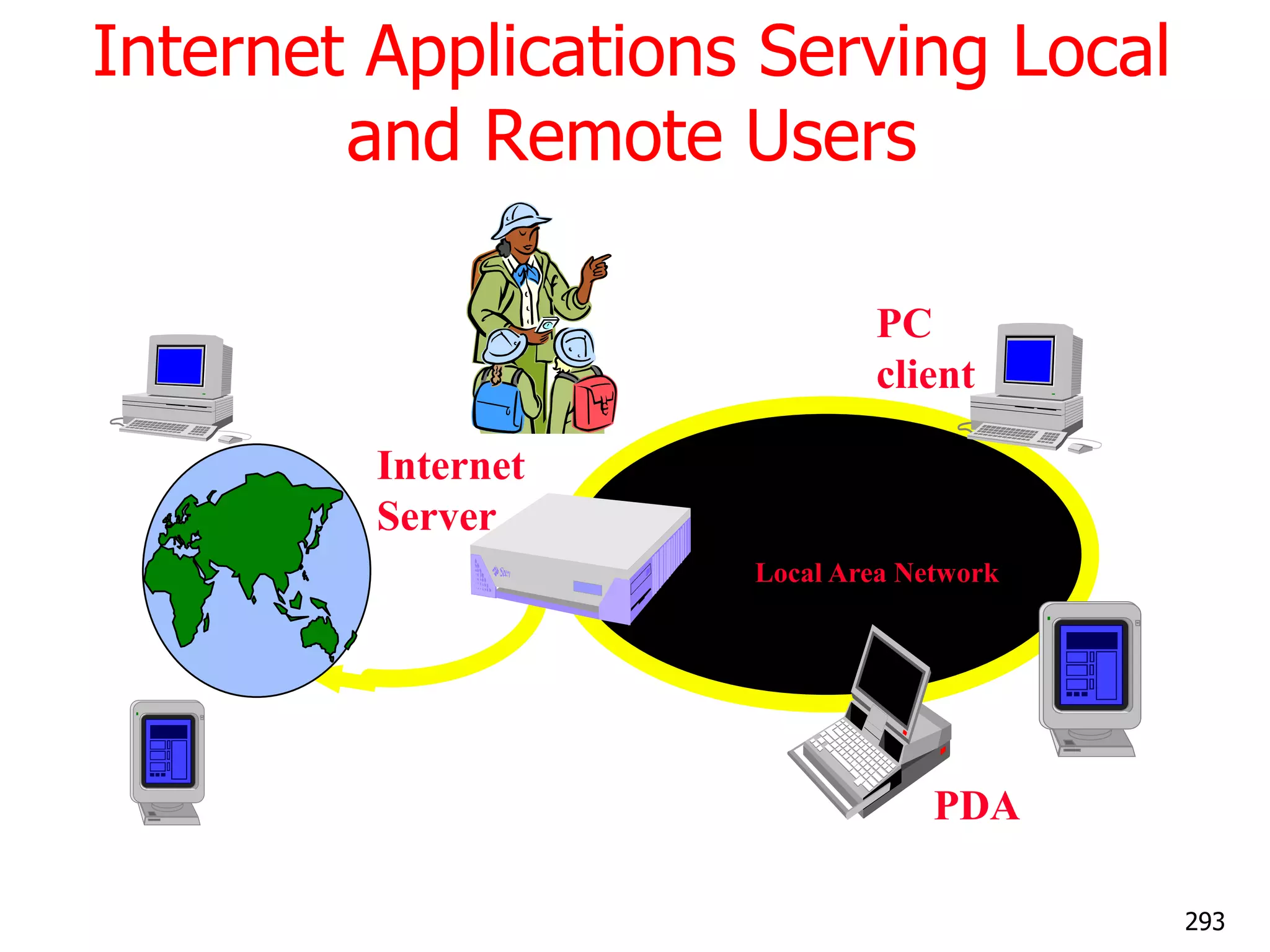
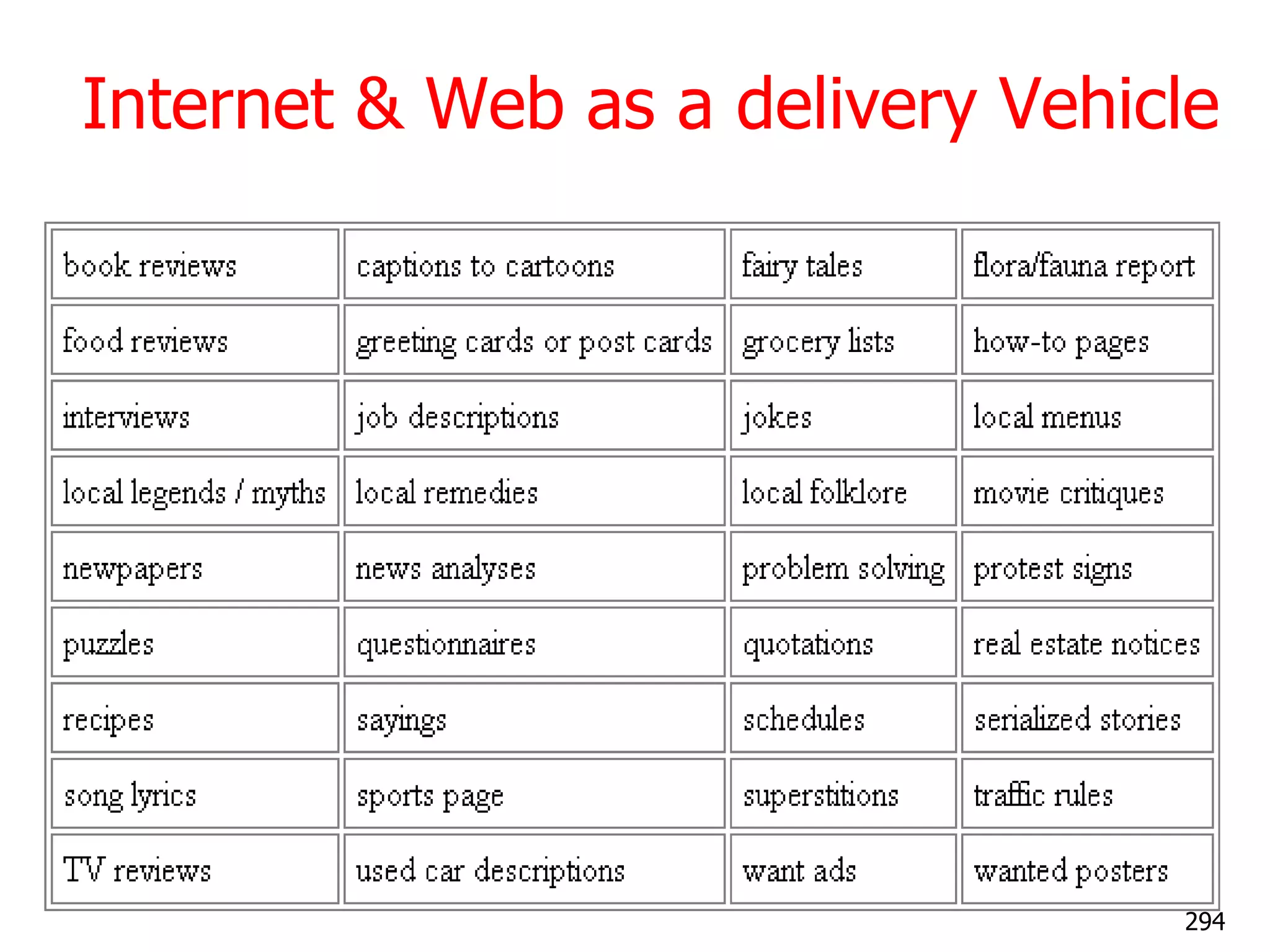
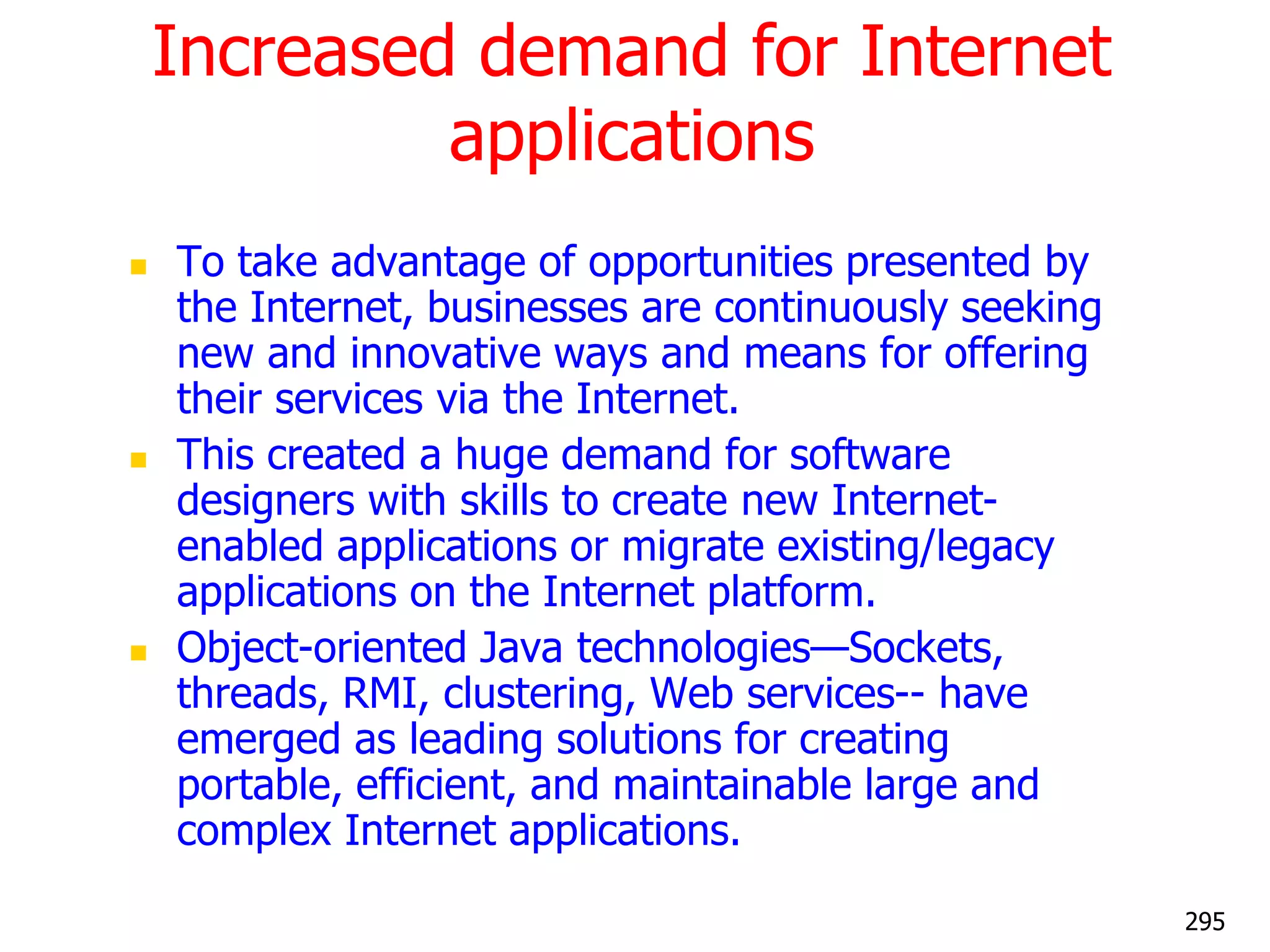
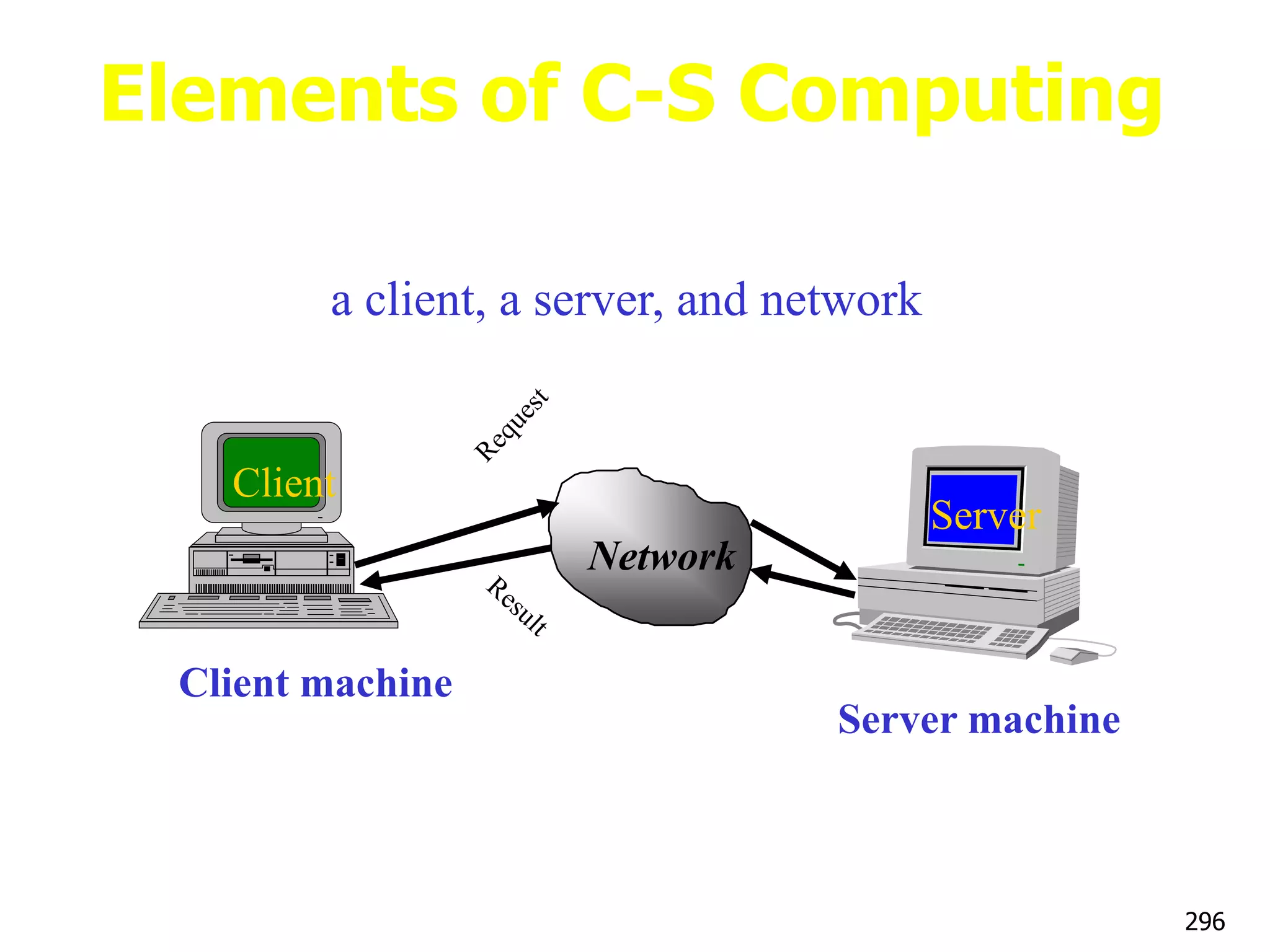
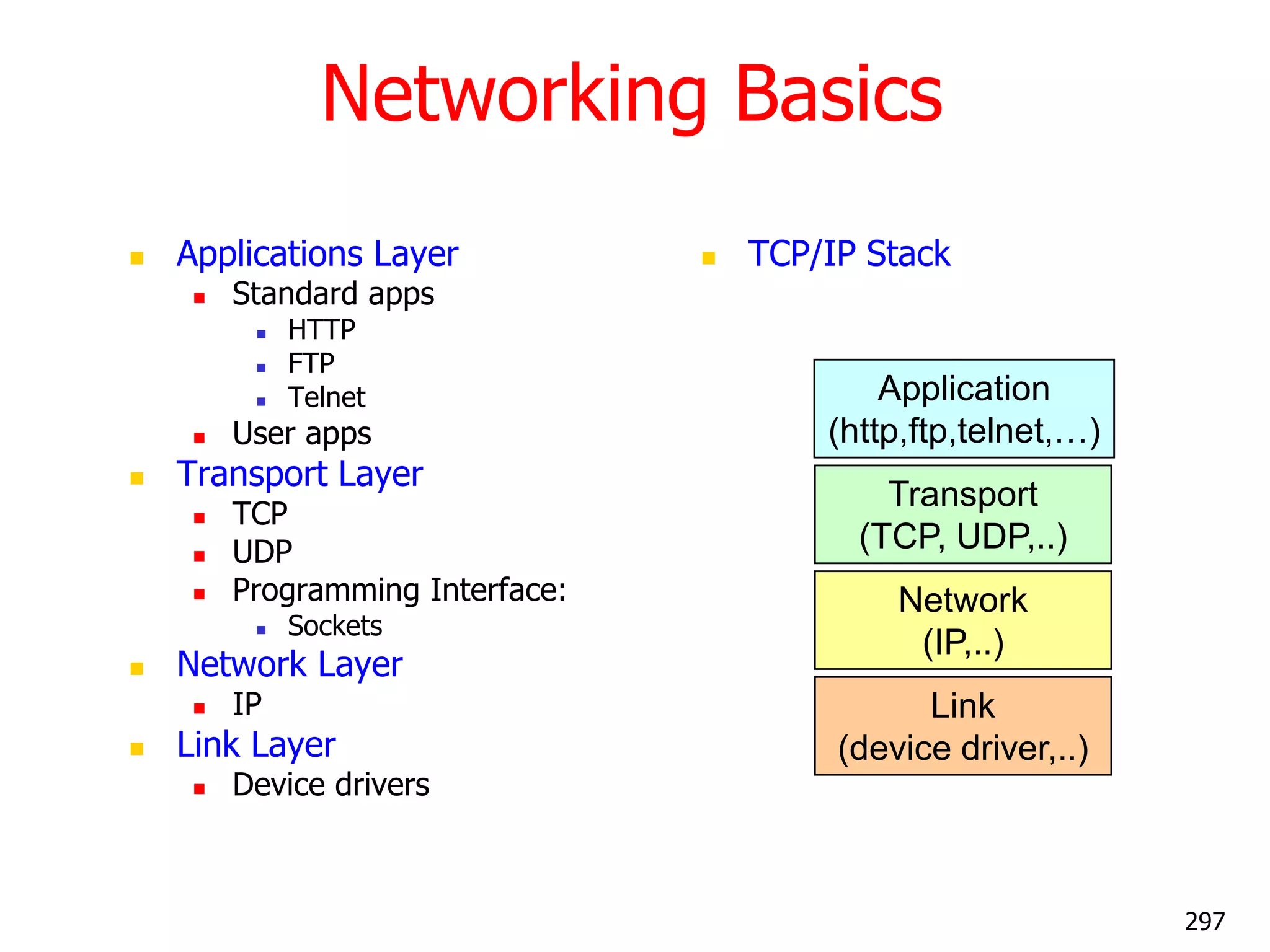
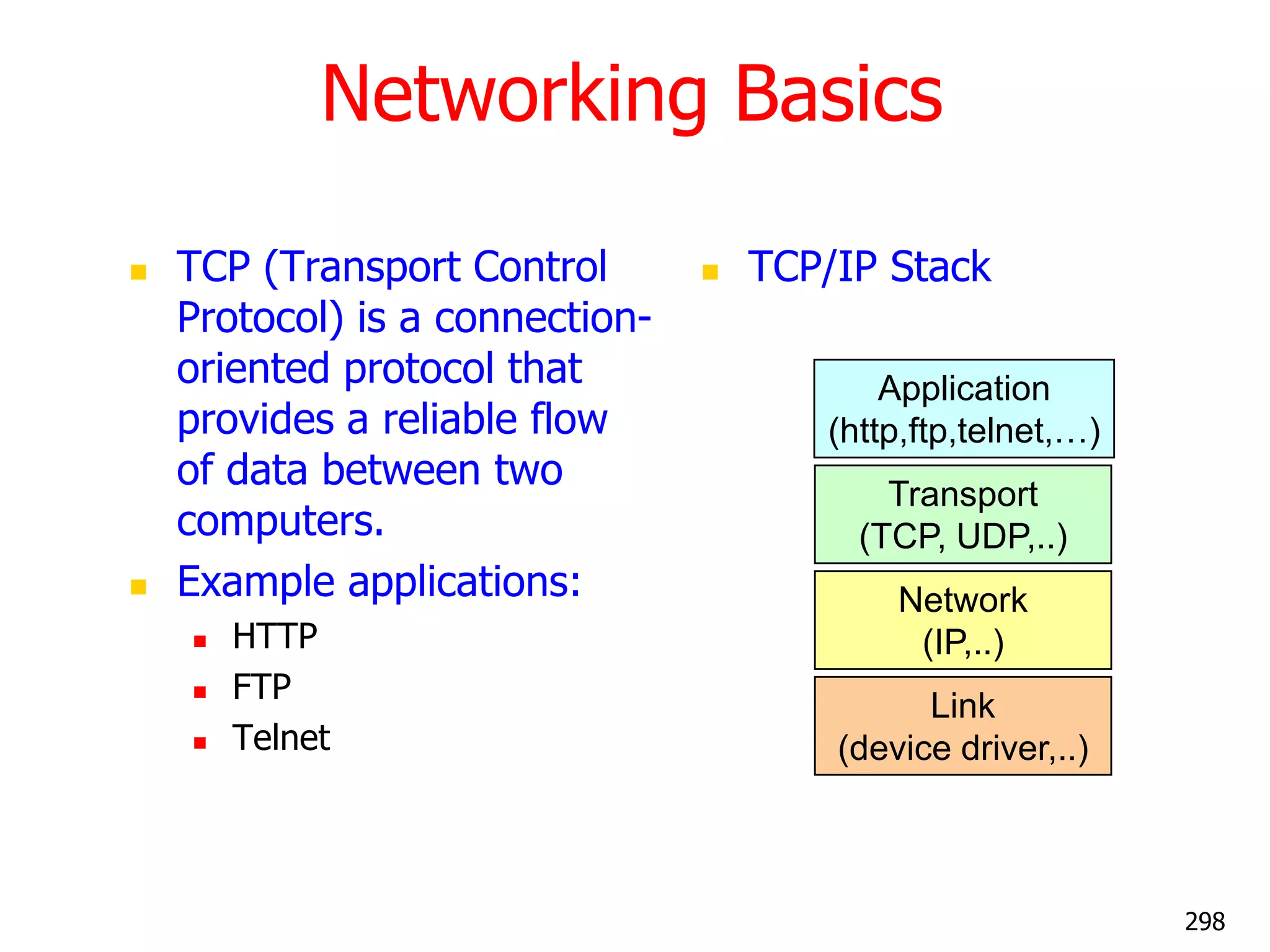
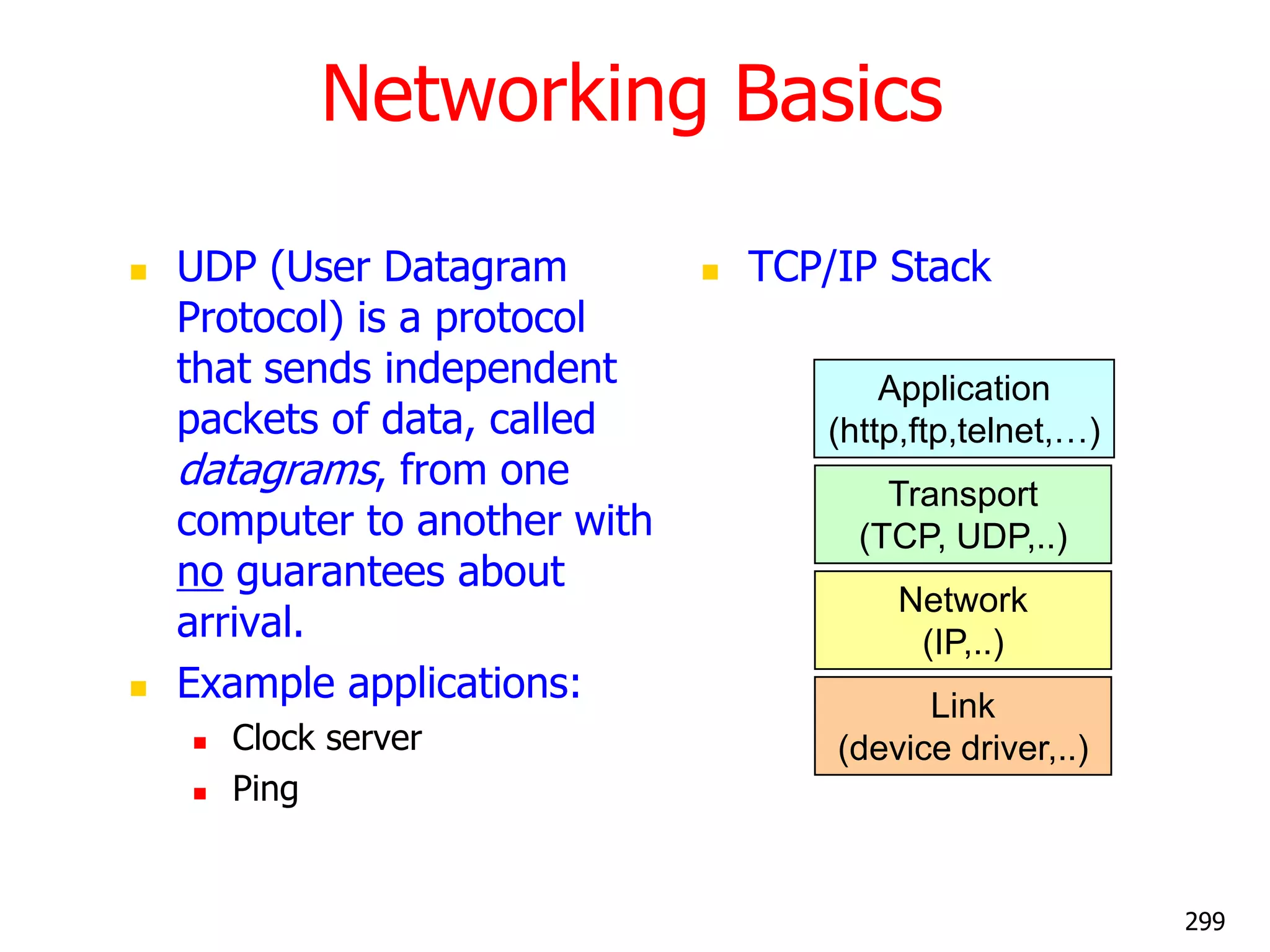



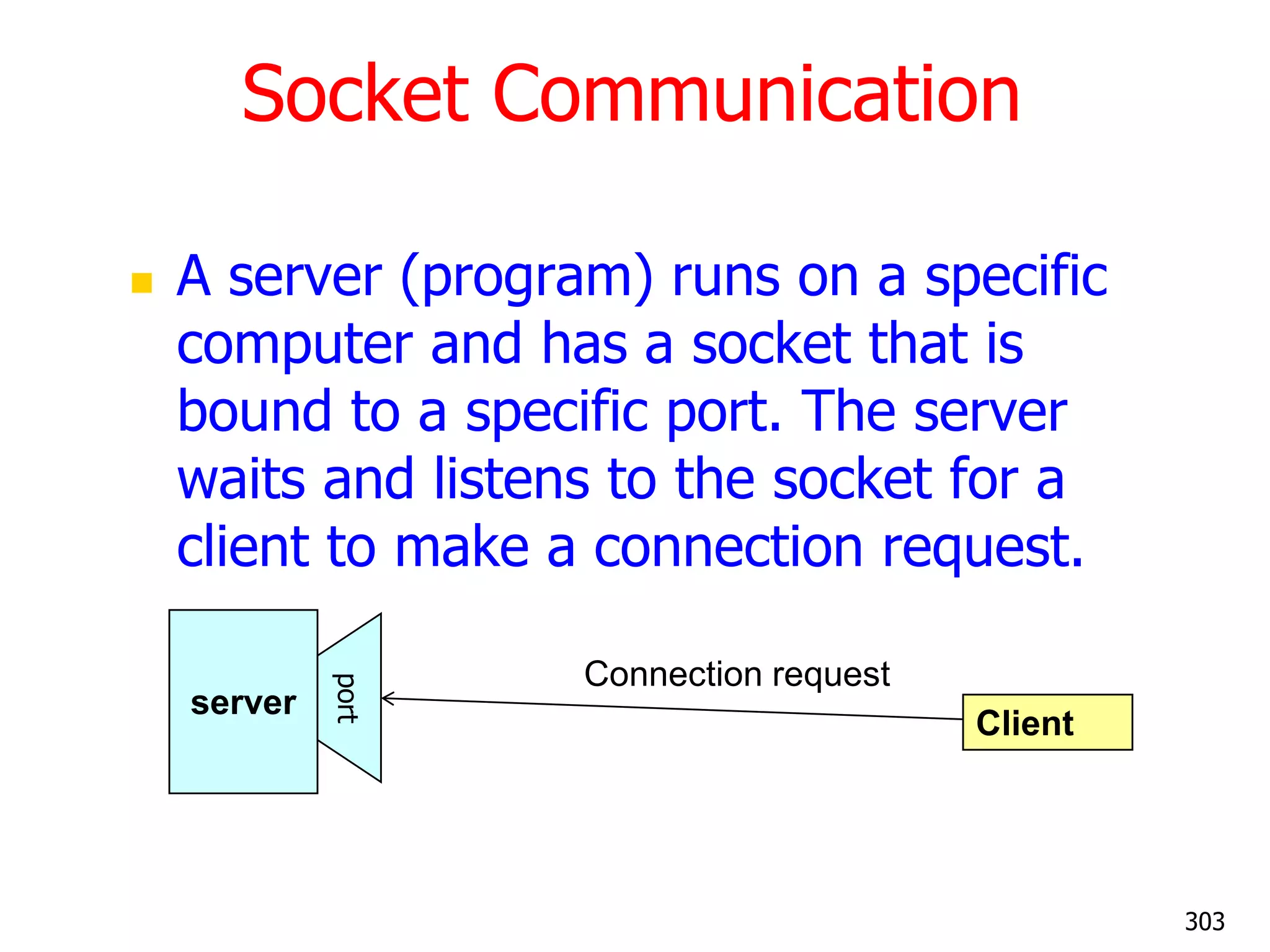

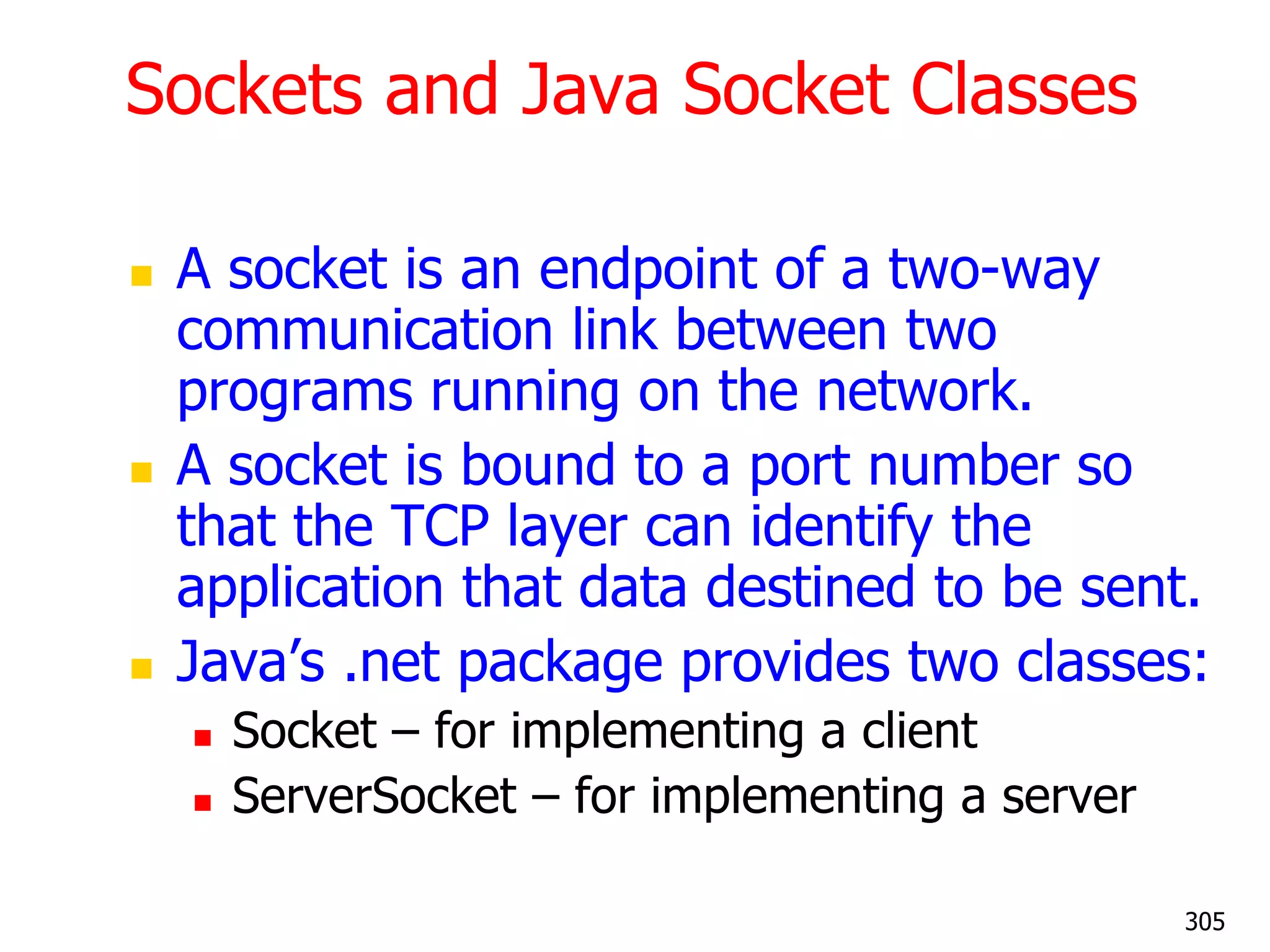
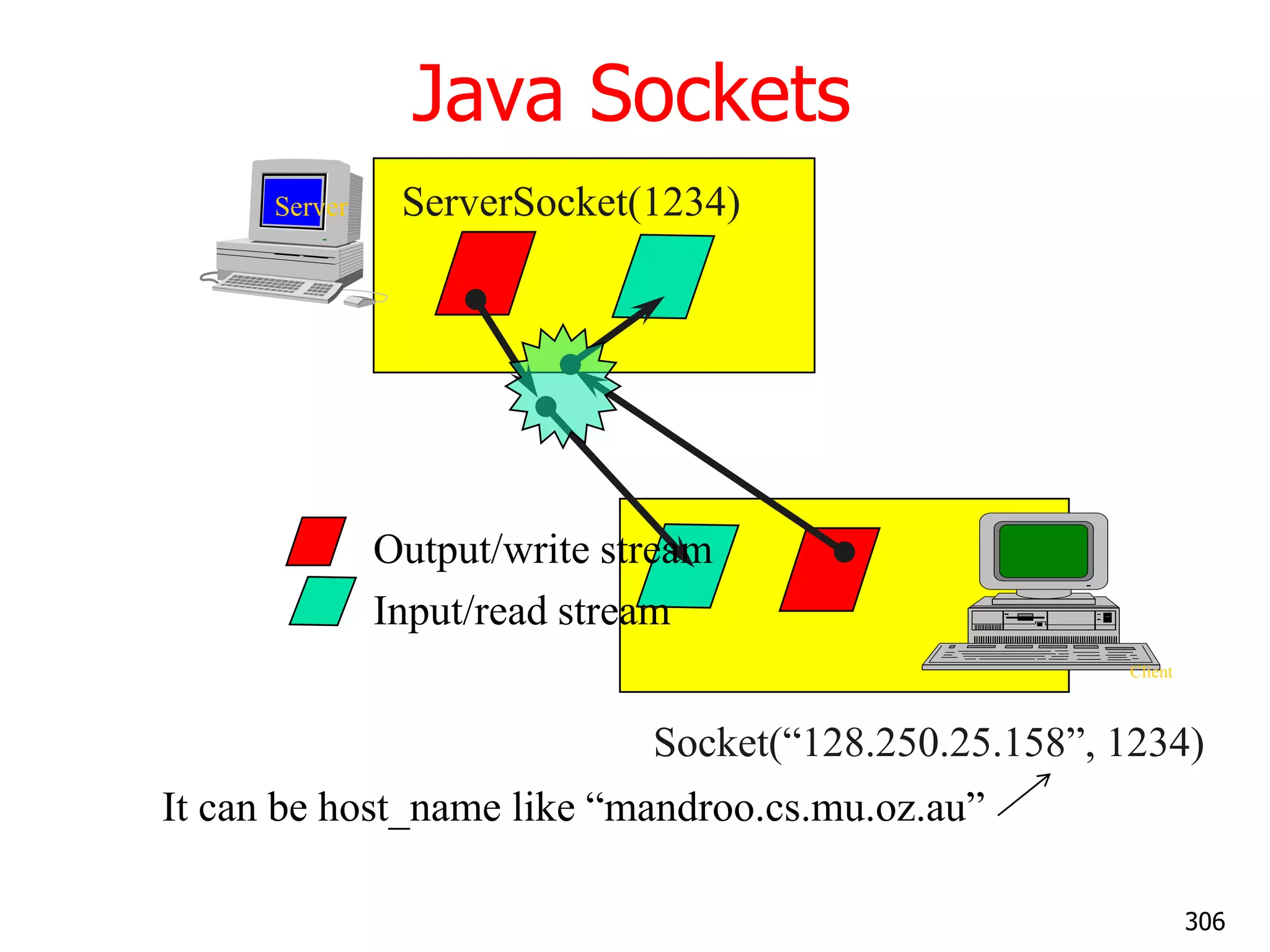

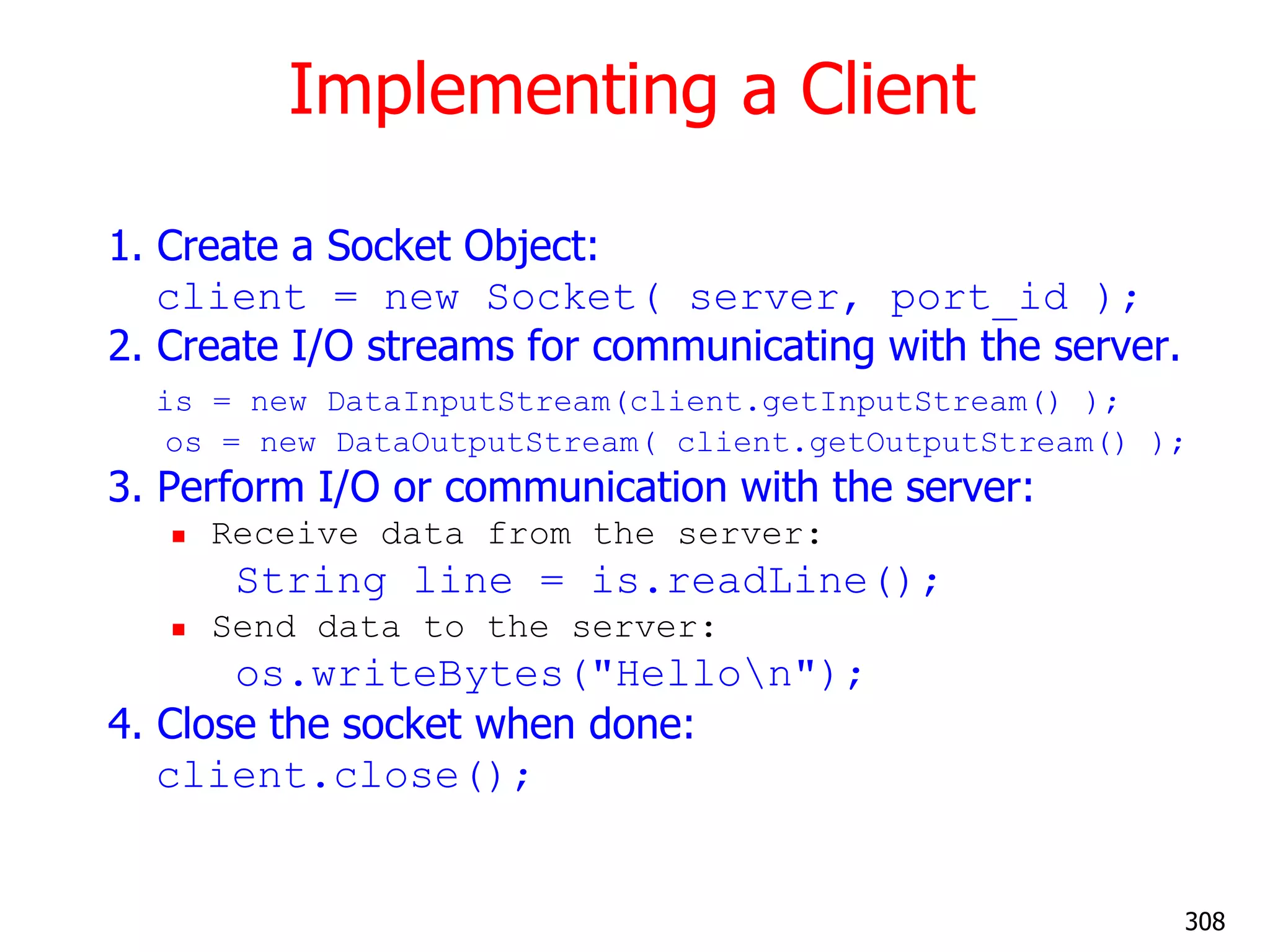
![A simple server (simplified code) // SimpleServer.java: a simple server program import java.net.*; import java.io.*; public class SimpleServer { public static void main(String args[]) throws IOException { // Register service on port 1234 ServerSocket s = new ServerSocket(1234); Socket s1=s.accept(); // Wait and accept a connection // Get a communication stream associated with the socket OutputStream s1out = s1.getOutputStream(); DataOutputStream dos = new DataOutputStream (s1out); // Send a string! dos.writeUTF("Hi there"); // Close the connection, but not the server socket dos.close(); s1out.close(); s1.close(); } } 309](https://image.slidesharecdn.com/corejavacompletenotes-121028072655-phpapp01/75/Core-java-complete-notes-Contact-at-91-814-614-5674-309-2048.jpg)
![A simple client (simplified code) // SimpleClient.java: a simple client program import java.net.*; import java.io.*; public class SimpleClient { public static void main(String args[]) throws IOException { // Open your connection to a server, at port 1234 Socket s1 = new Socket("mundroo.cs.mu.oz.au",1234); // Get an input file handle from the socket and read the input InputStream s1In = s1.getInputStream(); DataInputStream dis = new DataInputStream(s1In); String st = new String (dis.readUTF()); System.out.println(st); // When done, just close the connection and exit dis.close(); s1In.close(); s1.close(); } } 310](https://image.slidesharecdn.com/corejavacompletenotes-121028072655-phpapp01/75/Core-java-complete-notes-Contact-at-91-814-614-5674-310-2048.jpg)
![Run Run Server on mundroo.cs.mu.oz.au [raj@mundroo] java SimpleServer & Run Client on any machine (including mundroo): [raj@mundroo] java SimpleClient Hi there If you run client when server is not up: [raj@mundroo] sockets [1:147] java SimpleClient Exception in thread "main" java.net.ConnectException: Connection refused at java.net.PlainSocketImpl.socketConnect(Native Method) at java.net.PlainSocketImpl.doConnect(PlainSocketImpl.java:320) at java.net.PlainSocketImpl.connectToAddress(PlainSocketImpl.java:133) at java.net.PlainSocketImpl.connect(PlainSocketImpl.java:120) at java.net.Socket.<init>(Socket.java:273) at java.net.Socket.<init>(Socket.java:100) at SimpleClient.main(SimpleClient.java:6) 311](https://image.slidesharecdn.com/corejavacompletenotes-121028072655-phpapp01/75/Core-java-complete-notes-Contact-at-91-814-614-5674-311-2048.jpg)
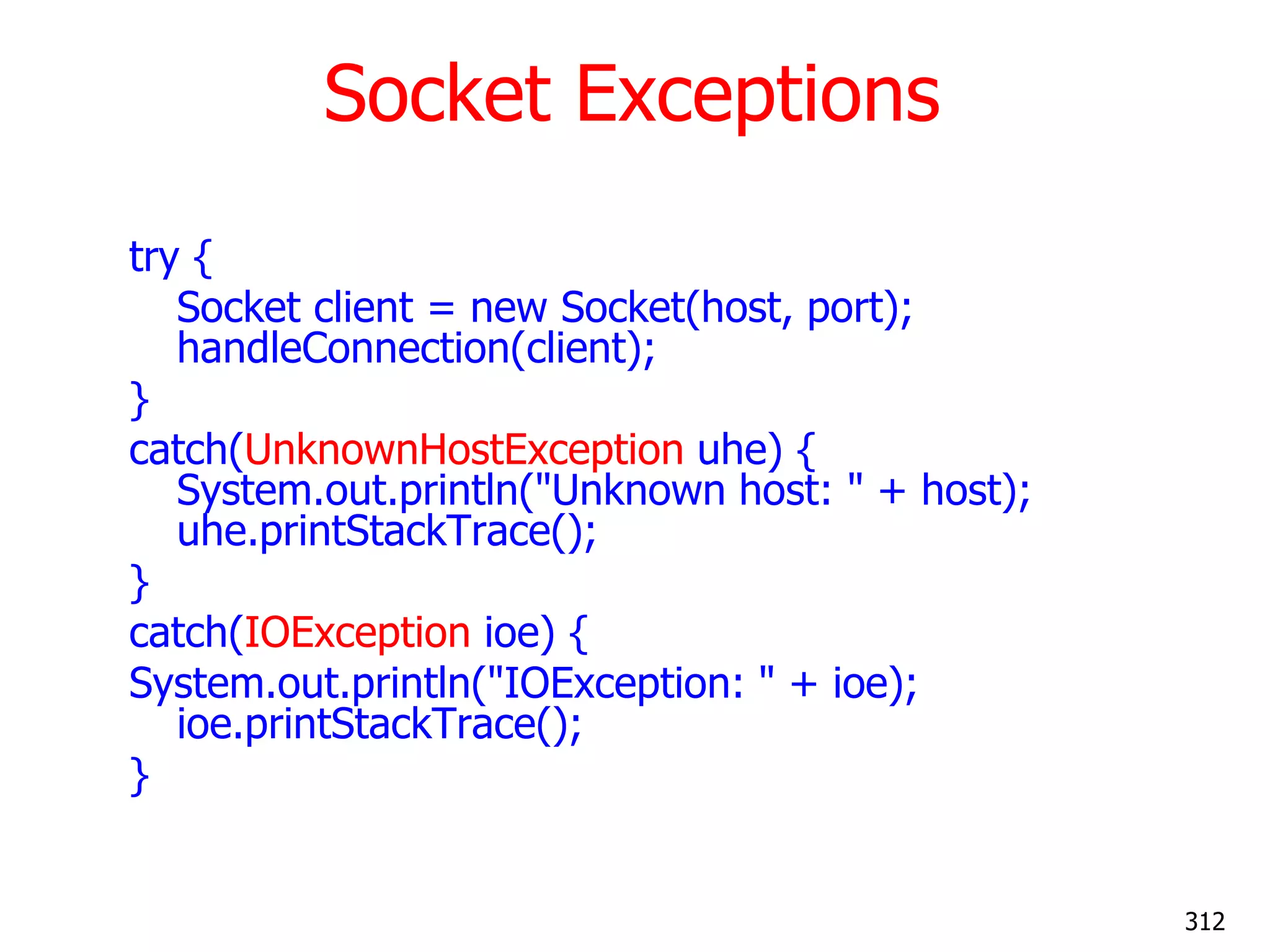

![Server in Loop: Always up // SimpleServerLoop.java: a simple server program that runs forever in a single thead import java.net.*; import java.io.*; public class SimpleServerLoop { public static void main(String args[]) throws IOException { // Register service on port 1234 ServerSocket s = new ServerSocket(1234); while(true) { Socket s1=s.accept(); // Wait and accept a connection // Get a communication stream associated with the socket OutputStream s1out = s1.getOutputStream(); DataOutputStream dos = new DataOutputStream (s1out); // Send a string! dos.writeUTF("Hi there"); // Close the connection, but not the server socket dos.close(); s1out.close(); s1.close(); } } } 314](https://image.slidesharecdn.com/corejavacompletenotes-121028072655-phpapp01/75/Core-java-complete-notes-Contact-at-91-814-614-5674-314-2048.jpg)
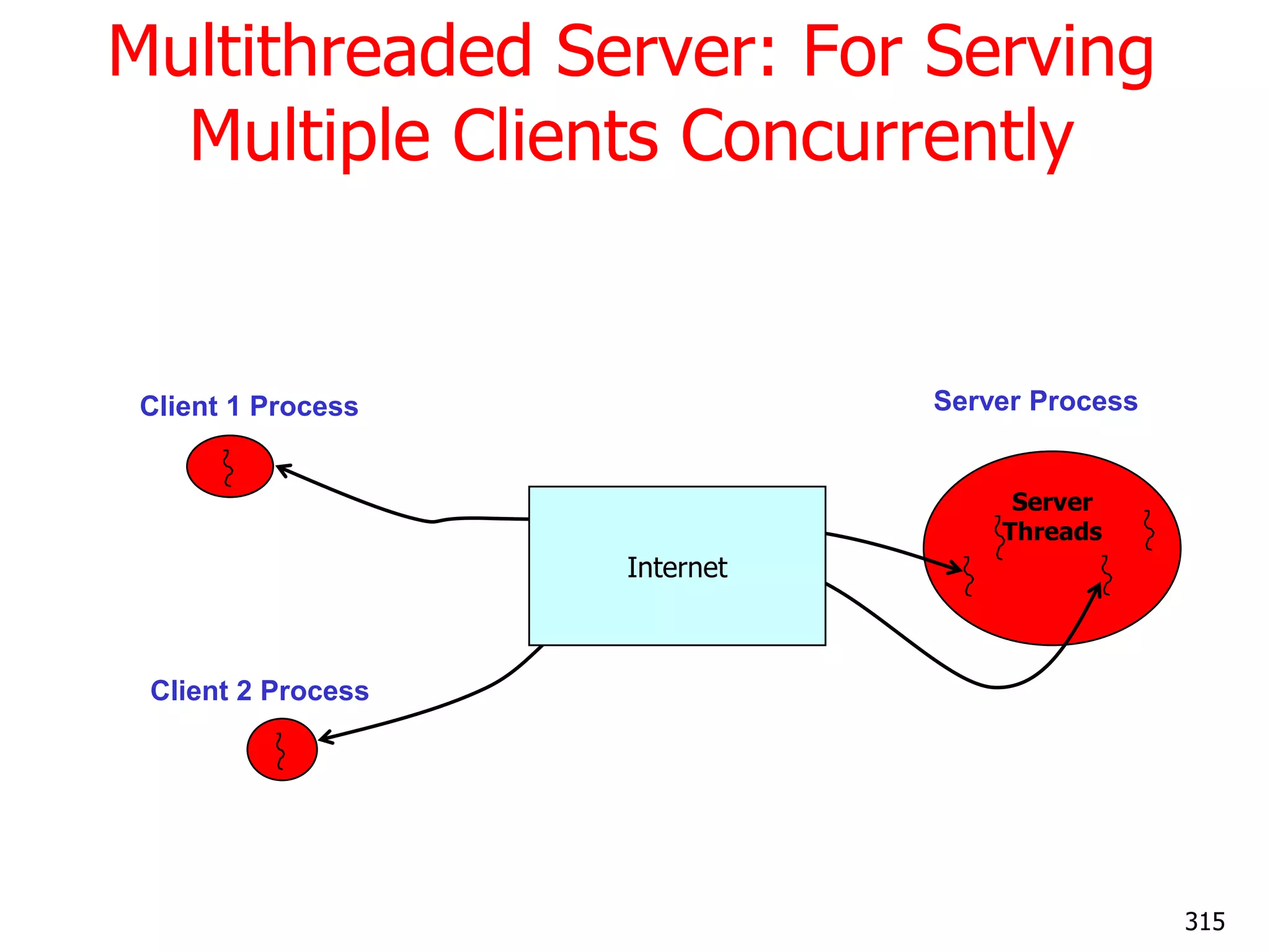
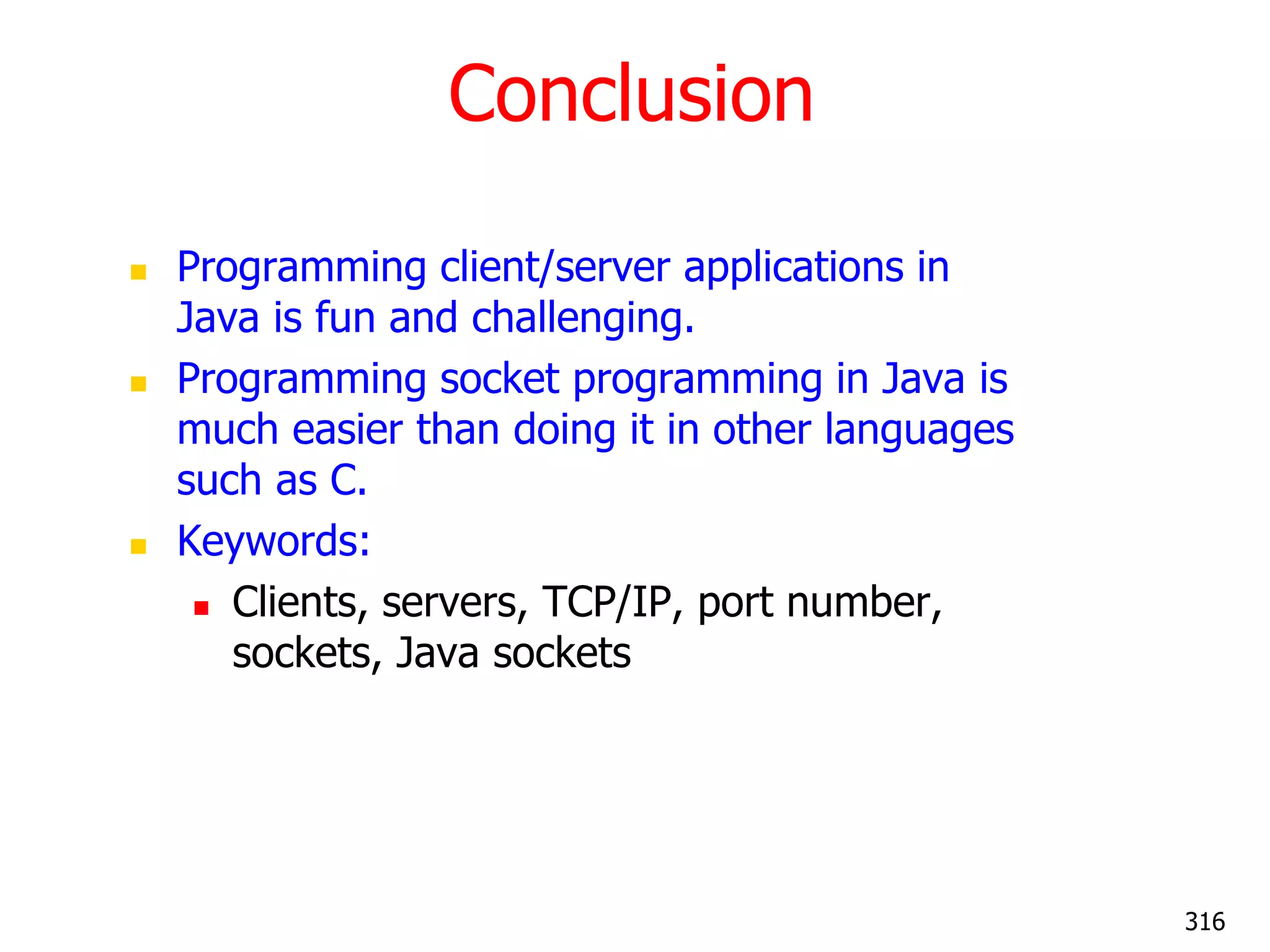
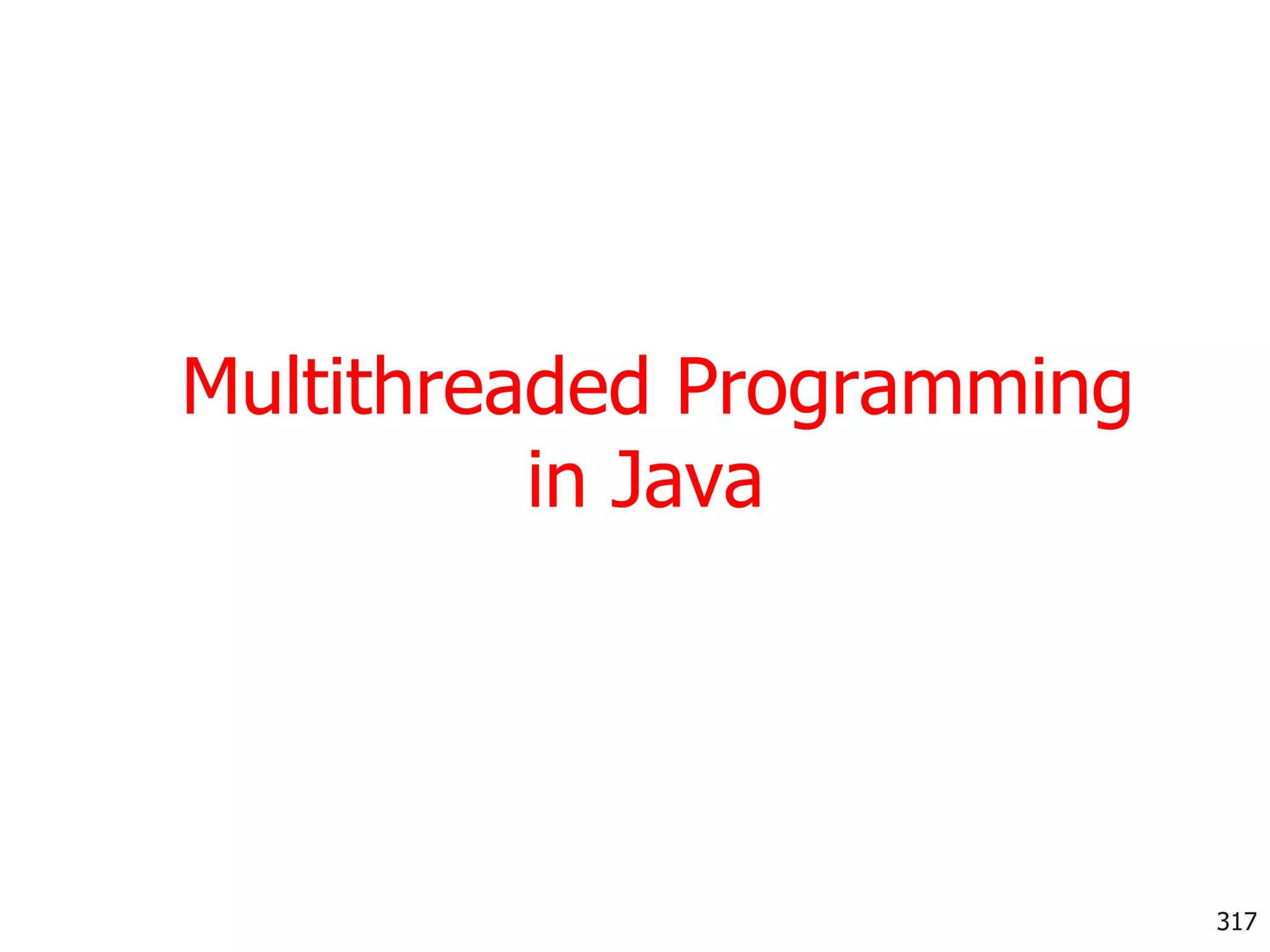
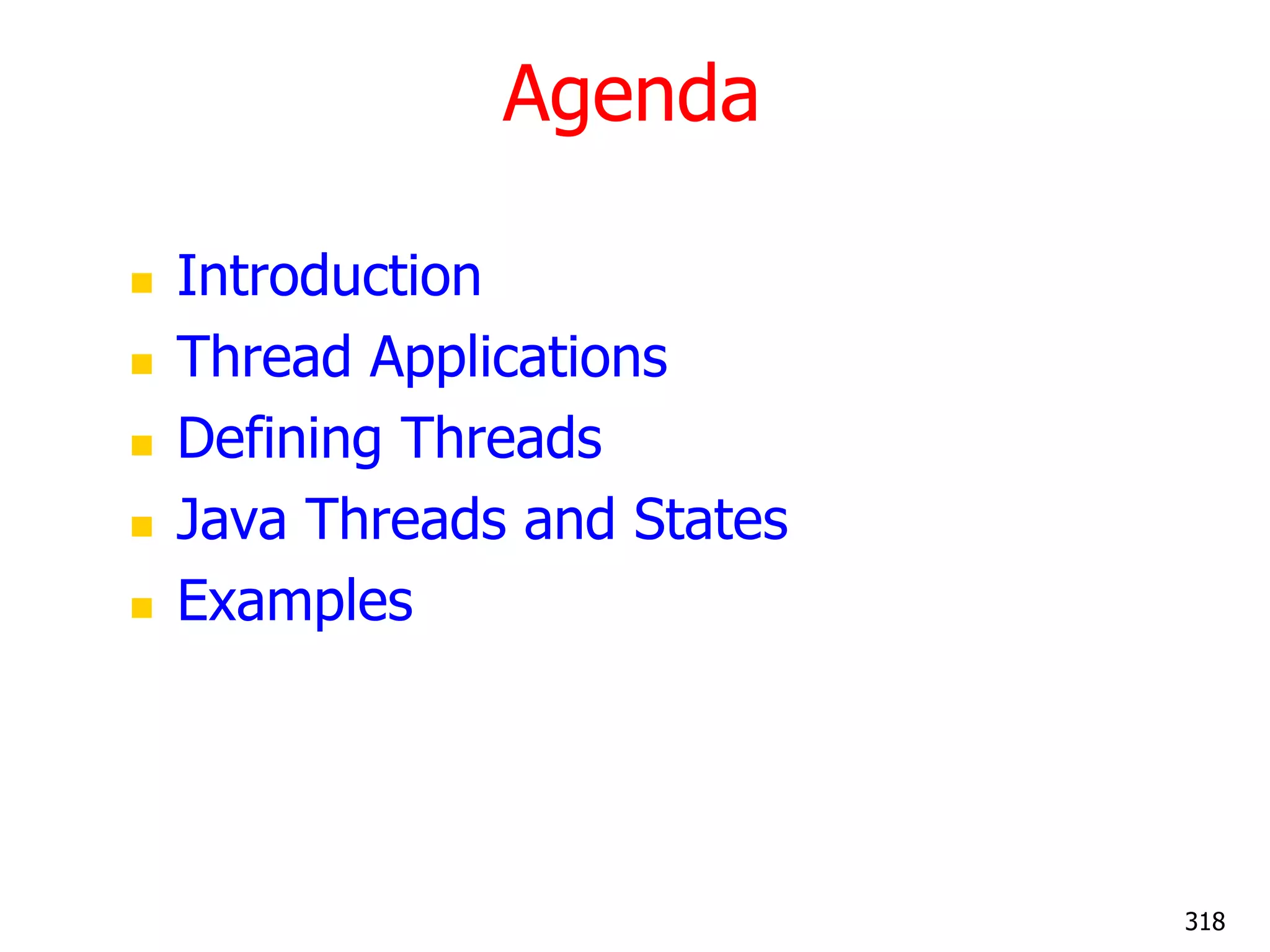
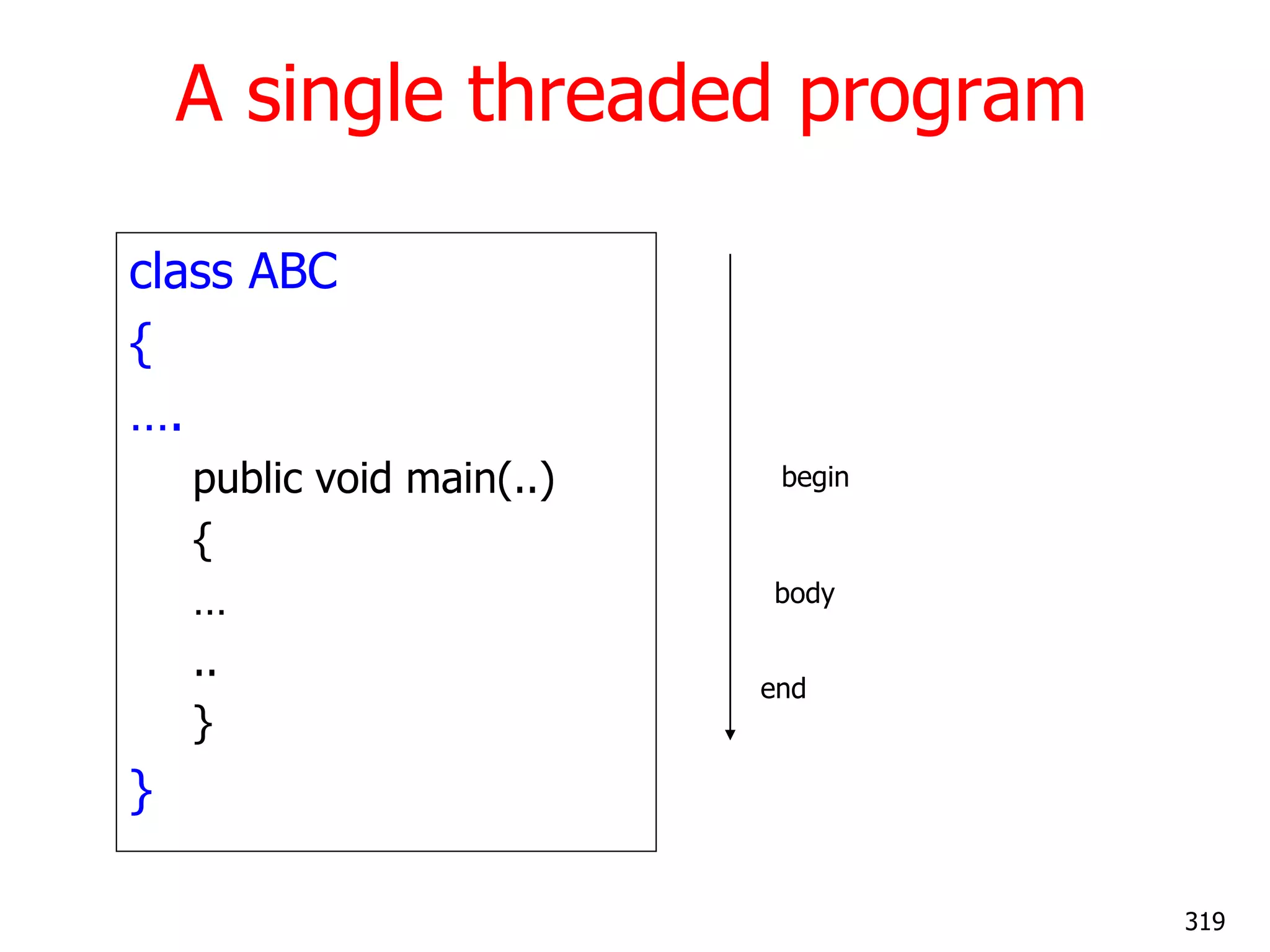

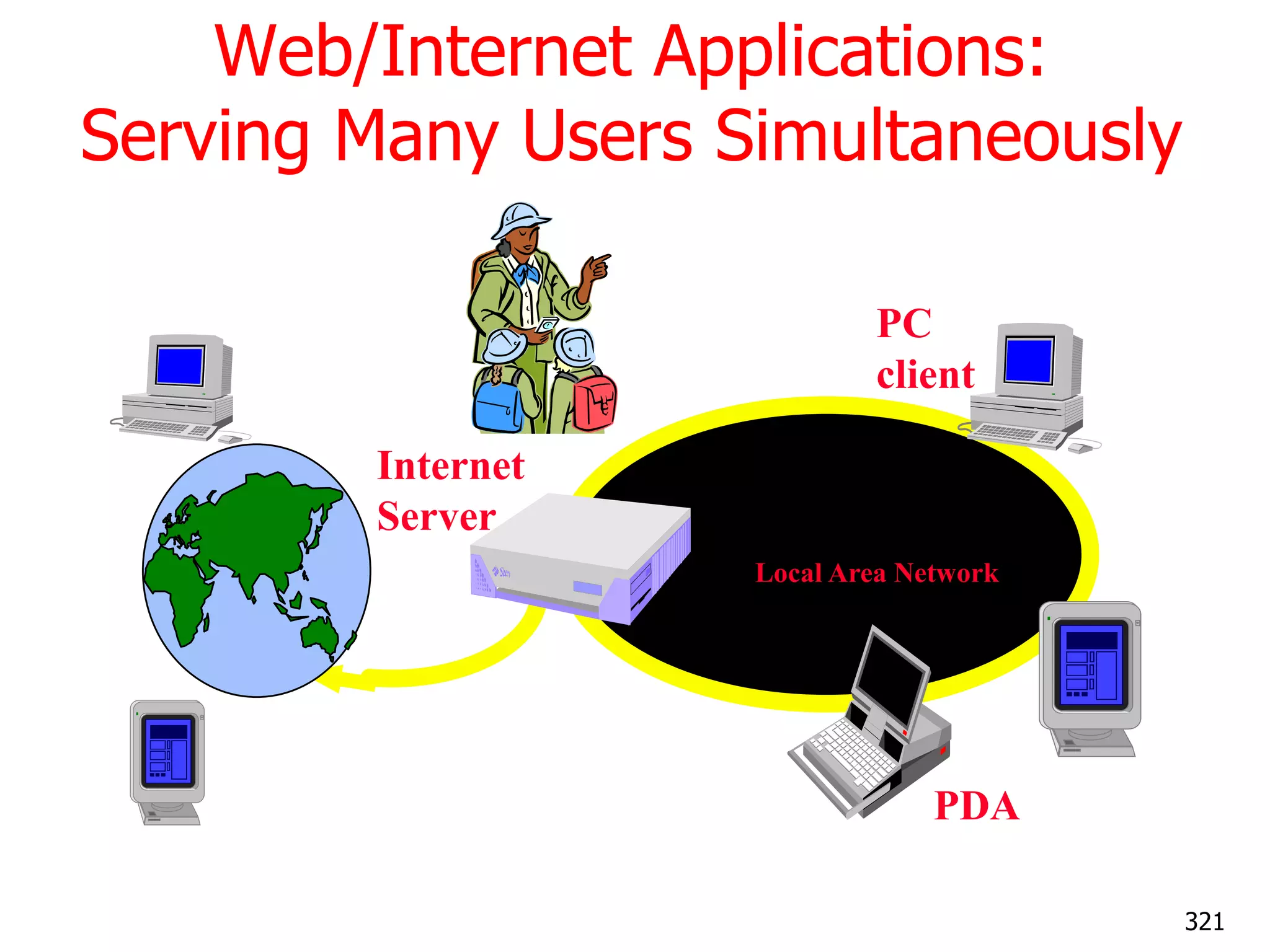
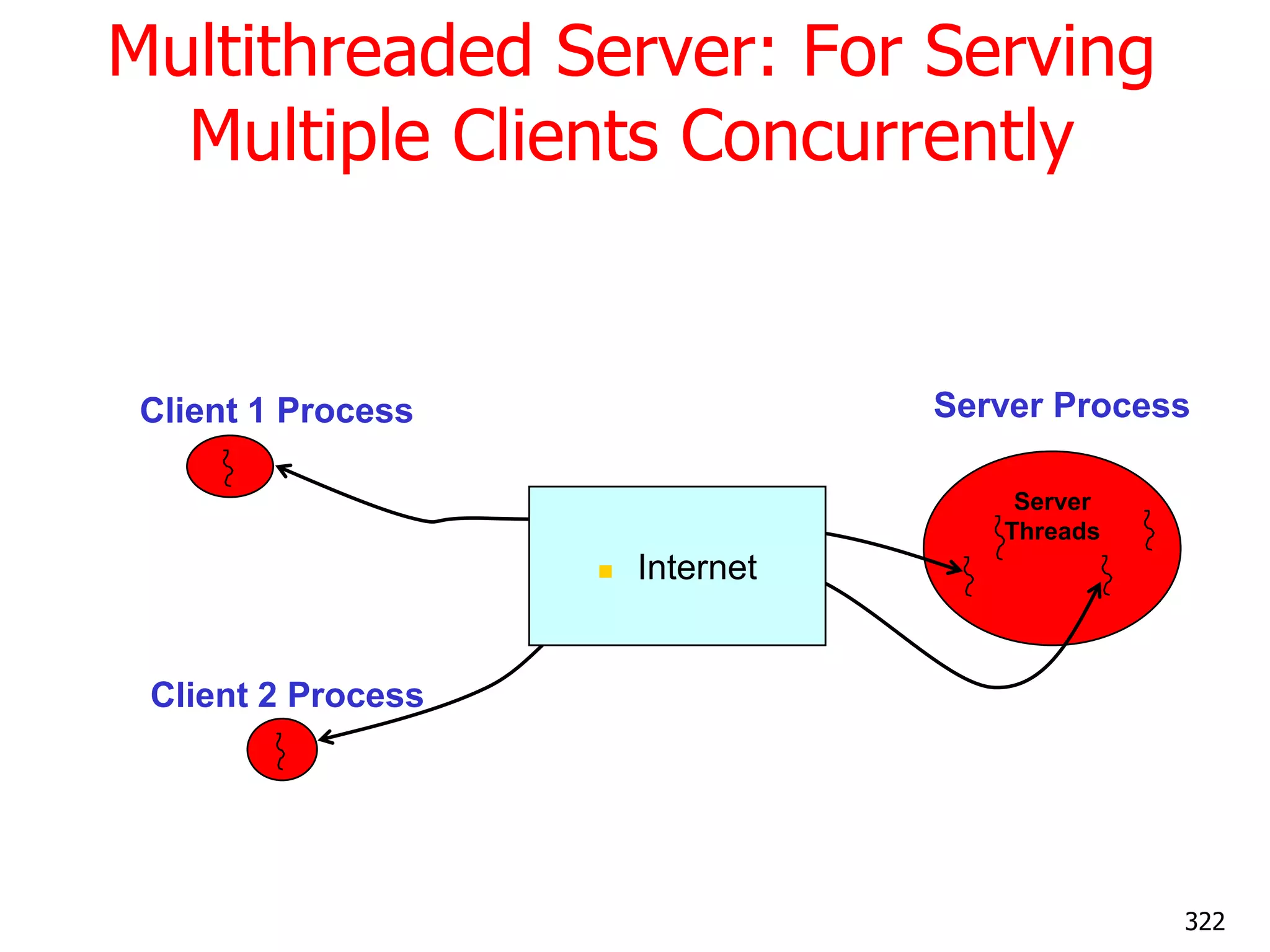
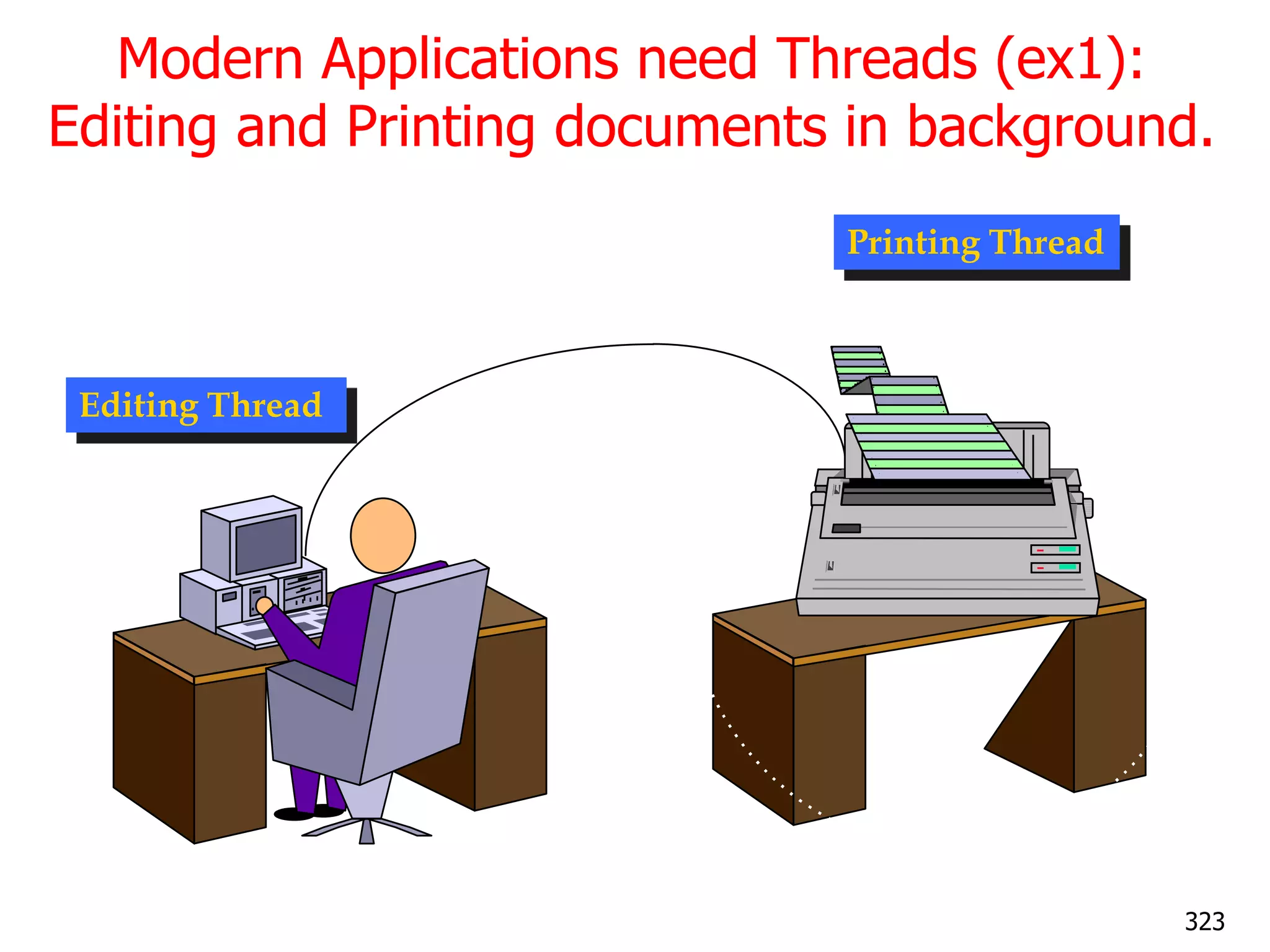
![Multithreaded/Parallel File Copy reader() { - - - - - - - - - - lock(buff[i]); read(src,buff[i]); unlock(buff[i]); - - - - - - - - - - } writer() { - - - - - - - - - - lock(buff[i]); write(src,buff[i]); unlock(buff[i]); - - - - - - - - - - } buff[0] buff[1] Cooperative Parallel Synchronized Threads 324](https://image.slidesharecdn.com/corejavacompletenotes-121028072655-phpapp01/75/Core-java-complete-notes-Contact-at-91-814-614-5674-324-2048.jpg)

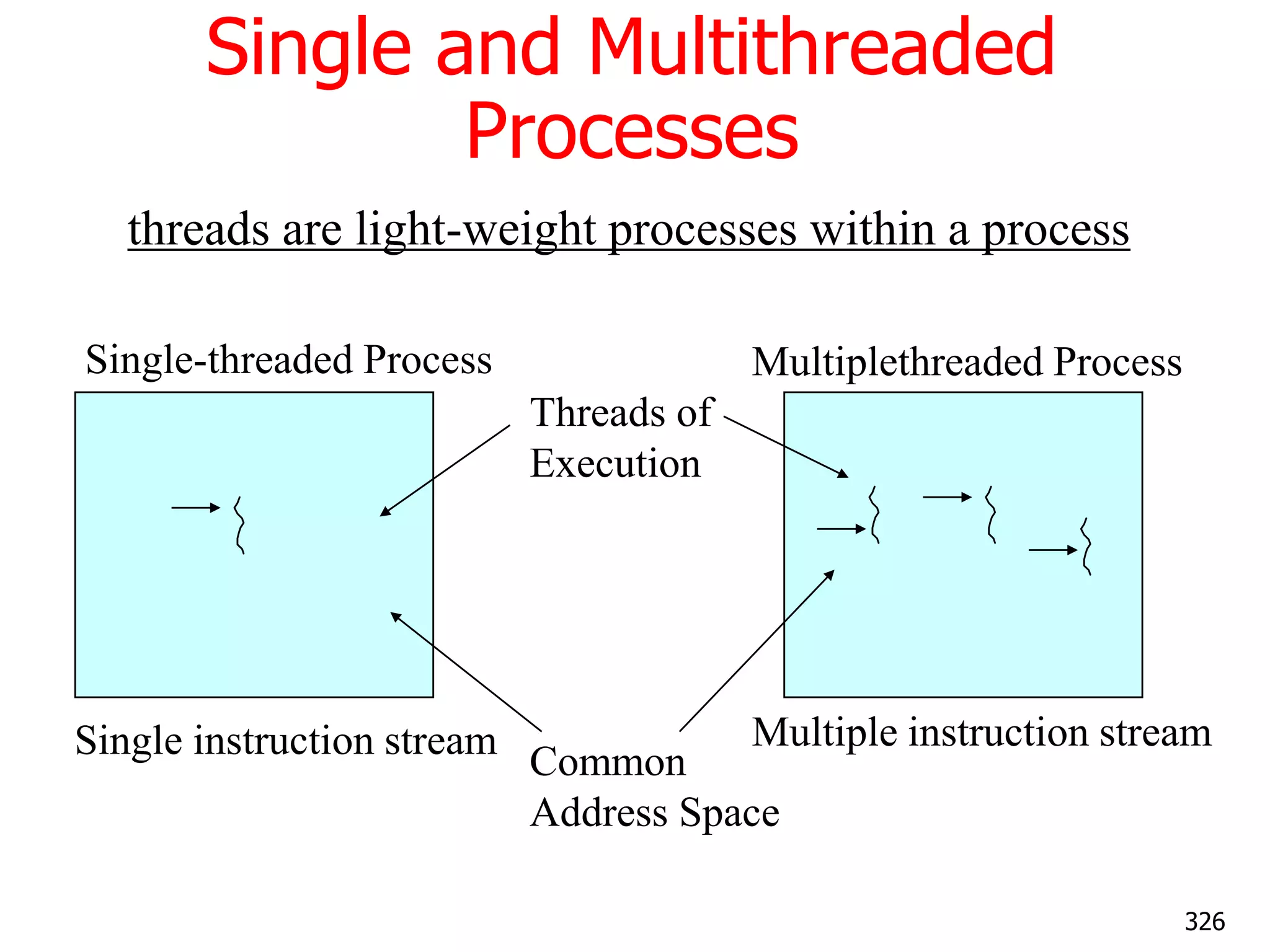


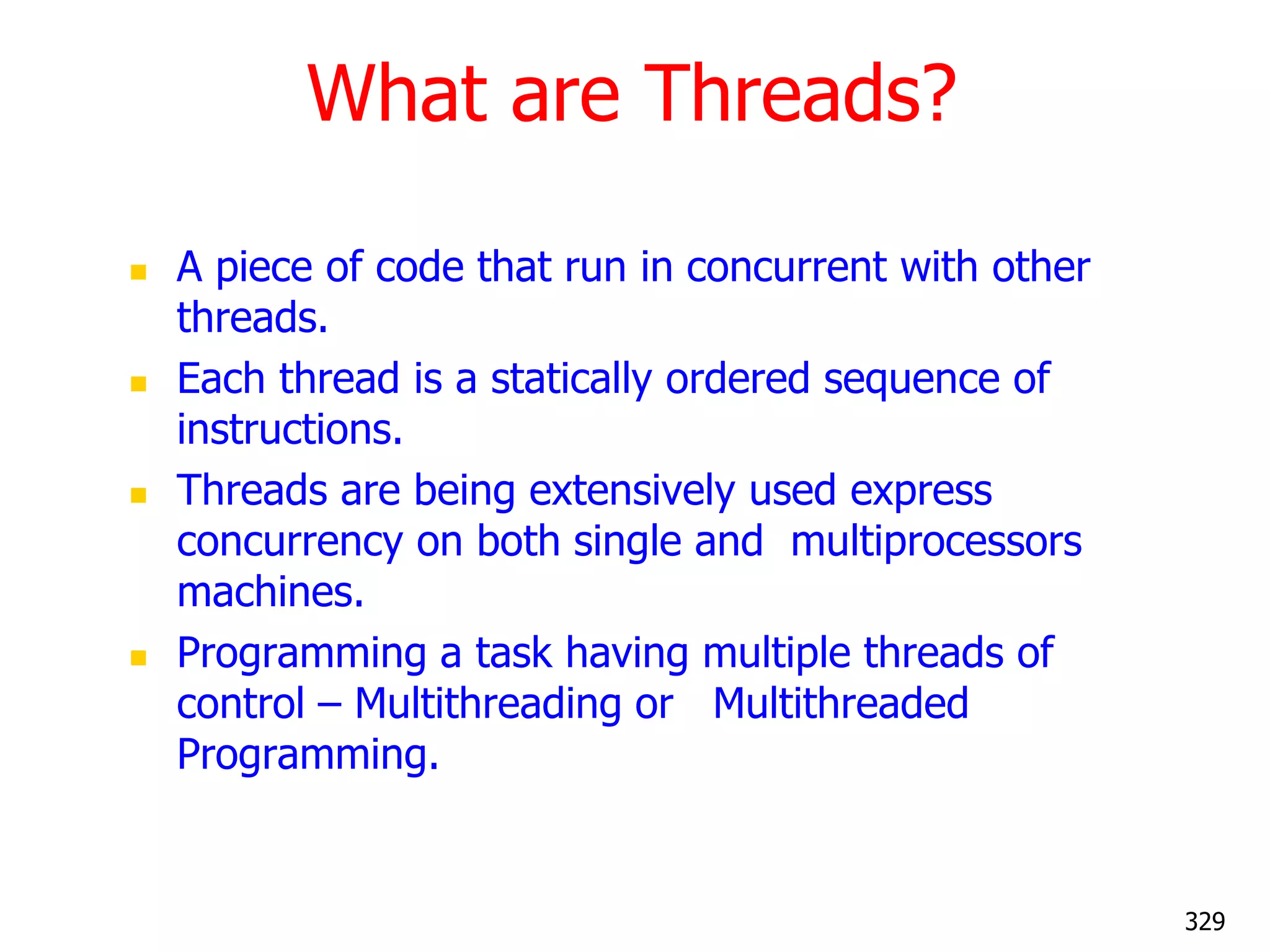
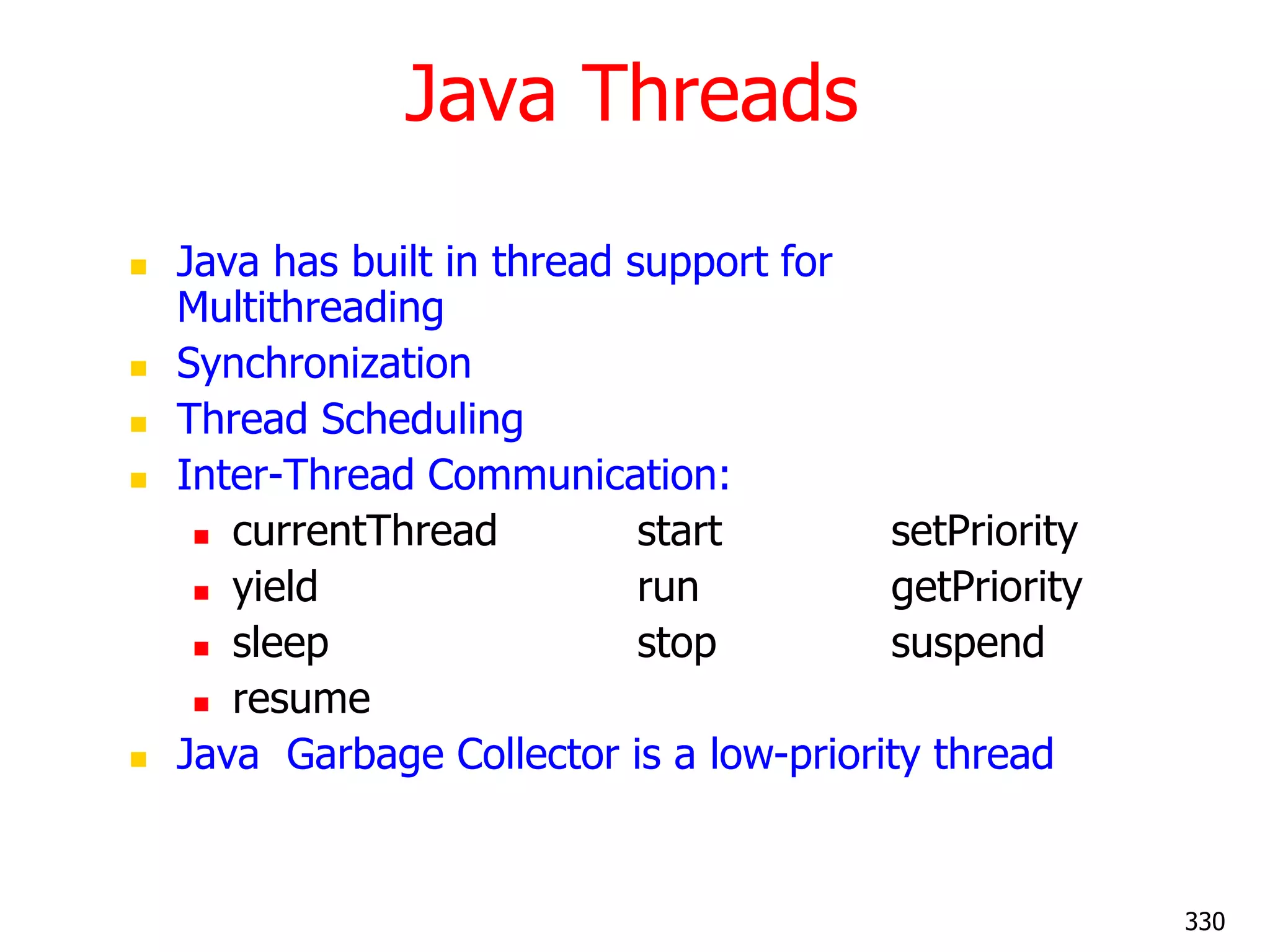
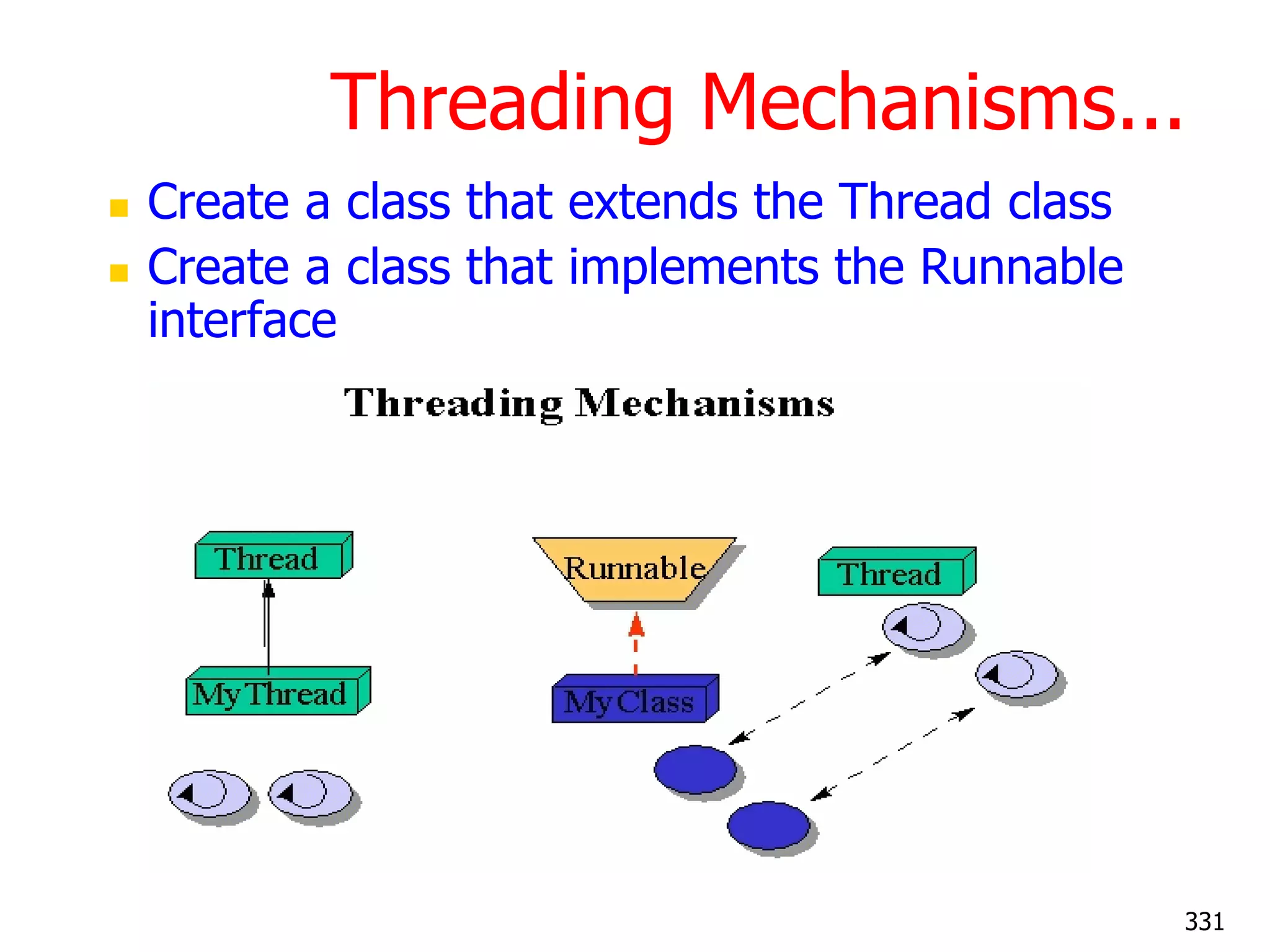

![An example class MyThread extends Thread { // the thread public void run() { System.out.println(" this thread is running ... "); } } // end class MyThread class ThreadEx1 { // a program that utilizes the thread public static void main(String [] args ) { MyThread t = new MyThread(); // due to extending the Thread class (above) // I can call start(), and this will call // run(). start() is a method in class Thread. t.start(); } // end main() } // end class ThreadEx1 333](https://image.slidesharecdn.com/corejavacompletenotes-121028072655-phpapp01/75/Core-java-complete-notes-Contact-at-91-814-614-5674-333-2048.jpg)

![An example class MyThread implements Runnable { public void run() { System.out.println(" this thread is running ... "); } } // end class MyThread class ThreadEx2 { public static void main(String [] args ) { Thread t = new Thread(new MyThread()); // due to implementing the Runnable interface // I can call start(), and this will call run(). t.start(); } // end main() } // end class ThreadEx2 335](https://image.slidesharecdn.com/corejavacompletenotes-121028072655-phpapp01/75/Core-java-complete-notes-Contact-at-91-814-614-5674-335-2048.jpg)



![ class C extends Thread { public void run() { for(int k=1;k<=5;k++) { System.out.println("t From ThreadC: k= "+k); } System.out.println("Exit from C"); } } class ThreadTest { public static void main(String args[]) { new A().start(); new B().start(); new C().start(); } } 339](https://image.slidesharecdn.com/corejavacompletenotes-121028072655-phpapp01/75/Core-java-complete-notes-Contact-at-91-814-614-5674-339-2048.jpg)
![Run 1 [raj@mundroo] threads [1:76] java ThreadTest From ThreadA: i= 1 From ThreadA: i= 2 From ThreadA: i= 3 From ThreadA: i= 4 From ThreadA: i= 5 Exit from A From ThreadC: k= 1 From ThreadC: k= 2 From ThreadC: k= 3 From ThreadC: k= 4 From ThreadC: k= 5 Exit from C From ThreadB: j= 1 From ThreadB: j= 2 From ThreadB: j= 3 From ThreadB: j= 4 From ThreadB: j= 5 Exit from B 340](https://image.slidesharecdn.com/corejavacompletenotes-121028072655-phpapp01/75/Core-java-complete-notes-Contact-at-91-814-614-5674-340-2048.jpg)
![Run2 [raj@mundroo] threads [1:77] java ThreadTest From ThreadA: i= 1 From ThreadA: i= 2 From ThreadA: i= 3 From ThreadA: i= 4 From ThreadA: i= 5 From ThreadC: k= 1 From ThreadC: k= 2 From ThreadC: k= 3 From ThreadC: k= 4 From ThreadC: k= 5 Exit from C From ThreadB: j= 1 From ThreadB: j= 2 From ThreadB: j= 3 From ThreadB: j= 4 From ThreadB: j= 5 Exit from B Exit from A 341](https://image.slidesharecdn.com/corejavacompletenotes-121028072655-phpapp01/75/Core-java-complete-notes-Contact-at-91-814-614-5674-341-2048.jpg)
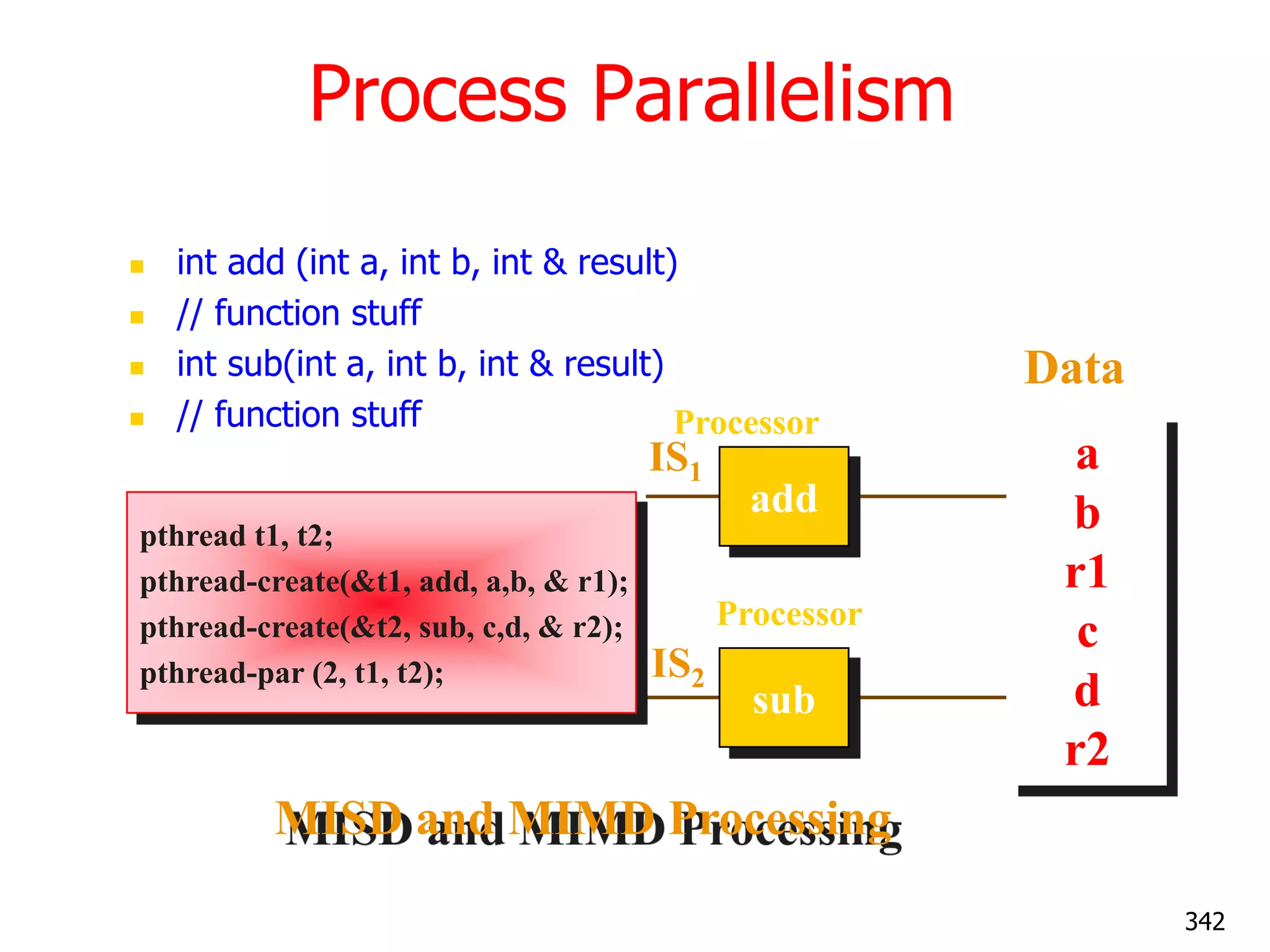
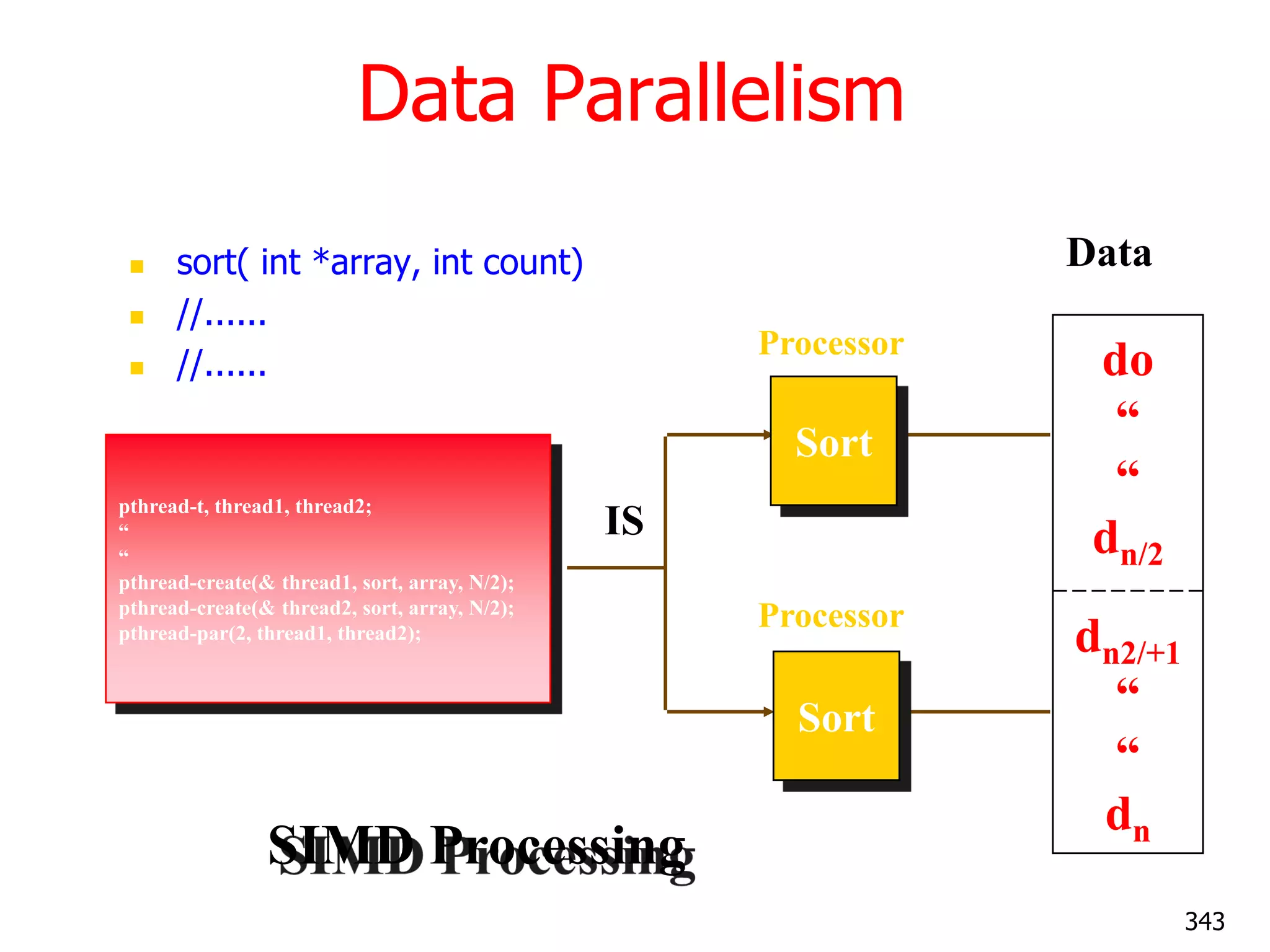

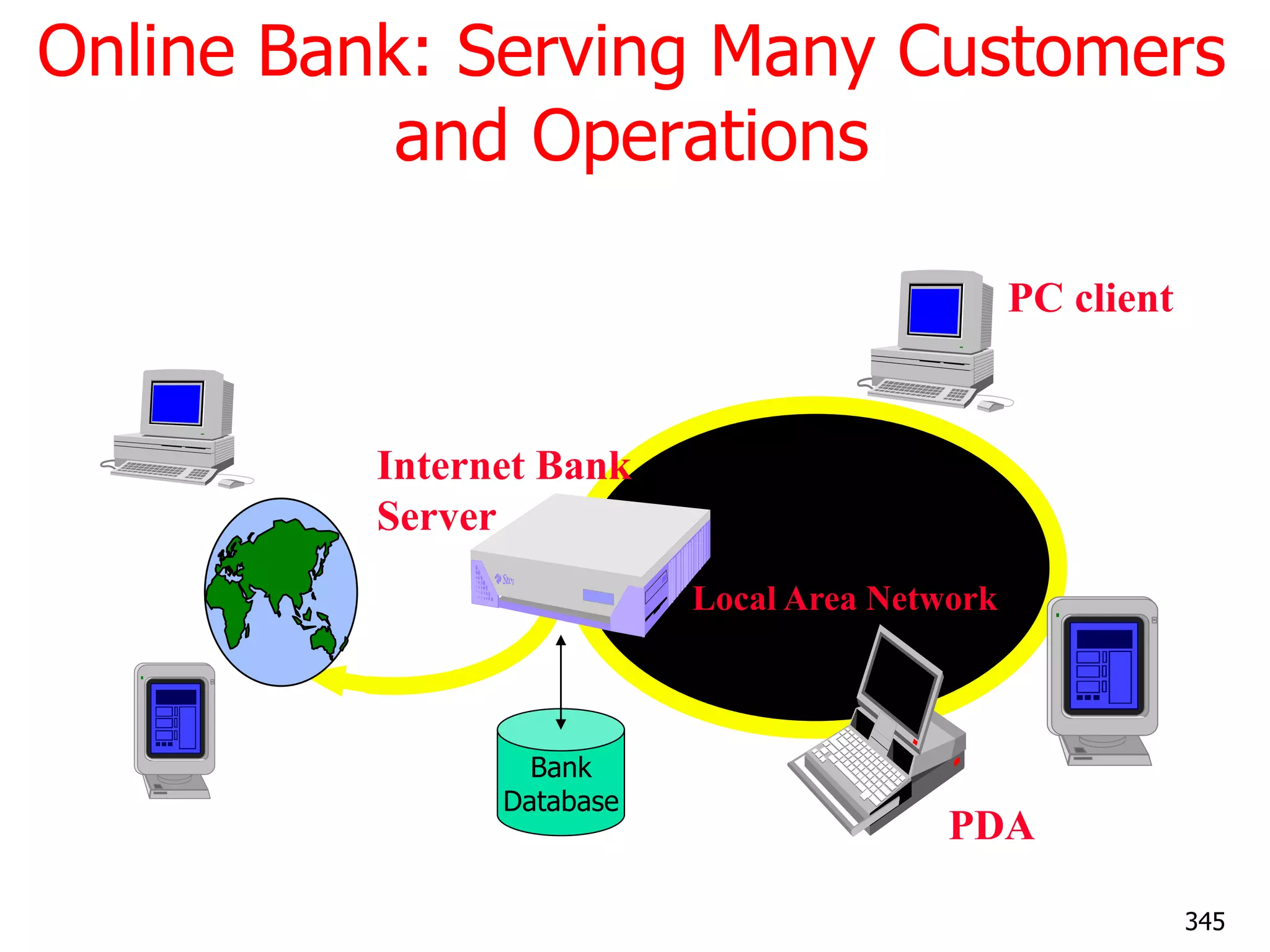
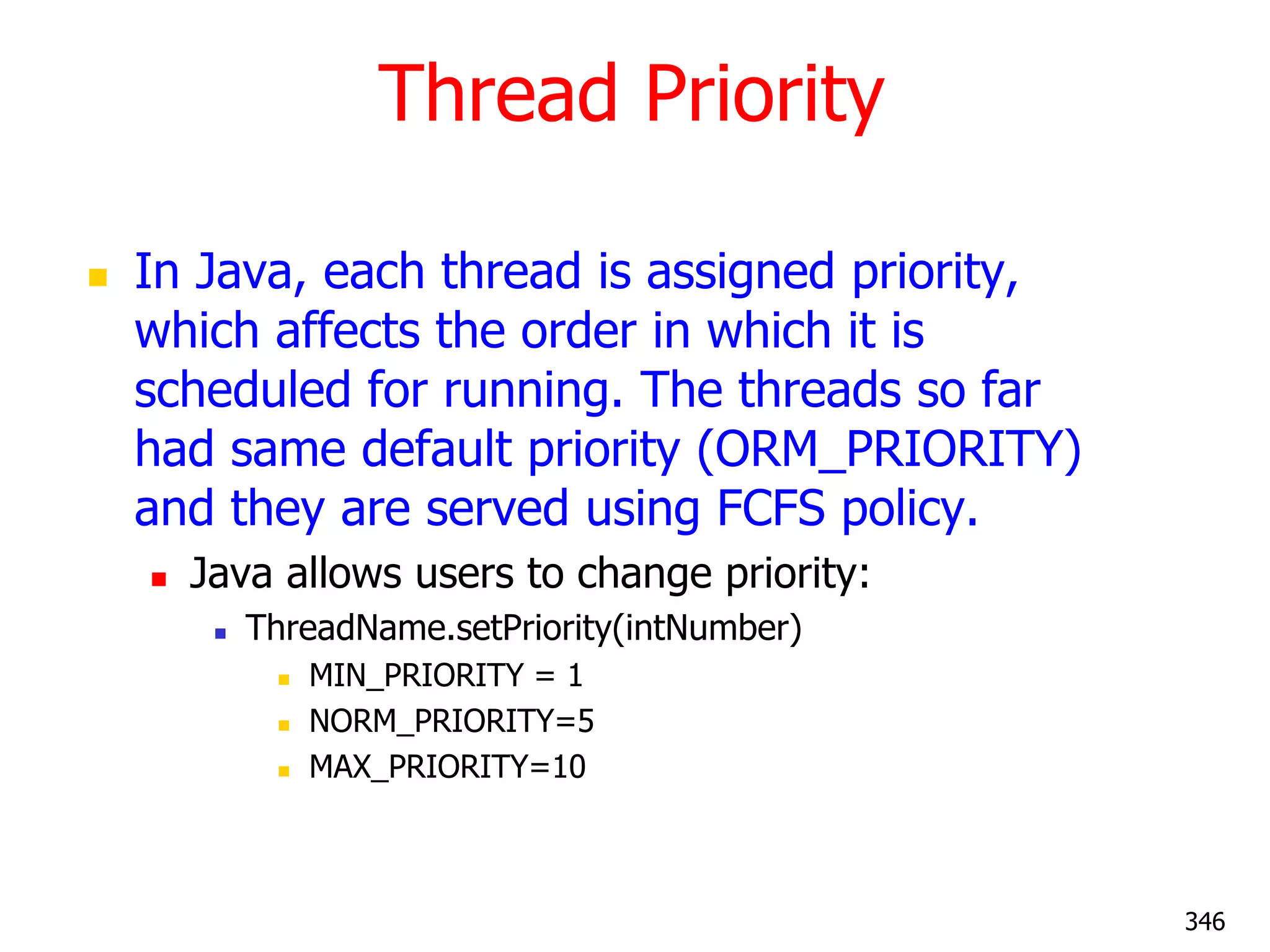
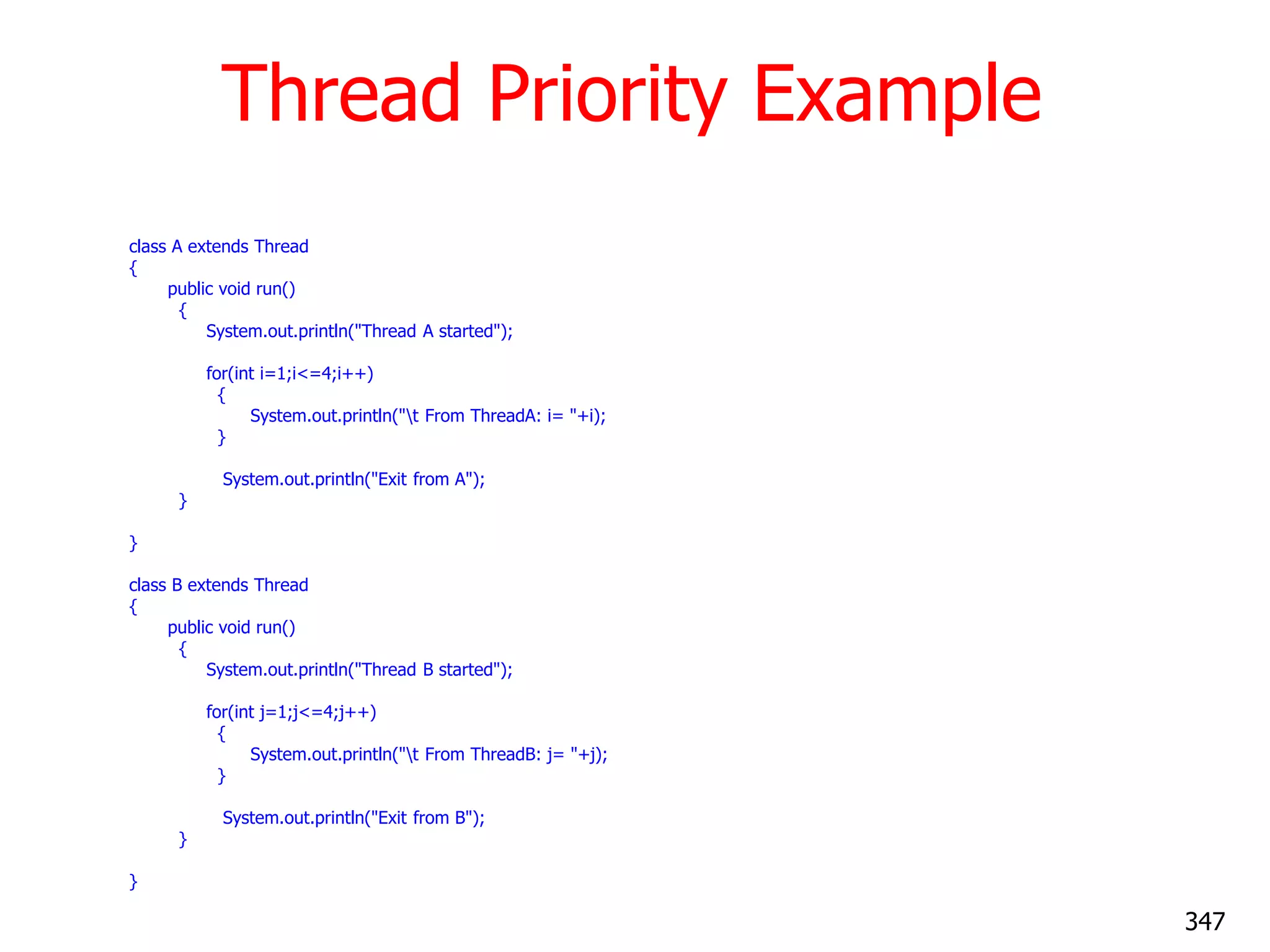
![Thread Priority Example class C extends Thread { public void run() { System.out.println("Thread C started"); for(int k=1;k<=4;k++) { System.out.println("t From ThreadC: k= "+k); } System.out.println("Exit from C"); } } class ThreadPriority { public static void main(String args[]) { A threadA=new A(); B threadB=new B(); C threadC=new C(); threadC.setPriority(Thread.MAX_PRIORITY); threadB.setPriority(threadA.getPriority()+1); threadA.setPriority(Thread.MIN_PRIORITY); System.out.println("Started Thread A"); threadA.start(); System.out.println("Started Thread B"); threadB.start(); System.out.println("Started Thread C"); threadC.start(); System.out.println("End of main thread"); } } 348](https://image.slidesharecdn.com/corejavacompletenotes-121028072655-phpapp01/75/Core-java-complete-notes-Contact-at-91-814-614-5674-348-2048.jpg)